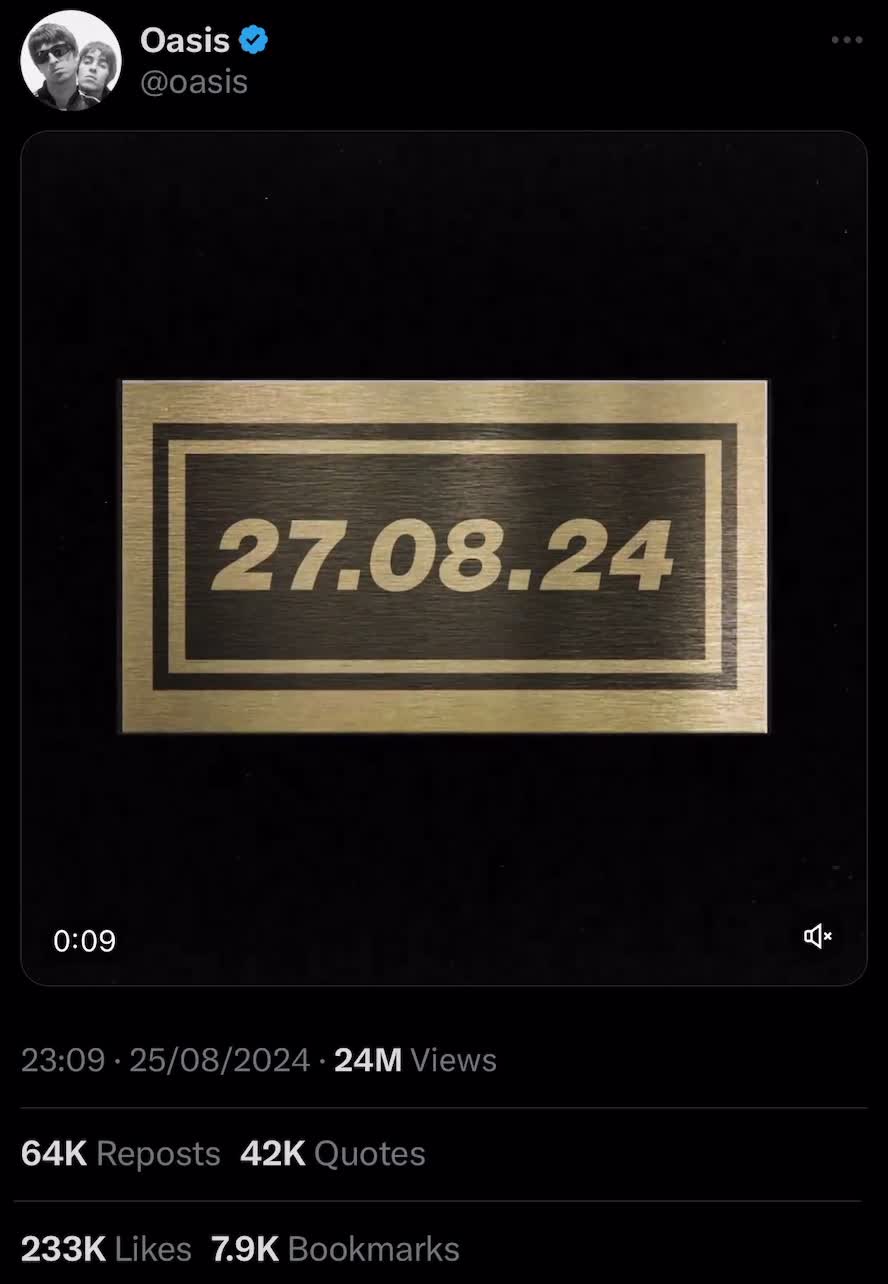A Tale of British Guitar Music
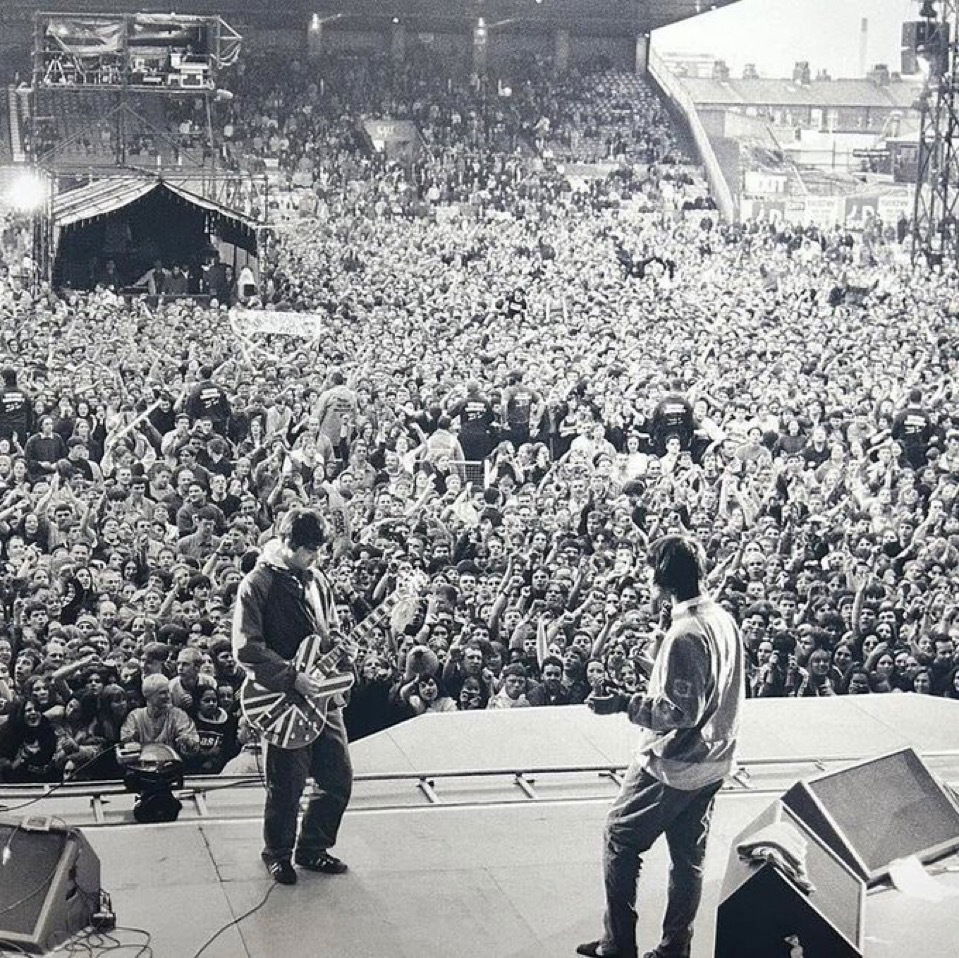
British music has undergone many iterations over the years. The charts today are vastly different from what they were 50 years ago. Or even just five years ago. Music is always evolving, even within genres that may seem consistent at first glance.
Like many others, my record collection and musical tastes span decades, starting in the 1960s and continuing to the present day. In this post, I want to explore how 'British Guitar Music' has transformed and evolved through the decades. From The Beatles conquering the world to punk challenging the establishment, from The Stone Roses uniting the clans to Britpop reshaping Britain, there's so much to uncover.
It's All Too Much! The Swinging 60s
I’m not naive; I know music existed long before the 1960s. However, I see this decade as a natural starting point. Culturally and musically, the 60s were pivotal. The war was over, young people had more freedom, and the world seemed to burst into technicolor. It was a time when art, culture, and society began to intertwine in ways that reshaped the modern world. Music, in particular, became a dominant force in expressing the aspirations, frustrations, and dreams of a generation.
In the 1950s, rationing was still widespread, and many people were still grappling with the physical and emotional scars of World War Two. By the 60s, however, a sense of optimism had emerged. Conscription had ended, attitudes were shifting, and the mood was one of looking forward. This newfound optimism fueled creativity, leading to an explosion of artistic expression in music, fashion, and art.
The previous generations had endured great hardships, but they seemed determined to create a brighter future for the youth of the time. Fashion began to change dramatically, with young people leading the charge and rejecting traditional norms. Women, for instance, started to adopt more liberated styles, and the iconic mini skirt was born. Swinging London became the epicenter of this cultural shift.
The 60s were not just about rebellion but also about innovation. Music reflected this sense of possibility, breaking free from the confines of the past. Rock and roll morphed into something deeper and more experimental, folk music became a voice for social change, and genres like soul and Motown gave rise to anthems of empowerment and joy. The decade wasn’t merely a starting point for modern music, it was the birth of the modern world.
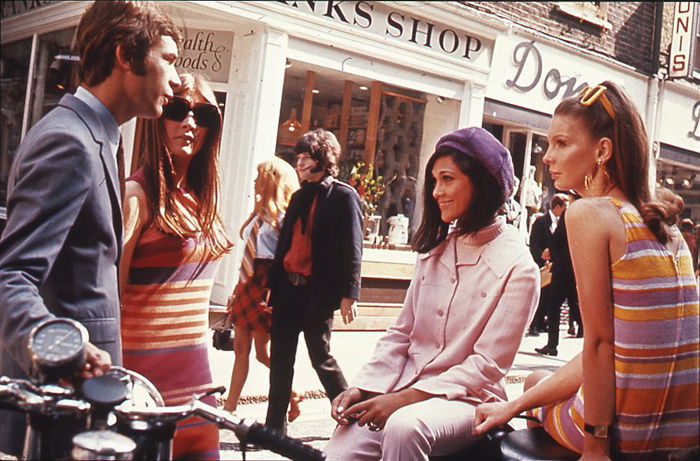
Subcultures began to emerge in the 60s, shaping youth identity and cultural expression in profound ways. Mods and Rockers formed distinct groups, defined by their fashion, the motorcycles they rode, and, of course, the music they listened to. Mods gravitated towards sharp suits, scooters, and the sounds of soul, jazz, and British beat bands like The Who and The Small Faces, while Rockers embraced leather jackets, motorcycles, and the raw energy of rock 'n' roll pioneers like Elvis Presley.
These subcultures often clashed, most famously in seaside towns like Brighton and Margate, where their rivalries culminated in publicized skirmishes. Despite their differences, both groups left an indelible mark on British culture, influencing fashion, music, and attitudes, and paving the way for future youth movements such as punk, skinheads, and New Romantics in the decades to come.
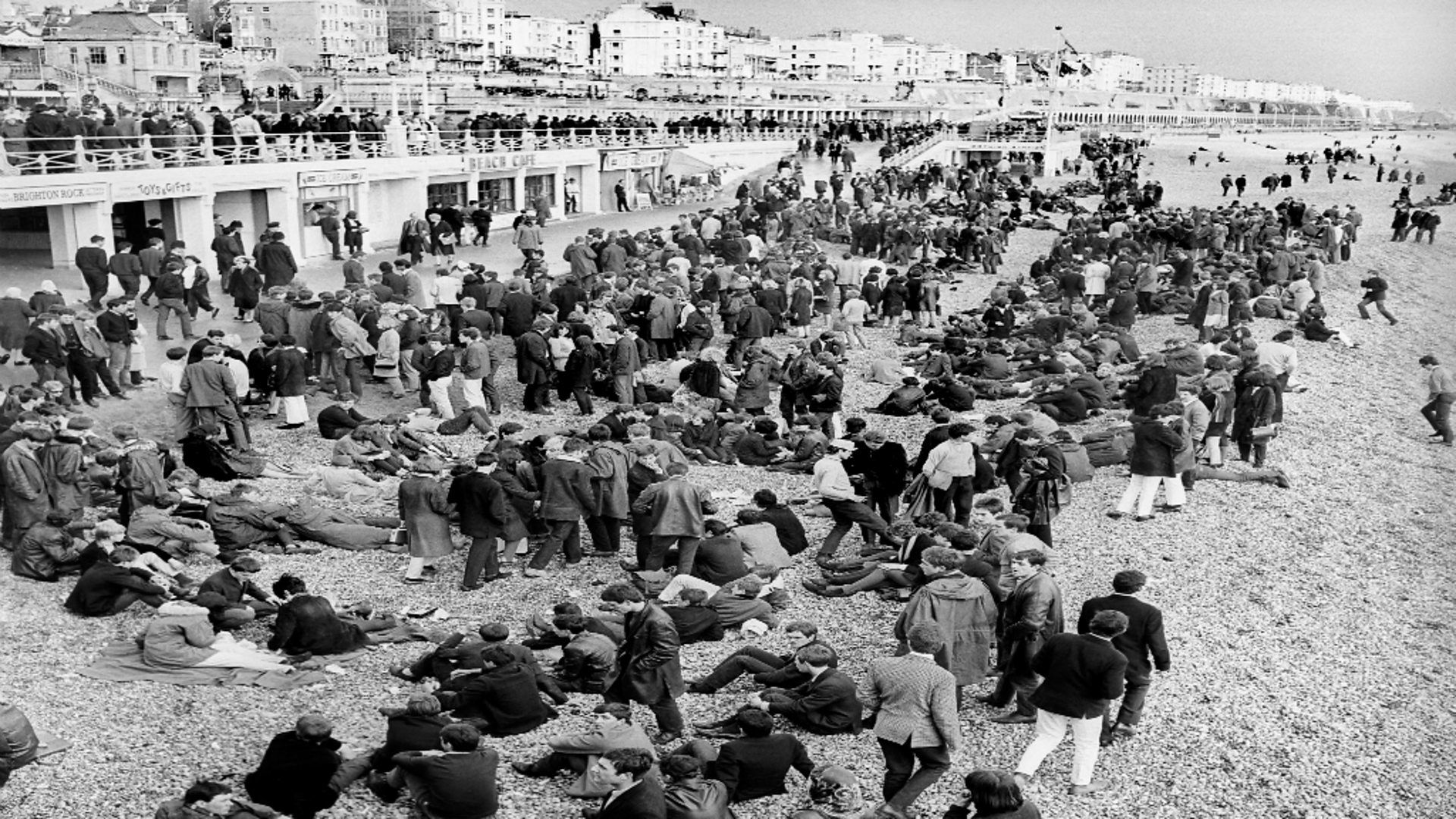
The 1960s marked a turning point in music, birthing some of the most influential artists of all time on both sides of the Atlantic. In the UK, legends like The Beatles, The Rolling Stones, The Who, Cream, Led Zeppelin, and Black Sabbath emerged. Meanwhile, America gave us icons such as Simon & Garfunkel, Jimi Hendrix, The Mamas & The Papas, Jefferson Airplane, Bob Dylan, and The Beach Boys. Just to name a few.
Music became a cultural phenomenon. It was no longer just something played on jukeboxes; concerts grew in scale, record sales soared, and musicians were elevated to an almost godlike status.
Beatlemania was a defining feature of the 1960s: four lads from Liverpool. John Lennon, Paul McCartney, George Harrison, and Ringo Starr took the world by storm. Their fanbase adored and worshiped them, sparking a global movement that transcended music to become a cultural phenomenon. When they appeared on 'The Ed Sullivan Show' in 1964, an astonishing 73 million people tuned in. A record-breaking moment that not only cemented their status as cultural icons but also underscored the power of television in uniting audiences around the world. This event heralded the British Invasion in America, where British bands dominated the charts, and it marked the birth of modern celebrity culture, creating a blueprint for global stardom.
The Beatles’ songs from this era are a testament to their unparalleled ability to craft timeless music. Early hits like "Love Me Do" and "Please Please Me" captured their youthful exuberance and charm, setting the stage for a pop revolution. With "She Loves You" and "I Want to Hold Your Hand," they perfected the art of infectious melodies, delivering anthems that resonated with a generation hungry for optimism and joy in the wake of post-war austerity. Their knack for innovative songcraft became evident as their songwriting matured, with tracks like "A Hard Day's Night" showcasing sophisticated chord progressions and groundbreaking use of jangly guitar riffs.
As the decade progressed, songs like "Ticket to Ride" and "Help!" began to reflect a deeper emotional complexity, signaling their transition from cheerful love songs to more introspective themes. The Beatles weren’t just writing catchy pop they were pushing the boundaries of what popular music could be. Their ability to combine innovation with accessibility ensured their dominance, not only on the charts but in shaping the very fabric of 1960s culture. Beatlemania wasn’t just about screaming fans; it was about the rise of a band that changed everything, leaving an indelible mark on music, fashion, and the global zeitgeist.
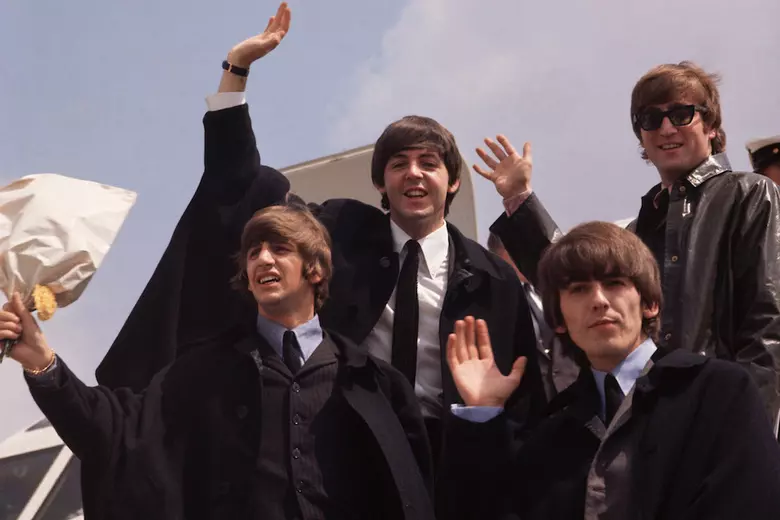
By the mid-60s, their creativity truly flourished. Songs like "Yesterday," with its hauntingly simple arrangement, and "Norwegian Wood," which introduced Western audiences to the sitar, hinted at their growing experimentation. "Help!" and "We Can Work It Out" combined introspective lyrics with irresistible hooks, while "Drive My Car" and "Nowhere Man" reflected a shift toward more narrative-driven and socially conscious themes.
With these songs the bands would tour the world. The hysteria surrounding the band was unprecedented; fans camped outside hotels, mobbed airports, and screamed so loudly at concerts that the band struggled to hear themselves on stage.
However, The Beatles were more than just screaming fans and mass hysteria. By 1965, exhausted by the chaos of touring and unable to hear themselves play over the deafening crowds, they made the bold decision to abandon live performances. This shift allowed them to channel their creativity into the studio, where they revolutionized music production. They blended rock with elements of classical, Indian, and experimental music. The Beatles were no longer just a pop sensation they became musical pioneers who reshaped the landscape of modern music.
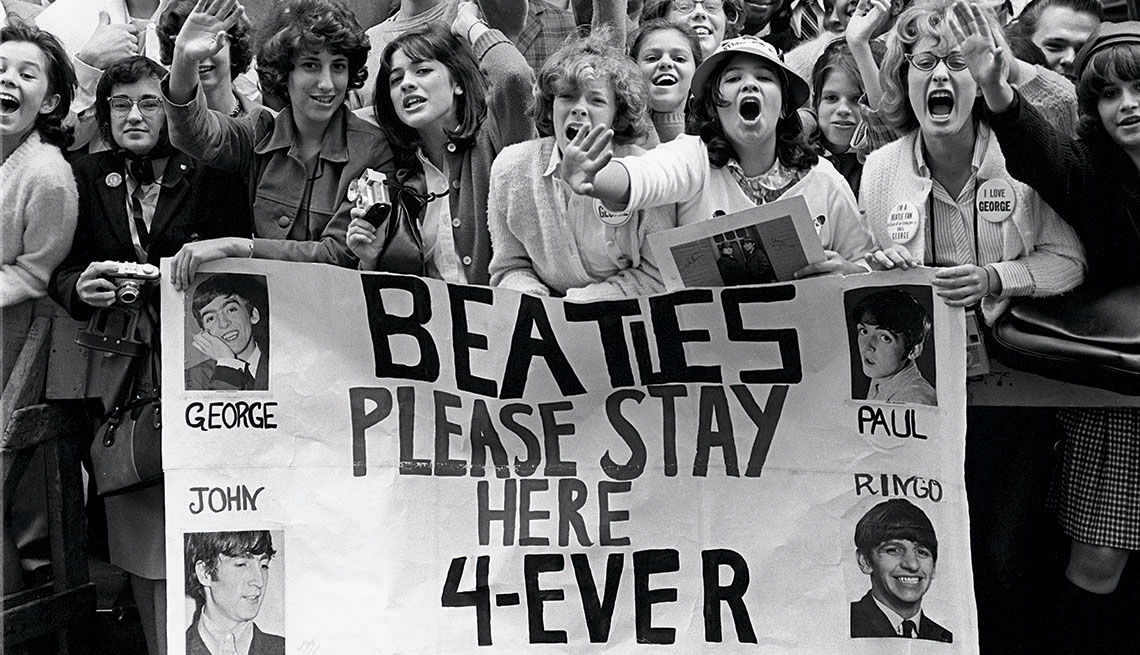
Albums like "Revolver" and "Sgt. Pepper’s Lonely Hearts Club" Band each hold a unique place in the evolution of modern music. Revolver is often celebrated for its bold sonic experimentation, with tracks like "Tomorrow Never Knows" showcasing pioneering tape-loop techniques and innovative production that blended Eastern influences with psychedelic rock. Providing a blue print for so much music that would follow.
On the other hand, "Sgt. Pepper’s" took this experimentation to a grander scale, introducing orchestral arrangements, intricate studio effects, and a thematic unity that transcended the typical album format. Songs like "Lucy in the Sky with Diamonds" and "A Day in the Life" pushed the boundaries of song writing and production, cementing the album as a cultural touchstone. Together, these records not only redefined what an album could be but also demonstrated the limitless possibilities of artistic collaboration in the studio.

The impact of The Beatles cannot be understated. They really did change the world. From reshaping pop music to inspiring social and cultural movements, their influence extends far beyond the music industry. They left behind some of the best songs ever written, with timeless tracks that continue to resonate across generations. Whether through the introspective beauty of "Eleanor Rigby," the ground-breaking sounds of "Strawberry Fields Forever," or the universal appeal of "Hey Jude," The Beatles created a legacy of music that remains unmatched in its scope and significance.
Their output and legacy is probably unrivalled even today.
The 1960s weren’t just about The Beatles; countless other bands and artists played pivotal roles in shaping the music and culture of the decade. The Rolling Stones stood as one of the era’s defining forces, embodying the raw energy and rebellious spirit of the time. Like The Beatles, they were innovators, creating music that not only defined the decade but transcended it. Songs such as "You Can’t Always Get What You Want", "Gimme Shelter", and "Street Fighting Man" are timeless contributions that remain as impactful today as they were during the height of the 60s.
The band’s sound continually evolved throughout the decade. From their beginnings as a blues cover band, drawing heavily on American artists like Muddy Waters and Howlin’ Wolf, they transformed into cultural provocateurs and rock icons. Albums like "Beggars Banquet" (1968) and "Let It Bleed" (1969) showcased their ability to blend blues, rock, and folk influences into something entirely their own
Their music often mirrored the social and political upheavals of the era, addressing themes of disillusionment, rebellion, and protest. "Street Fighting Man" became an anthem for the countercultural movement, capturing the spirit of resistance and the desire for change. Meanwhile, "Gimme Shelter" reflected the darkness and uncertainty of a turbulent world, with its haunting melodies and urgent, apocalyptic tone. These songs were more than just hits; they were cultural milestones that resonated deeply with a generation seeking expression in a time of transformation.
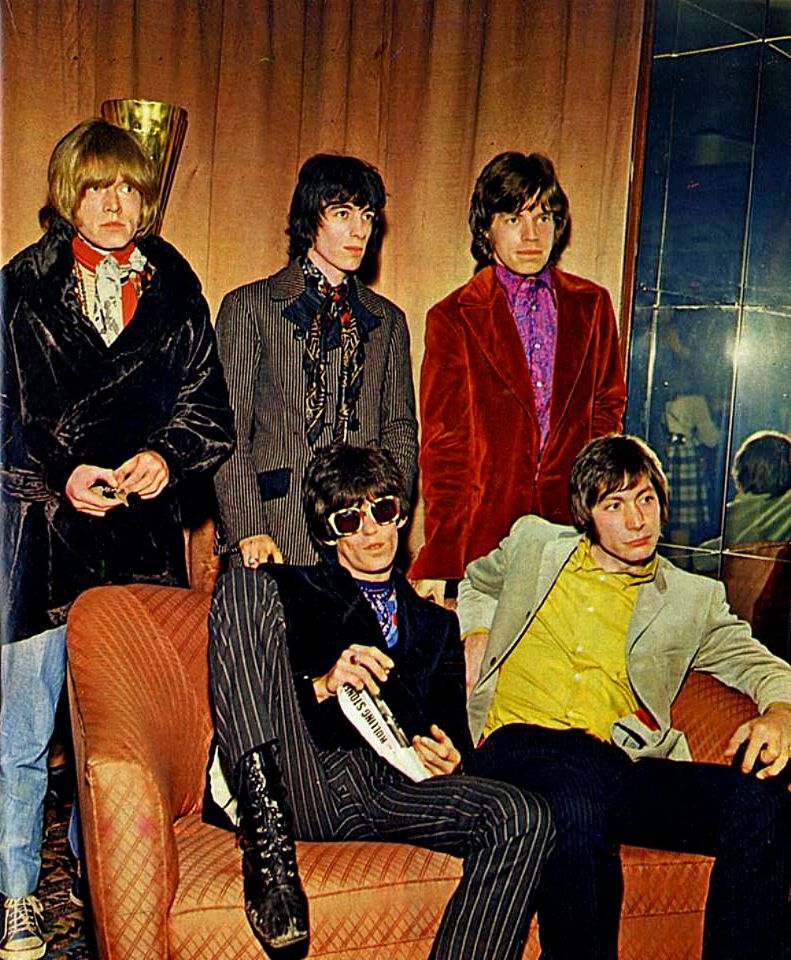
By the end of the decade, The Rolling Stones had firmly established themselves as one of the most significant and enduring bands in rock history. Their bold lyrics, edgy sound, and experimental approach to music pushed the boundaries of the genre, setting new standards for what rock could achieve. More than that, their ability to channel the zeitgeist of the 1960s its upheavals, desires, and contradictions ensured their lasting influence. With their uncompromising attitude and unrelenting creativity, The Rolling Stones didn’t just contribute to the soundtrack of the decade; they helped shape its spirit and legacy
The Rolling Stones would continue long past the 1960s though, with the band still recording and touring today.
Another band emerged from London in the swinging sixties: The Who, a powerhouse quartet that carved out their own space as one of the loudest, most dynamic, and most innovative bands of the decade. Known for their high-energy performances and instrument-smashing antics, The Who epitomized the rebellious spirit of the 1960s. Their live shows were legendary, with Pete Townshend’s windmill guitar moves, Keith Moon’s frenzied drumming, and Roger Daltrey’s mic-swinging bravado creating a visceral, unforgettable experience. John Entwistle’s virtuoso bass playing provided the foundation for their explosive sound, earning him the nickname "The Ox."
Their early singles, such as "I Can’t Explain" and "My Generation", captured the angst and defiance of youth like no other. "My Generation", with its iconic stuttered vocals and rebellious rallying cry of "hope I die before I get old," became an anthem for the 1960s counterculture. These songs weren’t just hits; they were statements, channeling the frustrations and aspirations of a generation eager to break free from societal norms.
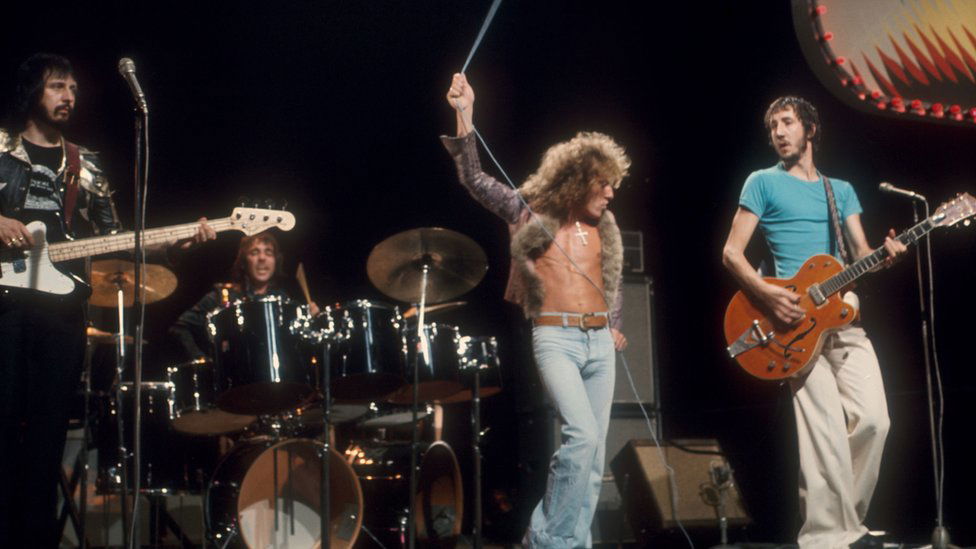
The Who’s innovation didn’t stop with their singles. They helped pioneer the concept of the rock opera, elevating the genre to new artistic heights. Their 1969 album Tommy was a groundbreaking work that combined narrative and music to tell the story of a "deaf, dumb, and blind" boy who becomes a pinball prodigy and spiritual leader. Songs like "Pinball Wizard" and "See Me, Feel Me" showcased their ability to blend rock with theatrical storytelling, pushing boundaries and proving that rock music could be as ambitious and complex as any other art form. Tommy was not only a commercial success but also a cultural milestone, cementing The Who’s status as trailblazers in the rock world.
By the end of the decade, The Who had solidified their place as one of the most important bands of their time. They didn’t just reflect the chaos and excitement of the 60s; they amplified it, delivering a sound and spirit that was unapologetically loud, defiant, and forward-thinking. Their contributions to music, both in terms of sheer energy and groundbreaking innovation, left an indelible mark on the decade and paved the way for the explosive evolution of rock in the years to come.
The 1960s were a decade when young people began to find their voice, addressing societal issues and challenging the status quo. Movements like the Civil Rights Movement in America and the anti-war protests against the Vietnam War saw young people standing up for what they believed in. Artists and bands such as The Rolling Stones and Bob Dylan provided the soundtrack for this wave of revolution.
As Dylan famously sang, 'The Times They Are A-Changin’ and they truly were.
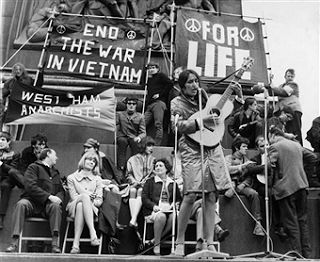
It would be impossible to talk about the 60s without addressing the role of drugs. Recreational substances like marijuana and LSD became widely used by both the public and musicians. Let’s be honest, Sgt. Pepper’s wasn’t exactly written over cups of tea, was it?
One of the most defining moments of the 1960s counterculture era was the Woodstock Festival in 1969, a gathering that cemented itself as a cultural touchstone. Featuring some of the biggest acts of the time, including The Who and Jefferson Airplane, it drew a staggering audience of over 400,000 people. Amidst the chaos of a festival that ran drastically behind schedule, Jimi Hendrix took the stage under extraordinary circumstances.
Hendrix's performance didn’t begin until early Monday morning, long after most of the crowd had departed. Only around 30,000 devoted fans remained to witness what would become one of the most iconic performances in rock history. Hendrix delivered a searing and transformative rendition of "The Star-Spangled Banner," a moment that captured the rebellious spirit of the era.
Through his guitar, Hendrix conveyed both a fierce critique of the Vietnam War and a profound, complex love for America. It was an electrifying and symbolic moment, showcasing the tension, hope, and resilience of a generation seeking change.
The iconic images from that festival illustrate the extent to which drug culture had permeated the era. It was a time of experimentation, and young people, especially British musicians. Were eager to embrace it
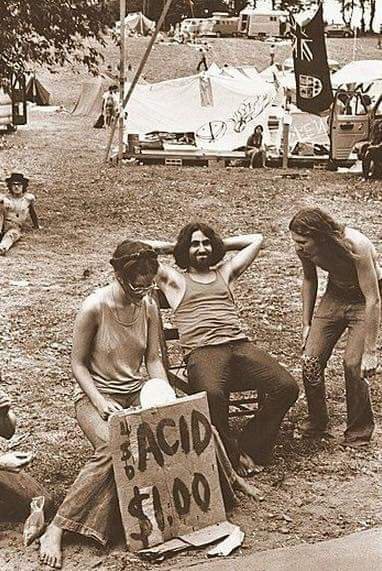
However, one British band stood apart from the likes of The Beatles and The Rolling Stones. They weren’t interested in LSD, nor did they share the rock-heavy attitude of The Who or Led Zeppelin. What they did have was an arsenal of incredible songs and their substance of choice? Well, strawberry jam, of course.
The Kinks were one of the most important bands of the era, embracing their Britishness in a way that set them apart and inspiring many others to do the same (keep reading, and you’ll see what I mean). Their album 'The Village Green Preservation Society' is a timeless classic, vastly different from most of the albums being released at the time. While it was initially overlooked, time has been kind to The Kinks. Their influence echoes throughout decades of British music.
Emerging from the British Invasion, their early hits, "You Really Got Me" and "All Day and All of the Night," are often regarded as proto-punk for their heavy riffs and primal energy, inspiring generations of rock and punk bands.
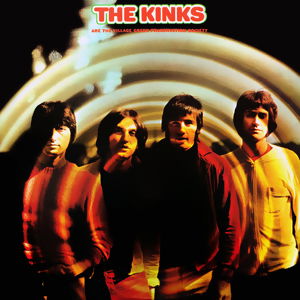
By the mid-60s, The Kinks evolved beyond their raucous beginnings, with Ray Davies, the band’s chief songwriter, exploring more sophisticated themes. Songs like "A Well Respected Man" and "Dedicated Follower of Fashion" offered biting satire of British society, while "Sunny Afternoon" and "Waterloo Sunset" showcased a more introspective and melodic side. The latter, often considered one of the greatest songs of all time, is a delicate, wistful tale of urban life in London.
Their album The Kinks Are the Village Green Preservation Society (1968) remains a cult classic, a concept album steeped in nostalgia for a fading England. It’s an intricate exploration of identity, tradition, and change, cementing the band as innovators in the concept album format.
It wasn't all psychedelic masterpieces, mass gatherings of the people and protests though. Two British bands were about to change music forever.
Black Sabbath, formed in 1968 in Birmingham by Tony Iommi, Ozzy Osbourne, Geezer Butler and Bill Ward, the band pioneered the heavy metal sound in the late 1960s and into the 1970s. Often widely regarded the progenitor of heavy metal. Their use of down tuned guitars, dark lyrical themes, and Tony Iommi's signature riffing style laid the groundwork for the genre.
Led Zeppelin. Formed in 1968 in London, England, by Jimmy Page , Robert Plant, John Paul Jones , and John Bonham. They combined combined blues, hard rock, folk, and even eastern influences to create a sound that was both powerful and dynamic. Using each of the bands individual skills especially Bonhams' drumming and Page' guitar playing to create textures and sounds we had never heard before. The band would really hit their peak in the following decade. However, Led Zeppelins groundwork began in the late 60s.
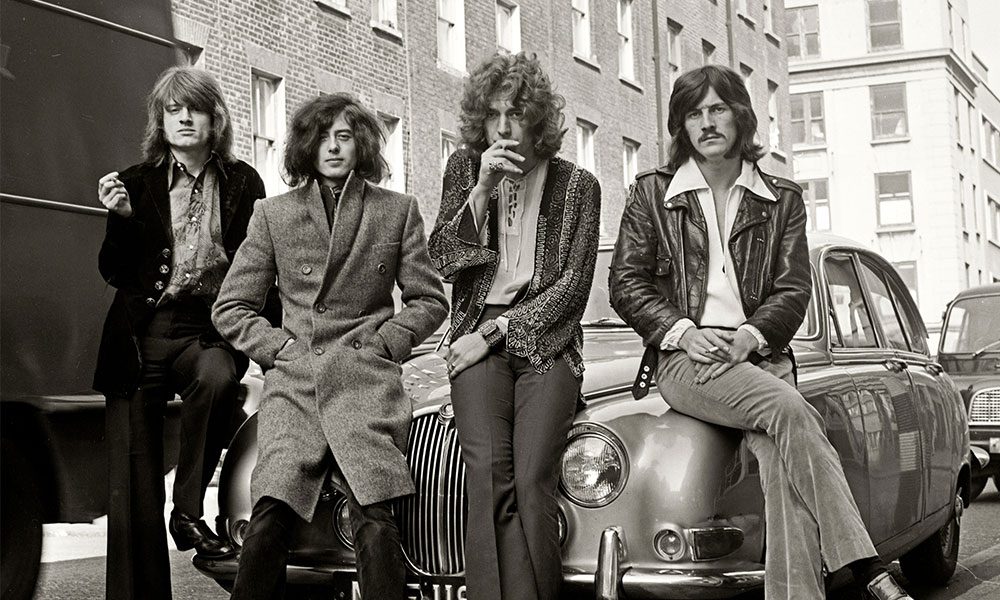
Across the pond America would give us. Simon & Garfunkel, The Supremes, The Velvet Underground, Jefferson Aeroplane, and The Beach Boys.
Simon & Garfunkel were the voice of introspection in the 1960s, crafting songs that balanced folk simplicity with lyrical depth. Their music, led by the haunting harmonies of Paul Simon and Art Garfunkel, often reflected the uncertainties and introspections of a rapidly changing world. Hits like "The Sound of Silence," "Mrs. Robinson," and "Bridge Over Troubled Water" showcased their ability to write poignant, timeless songs that still resonate. Their partnership brought together Simon's lyrical sophistication and Garfunkel's angelic vocals, culminating in albums like Bookends and Bridge Over Troubled Water, which became touchstones of folk-rock.
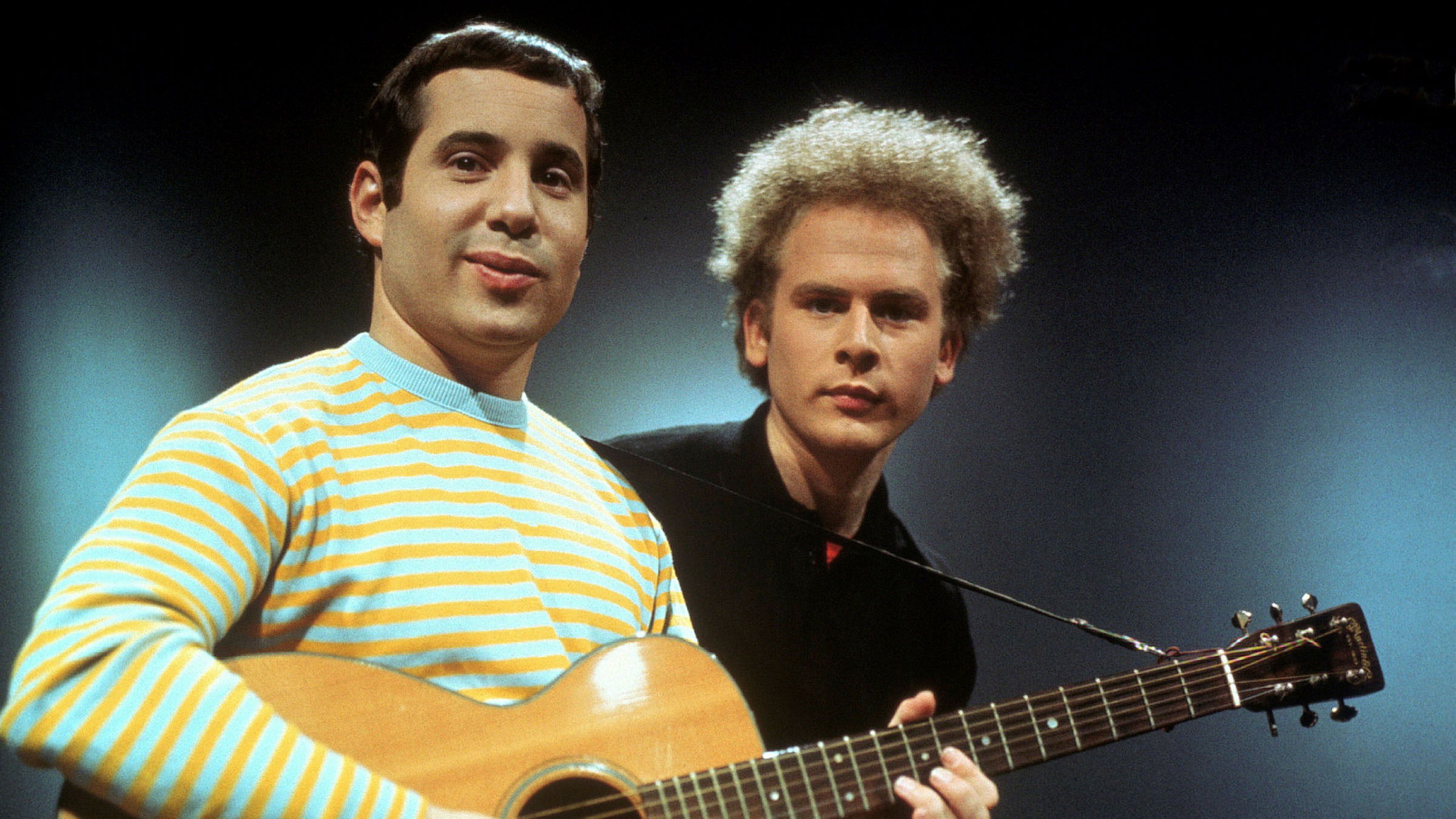
The Supremes were Motown's crown jewel, blending soulful vocals with impeccable pop melodies. Diana Ross, Mary Wilson, and Florence Ballard dominated the charts with hits like "Where Did Our Love Go," "Baby Love," and "Stop! In the Name of Love." They were one of the first African-American acts to achieve mainstream success, breaking barriers in a racially divided America. With their glamorous image and polished performances, The Supremes defined Motown's crossover appeal, influencing generations of female vocal groups and paving the way for broader acceptance of Black artists in mainstream pop.
The Velvet Underground was the antithesis of mainstream 60s music, creating art-rock that explored darker, avant-garde themes. Fronted by Lou Reed and produced by Andy Warhol, their debut album, "The Velvet Underground & Nico", was groundbreaking, tackling taboo subjects like drug use, sexuality, and alienation. Songs like "Heroin" and "Venus in Furs" were raw and experimental, challenging the conventions of rock music.
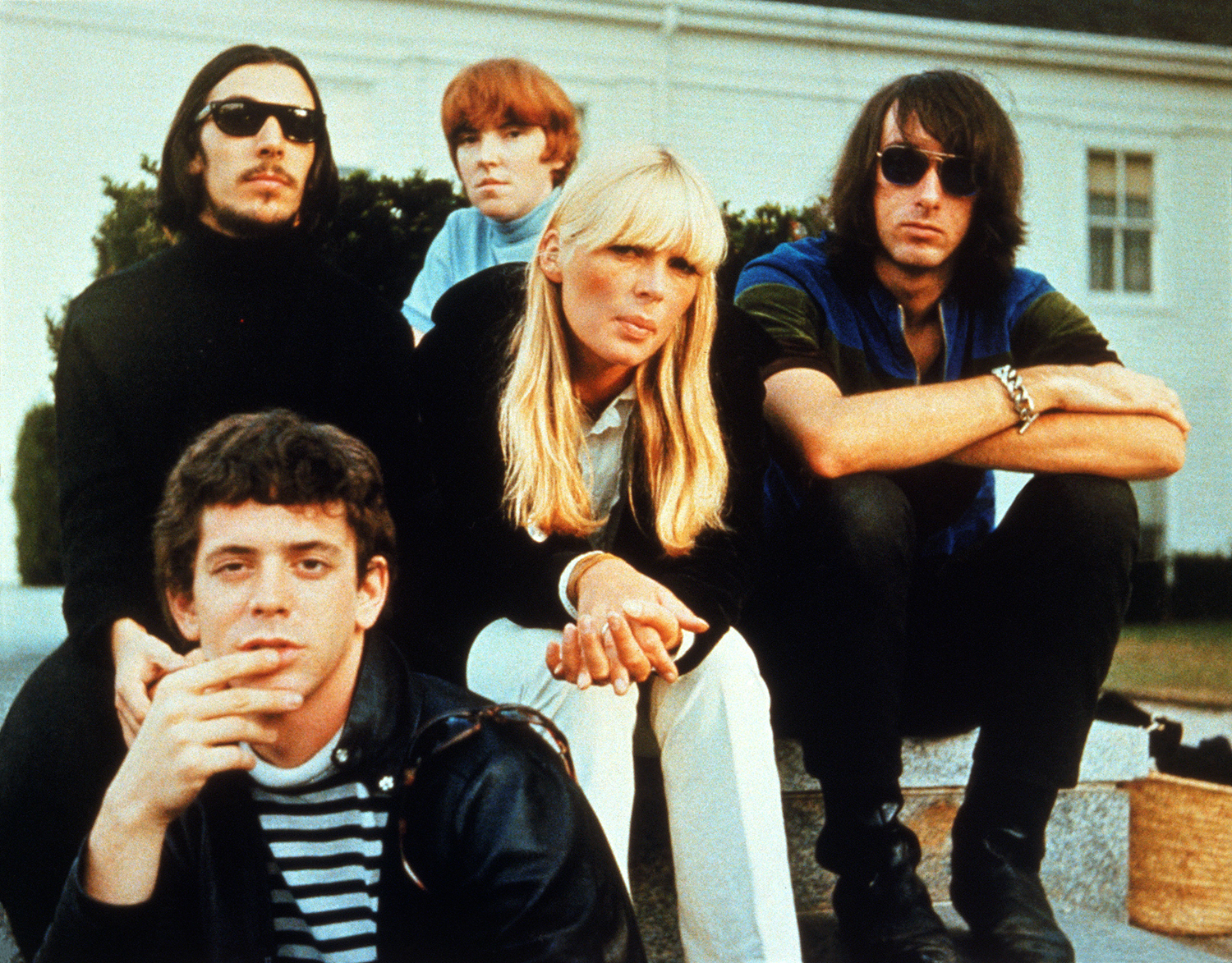
Jefferson Airplane were pioneers of the psychedelic rock movement, providing the soundtrack to the counterculture revolution. Their hits, like "White Rabbit" and "Somebody to Love," captured the spirit of the Summer of Love, blending surreal lyricism with electrifying performances. Grace Slick’s powerful vocals and the band’s embrace of experimentation made them central to the San Francisco music scene. Their album Surrealistic Pillow (1967) became a defining work of the era, with its blend of folk-rock roots and mind-expanding soundscapes. Jefferson Airplane also became synonymous with the major music festivals of the 60s, including Woodstock and Monterey Pop.
The Beach Boys captured the essence of 60s California, with songs about surfing, cars, and youthful idealism. Led by Brian Wilson, their music evolved from fun pop hits like "Surfin’ USA" and "I Get Around" to the groundbreaking sophistication of Pet Sounds (1966). With lush harmonies and innovative production techniques, songs like "God Only Knows" and "Wouldn’t It Be Nice" elevated pop music into an art form. The single "Good Vibrations" was a sonic masterpiece, showcasing Wilson's genius. The Beach Boys were both a reflection of the carefree 60s and pioneers of the studio-as-instrument approach, influencing everyone from The Beatles to modern indie bands.
It wasn't just groups that had a massive impact on this decade. Bob Dylan and Neil Young were two of the 1960s most famous sons. Dylan in particular would be part of one of the most important musical moments of the 20th Century.
The 1960s saw Bob Dylan rise as a transformative figure in music, blending poetic lyricism with the folk tradition to become the voice of a generation. Emerging from the Greenwich Village folk scene, Dylan quickly made his mark with albums like "The Freewheelin’ Bob Dylan" (1963), which featured the timeless protest anthem "Blowin’ in the Wind". His songs captured the essence of the civil rights and anti-war movements, addressing themes of justice, freedom, and societal change. Tracks like "The Times They Are a-Changin’" and "A Hard Rain’s a-Gonna Fall" became rallying cries for a generation seeking to redefine the world around them.
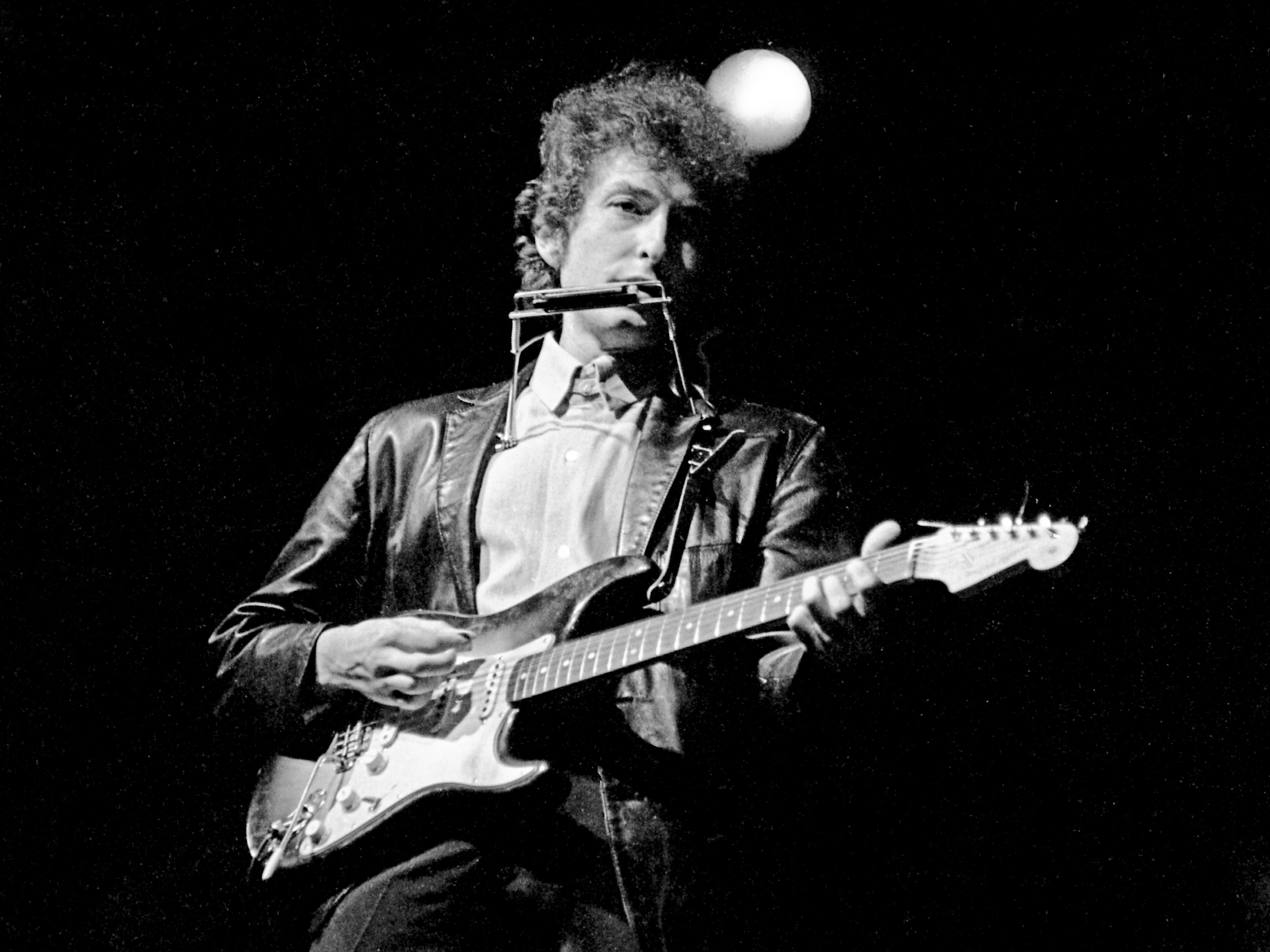
Dylan’s impact wasn’t limited to folk music. In 1965, he shocked audiences by going electric at the Newport Folk Festival, marking a bold shift in his sound. Albums like "Highway 61 Revisited" (1965) and "Blonde on Blonde" (1966) showcased his embrace of rock and roll, producing classics like "Like a Rolling Stone" and "Visions of Johanna". His ability to fuse biting social commentary with innovative musical arrangements made him not just a chronicler of the 60s but a revolutionary force shaping its soundscape.
Neil Young’s contributions to the 1960s were equally significant, though his journey began with the iconic folk-rock group Buffalo Springfield. Formed in Los Angeles, the band released three albums, with Young playing a key role in crafting their unique blend of folk, rock, and country influences. Tracks like "Expecting to Fly" and "Broken Arrow" showcased Young’s introspective and experimental songwriting, hinting at the deeply personal and innovative work that would come to define his solo career.
By the end of the decade, Young began to carve out his identity as a solo artist with his debut album
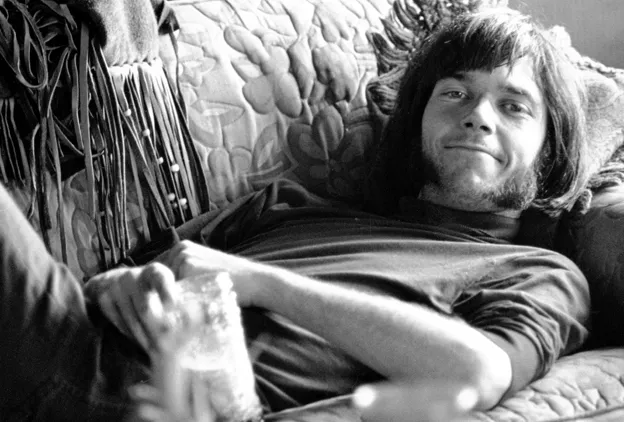
Neil Young (1968), which blended tender ballads with more adventurous sonic textures. His second release, "Everybody Knows This Is Nowhere" (1969), saw him team up with Crazy Horse, producing electrifying tracks like "Cinnamon Girl" and "Down by the River". These songs, marked by their raw, extended guitar jams and emotive lyricism, established Young as a force in the burgeoning rock scene and laid the groundwork for his storied career in the decades to come. Young would continue with Crazy Horse into the 1970s, and would release some of his best work including "After the Gold Rush", "Heart of Gold" and "On the Beach".
In summary, the 1960s were a decade of transformation. A time when the world was changing rapidly. It was a generation determined to break away from the past and forge a new future filled with hope. They left behind a wealth of incredible records and boldly turned away from the ways of old.
As The Who so aptly put it, 'The Kids Are Alright'.
We're So Pretty, Oh So Pretty- The 70s
If the 60s was a time of love and free spirits, the 70s... well, the 70s were something else entirely.
The 70s were a complex decade, there was a lot going on. Disco, reggae, punk, heavy metal, new wave, psychedelia... and let’s not forget, many of the iconic artists from the 60s never really went away.
One of the most significant events at the dawn of the 70s was the breakup of The Beatles. As the poster boys of the previous decade, their dissolution symbolized a shift in the cultural and musical landscape. Each member went on to pursue their own path, a microcosm of the 70s' diverse and fragmented music scene. McCartney formed Wings with his wife Linda, George explored various musical styles while continuing The Beatles’ experimental ethos with great success, and Lennon relocated to New York to pursue a solo career alongside Yoko Ono with, in my opinion, mixed results. And then there was Ringo. Ringo seemed to float between his former bandmates, lending a hand where needed. If there’s one thing to take from The Beatles’ story, it’s that everyone liked Ringo. After all, who doesn’t like Ringo?
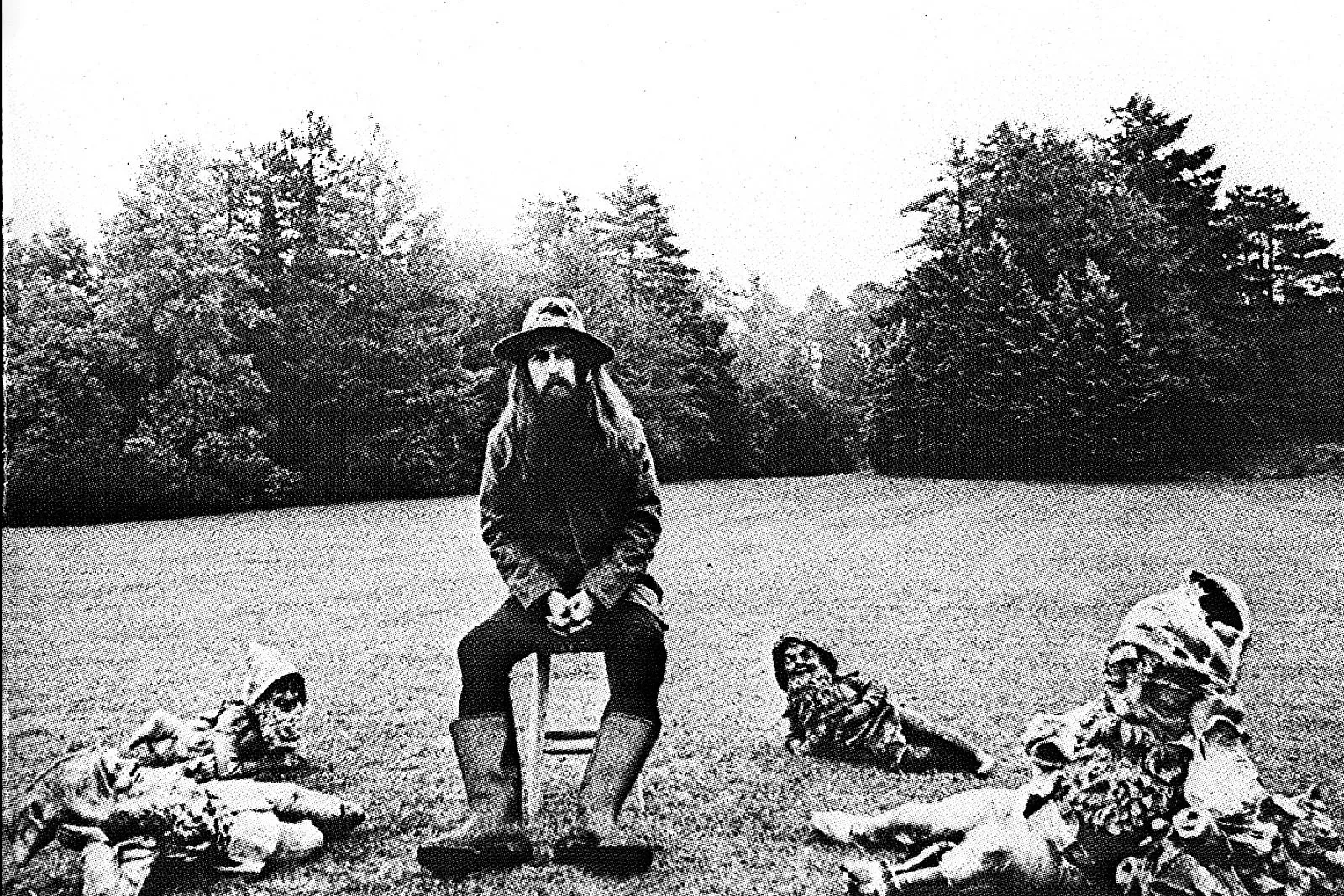
While British music in the 60s was dominated by bands, the 70s saw the rise of remarkable solo artists across genders. 'David Bowie', 'Elton John, and Kate Bush emerged as trailblazers, while American icons like 'Joni Mitchell', 'Billy Joel', and 'Patti Smith' also made their mark. The 70s proved that being in a band was no longer a prerequisite for success.
Bowie and Elton John, in particular, became household names during the 70s, crafting catalogs of brilliant songs that not only defined their era but also transcended it. Both artists borrowed the best elements of the 60s and expanded upon them, creating soundscapes that were innovative, provocative, and uniquely their own. They each wrote landmark concept albums that would forever shape the landscape of popular music. Bowie with "The Rise and Fall of Ziggy Stardust and the Spiders from Mars" and Elton John with "Goodbye Yellow Brick Road". Following in the footsteps of The Beatles, The Kinks, and The Rolling Stones, Bowie especially stood out for his ability to continually reinvent himself, keeping audiences captivated and ensuring his relevance in an ever-changing music industry.
Ziggy Stardust propelled Bowie to unimaginable heights. The album and its accompanying alter ego, Ziggy, became a cultural phenomenon, blending glam rock with sci-fi themes and tackling topics like fame, alienation, and the human condition. However, in a move that would shake the very foundations of his burgeoning career, Bowie abruptly retired the Ziggy character during a performance at London’s Hammersmith Apollo in 1973. The decision to kill off Ziggy Stardust stunned fans, many of whom thought it was career suicide. But Bowie had other plans. He quickly reinvented himself, morphing into the enigmatic and cold 'Thin White Duke', a persona that reflected a darker, more detached side of his musical and personal evolution.
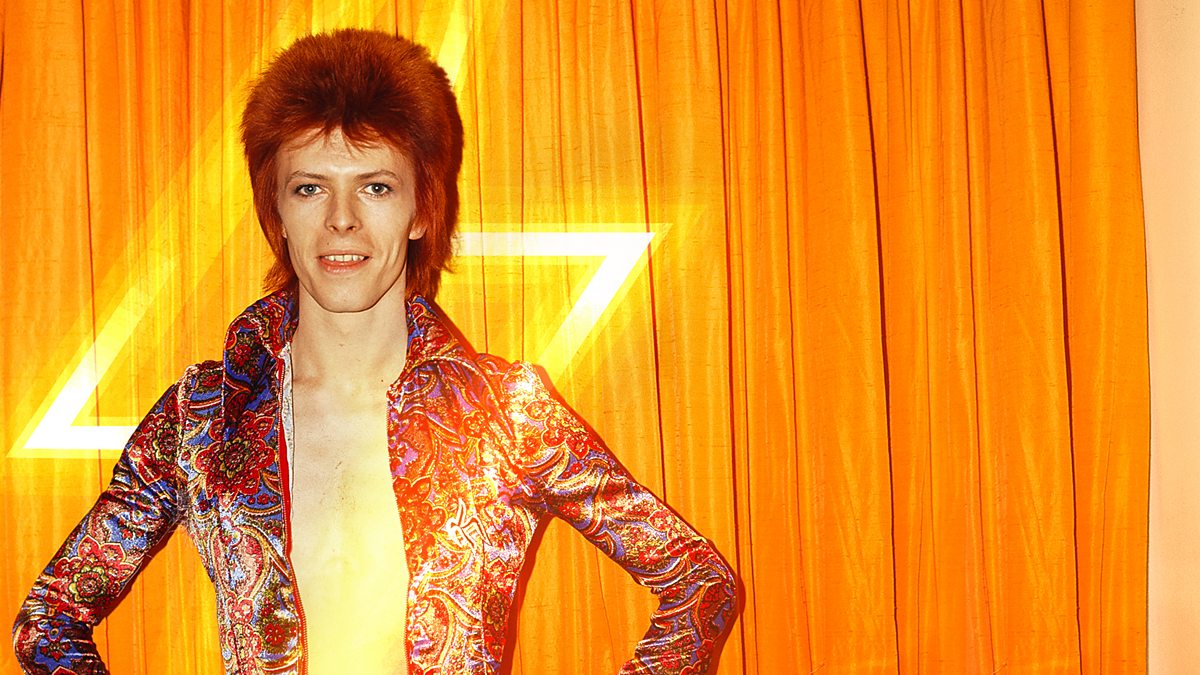
Rather than fade into obscurity, Bowie’s ability to reinvent himself again and again cemented his place in music history. He continued to release groundbreaking albums and songs that further solidified his legacy. "Heroes", Sound and Vision, "Fame", and "Life on Mars" became anthems for different generations, and through each reinvention, Bowie proved he was far more than a fleeting pop star. He was a musical chameleon, and his genius lay in his constant evolution. With each phase, he kept audiences on their toes, proving that he was not just a product of his time but a timeless icon, transcending eras and genres. His ability to not only survive but thrive in the face of constant change showcased his unparalleled artistry and foresight, and he would go on to remain one of the most influential and innovative figures in modern music.
Elton John, like Bowie, became one of the most defining figures in 70s music, and his success wasn’t just due to his musical talents but his flair for showmanship, flamboyance, and his ability to weave deeply personal and relatable themes into his work. His early 70s output, particularly with lyricist Bernie Taupin, helped shape the cultural fabric of the era. Albums like "Goodbye Yellow Brick Road" (1973) became timeless classics, with songs like "Bennie and the Jets," "Goodbye Yellow Brick Road," and "Candle in the Wind" instantly becoming anthems that have endured through the decades.
What set Elton John apart was his blend of eclectic styles. His music fused elements of rock, pop, and glam, but also drew on earlier influences like the soulful balladry of the 50s and the storytelling tradition of classic British pop. His piano playing, often virtuosic, was integral to his sound and became an unmistakable signature. The impact of his theatrical live shows, combined with his wild costumes, became a hallmark of the 70s glam rock movement, but unlike many of his contemporaries, Elton managed to maintain a sense of authenticity that drew people in.
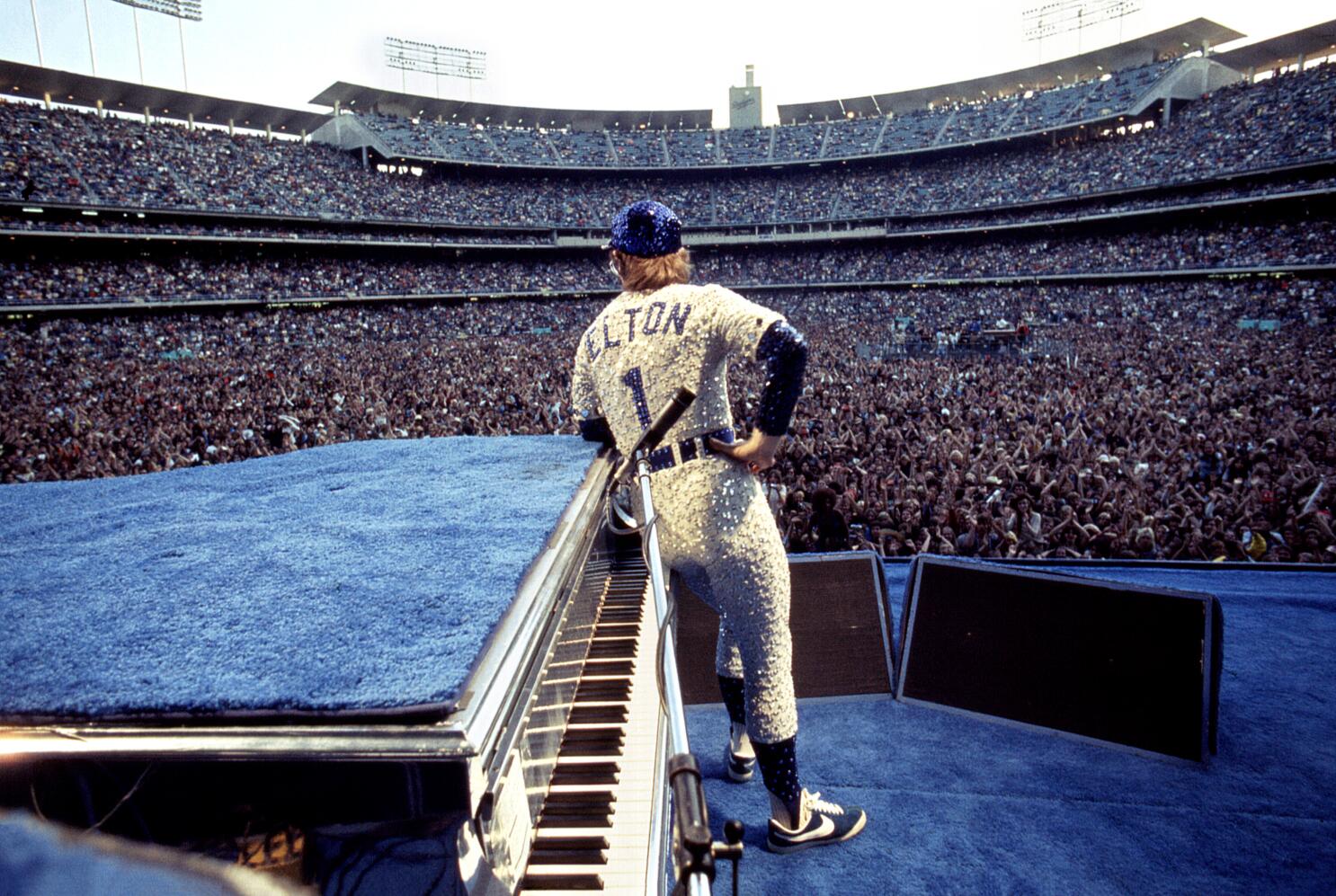
By the middle of the decade, Elton was already a massive star, and his live shows reflected the grandeur and flamboyance of his persona. One of the most iconic performances of his early career took place at Dodger Stadium in 1975, a concert that marked a major milestone in both his career and the history of rock performances.
On May 29, 1975, Elton John performed at Dodger Stadium in Los Angeles, a massive venue with a capacity of over 50,000 people. The concert became one of the largest single-attended concerts of the 1970s and is often remembered as a defining moment in Elton's career. It was not just a concert; it was an extravagant spectacle that reflected the larger-than-life persona Elton had cultivated by that point. Known for his over-the-top performances, Elton donned his now-iconic Dodger's uniform, complete with rhinestones and sequins, and performed a set that featured his greatest hits up to that point, including "Candle in the Wind," "Your Song," "Bennie and the Jets," and "Saturday Night's Alright for Fighting."
He was one of the decades biggest stars, he was, and remains, one of the most beloved and enduring figures in pop and rock history.
Kate Bush's emergence in the late 70s with Wuthering Heights marked a seismic shift in the music landscape. Released in January 1978, the song not only captured the essence of Emily Brontë’s gothic novel but also showcased Bush’s distinctive voice and innovative songwriting. Her haunting, ethereal vocals and dramatic delivery set her apart from anything else on the charts at the time, and the song’s success, soaring to Number One on the UK charts, catapulted her to instant stardom. What made "Wuthering Heights" even more remarkable was that Kate was just 18 years old when she wrote, recorded, and produced the track, making her one of the youngest artists ever to achieve such critical and commercial success. However this was just the begining.
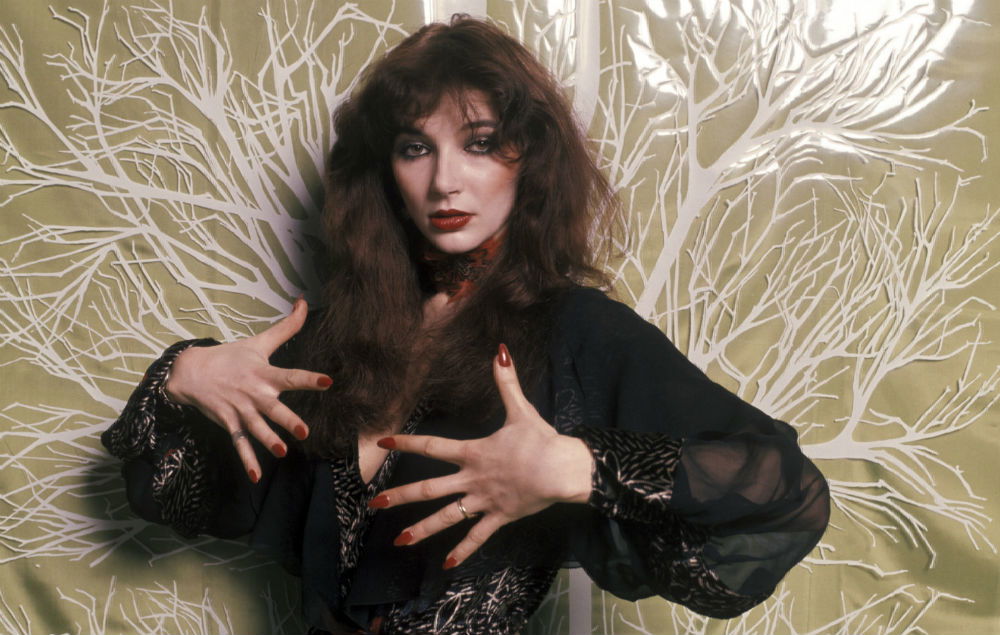
It wasn’t just The Beatles who saw members go solo. In 1975, Peter Gabriel left Genesis to launch a successful solo career. His first single, 'Solsbury Hill', marked a departure from the progressive sound he was known for with Genesis. It was the beginning of a major reinvention both in image and sound that would continue well beyond the 70s. Gabriel wouldn’t be the only artist to reinvent himself during this time.
The 70s were dominated by some of the biggest groups in rock history. Queen, Fleetwood Mac, The Cure, The Clash, The Jam, Sex Pistols, Pink Floyd, Dire Straits, ELO, and Genesis were just a few of the notable bands making their mark. Even though one of the old guard had broken up, The Kinks and The Rolling Stones were still going strong.
If the 60s showed the world what a band was capable of, the 70s set out to prove that it wasn’t just a fluke. Bands wanted to be bigger, better, and more excessive and, believe me, they certainly tried. Some even succeeded.
Fleetwood Mac had members from both sides of the Atlantic, and it just so happened that they were all romantically involved. Mick Fleetwood, Christine McVie, and John McVie were married, while Stevie Nicks and Lindsey Buckingham were dating. The band was in turmoil, on the brink of implosion. Yet, despite the tension and let’s face it, the huge amount of drug taking. They managed to produce one of the greatest albums ever made. 'Rumours' was, and still is, a timeless classic and one of the best-selling records of all time.
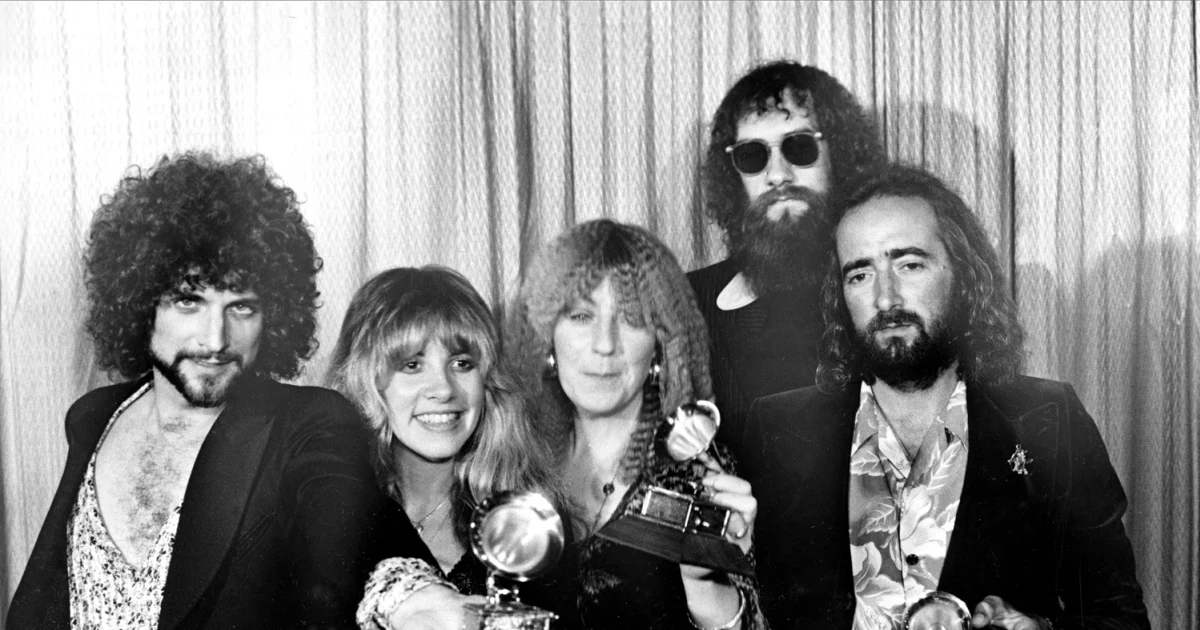
Queen took the experimental methods of the 60s, combined them with the emerging technologies of the 70s, and leveraged the brilliance of their four extraordinary members to create some of the most iconic songs in music history. Tracks like "Bohemian Rhapsody," "We Will Rock You," "Killer Queen," and "Don't Stop Me Now" stand as timeless anthems that continue to inspire generations.
Among their legendary catalogue, "Bohemian Rhapsody" remains a crowning achievement. This six-minute masterpiece shattered conventions with its operatic structure, multi-layered harmonies, and genre-defying approach. Freddie Mercury, the band's charismatic frontman and the song's primary writer, envisioned "Bohemian Rhapsody" as a "mock opera," combining elements of classical music, hard rock, and balladry into a seamless and theatrical narrative.
The recording process for "Bohemian Rhapsody" was as ground breaking as the song itself. Recorded over three weeks in 1975 at several studios in the UK. The iconic operatic section alone required nearly 180 overdubs, the songs iconic piano opening was recorded on the same piano The Beatles had used to record "Hey Jude" and Elton John had used to record "Goodbye Yellow Brick Road" and at the time it was the most expensive song ever recorded. The song topped charts worldwide, staying at number one in the UK for nine weeks and becoming one of the best-selling singles of all time. Its accompanying music video, often credited as one of the first promotional videos of its kind, further solidified its iconic status.
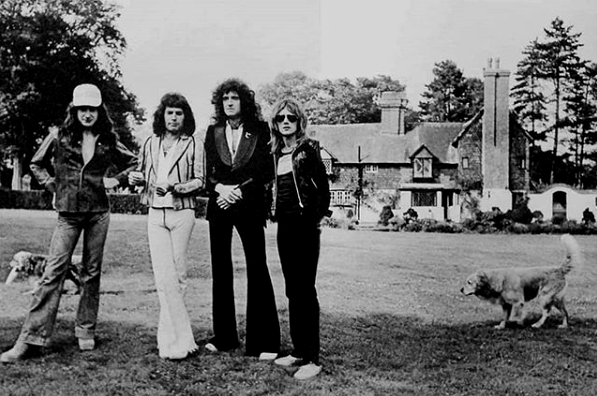
Pink Floyd took the concept of the album to new heights, creating masterpieces that blended ground breaking ideas with innovative instrumentation. Albums such as "Dark Side of the Moon," "Wish You Were Here," "Animals," and "The Wall" are not only cornerstones of 1970s music but also iconic works of art that transcended the medium. Their album covers, designed by the legendary Hipgnosis studio and artist Storm Thorgerson, are instantly recognizable and have become cultural symbols in their own right, further solidifying the band’s artistic legacy.
"Dark Side of the Moon" is a monumental achievement that delves into themes of mental health, time, and human experience, with its lush soundscapes and seamless transitions between tracks. The album’s innovative use of studio techniques, such as tape loops and synthesizers, pushed the boundaries of what rock music could achieve. Tracks like "Time" and "The Great Gig in the Sky" showcase the band's ability to combine profound lyrics with powerful musical arrangements. It remains one of the best-selling albums of all time, celebrated for its technical brilliance and emotional resonance.
"Wish You Were Here," a poignant tribute to former member Syd Barrett, explores themes of absence, alienation, and the music industry. Songs like "Shine On You Crazy Diamond" and the title track reflect the band's introspection and emotional depth, cementing their reputation as masters of conceptual storytelling.
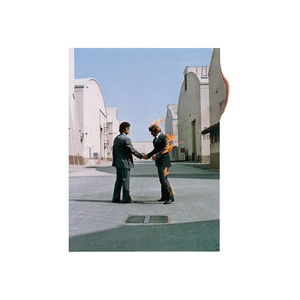
The raw and politically charged "Animals" offered a scathing critique of societal structures, drawing inspiration from George Orwell’s "Animal Farm." Its extended compositions and darker tone demonstrated the band’s willingness to tackle complex and provocative themes.
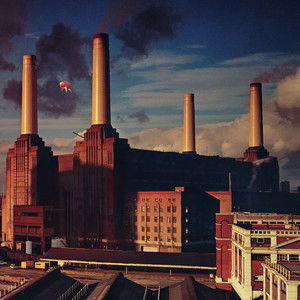
"The Wall," a rock opera penned primarily by Roger Waters, took their conceptual ambitions to unprecedented levels. This double album delved into isolation, trauma, and the human condition, with iconic tracks like "Another Brick in the Wall" and "Comfortably Numb." Its theatrical live performances and subsequent film adaptation turned it into a cultural phenomenon.
Electric Light Orchestra (ELO), led by the visionary Jeff Lynne, was one of the most innovative and ambitious bands of the 1970s and 80s. Combining rock with classical orchestration, ELO created a sound that was as grand as it was accessible. Known for their elaborate arrangements, lush melodies, and technological experimentation, ELO managed to bridge the gap between progressive rock and pop music, crafting hits that were both complex and irresistibly catchy.
One of their most celebrated works, Out of the Blue (1977), stands as a monumental achievement in the history of rock music. A double album packed with timeless hits, it is a masterclass in production and songwriting. Recorded during a creative burst by Lynne, the album features a wealth of standout tracks. "Mr. Blue Sky," often described as one of the happiest songs ever written, is a jubilant celebration of sunny optimism, driven by its infectious melody and orchestral flourishes.
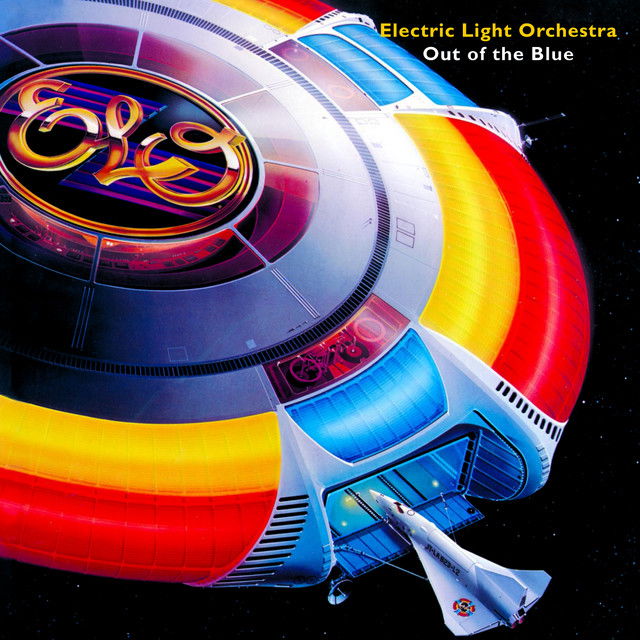
Beyond "Mr. Blue Sky," songs like "Turn to Stone" and "Sweet Talkin' Woman" showcase Lynne's knack for creating multi-layered tracks that are simultaneously intricate and immediately appealing. The album’s production, characterized by rich harmonies, sweeping strings, and synthesizer-driven innovation, pushed the boundaries of what rock music could achieve. Out of the Blue was a commercial success, going multi-platinum and solidifying ELO’s status as one of the biggest bands of the era. It remains a testament to the ambition and creativity that defined the late 70s, a timeless record that continues to inspire and delight listeners decades later.
It's one of the very best albums of that decade, an album in my opinion unfairly defined by one song. Although that song is brilliant. It has now come to define both "Out of the Blue" and ELO themselves, and this record proves that they had so much more to offer. One of the great British records.
The 1970s were a huge decade for two bands. One from Sweden, and one from Australia. ABBA and the Bee Gee's
After their victory at the 1974 Eurovision Song Contest with "Waterloo," the Swedish quartet released a string of albums that dominated the decade. Albums like Arrival (1976), featuring hits such as "Dancing Queen" and "Knowing Me, Knowing You," showcased their knack for crafting pop perfection. The Album (1977) further cemented their status with sophisticated tracks like "The Name of the Game" and "Take a Chance on Me." Their music blended heartfelt storytelling with lush harmonies and polished production, making them one of the most influential and enduring acts of the era. By the time Voulez-Vous (1979) arrived, ABBA had embraced disco’s rhythmic allure, delivering tracks like "Does Your Mother Know" and "Chiquitita," which continued to dominate charts worldwide.
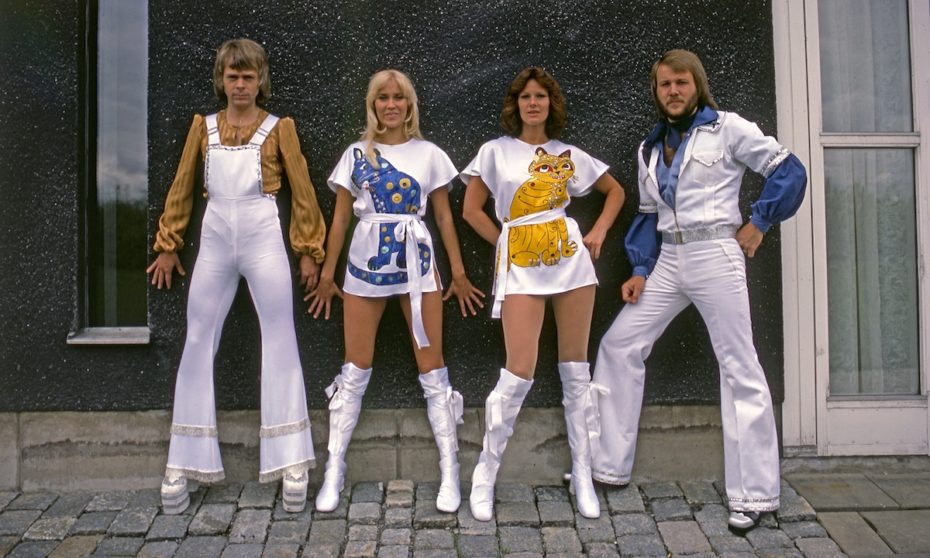
The Bee Gees began their journey in the 1960s as a trio of brothers. Barry, Robin, and Maurice Gibb crafting emotive pop-rock tunes that showcased their unique vocal harmonies and poignant songwriting. Their early success came with Bee Gees' 1st (1967), an album that featured hits like "New York Mining Disaster 1941" and "To Love Somebody," both of which displayed a knack for storytelling and emotional depth. "Massachusetts," a chart-topping ballad, captured the melancholic beauty that became a hallmark of their early work. The album Horizontal (1968) continued their rise, producing tracks like "Words" and "World," further solidifying their status as gifted songwriters. By the end of the 60s, albums like Odessa (1969) showcased a more experimental side, with lush orchestration and ambitious arrangements. This period established the Bee Gees as versatile artists capable of blending pop, rock, and orchestral influences into a unique sound.
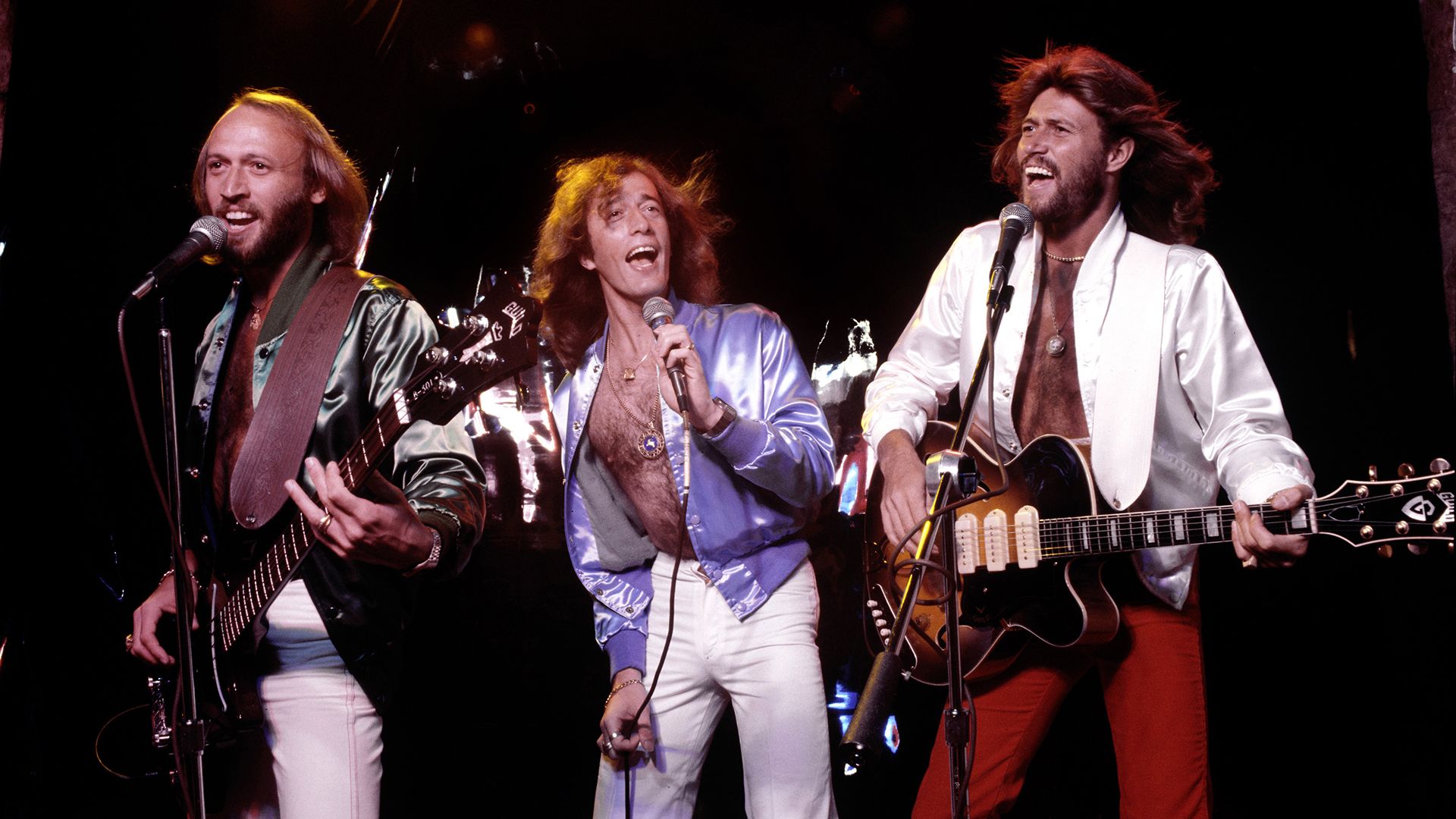
The 1970s saw the Bee Gees undergo a remarkable transformation, emerging as the architects of the disco era. This reinvention began with Main Course (1975), where they introduced a funkier, danceable sound with hits like "Jive Talkin’" and "Nights on Broadway." Their mastery of falsetto harmonies became their signature, creating an unmistakable sound that would define the decade. However, it was the Saturday Night Fever (1977) soundtrack that cemented their legendary status. Featuring iconic tracks like "Stayin’ Alive," "Night Fever," and "How Deep Is Your Love," the album not only dominated the charts but also became the definitive soundtrack of the disco movement.
Beyond disco, the Bee Gees continued to showcase their songwriting brilliance. They penned hits for other artists, such as "Emotion" for Samantha Sang and "Islands in the Stream" for Kenny Rogers and Dolly Parton, proving their versatility and staying power. Their 1979 album Spirits Having Flown marked another high point, with hits like "Tragedy" and "Too Much Heaven." Throughout the decade, the Bee Gees evolved from pop storytellers into global superstars, shaping the sound of the 70s and leaving an indelible mark on music history.
Although formed in the 1960s, Black Sabbath and Led Zeppelin were at their most prolific during the 1970s. For Black Sabbath, albums such as Paranoid (1970), featuring iconic tracks like “Iron Man” and “War Pigs,” and Master of Reality (1971), a precursor to doom metal, firmly established the band’s dominance. Later works, including Sabbath Bloody Sabbath (1973) and Sabotage (1975), revealed a growing sophistication in their music, blending heavy riffs with progressive rock elements.
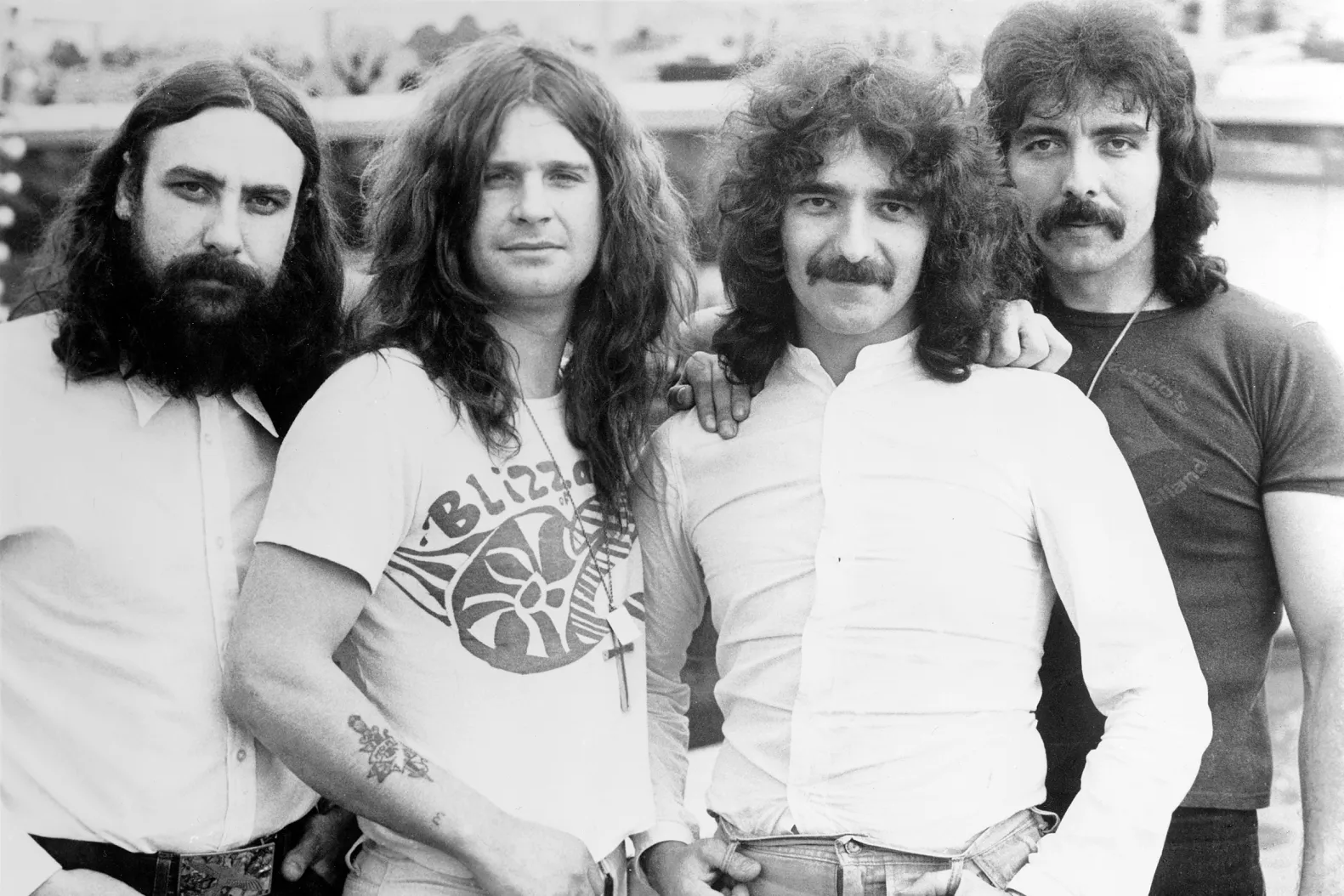
Black Sabbath epitomised the rock ’n’ roll lifestyle, surrounded by countless tales of excess and chaos. Ozzy Osbourne, the band’s frontman, became particularly synonymous with this wild behaviour. His most infamous moment came when he bit the head off a bat during a live performance. Reportedly believing it to be a prop.
However, Black Sabbath were much more than rock legends. They became a profound influence on a genre that would come to fruition in the late 1970s: punk. Sabbath’s stripped-down approach, rebellious attitude, and raw power resonated deeply with the burgeoning punk scene. Bands like the Sex Pistols and The Damned cited Sabbath’s relentless energy and DIY ethos as key inspirations. Despite being musically different, the punks felt an attachment to the ideas and ethos of bands like Black Sabbath.
Meanwhile, Led Zeppelin were pushing the boundaries of rock music with their genre-defying sound. Combining blues, hard rock, and folk, they crafted epic, timeless works that remain iconic to this day. Their magnum opus, Led Zeppelin IV (1971), includes “Stairway to Heaven,” one of the most celebrated rock songs in history. Albums such as Houses of the Holy (1973) and the double album Physical Graffiti (1975) demonstrated the band’s versatility, blending intricate guitar work with diverse influences ranging from funk to Eastern music.
As the 1970s drew to a close, Led Zeppelin delivered one of their most memorable performances at the Knebworth Festival in 1979. After a two-year hiatus marred by personal tragedies, including the death of Robert Plant’s son, the band returned to the stage to reclaim their throne as rock royalty. Performing to a crowd of over 200,000, they played a setlist that spanned their entire career.
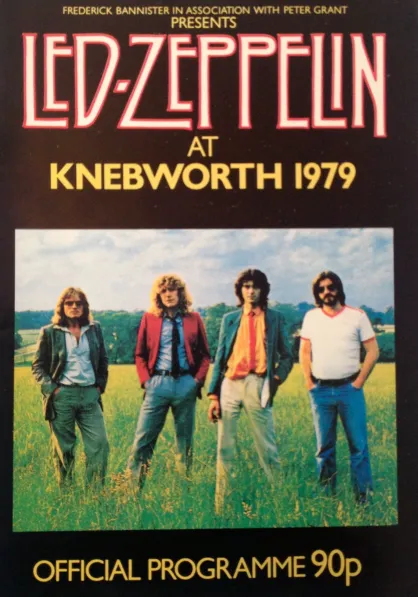
Before discussing the next culturally significant musical development in Britain, it is important to set the scene. The 1970s in Britain were a difficult time for many. In December 1973, the finance minister privately warned Prime Minister Edward Heath’s cabinet that the country faced its gravest economic crisis since the Second World War. Strikes were widespread, and power blackouts left many in darkness. It was a bleak time, with soaring unemployment and little money to go around. Where the 1960s had brought young people a sense of hope, by the late 1970s, the optimism of the “Swinging Sixties” had well and truly faded. For many, it seemed there was simply “No Future.”
Punk needed to happen. It was inevitable. During these times of hardship, there seemed to be no one for young people to attach to. Music did not represent them. It was difficult to connect with the musicians of the time; a young working-class kid with no job couldn’t relate to someone like Donna Summer singing about love, or Queen singing 'We Are the Champions'. Although those artists are great, something needed to change. And, oh, something definitely changed forever!
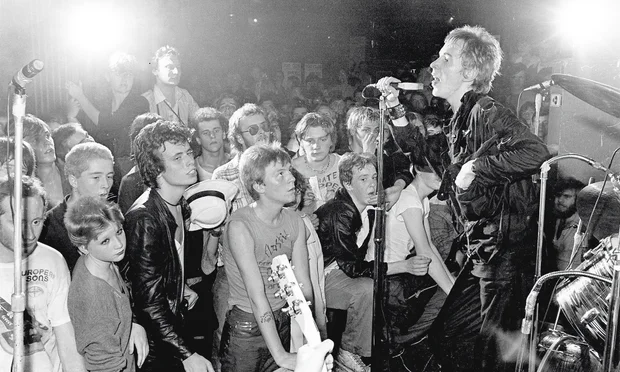
Punk was unlike anything that had come before it. It was raw, provocative, crude, yet beautiful. Punk became the sound of the disenfranchised. Many dismiss the genre as a flash in the pan, with nothing but shouting and screaming. How wrong they are. This period, from late 1976 to early 1978, produced some brilliant pieces of music—both singles and albums. Each distinct in sound and feel.
Although both were considered punk bands, The Clash and The Sex Pistols were completely different in style, yet both wrote about working-class struggles. 'Never Mind the Bollocks' is arguably one of the most important albums ever made. It became the soundtrack of the disenfranchised youth, an album that took on and shook the establishment to its very core. 'God Save the Queen' and 'Anarchy in the UK' caused uproar at the time, triggering a seismic shift in youth culture.
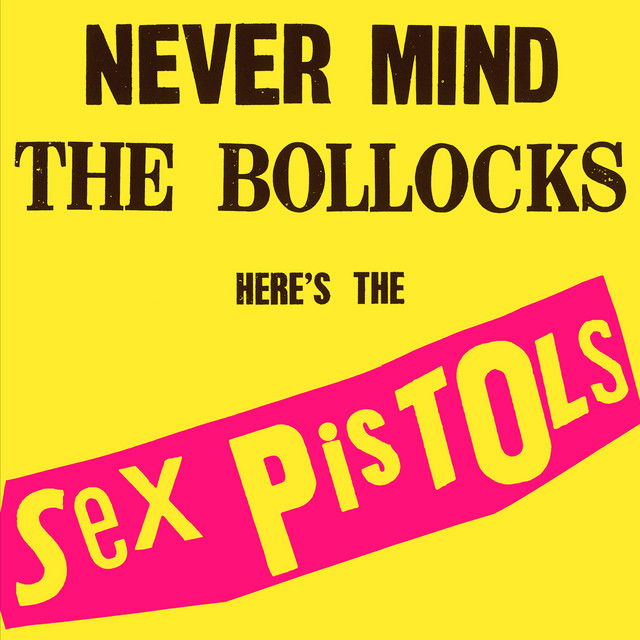
The Sex Pistols were also quite often the perpetrators of chaos, anarchy some might say. Whether that be the infamous Bill Grundy incident. Which would turn the band into public enemy number one. All of the band, and the host were intoxicated during the interview. During the interview, encouraged by Grundy, Jones said the band had "fucking spent" its label advance, and Rotten used the word "shit". Grundy—who had later claimed to have been drunk—then attempted to flirt with Siouxsie Sioux, who replied that she had "always wanted to meet" him. Grundy responded, "Did you really? We'll meet afterwards, shall we?", prompting Jones to repeatedly swear.
Or the bands famous boat party.The 7th June 1977 was a big day for the band, they had chartered a boat to let the band play there songs down the Thames, past the Houses of Parliament and to mock the planned river procession planned for the Queen on the 9th of June to celebrate her Silver Jubilee. However it ended in chaos with the Police bringing a stop to the concert, and many of he bands entourage being arrested.
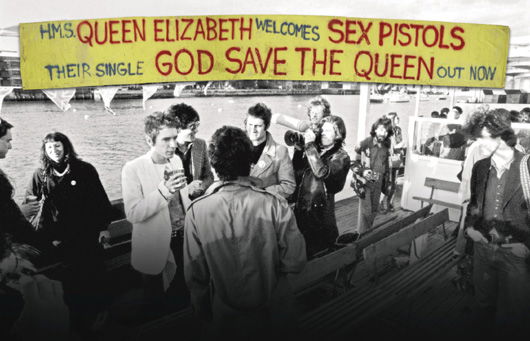
It was a time where boundaries were shattered. Nothing would ever be the same. And while the pioneers of this scene would eventually implode, it led to a new era and influenced the decades to come.
Bands like The Jam, The Stranglers, and The Clash would move on from the punk scene and evolve their sound, embracing more diverse influences and expanding their musical horizons. This evolution not only marked a departure from the raw, gritty aesthetic of early punk but also led these bands to write some of their most celebrated and enduring songs.
The Jam's "All Mod Cons" (1978) was a critical turning point, allowing Paul Weller to showcase his exceptional songwriting ability. Tracks like "Down in the Tube Station at Midnight" and "English Rose" revealed a depth and maturity that elevated the band beyond their punk roots. Weller was crafting anthems for a generation, capturing the struggles and aspirations of British youth with sharp lyrics and compelling melodies. Many consider All Mod Cons not just a turning point but The Jam’s most important and cohesive album, blending punk energy with mod-inspired sophistication.
The Clash's London Calling stands as a monumental achievement, marking the band at their creative peak. Released in 1979, the double album saw the group transcend their punk roots, crafting a more mature and complex work that redefined their sound and broadened their appeal. The title track, "London Calling," became an anthemic call to arms, with its ominous, apocalyptic lyrics and driving rhythm capturing the anxieties of a generation. Meanwhile, "Train in Vain" showcased the band’s ability to deliver heartfelt, melodic songs, blending elements of pop and rock to create one of their most enduring hits.
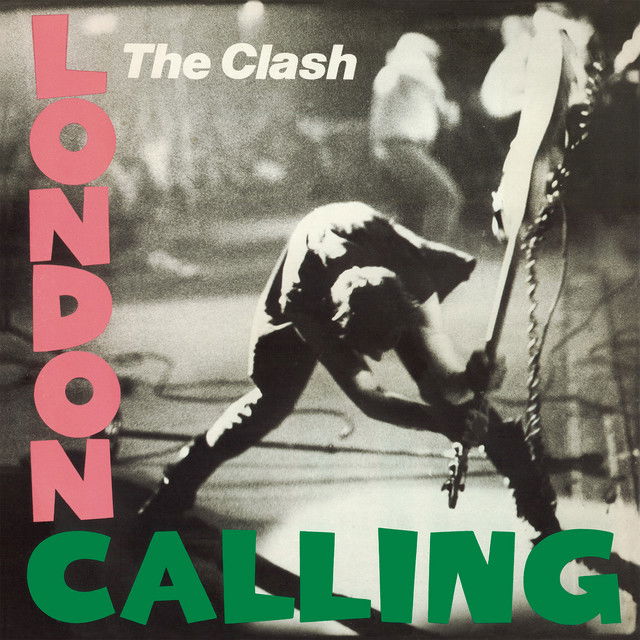
The album was a bold statement, blending a wide array of influences, including reggae, ska, rockabilly, and even jazz. Tracks like "The Guns of Brixton" and "Rudie Can't Fail" revealed the band’s affinity for Caribbean rhythms, while songs like "Clampdown" and "Spanish Bombs" demonstrated their commitment to political and social commentary. Expanding on a sound that had made them famous but never afraid to explore new ideas and tackle the important subjects at the time.
The Stranglers followed a similar path, integrating elements of new wave and art rock into their music. Tracks like "Golden Brown" and "Strange Little Girl" demonstrated their ability to evolve while maintaining their edge, earning them a broader audience.
Two American bands also took over the UK airwaves in the late 70s. Talking Heads and Blondie took the punk sound and ethos and ran with it. Talking Heads, led by the enigmatic David Byrne, blended punk with art rock, funk, and a touch of the avant-garde. Albums like "More Songs About Buildings and Food" and "Fear of Music" were critically acclaimed, producing tracks like "Psycho Killer" and "Life During Wartime," which showcased the band's inventive approach to music. Their innovative sound became a cornerstone of the emerging post-punk movement.
Blondie’s "Parallel Lines" became one of the most important albums of the decade, propelling the band to superstardom. It took the DIY attitude of punk and gave it a pop sheen, producing timeless hits like "Heart of Glass," "Hanging on the Telephone," and "One Way or Another." Blondie became pioneers of the new wave movement, blending punk energy with disco, pop, and even reggae.
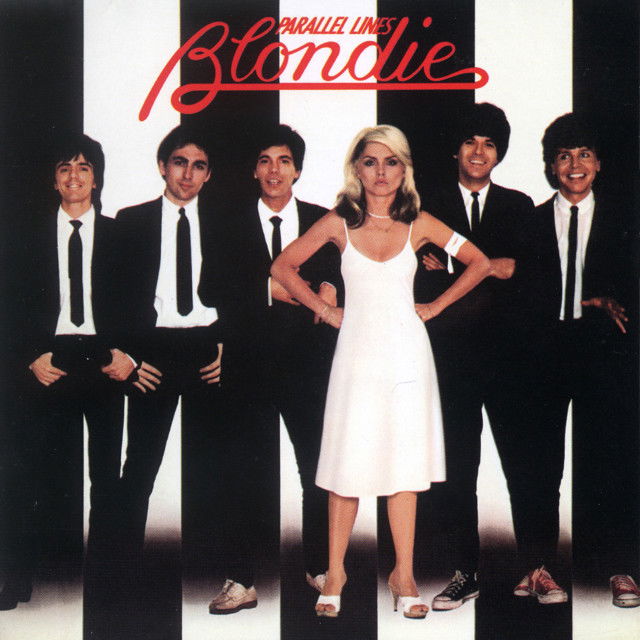
After the success of Parallel Lines, Blondie continued to evolve. Their 1979 follow-up, Eat to the Beat, showcased their range, blending rock anthems like "Dreaming" with funk-inspired tracks like "Atomic." The band’s ability to experiment while maintaining their mainstream appeal was unparalleled. By 1980, they further pushed the boundaries with Autoamerican, which featured "The Tide Is High," a reggae-infused track, and "Rapture," a groundbreaking song that brought rap into the mainstream, making it the first rap-influenced track to reach Number One on the Billboard charts.
Blondie's influence extended beyond their music. They were style icons, with Debbie Harry setting fashion trends that are still emulated today. Their music videos were innovative and visually striking, helping to shape the aesthetics of the MTV era that was just around the corner.
Their willingness to embrace diverse genres—from punk and disco to reggae and hip-hop—made Blondie pioneers in breaking down musical barriers. They weren’t afraid to take risks, and their success paved the way for future artists to explore and mix genres.
The influence of both bands was immense. Blondie’s success helped new wave gain mainstream acceptance, inspiring British acts such as The Cure, The Police, XTC, and even The The, who embraced the genre's fusion of punk attitude with pop accessibility. Talking Heads, on the other hand, pushed the boundaries of what post-punk could be, influencing a generation of experimental bands on both sides of the Atlantic. Together, these two bands helped define the sound of the late 70s and early 80s, bridging the gap between punk's raw immediacy and the more polished, diverse styles that followed.
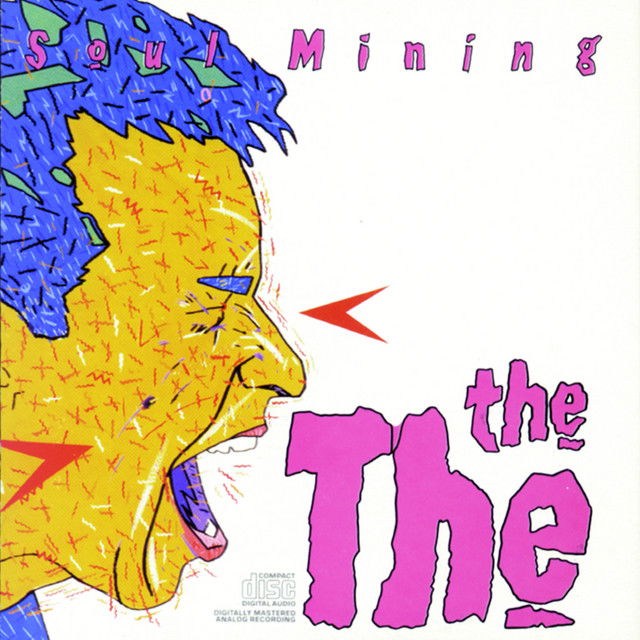
It wasn’t just about London in the 70s, though. Manchester. Well, Manchester always has so much to answer for. Buzzcocks formed in 1976, led by singer-songwriter-guitarist Pete Shelley and singer-songwriter Howard Devoto. These two would be key players in organizing the now legendary Sex Pistols show at Lesser Free Trade Hall. Despite there being only 42 people in the audience, it went on to become one of the most important music events ever.
It’s incredible when you learn who was at the gig. Buzzcocks themselves were there, as well as Peter Hook, Ian Curtis, Bernard Sumner (then part of the nascent Warsaw, later Joy Division and New Order), and Mark E. Smith of The Fall fame. Tony Wilson, a Manchester TV presenter, also attended and would go on to start Factory Records, one of the most iconic independent labels, and create the legendary Hacienda nightclub (more on that later). Even a young Morrissey was in the audience, and it’s safe to say he was not impressed. He later wrote a scathing letter to the NME expressing his disdain. More on him later.
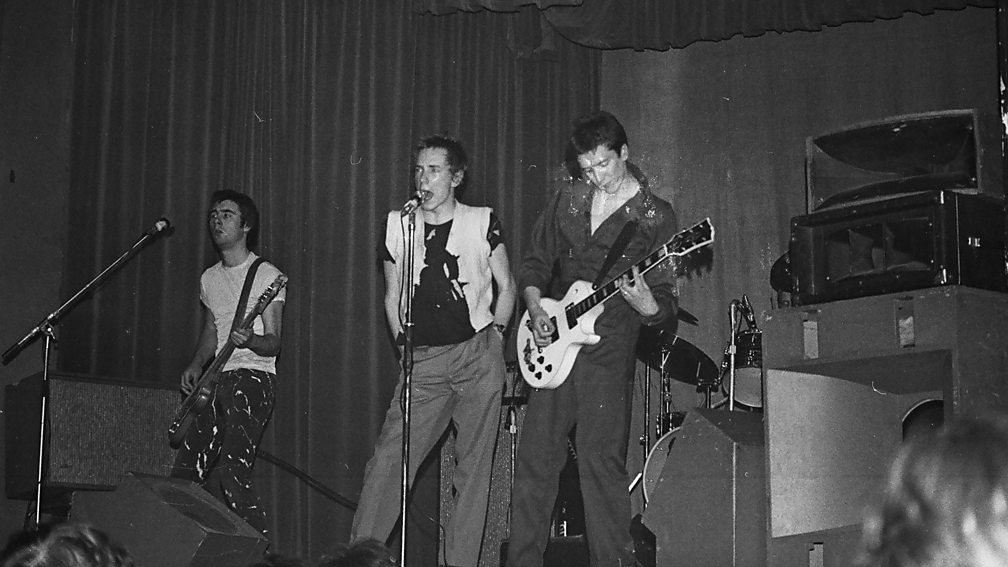
What makes this event so extraordinary is the ripple effect it caused. This small, under-attended gig in a forgotten venue sparked a cultural revolution in Manchester, cementing the city as a hub for creativity and innovation. Buzzcocks themselves would go on to pioneer a unique brand of pop-punk, with hits like "Ever Fallen in Love (With Someone You Shouldn't've)" becoming timeless anthems. Meanwhile, the seeds planted that night gave rise to Joy Division's haunting post-punk sound, The Fall’s avant-garde brilliance, and the foundations of a music scene that would dominate the 80s and beyond.
It wasn’t just the music that mattered; it was the spirit of independence. The DIY ethos of punk inspired these artists not to wait for a record deal but to create and release their own music. This attitude would become the lifeblood of Manchester’s music scene, influencing countless bands and redefining what it meant to make music outside the mainstream. That night in 1976 was not just a concert. It was the birth of a movement.
The 70s, much like the decade before it, was a time of change. It was an era where anything seemed possible. Bowie shot for the stars, Queen wrote rock operas, and Joy Division helped birth the world’s first indie record label. It was a time of mass hedonism and mass hardship, which led to some of the most important music ever made.
Love Will Tear Us Apart- The 80s Part 1
I’m going to begin the 1980s exactly where I left off in the 1970s: Manchester. By this time, Joy Division had firmly established themselves as an integral part of Tony Wilson’s Factory Records and were riding the wave of creative momentum from the success of their debut album "Unknown Pleasures." Released in 1979, "Unknown Pleasures" was a game-changer for the post-punk movement, with its haunting, atmospheric sound and angular, sparse production. The album showcased a remarkable mix of cold, mechanical rhythms and emotionally charged lyrics, most notably in tracks like "Disorder," which opened the album with a sense of urgency, and the devastating "She's Lost Control," which captured Curtis's lyrical exploration of the human condition. "Unknown Pleasures" became a touchstone for both fans and critics, with its dark, introspective themes and minimalist sound influencing countless bands in the years to come.
By the time they began working on their second album, "Closer," released in 1980, Joy Division was already on the brink of greater success. With songs like "Love Will Tear Us Apart," which would become their most iconic and enduring track, and "Isolation," which showcased their evolving sound, "Closer" was shaping up to be another masterpiece. The album was darker, more polished, and more complex, but it still held true to the band’s core sound brooding and intense, yet emotionally raw. As the band prepared for their first American tour, the momentum was building for what could have been their breakout moment.
But just days before they were set to embark on that tour, tragedy struck. On May 18, 1980, Ian Curtis, the enigmatic frontman whose haunting baritone voice and intense stage presence had defined the band's identity, was found dead in his home. Curtis had long struggled with epilepsy and was deeply troubled by the idea of performing in front of American audiences, fearing how they would react to his condition. Add to that his personal struggles and the pressures of his growing fame, and it became clear that Curtis had been grappling with overwhelming darkness. His death not only marked a heartbreaking personal loss but also abruptly ended what could have been an even more influential chapter in the band's history.
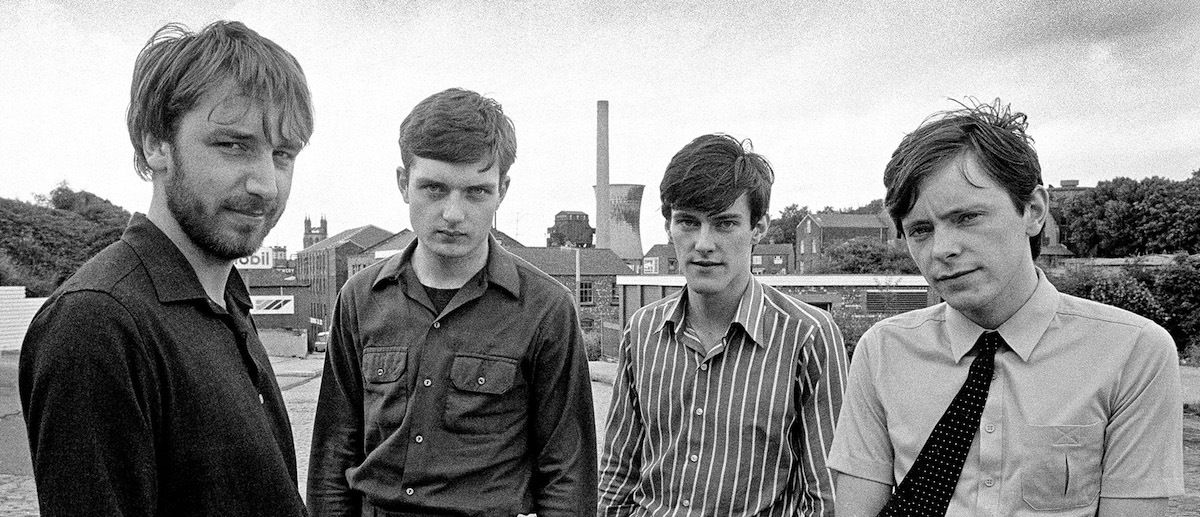
Following Curtis's tragic death, Bernard Sumner, Peter Hook, and Stephen Morris found themselves at a crossroads. Unable to continue under the Joy Division name, they formed a new band, New Order, marking the start of one of the most influential musical journeys of the 1980s. Though the shadow of Joy Division loomed large, New Order quickly established themselves as a ground breaking force in the music scene.
In the early years, New Order reinvented their sound, blending post-punk with electronic music to create an innovative style that would dominate the decade. Their fusion of danceable synths, infectious basslines, and introspective lyrics set them apart from their peers. But it wasn’t just their music that defined New Order. It was their involvement in the broader cultural landscape of Manchester and the rise of the Acid House movement.
The band became deeply entwined with Factory Records, the iconic label founded by Tony Wilson, and they played a crucial role in the rise of the Hacienda nightclub, which became the epicentre of Manchester’s vibrant music scene. As major shareholders in the club, New Order were not only key figures in the city's nightlife but also helped launch the careers of other influential artists, including graphic designer Peter Saville, whose striking artwork became synonymous with the band’s visual identity.
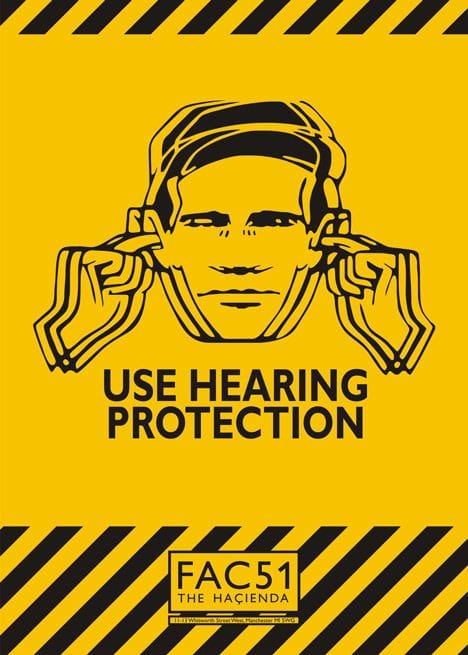
New Order’s impact on the music world was revolutionary. Their 1983 single Blue Monday became a landmark release, becoming the biggest-selling 12-inch single of all time. The track’s ground breaking blend of electronic dance music and rock elements influenced countless artists and marked the beginning of a new era in music production. But their influence didn’t stop there.
As key players in the Acid House movement, New Order helped shape the evolution of dance music, particularly through their 1989 album Technique, which embraced electronic beats and house music influences. With the Hacienda as a focal point, they became central figures in the "Madchester" scene—a cultural movement that blended music, fashion, and hedonistic nightlife culture. The success of the movement marked Manchester as a global hub for new music and creative energy, with New Order standing at the forefront of this revolution.
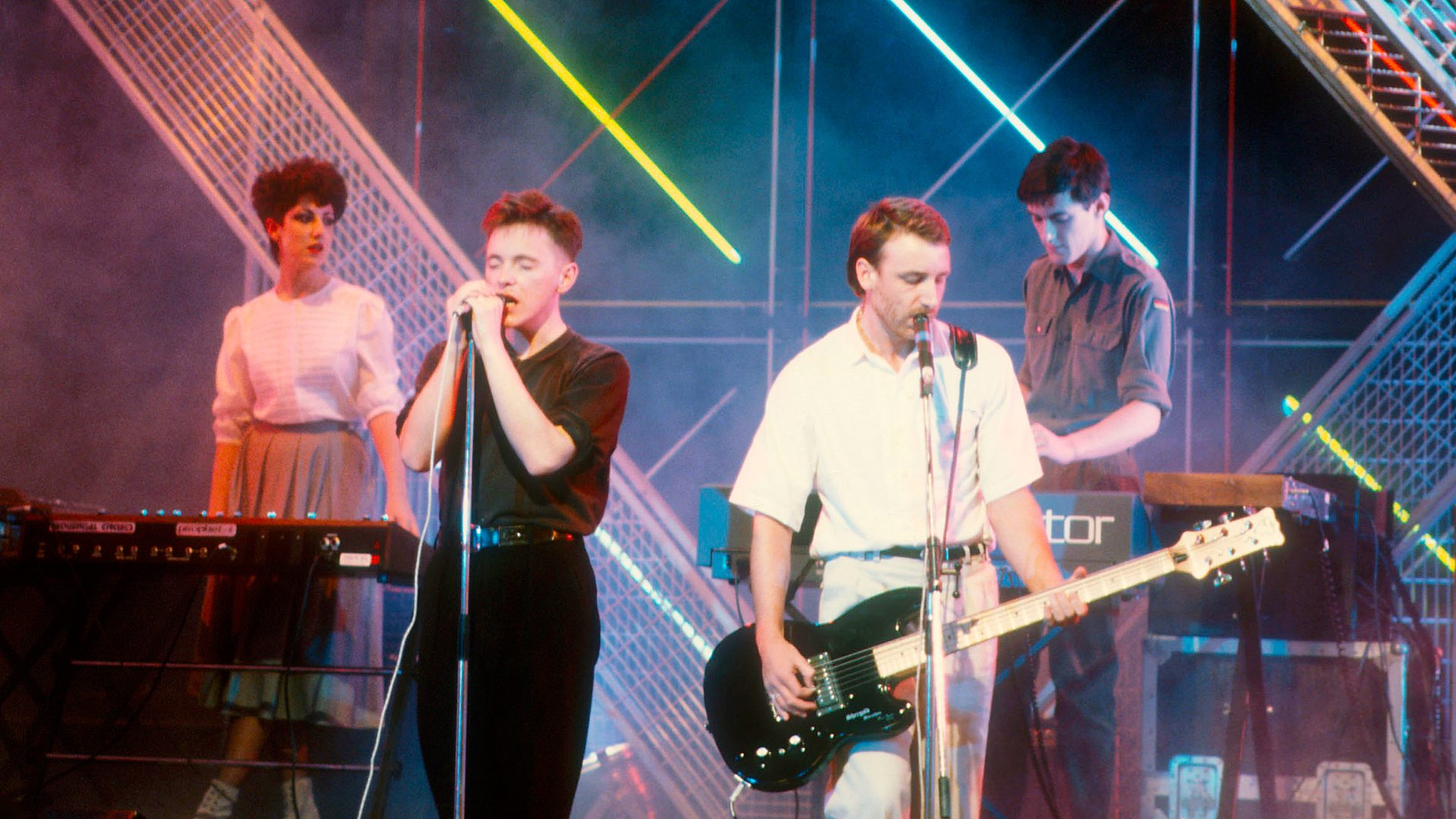
But Manchester wasn’t just about Factory Records; it would be remiss of me not to mention eight more musicians: Morrissey, Marr, Rourke, and Joyce. Brown, Squire, Mani, and Reni. Or, as we know them, The Smiths and The Stone Roses.
I’ve written a post on why I believe The Smiths to be the most important British band ever, so it’s easy to see why I would write about them here. They were the first indie band to propel themselves up the charts, with their 1985 album Meat is Murder hitting the top spot. Morrissey and Marr were geniuses—two mavericks who came together to create spine-tingling music. The Smiths were the anti-establishment band of the 1980s. They distanced themselves from the pop sheen of the time, and it's safe to say they weren’t fans of disco (just listen to Panic!). But they also didn’t align themselves with the rock bands of the 1980s. They had a unique sound, and that’s a huge reason why they remain one of the most influential bands to come out of Britain.
The Smiths didn’t last long. Formed in May 1982 and breaking up in June 1987, they were together for only five years. Some say The Beatles' career was short-lived, as they were together for just ten years. Five years, however, was nothing for many, including the band members themselves. They broke up at their peak. The group’s last album, Strangeways, Here We Come, is regarded as the best album by all four members, and it’s the one they enjoyed making the most. Imagine what could have been! The legacy of The Smiths cannot be overlooked, and although all four members have continued to make music. Morrissey’s solo career, Marr’s collaborations, and supergroups. It is The Smiths they will be remembered for the most. Their sound still echoes through Manchester. The Stone Roses and Oasis were greatly influenced by Morrissey’s portrayal of, and nostalgia for, a bleak urban England. Even more recent acts like The Courteeners and Blossoms can thank The Smiths.
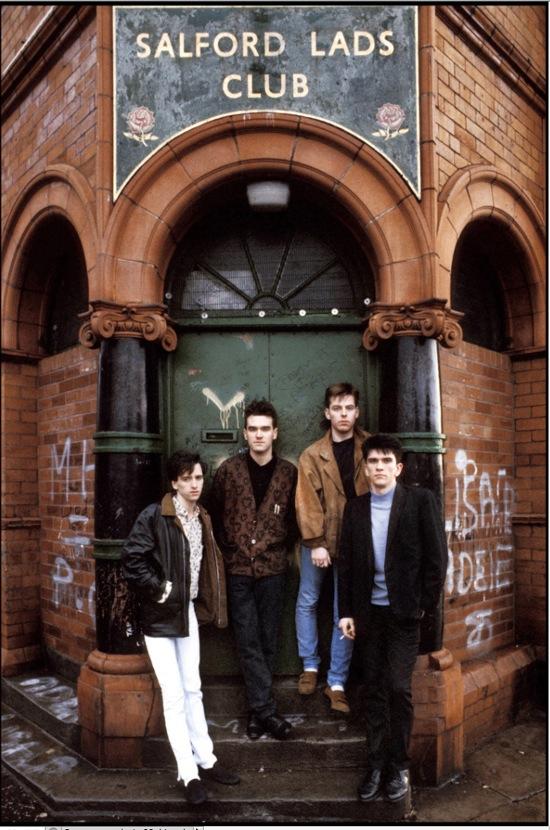
The Stone Roses arrived at the end of the decade, first with their 1987 single "Sally Cinnamon" and then their 1989 self-titled debut album. The band gave kids across the UK a sense of optimism and hope. It’s an album that nods to the past while remaining modern and contemporary. Combining rock and dance music, the Acid House revolution was beginning, and 1989 marked the start of rave culture. Along with the Happy Mondays, The Stone Roses would help soundtrack this change. They seemed to unite the subcultures under the umbrella of indie dance music. Something many bands would continue to try to do in the decades that followed.
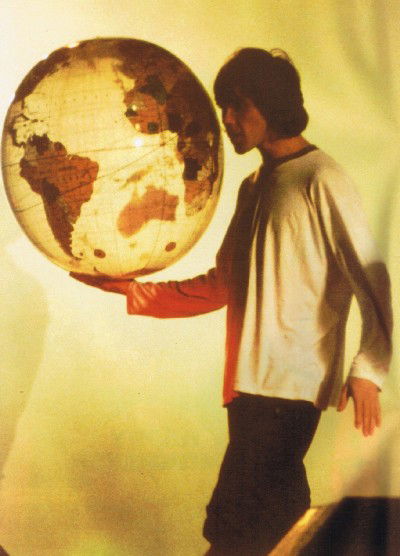
I found a quote that sums up the first Stone Roses album: “It remains an overwhelming statement of working-class pride.” It truly does. The album is still a classic today and one of the most important collections of songs ever. Its sounds and themes can still be traced through British guitar music today.
The Happy Mondays were also a key part of the Madchester scene. Unlike The Stone Roses, the Happy Mondays were signed to Factory Records, another coup by Tony Wilson. He was impressed by the band's approach to music, combining genres and quick-witted lyrics. Wilson once compared Shaun Ryder, the Happy Mondays’ songwriter, to W.B. Yeats.
The Happy Mondays played a crucial role in the dramatic rise and subsequent fall of Factory Records. They are one of the most important bands from Britain, bridging the gap between indie and dance music and blurring the lines between what a guitar band could do. Songs like "Wrote for Luck" are both dance anthems and indie classics.
Before Factory Records’ rapid decline, the Happy Mondays and The Stone Roses were the biggest bands in Britain. On November 23, 1989, both bands performed on Top of the Pops. The Stone Roses played their latest single Fools Gold, while the Happy Mondays, featuring the late, great Kirsty MacColl, performed "Hallelujah" from their "Madchester Rave On" EP.
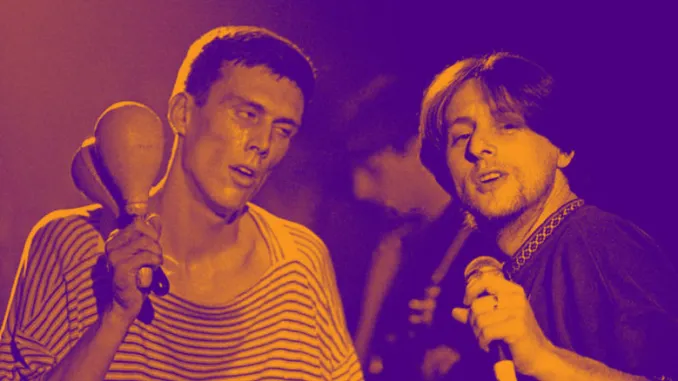
Madchester was no longer an underground movement—it had burst into the mainstream, bringing a cultural shift that could be felt across the UK. Both The Stone Roses and Happy Mondays entered the charts simultaneously, marking a defining moment for indie music. For the first time since The Smiths, indie fans had something to truly celebrate.
At a time when the charts were dominated by Stock, Aitken, and Waterman’s factory-produced pop hits and novelty acts like Jive Bunny, these two bands shook things up. The Stone Roses and Happy Mondays brought a fresh, rebellious energy that resonated with a disillusioned youth. They weren’t just challenging the status quo. They were rewriting it.
This was a watershed moment: the counterculture had broken through into the mainstream. Even the establishment, often slow to embrace change, couldn’t ignore the seismic shift taking place. The bands didn’t play the game on Top of the Pops. Take Ian Brown, for example so blatant with his miming and Bez, the Mondays' Ecstasy-fueled, loveable mascot. Both bands proved anyone could do it. It was a call to arms for the next generation.
The Charlatans, The Inspiral Carpets, and James would all release songs influenced by this Top of the Pops performance in the following year. New Order, too, would be influenced by the Indie/Acid House amalgamation, as seen in their 1989 album Technique. Music changed almost overnight.
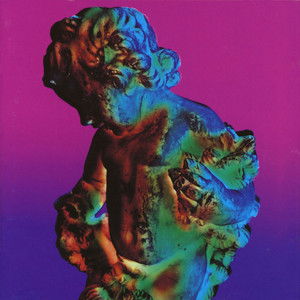
It prepared the UK for Britpop in more ways than one, but also for the electronic revolution that would unfold in the following decade.
As with previous decades, this period coincided with the rise of a new drug—ecstasy. This was a vitally important component of the time. Madchester and the emergence of Acid House music in the UK might not have happened without E. The early 1980s were marked by violence—football hooliganism and riots were rampant—and suddenly, this little pill made a seismic change overnight. Love was in the air, and people wanted to dance. And dance they did—in clubs like the Hacienda, at Happy Mondays and Stone Roses concerts, and at illegal raves in warehouses, farmers’ fields, and even aircraft hangars. It was the most important musical shift since punk. They just didn’t know it yet.
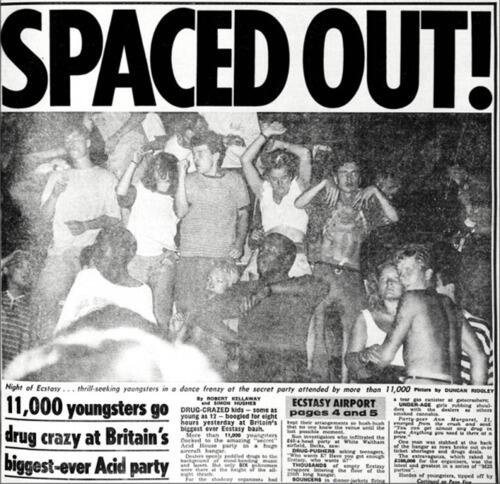
A Kind of Magic- The 80s Part 2
1980 witnessed one of the most tragic and shocking events in music history. On December 8, 1980, John Lennon, a former member of The Beatles and an enduring icon of peace and love, was brutally murdered outside his New York apartment by Mark David Chapman. Lennon was fatally shot in the archway of the Dakota Building, where he had lived with his wife, Yoko Ono, for several years.
Mark David Chapman, an American fan of The Beatles, harboured envy and resentment toward Lennon, fuelled by the singer’s lifestyle and his 1966 comment that The Beatles were "more popular than Jesus." Chapman claimed he was inspired by Holden Caulfield, the protagonist of J.D. Salinger’s novel The Catcher in the Rye. Caulfield, often described as a "phony-killer," despised hypocrisy. A sentiment Chapman disturbingly identified with.
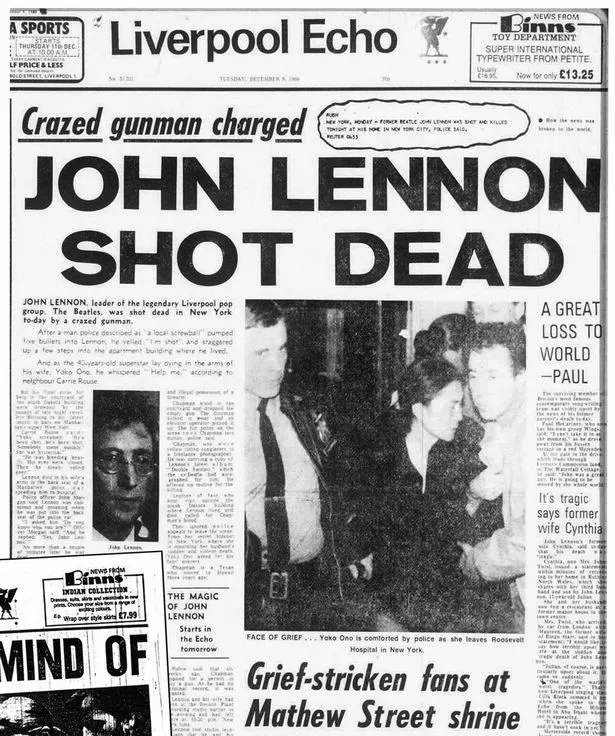
Chapman planned the killing over several months and waited for Lennon at the Dakota on the morning of December 8, 1980. Early in the evening, Chapman approached Lennon, who graciously signed a copy of his album "Double Fantasy" before heading to a recording session at the Record Plant. Later that night, Lennon and his wife, Yoko Ono, returned to the Dakota to say goodnight to their son before heading out for an impromptu date night. As Lennon and Ono approached the building’s entrance, Chapman fired five hollow-point bullets from a .38 Special revolver, four of which struck Lennon in the back. Lennon was rushed to Roosevelt Hospital in a police car, where he was pronounced dead on arrival at 11:15 p.m. He was just 40 years old.
Chapman remained at the scene, reading The Catcher in the Rye, until he was arrested by the police. Investigations later revealed that Chapman had considered targeting other celebrities, including David Bowie.
The news of Lennon’s murder sent shockwaves through the world of music and popular culture. While Lennon was best known as a member of the biggest band in the world, The Beatles, he was much more than that—a political activist, a father, a husband, and an extraordinary songwriter. Tributes poured in from across the music industry, including heartfelt gestures from Lennon’s former bandmates and other musical legends.
David Bowie, who had befriended Lennon during the creation of Bowie’s U.S. #1 hit "Fame" in 1975, paid tribute during the final show of his Serious Moonlight Tour at the Hong Kong Coliseum on December 8, 1983, the third anniversary of Lennon’s death. Bowie reflected on his last meeting with Lennon in Hong Kong and performed a moving rendition of "Imagine."
Other tributes came from Lennon’s fellow Beatles. George Harrison released the heartfelt song "All Those Years Ago" in 1981, featuring contributions from Ringo Starr and Paul McCartney. McCartney also paid homage with "Here Today," included on his 1982 album Tug of War.
Queen honoured Lennon by performing "Imagine" at Wembley Arena in London the night after his death. Freddie Mercury later wrote "Life Is Real (Song for Lennon)" as a tribute, which appeared on Queen’s 1982 album Hot Space. XTC performed The Beatles' "Rain" in Liverpool the night following Lennon’s passing, while David Gilmour of Pink Floyd wrote and recorded "Murder," inspired by the tragedy, which appeared on his 1984 album About Face.
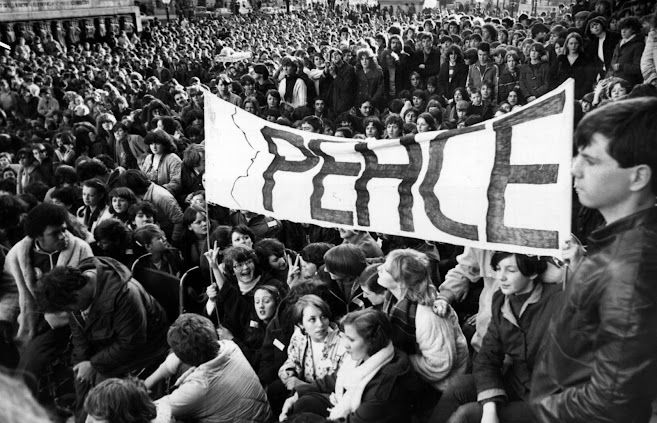
His death was unparalleled, a harrowing tragedy that stood apart from the usual narratives of rock 'n' roll excess or natural causes. Lennon was gunned down in one of the world's busiest cities by a man to whom he had shown kindness just hours earlier.
The 1980s, however, were not solely defined by loss or mourning they were a whirlwind of cultural transformation, marked by the rise of indie bands, electronic music, and huge rock superstars.
British bands and solo artists were huge in the 80s. From Duran Duran and Wham! to Queen and U2, British bands would take on the world. That wasn't going to stop the solo artists, though. Bowie was huge, George Michael would forge a solo career, and so would the drummer from Genesis. Phil Collins would arguably become the biggest star of the decade.
Duran Duran were one of the quintessential bands of the 1980s, blending new wave, pop, and rock to create a distinctive sound that captured the spirit of the era. Formed in Birmingham in 1978, the band quickly rose to fame with their self-titled debut album in 1981, but it was their 1982 album "Rio" that truly catapulted them to global stardom. With iconic hits like "Hungry Like the Wolf," "Rio," and "Save a Prayer," Duran Duran became known for their infectious melodies, slick production, and stylish, glamorous image.
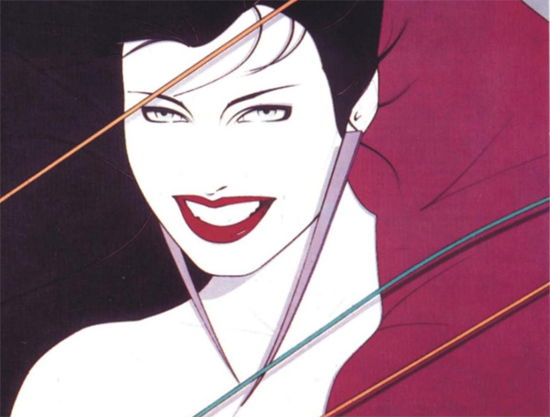
Wham! were one of the most iconic pop bands of the 1980s, known for their infectious energy and catchy, upbeat hits that helped define the decade’s sound. Formed in 1981 by George Michael and Andrew Ridgeley, the duo quickly became a sensation with their distinctive blend of pop, funk, and dance music. With iconic singles like "Club Tropicana" and "Wake Me Up Before You Go-Go" the band cemented themselves as pop icons, who despite only being around for a short period made a lasting impact on British popular culture.
They even wrote the best Christmas song.
After achieving global fame as one-half of Wham!, George Michael embarked on a solo career in the mid-1980s that would establish him as one of the decade’s defining artists. His transition from pop heartthrob to mature solo performer was seamless, marked by a string of critically acclaimed and commercially successful releases.
Michael’s debut solo single, “Careless Whisper” (1984), was a global sensation, showcasing his soulful voice and sophisticated song writing. The track, co-written with Wham! partner Andrew Ridgeley, topped charts worldwide and signalled a new level of artistry for Michael.
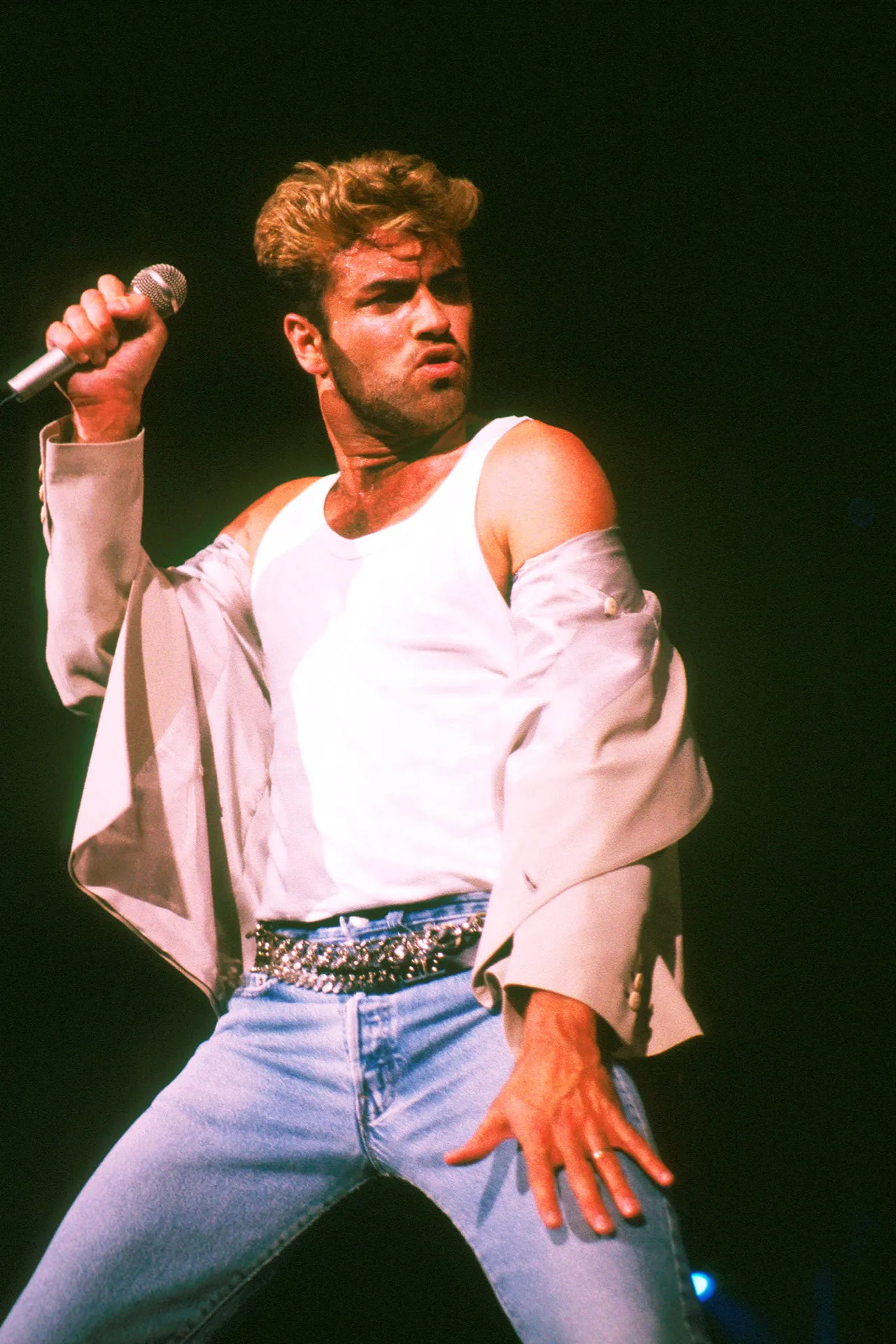
In 1987, Michael released his first solo album, Faith, which catapulted him into the stratosphere of pop superstardom. A masterclass in blending pop, R&B, and funk, Faith included iconic hits such as the title track, “Father Figure,” “I Want Your Sex,” and “One More Try.” The album demonstrated Michael’s ability to tackle mature themes with depth and sensitivity, while also delivering irresistible hooks. Faith sold over 25 million copies worldwide and earned Michael a Grammy Award for Album of the Year in 1989.
By the end of the decade, George Michael had firmly established himself as a global icon, known not only for his chart-topping hits but also for his artistry and willingness to push boundaries. His 1980s solo career laid the foundation for a legacy that continues to resonate with fans and influence artists to this day.
The Human League revolutionized the music scene by pushing electronic music to the forefront of the charts with their pioneering, synth-driven sound. Their 1981 breakthrough album Dare was a game-changer, featuring hits like "Don't You Want Me," which combined cutting-edge production techniques with irresistible pop hooks. By making electronic music both accessible and commercially viable, they set the stage for a broader acceptance of synth-pop.
This innovation paved the way for acts like the Pet Shop Boys, who refined the genre with their sophisticated blend of electronic beats, introspective lyrics, and catchy melodies. With timeless hits like "West End Girls" and "It's a Sin," the Pet Shop Boys took electronic pop to a global audience, solidifying the genre's place in mainstream music.
Orchestral Manoeuvres in the Dark (OMD) also left an indelible mark on this era, blending lush electronic textures with thoughtful song writing. Their 1980 hit "Enola Gay" stood out not only for its infectious melody but also for its powerful subject matter, addressing the atomic bombing of Hiroshima. OMD continued to push boundaries with albums like Architecture & Morality, which combined experimental sounds with a sense of emotional depth rarely seen in electronic music.
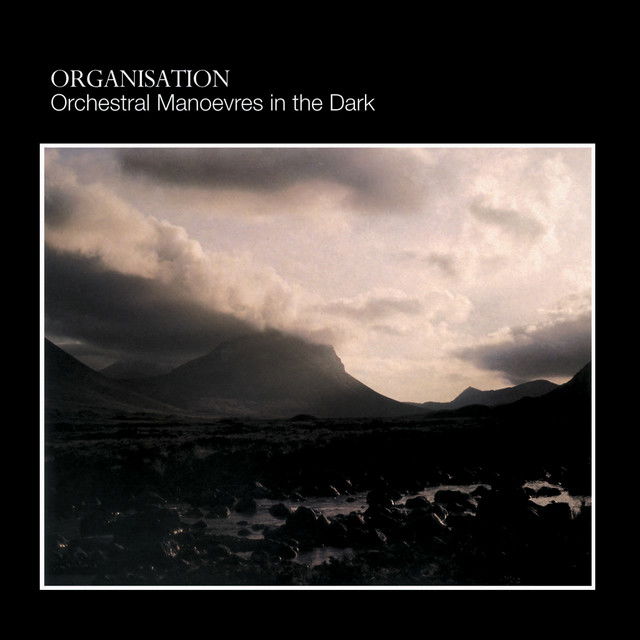
Meanwhile, the Two-Tone movement, born in the late 1970s, carried significant momentum into the early 1980s. Rooted in ska and reggae, Two-Tone blended infectious rhythms with punk’s raw energy and rebellious spirit, creating a vibrant, danceable sound that was also deeply political. The movement was spearheaded by Coventry-based 2 Tone Records, founded by Jerry Dammers of The Specials, and became a cultural phenomenon.
Bands like Madness and The Specials represented two distinct sides of Two-Tone’s appeal. Madness, with their lively and often humorous take on ska, became one of the most popular British bands of the era, crafting hits like "Baggy Trousers" and "Our House" that balanced nostalgia with upbeat energy. On the other hand, The Specials offered incisive social commentary, addressing issues like unemployment, racial tension, and urban decay. Their 1981 hit "Ghost Town" remains a haunting snapshot of Britain’s economic struggles and growing unrest, a song that topped the charts and became an enduring anthem of discontent.
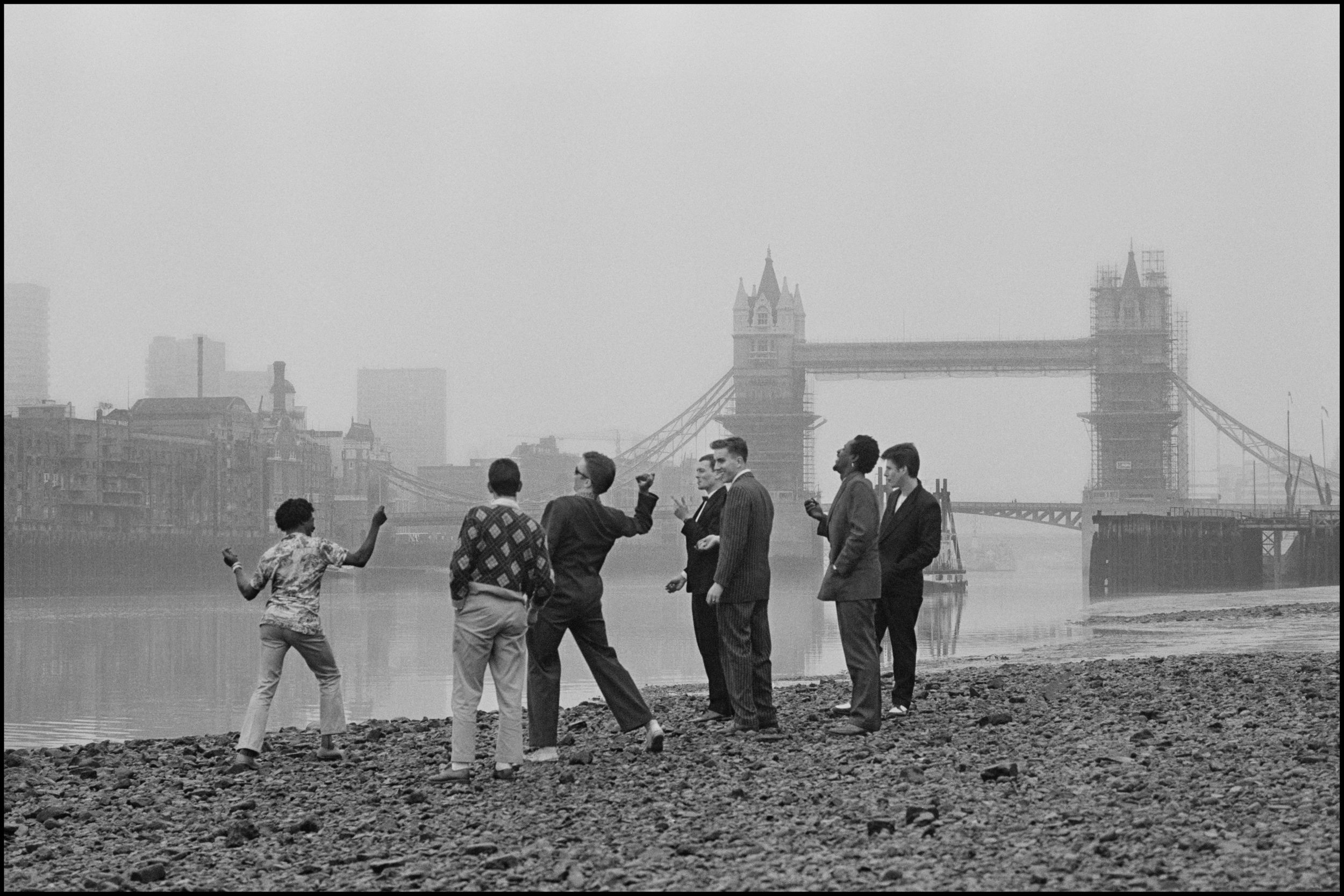
Other notable bands from the Two-Tone era included The Selecter, known for their high-energy tracks like "On My Radio," and The Beat (known as The English Beat in the U.S.), whose fusion of ska and pop produced hits such as "Mirror in the Bathroom." These bands were not only musically innovative but also stood as symbols of unity and multiculturalism in a time of rising racial tensions in Britain.
Two-Tone wasn’t just a musical genre. It was a movement that challenged societal norms, blending sounds and cultures to create something genuinely unique. Its legacy can still be felt in the influence it had on later genres, from Britpop to the ska-punk revival of the 1990s.
While much of the spotlight was on pop, post-punk acts like The Cure carved out their own space, shaping the darker, introspective side of the decade. Their early albums like Seventeen Seconds (1980) and Faith (1981) combined sparse guitar melodies with haunting atmospheres, embodying the angst and existentialism of post-punk. Tracks like "A Forest" showcased their ability to craft moody, hypnotic soundscapes that resonated deeply with listeners seeking an alternative to mainstream trends.
By the mid-80s, The Cure had evolved their sound to include brighter, pop-infused tracks without losing their emotional depth. The Head on the Door (1985) featured hits like "In Between Days" and "Close to Me," blending catchy melodies with introspective lyrics that appealed to a broader audience. This period marked their ascent into global stardom, with frontman Robert Smith's distinctive voice and visual style becoming emblematic of the era.
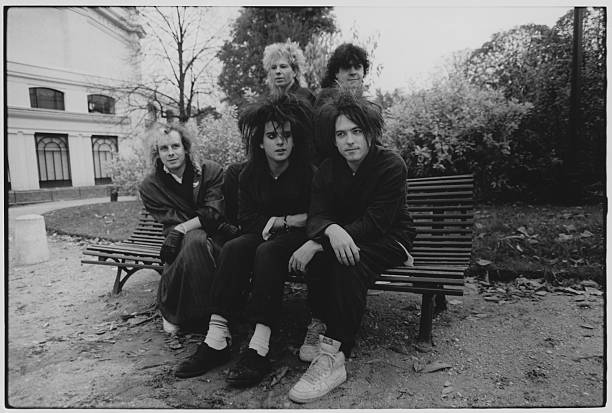
Their 1987 double album Kiss Me, Kiss Me, Kiss Me further expanded their sonic palette, delivering everything from the sultry "Just Like Heaven" to the abrasive "The Kiss." The band’s ability to balance experimentation with accessibility was key to their enduring appeal.
Closing out the decade, Disintegration (1989) solidified The Cure’s reputation as one of the most influential bands of their generation. Tracks like "Lullaby," "Pictures of You," and "Fascination Street" embraced lush, layered production and melancholic themes, leaving an indelible mark on the alternative and shoegaze scenes. The album’s emotional depth and timeless quality continue to resonate, cementing The Cure as pioneers who bridged the gap between post-punk's introspection and alternative rock's expansive ambition.
Former London punks, The Police, had a brief but explosive period at the beginning of the decade where they became the biggest band in the world, riding high on the success of 1983's album Synchronicity. The album was a tour de force, blending rock, reggae, and pop into a sound that defined early 80s music. Hits like "Every Breath You Take," often mistaken as a love song despite its darker undertones, and "King of Pain" showcased the band's ability to craft emotionally resonant yet commercially successful music. "Don't Stand So Close to Me," a chilling tale of forbidden attraction, and "Wrapped Around Your Finger," with its intricate lyrics and atmospheric feel, solidified their reputation as innovative storytellers within the rock genre.

Despite their success, internal tensions among Sting, Andy Summers, and Stewart Copeland led to The Police breaking up in 1986. By then, they had left an indelible mark on the music world, and their departure left a void that other bands sought to fill. As the decade progressed, three bands emerged as contenders for the crown of the world's biggest band. Each brought its own style and energy, continuing the evolution of 80s rock and pop while building on the legacy of bands like The Police.
Queen, U2, and Tears For Fears were three of the most prolific and influential bands of the 1980s, each leaving an indelible mark on the decade’s music landscape. These bands were not only successful in terms of album sales and chart performance, but they also shaped the sound of the 1980s and beyond, influencing countless artists who followed in their wake.
U2's rise to global superstardom didn't happen overnight, and the band's earlier work in the 1980s laid the groundwork for their monumental success with The Joshua Tree. Their 1980 debut album Boy introduced U2’s raw energy, with tracks like "I Will Follow" capturing their youthful intensity and hunger for success. By the time October (1981) arrived, the band had begun to show more depth in their songwriting, particularly in songs like "Gloria" and the title track, which reflected Bono’s growing interest in spiritual and philosophical themes. War (1983) further solidified their place as political and social commentators, with tracks like "Sunday Bloody Sunday" and "New Year's Day" addressing global unrest and personal conflict.
With "The Joshua Tree" (1987), U2 fully embraced a more expansive, atmospheric sound, drawing inspiration from American roots music and the spiritual and political concerns that had pervaded their earlier albums. Songs like "Where the Streets Have No Name" captured the band's yearning for transcendence, while "I Still Haven’t Found What I’m Looking For" and "With or Without You" tackled themes of longing and inner conflict. The album became not just a career milestone, but a cultural touchstone, with its sound and message resonating globally. U2’s evolution throughout the 1980s, from youthful defiance to politically charged anthems to a more introspective and spiritual tone, marked them as one of the most influential bands of the decade, and "The Joshua Tree" remains a defining moment in their career.
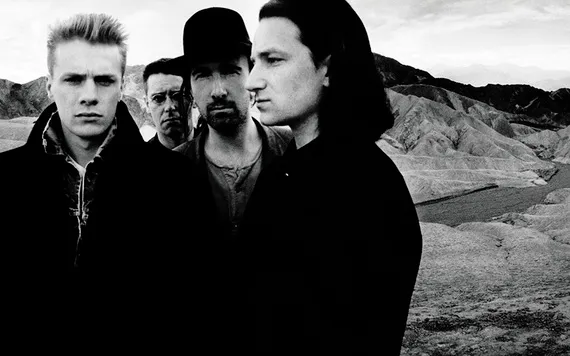
Whilst we are in Ireland, I feel compelled to talk about The Pogues. One of the most unique and influential bands to emerge from the 1980s, blending traditional Irish folk music with punk rock energy.Formed in 1982, the band quickly established themselves with their distinct sound combining the rebellious spirit of punk with the melodies and instruments of traditional Irish folk, creating a fusion that felt both raw and timeless.
Their debut album, Red Roses for Me (1984), marked the beginning of their journey, but it was their second album, Rum, Sodomy & the Lash (1985), that helped them establish a distinctive voice in the music world. The album blended the raw energy of punk with traditional Irish folk, setting the stage for their more ambitious works. With tracks like "The Sick Bed of Cuchulainn" and "The Old Main Drag," the album showcased their knack for vivid storytelling, mixing history, myth, and personal struggles in a way that was both raucous and heartfelt. However, it was If I Should Fall from Grace with God (1988) that truly solidified their place in music history. The album featured their biggest hit, "Fairytale of New York," a Christmas classic that remains a staple of the holiday season to this day. The song, featuring Kirsty MacColl on vocals, was a gritty yet heartwarming duet that captured both the hardships and hopes of two characters struggling in New York City.
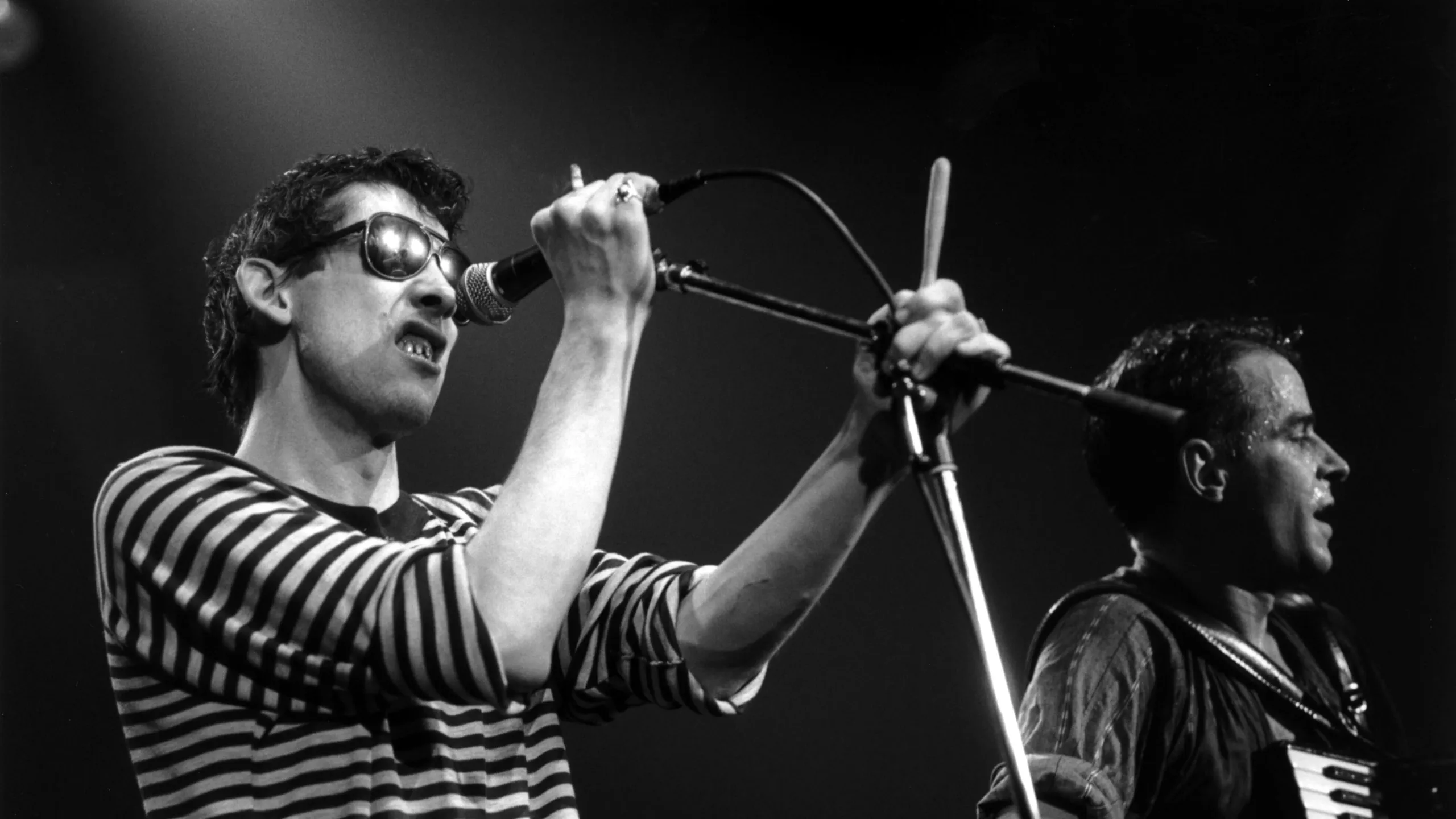
The bands songs are truly timeless, hauntingly beautiful affairs. That tackle a range of subjects from immigration, working class life, hardship, turmoil, racism, violence, yet with a sense of hope and optimism littered throughout. Shane MacGowan is one of the most underrated songwriters of this era. With their unique blend of punk rock and Irish folk traditions, The Pogues played an essential role in shaping the sound of the 1980s, leaving a legacy that continues to influence artists to this day.
Meanwhile, Tears For Fears were one of the most underrated British bands of the 1980s, though their impact was enormous. For a brief period, much like The Police, they were one of the biggest bands in the world. Their 1985 album "Songs From the Big Chair" remains one of the most iconic and important albums of the decade. The record, which featured massive hits like "Shout" and "Everybody Wants to Rule the World", was a perfect fusion of pop, rock, and new wave, driven by emotionally charged lyrics and masterful production. The album encapsulated the essence of the 80s in its combination of synthesizers, big choruses, and socially conscious themes. As a result, Tears For Fears enjoyed a level of success that few British bands could match during that period. In terms of single output, "Songs From the Big Chair" stands toe-to-toe with some of the best British albums ever made, rivaling the likes of The Police or even The Beatles in terms of its sheer quality and cultural impact. Their sound, a unique blend of introspection and accessibility, helped them carve out a space as one of the decade’s defining bands, even if they didn’t always receive the recognition they deserved in the wider pop culture narrative.
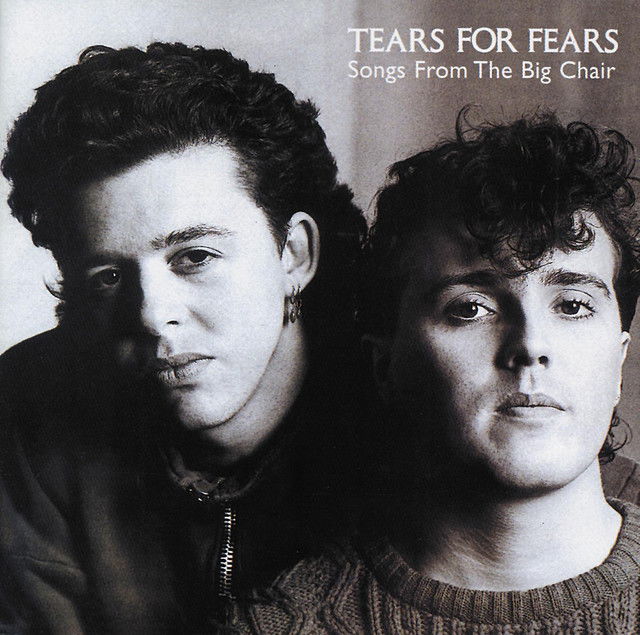
Outside of this record the bands debut "The Hurting" and 1989's "The Seeds of Love" proved that the band had a unique range. With songs like "Mad World", "The Hurting", and "Sowing the Seeds of Love" Tears for Fears really did have a prolific decade.
Before I talk about Queen, it's only right that I talk about the 13th of July, 1985. Live Aid.
Two concerts: one in London at Wembley Stadium and one at John F. Kennedy Stadium in Philadelphia.
The precursor for Live Aid actually happened the year before, when Bob Geldoff and Ultravox' Midge Ure united British and Irish artists who work on a charity single, also in aid of the famine in Ethopia. "Do They Know It's Christmas" released in December 1984, proved the power of music. It helped raise over £8 million (around 25 million today) which was used for famine relief, funding food, medical aid and infrastructure projects on Ethiopia. The song also raised awareness of what was happening, bringing it to the fore front of the public's consciousness.
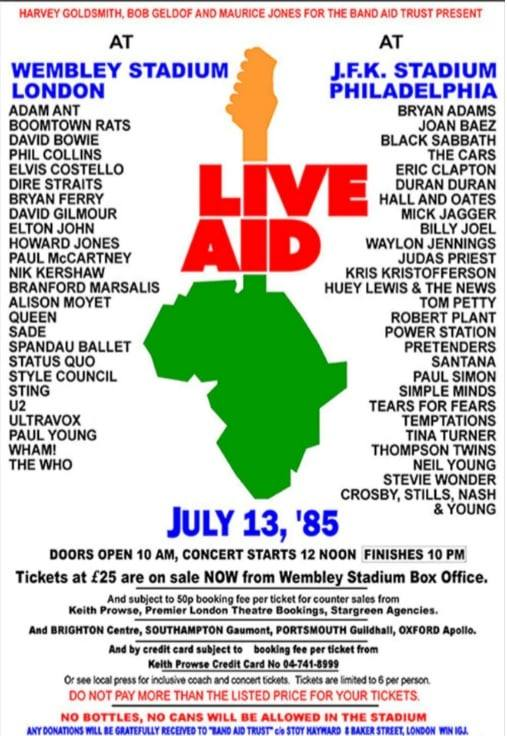
The concerts saw the biggest groups and artists in the world play a benefit gig for the famine in Ethiopia. It was the first time something like this had ever been done, and to top it all, the event was being filmed and broadcast around the world. It became one of the largest satellite link-ups and television broadcasts of all time; an estimated audience of 1.9 billion people across 150 nations watched the live broadcast. Nearly 40 percent of the world’s population. The event was estimated to have raised £150 million for causes related to the famine in Ethiopia.
Queen had hit a rough patch in the 1980s. While they released some strong albums, like The Game, which featured iconic hits such as Another One Bites the Dust, they also produced some less successful work, such as Hot Space. Despite these ups and downs, Queen's collaboration with David Bowie on Under Pressure in 1981 became a defining moment of the decade. Having firmly established themselves in the 1970s with classics like "Bohemian Rhapsody" and "Killer Queen", Queen's musical experimentation in the 80s reflected their desire to evolve. However, these bold shifts in style weren’t always embraced by their long-time fans, and the band's direction was sometimes met with mixed reactions.
By the time of Live Aid in 1985, rumours of a potential breakup were circulating. But at 6:41 pm on July 13, 1985, Queen took the stage at Wembley Stadium and delivered one of the greatest live performances in rock history. Their five-song set, anchored by Freddie Mercury’s electrifying energy and his iconic call-and-response chant of Aaaaaay-o, quickly became legendary. This performance, later dubbed 'The Note Heard Round the World', captivated an audience of 72,000 fans in the stadium and over a billion viewers worldwide. In those 20 minutes, Queen silenced any doubts about their relevance and commitment to their craft. Live Aid became a defining moment in their career, proving that Queen were far from over. In 1986, they followed up with The Magic Tour, which included two unforgettable nights at Wembley. Live Aid solidified Queen’s place in music history, marking one of the most important and triumphant moments of their career.
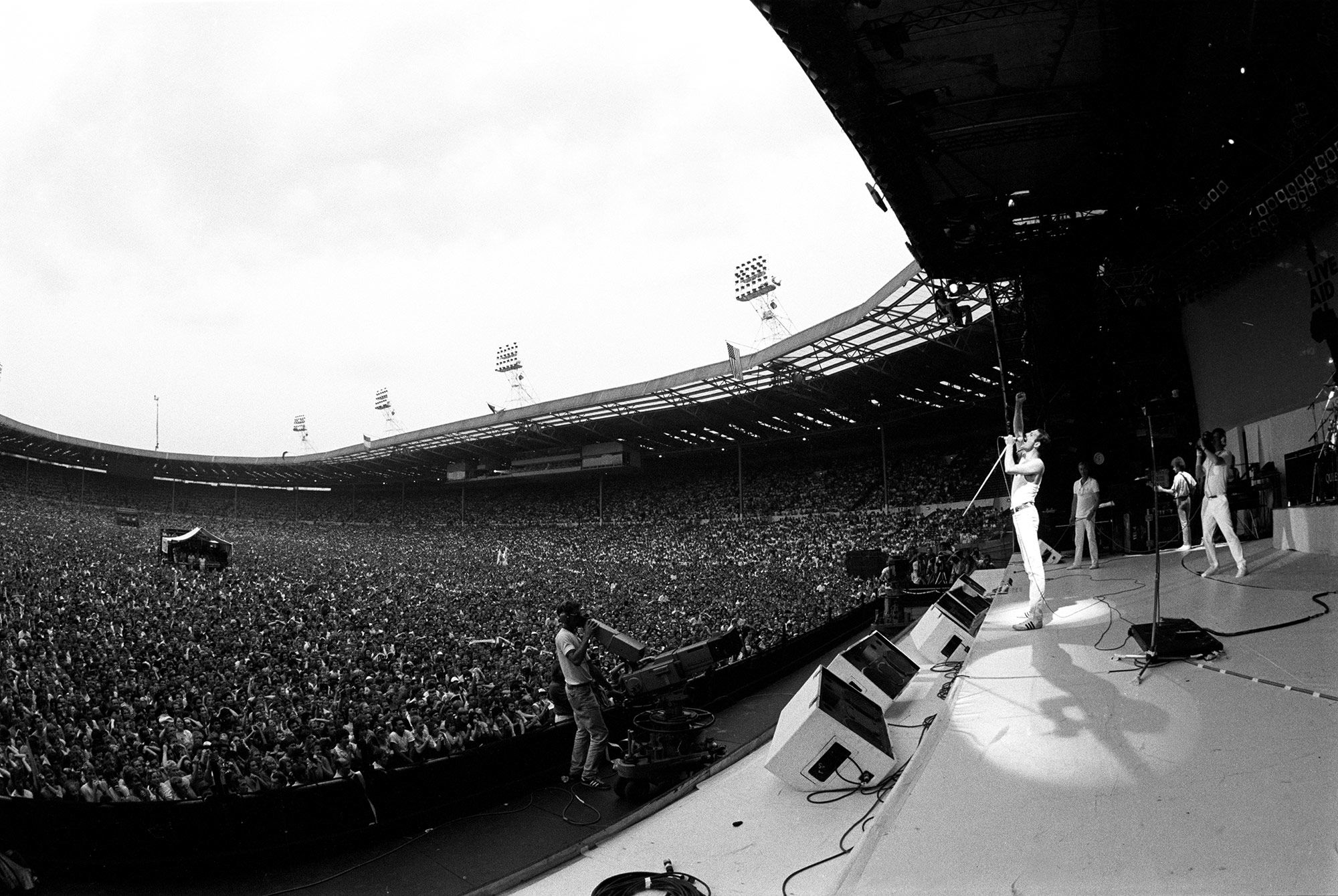
Among the other artists who played Live Aid, U2 seized the opportunity to introduce themselves to a global audience in a way that would solidify their place as one of the biggest bands of the era. Bono’s performance of Bad remains one of the most memorable moments of the event. The band played the track with such raw emotion and intensity that it left an indelible mark on everyone watching. During the 12-minute rendition, Bono famously leaped off the stage into the crowd, bringing the audience into the performance in an electrifying moment of connection. It was a display of the band's ability to engage with their audience on a deeply personal level. It marked the moment U2 fully arrived on the global stage, making it one of the standout performances of Live Aid and a defining moment in the band’s career.
Dire Straits to played Live Aid, riding high on the success of 1985's "Brothers in Arms", the performance saw them play two songs, "Money for Nothing" with Sting, who sung backing vocals on the album version and their 1978 classic "Sultans of Swing".
However, the band could not hang around and soak up the rest of the acts. The band were booked in at another gig, across the road. A tour date at Wembley Arena, to a sold out crowd of die-hard Dire Straits fans. It was one of many sell out shows at the venue, and was testament to how good the band were. The album had marked a turning point not only for the band but also music in general. It was one of the first albums to be fully recorded and mixed digitally, making it perfectly suited to the new music format, the compact disc (CD). By the end of the decade, Brothers in Arms had sold more than 30 million copies globally, with a significant portion of those sales coming from CD sales. This was a turning point for CD sales, proving that the new format could compete with and eventually surpass vinyl in terms of commercial success.
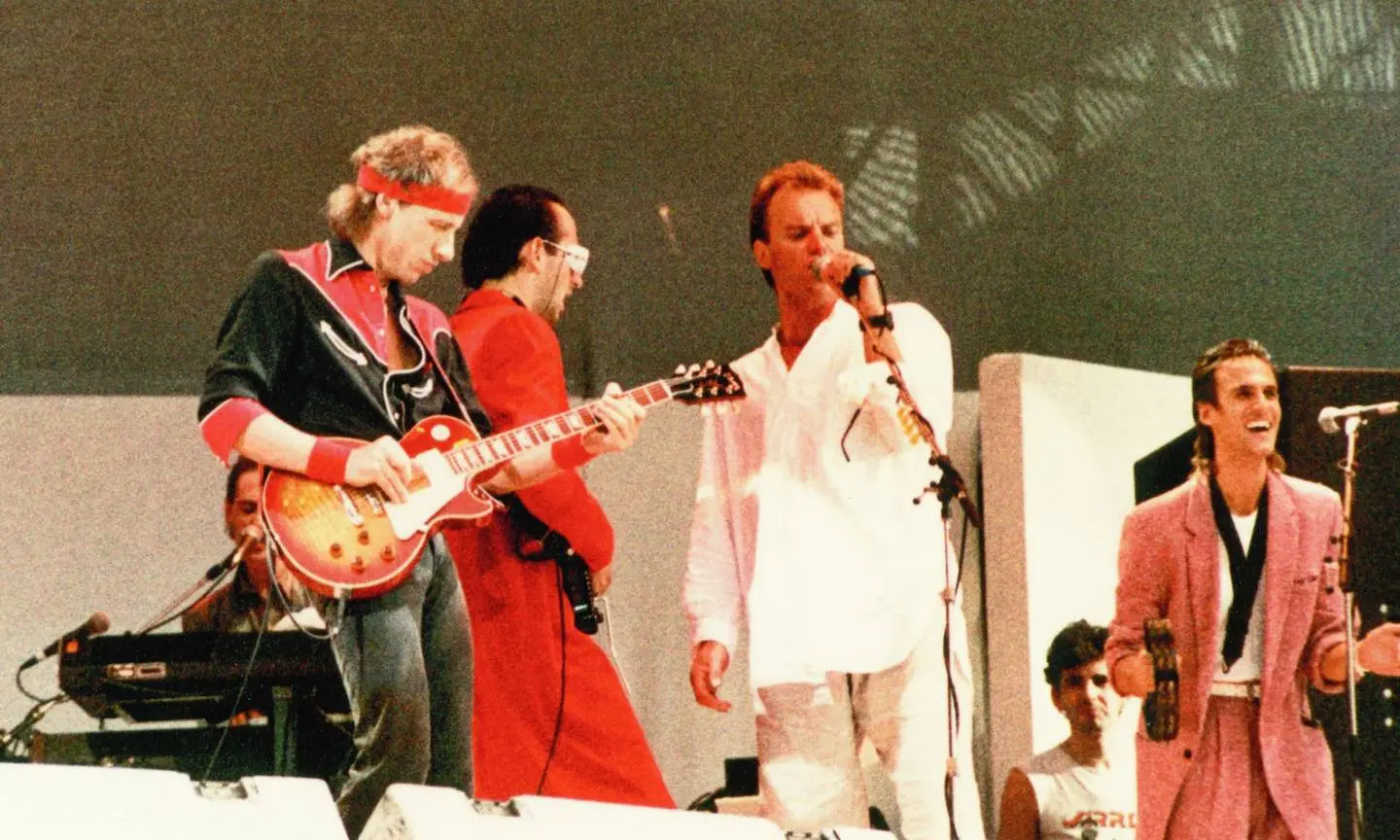
David Bowie, riding high on the success of 1983’s Let’s Dance, followed Queen with a stunning performance that further solidified his status as one of the greatest live performers of all time. His rendition of the 1977 classic Heroes became an unforgettable moment of Live Aid, with the crowd joining him in a rousing singalong. The iconic lines, "We can be heroes, just for one day," were echoed by a quarter of the world’s population, creating an electrifying atmosphere that transcended the stadium.
For Bowie, this brief but brilliant set was arguably the high point of the 1980s. It captured the spirit of his career. His continuous reinvention and his unique ability to engage with fans on a deeply personal level. However, after Live Aid, Bowie’s trajectory would take a different direction. He embarked on the ambitious Glass Spider tour, which, despite its elaborate staging and choreography, received mixed reviews. This era of Bowie’s career would also see the release of the 1987 album Never Let Me Down, which, though commercially successful, did not resonate as deeply with critics or long-time fans. In 1989, he formed the band Tin Machine, an experimental project that marked another shift in his musical approach. While Tin Machine garnered some attention, it was a departure from the mainstream success of his previous work, and the collaboration received mixed reactions.

On the other side of the Atlantic, Duran Duran played to the Philadelphia crowd, showcasing their unique brand of synth-pop to American audiences. Phil Collins pulled off the impressive feat of performing at both Wembley and John F. Kennedy Stadium, cementing his place as arguably the biggest solo artist of the decade. Elton John delivered a collection of his greatest hits, solidifying his status as one of the most enduring stars in music.
Live Aid proved that the old guard of rock and pop stars from previous decades were still around—and bigger than ever. It also became the blueprint for future global charity concerts, and it was clear this was just the beginning of such monumental musical events.
One British band had a huge decade in the 1980s. Genesis had formed in 1967 at Charterhouse School, a prestigious public school in Surrey. The band were led by the enigmatic Peter Gabriel. In their early years the band were defined by an intricate progressive approach to music. Albums such as Foxtrot (1972) and Selling England by the Pound (1973) established Genesis as leading figures of the progressive rock movement. Tracks like “Supper’s Ready” showcased their penchant for epic storytelling, while “I Know What I Like (In Your Wardrobe)” hinted at their ability to craft accessible, quirky songs within their ambitious compositions.
Gabriel’s departure in 1975 could have marked the end of the band’s dominance, but instead, it set them on a new path. Phil Collins, originally the band’s drummer, stepped into the role of lead vocalist, bringing a new dynamic to their sound.
By the 1980s, Genesis had undergone a dramatic transformation, embracing a more pop-oriented sound that propelled them to superstardom. Albums like Duke (1980) and Abacab (1981) saw the band experimenting with more concise, radio-friendly tracks, while still retaining some of the complexity that marked their earlier work. Their commercial peak came with Invisible Touch (1986), a record filled with chart-topping hits such as “Invisible Touch,” “Land of Confusion,” and “Throwing It All Away.” This era saw Genesis sell out stadiums worldwide, becoming one of the most successful bands of the decade.
A year after Queen had played the legendary venue. Genesis too played Wembley Stadium selling out four nights at the London venue.

While Genesis flourished as a group, Phil Collins and Peter Gabriel also achieved remarkable success in their solo careers. Collins became one of the most successful solo artists of the decade alongside George Michael. With hits like “In the Air Tonight,” “Against All Odds,” and “Another Day in Paradise.” His pop sensibilities and emotive voice won him fans across the globe, and his solo career paralleled Genesis’ meteoric rise during this period.
Gabriel meanwhile would establish him as one of the most innovative and influential artists of his generation. His music seamlessly combined elements of rock, pop, and world music, underpinned by his distinctive voice and commitment to artistic experimentation.
Gabriel’s self-titled debut album, often referred to as Car (1977), introduced audiences to his unique vision. Featuring the hit single “Solsbury Hill,” a deeply personal song reflecting on his decision to leave Genesis, the album showcased his ability to craft introspective and evocative music. His second album, Scratch (1978), continued to explore new sounds, but it was his third self-titled album, Melt (1980), that marked a turning point. Melt featured the politically charged “Biko,” a tribute to South African anti-apartheid activist Steve Biko, and “Games Without Frontiers,” a commentary on international politics.
Gabriel’s fourth album, Security (1982), cemented his reputation as a pioneer of world music. Songs like “Shock the Monkey” combined cutting-edge electronic production with primal rhythms, a hallmark of his work. During this period, Gabriel founded Real World Records, a label dedicated to promoting global artists and world music. His interest in diverse musical traditions became a defining feature of his career, as he collaborated with musicians from around the world and incorporated their sounds into his own music.
His fifth studio album, So (1986), brought Gabriel unprecedented commercial success. The album included some of his most iconic tracks, including “Sledgehammer,” a funky, horn-driven hit accompanied by a ground breaking music video that remains one of the most celebrated in the medium’s history. Other highlights included “Don’t Give Up,” a poignant duet with Kate Bush about resilience and hope, and “In Your Eyes,” an emotionally stirring ballad that became a staple of Gabriel’s live performances. So reached multi-platinum status and solidified Gabriel’s place as a major figure in pop music.
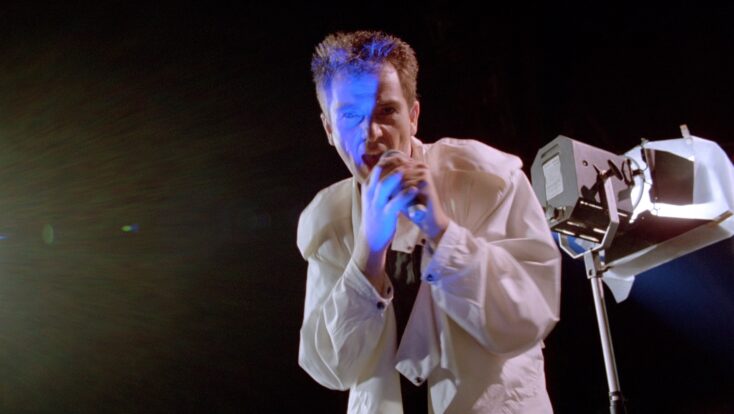
Kate Bush had reinforced herself as one of the most important artists of the 1980s. "Hounds of Love", released in 1985, is widely regarded as her masterpiece and one of the most influential albums of the 1980s. The album marked a significant shift in both her sound and her approach to music. Drawing on a combination of progressive rock, art pop, and electronic music. With songs like "Cloudbusting" a song that blends poetic lyricism with deeply cinematic imagery. The track tells the story of Kate Bush's childhood experiences, inspired by the relationship between psychologist Wilhelm Reich and his son Peter. Reich, who was known for his controversial theories on human energy, spent time experimenting with a machine he believed could manipulate the weather. Bush, in her song, weaves a narrative about her father's struggles and the complex bond between them. The lush orchestration, combined with the emotional weight of the lyrics, creates a haunting atmosphere.
The albums title track "Hounds of Love" has become Bush' most iconic song, with it's driving rhythm and catchy melodies hide an undercurrent of tension, reflecting the album’s exploration of complex emotions. The title track captures both a sense of liberation and a subtle anxiety, with Bush exploring the fear of vulnerability, the longing for emotional connection, and the complexities of love. The song’s upbeat tempo and catchy hook contrasted with the deeper, more experimental moments of the album, showcasing Bush’s ability to blend pop sensibilities with introspective themes. The track's influence was further solidified when The Futureheads covered "Hounds of Love" in 2004, delivering a stripped-down, frantic version that further established the song’s enduring appeal across various genres.
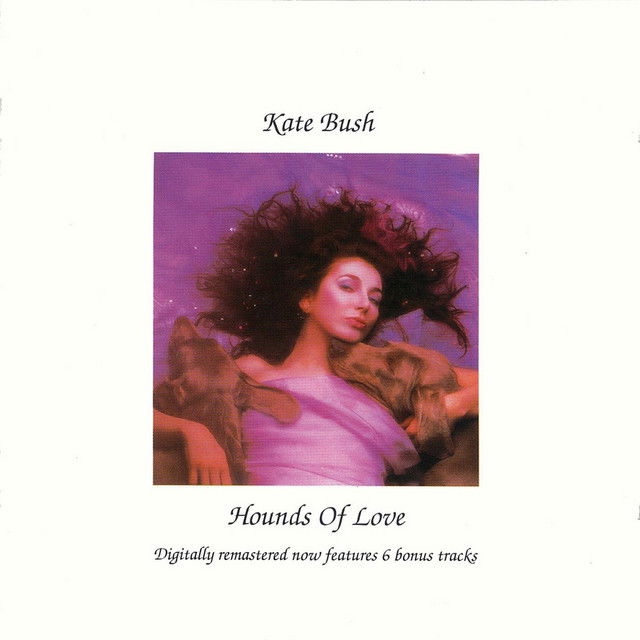
Perhaps the most enduring song from Hounds of Love is "Running Up That Hill (A Deal with God)," which has had a profound cultural impact, especially with its resurgence thanks to Stranger Things in 2022. The song actually reached Number One in the UK in 2022. Due to the power of Stranger Things. It’s a track that has become woven into the fabric of pop culture, and its journey from a 1985 release to a chart-topping hit in 2022 is a testament to Bush’s enduring artistic legacy.
Across the pond. R.E.M. emerged as one of the most influential and innovative bands of the 1980s, redefining alternative rock and becoming pioneers of the indie music scene. Formed in Athens, Georgia, in 1980, the band’s sound was shaped by an eclectic mix of influences, including post-punk, folk, and jangle pop, creating a distinct style that set them apart from the mainstream. At the heart of R.E.M.’s early success was their mysterious, yet emotionally resonant sound, led by Michael Stipe’s cryptic lyrics and distinctive voice.
With a collection of brilliant songs including he infectious anthem "The One I Love" and the politically charged "It's the End of the World as We Know It (And I Feel Fine),"and the jangly "Radio Free Europe" the band made waves in America. It was in 1988 with "Green" that the band made a significant shift in their sound. With songs like "Orange Crush" one of the bands most politically charged songs. It perfectly combined jangle pop, folk rock, and anthemic rock captured the essence of the late 80s indie scene but was more accessible and radio-friendly than anything the band had done before.
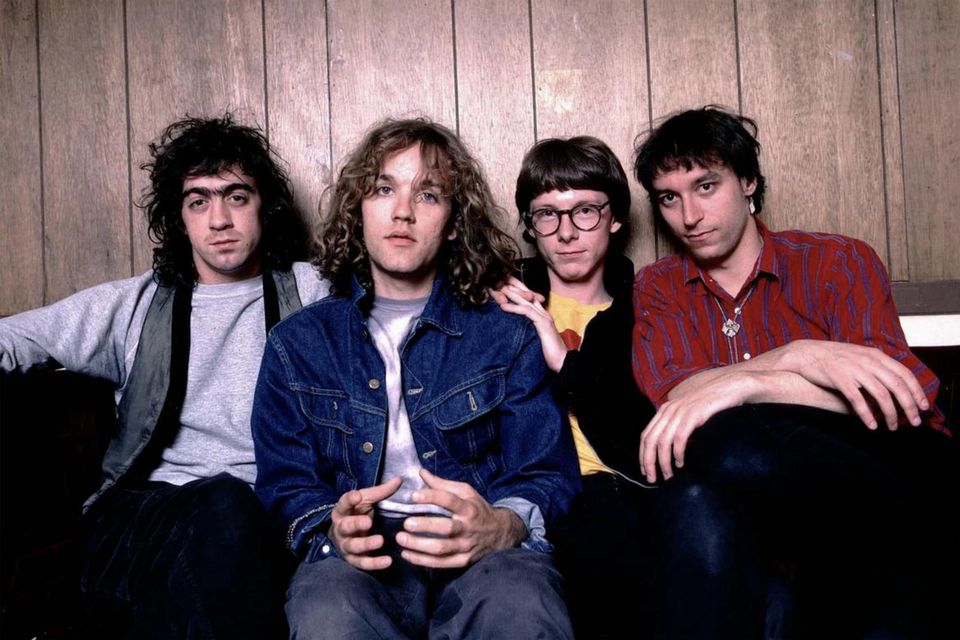
As R.E.M. transitioned from the 1980s into the 1990s, their influence continued to grow, culminating in their massive success with "Out of Time" (1991) and Automatic for the People (1992). "Out of Time" featured the iconic hit "Losing My Religion", a song that propelled them into global stardom with its haunting mandolin riff and emotionally charged lyrics. The album also included the upbeat "Shiny Happy People" one of the bands most universally appealing songs.
Just a year later, Automatic for the People followed with its own series of anthems, including the universally relatable "Everybody Hurts," which became a comforting anthem for listeners. The album also produced the powerful "Man on the Moon," a tribute to comedian Andy Kaufman that became a defining track of the band’s catalog. Both albums catapulted R.E.M. from an alternative act to one of the most influential bands of the decade, blending introspective lyrics with emotionally resonant melodies.
Prince would be another of America's poster boys of the 1980s. Emerging in the late 1970s, he swiftly became one of the most innovative and influential artists of the 1980s, blending funk, R&B, rock, pop, and new wave into his own unique sound.
The 1980s saw Prince release a series of groundbreaking albums that would go on to define his legacy. Dirty Mind (1980) introduced his distinctive sound and fearless, often explicit lyrics, blending funk, rock, and new wave. It was a bold declaration of his ability to cross musical boundaries, but it was 1999 (1982) that truly put him in the mainstream spotlight. With songs like "Little Red Corvette" and "1999," the album’s blend of pop sensibilities, electronic funk, and deeply personal lyrics garnered wide commercial success and critical acclaim. "1999" became an anthem for a generation, capturing both the excesses and anxieties of the time.
But it was Purple Rain (1984) that elevated Prince to an unprecedented level of fame. Not only did the album give the world some of his most iconic tracks ("When Doves Cry," "Let's Go Crazy," "Purple Rain"), but it also marked his foray into film. The accompanying movie of the same name cemented his status as a multifaceted artist. The album was both a critical and commercial success, winning multiple Grammy Awards and cementing Prince as a generational talent.
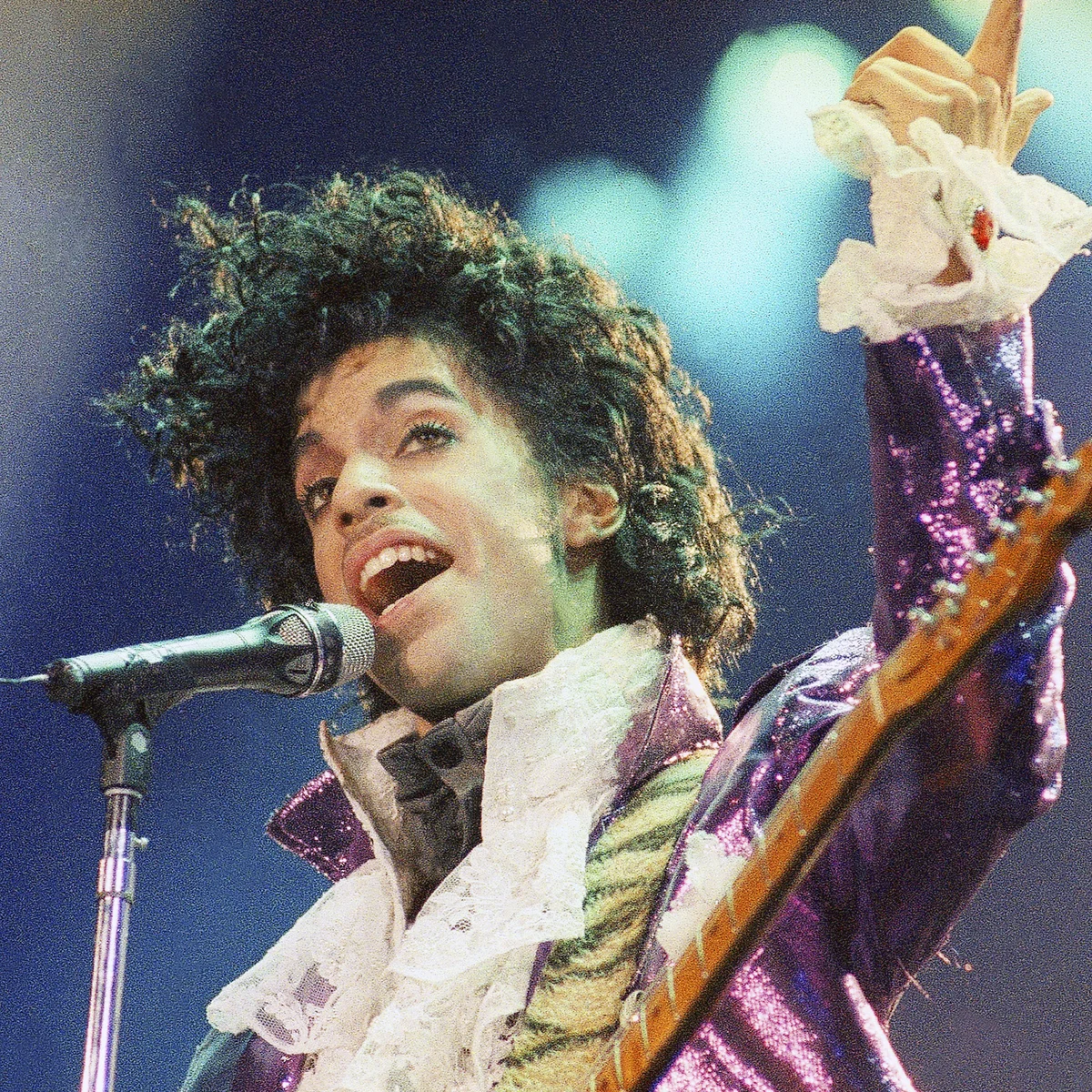
Later in the decade, Prince embraced a more laid-back, pop-infused sound with tracks like "Raspberry Beret," which carried a nostalgic, retro vibe. The song tells the story of a young love centered around a girl with a raspberry beret, a symbol of youth and innocence. Its lyrics paint a vivid picture of small-town life and romantic longing, all set to an infectious groove that captures the essence of carefree youth.
Then, in 1987, came "Sign o' the Times," one of Prince's most iconic and critically acclaimed songs. This track marked a sharp departure from his previous, more elaborate productions, showcasing a minimalist sound dominated by drum machines, synthesizers, and a subtle bassline. It was a bold, experimental shift that set the stage for his artistic evolution.
Lyrically, "Sign o' the Times" reflected the disillusionment and anxiety of the 1980s, addressing themes of political unrest, social decay, and personal crisis. With references to drug addiction, poverty, and the AIDS epidemic, it captured the growing unease of the era. Despite its heavy subject matter, the song was delivered with an infectious energy, blending funk, rock, and new wave influences, making it a haunting yet captivating anthem for a turbulent time.
Throughout the 80s, Prince was also known for his enigmatic persona, self-production, and unparalleled musicianship. His ability to write, produce, and perform virtually every instrument on his albums made him a true one-man band, setting him apart from many of his peers. His 80s output defined the era, influencing countless artists across genres and leaving an indelible mark on pop, funk, and rock music.
It wasn't just British and American bands dominating the 1980s. Emerging from Sydney, Australia, INXS became one of the most iconic bands of the 1980s, blending rock, new wave, and funk into a distinctive sound that captivated global audiences. Fronted by the charismatic Michael Hutchence, whose sultry vocals and magnetic stage presence became a hallmark of their identity, the band developed a reputation for crafting infectious, danceable rock with a sharp edge.
INXS reached the peak of their success with Kick (1987), a landmark album that became a defining moment of 1980s music. "Kick" spawned a series of international hits, including “Need You Tonight,” “New Sensation,” “Devil Inside,” and “Never Tear Us Apart.” The album blended rock, pop, and funk with an effortless cool, while Hutchence’s seductive charisma elevated their status to that of superstars. Kick achieved multi-platinum status in numerous countries and cemented INXS’s place as one of the most successful bands of the decade.
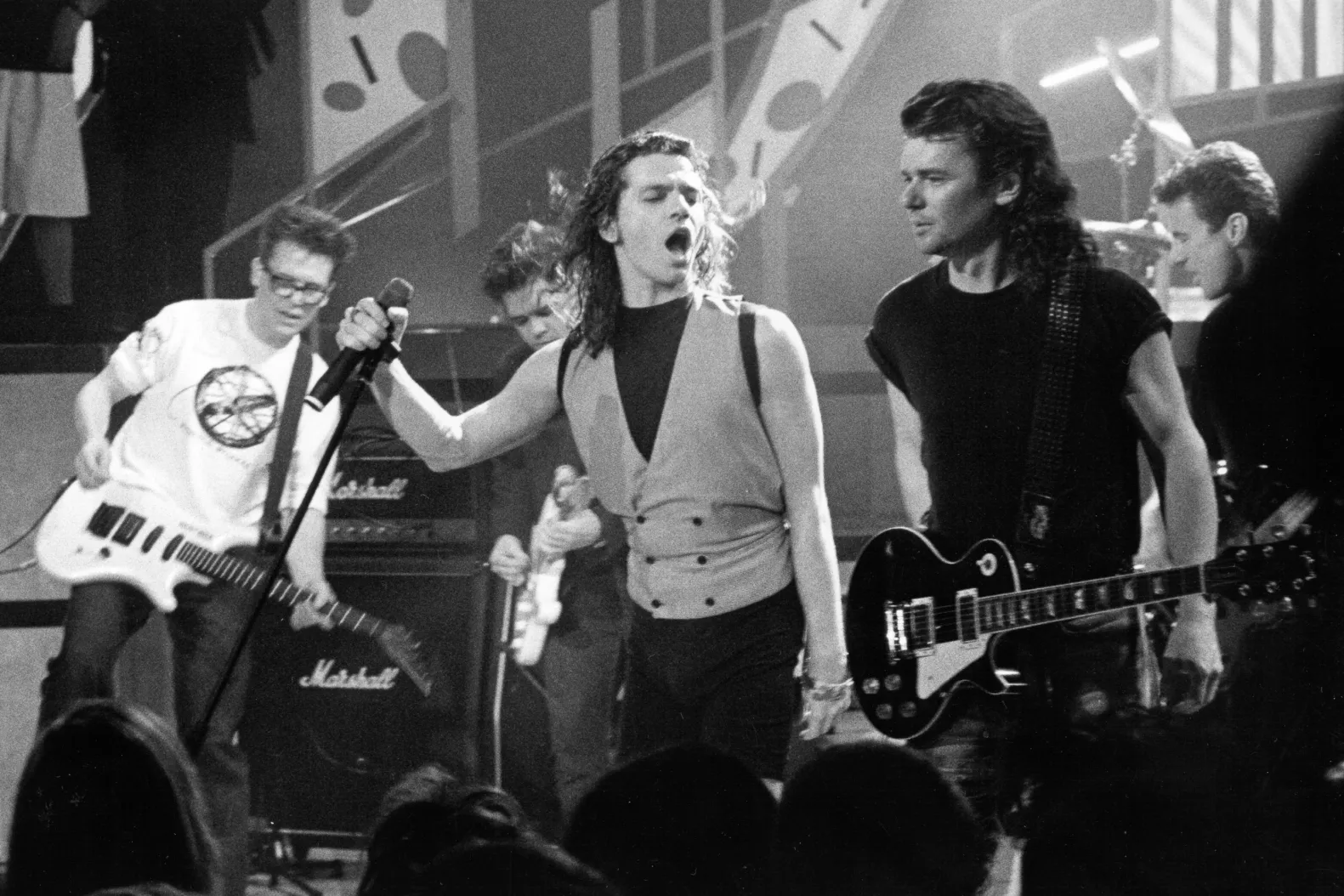
The band had crafted some of the very best songs of the decade, including "Need You Tonight" which topped the U.S. Billboard Hot 100 and "“Never Tear Us Apart”: A sweeping ballad with orchestral strings, this song displayed the band’s emotional depth and remains one of their most beloved tracks. As a band they were brilliant musicians with one of the most unique and charismatic front men, the world has ever seen.
Wall's Come Tumbling Down- The 80s Part 3
The 1980s was a decade of political change, marked by the election of Margaret Thatcher as the UK’s Prime Minister in 1979. She remained in power throughout the decade, becoming one of the most polarizing figures in British history. The emergence of 'Thatcherism', combined with high unemployment and widespread poverty, fuelled a wave of politically charged music.
In the early 1980s, Weller, alongside his bandmates in The Jam, became one of the most vocal critics of Thatcher’s government, using his platform to express anger and disillusionment with the country’s economic policies, social divisions, and the erosion of working-class communities.
So many of the bands songs, tackle people's disillusionment of the society they were living in. “Going Underground” (1980): An iconic anthem of defiance, this track critiques political apathy and the state of British society, reflecting the anger and frustration of working-class youth under Thatcher’s government. “Town Called Malice” (1982): One of their most popular songs, it critiques the decline of working-class communities and the despair caused by economic and social stagnation. Its upbeat melody contrasts with the dark themes. Even with album tracks like "Smithers Jones" , "Just Who is the 5'O Clock Hero?" and “Strange Town” the band examined the perils people were facing, alienation from society, loss of jobs, money struggles whilst still trying to celebrate the working class heroes.
The Jam’s ability to blend energetic punk with thoughtful social commentary, combined with Weller’s unique lyrical style, made them one of the most influential bands of their time. They were able to tap into the frustrations of the working class, while also offering a sense of hope through their music. This is shown in their success, in five short years, the band released 18 singles and 4 of them went to Number One and 9 hit the Top 10.
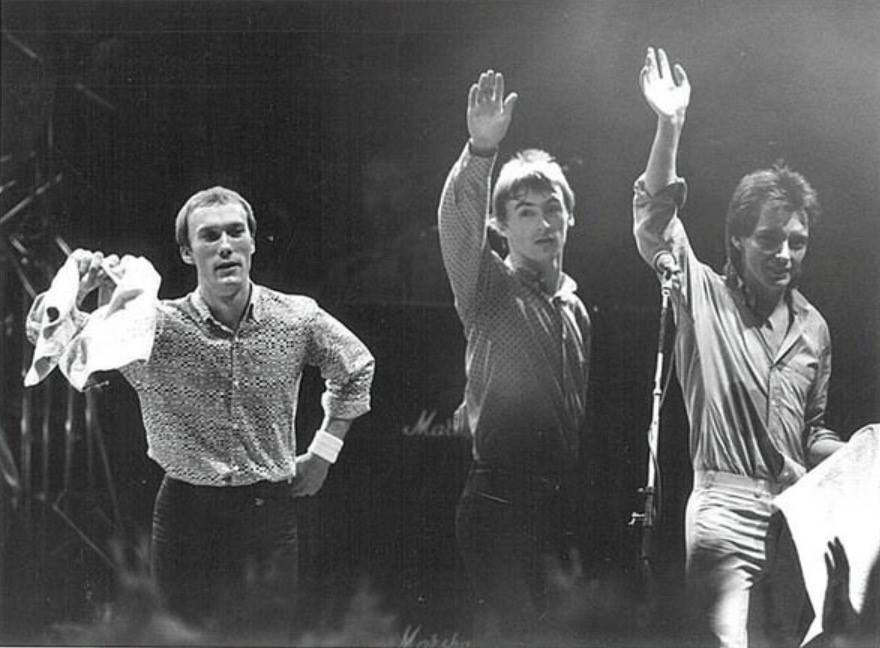
After the breakup of The Jam in 1982, Weller formed The Style Council, a band that further expanded his political and social commentary beyond the rock genre. The Style Council incorporated elements of soul, jazz, and funk, creating a more sophisticated and diverse sound while still maintaining a strong focus on issues of social and economic injustice.
With songs like “Walls Come Tumbling Down” (1985): As the title suggests, this track was a metaphor for the collapse of oppressive systems. It is one of Weller's most direct calls for revolution, urging people to break down societal barriers and fight for change.
Paul Weller’s role as the voice of political and social unrest in the 1980s was undeniable. As frontman of The Jam and later The Style Council, Weller became the face of a musical movement that aligned itself with the frustrations and struggles of the working class. His ability to blend political commentary with popular music made him a significant figure in both the music and cultural landscape of the time, particularly during the era of Margaret Thatcher’s Conservative government.
In addition to his music, Weller became actively involved in Red Wedge, a collective of musicians fronted by Billy Bragg and featuring artists such as Kirsty MacColl and The The. Red Wedge was established to rally young voters and campaign against Thatcher’s government in the lead-up to the 1987 general election. Their mission was clear: to inspire change and help oust Thatcher from power. While Red Wedge ultimately did not achieve its goal of removing Thatcher, it played a significant role in uniting politically conscious artists and raising awareness about the social issues of the time.
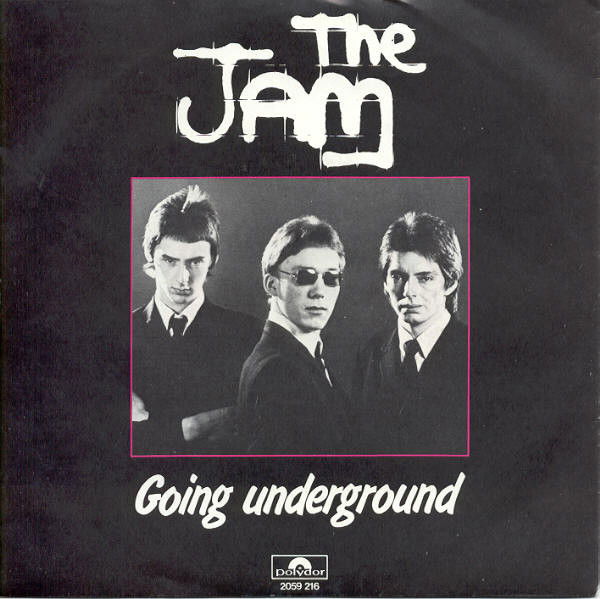
The Specials perfectly captured the state of the UK in the early 1980s with their iconic track 'Ghost Town'. The haunting nature of the melody was deliberate, designed to evoke a sense of impending doom that mirrored the bleak atmosphere of the time. The country was gripped by high unemployment, poverty, and widespread social unrest, and 'Ghost Town' became the soundtrack of this turmoil.
The line “Government leaving the youth on the shelf” is particularly poignant, highlighting the frustration and disillusionment of a generation that felt abandoned. With no opportunities and little hope for the future, many young people saw unrest and violence as the only way to make their voices heard. It seemed as though this eruption of frustration was the only method to attract the attention of those in power.
'Ghost Town' remains a powerful reminder of the struggles of that era, a timeless piece of social commentary that still resonates today.
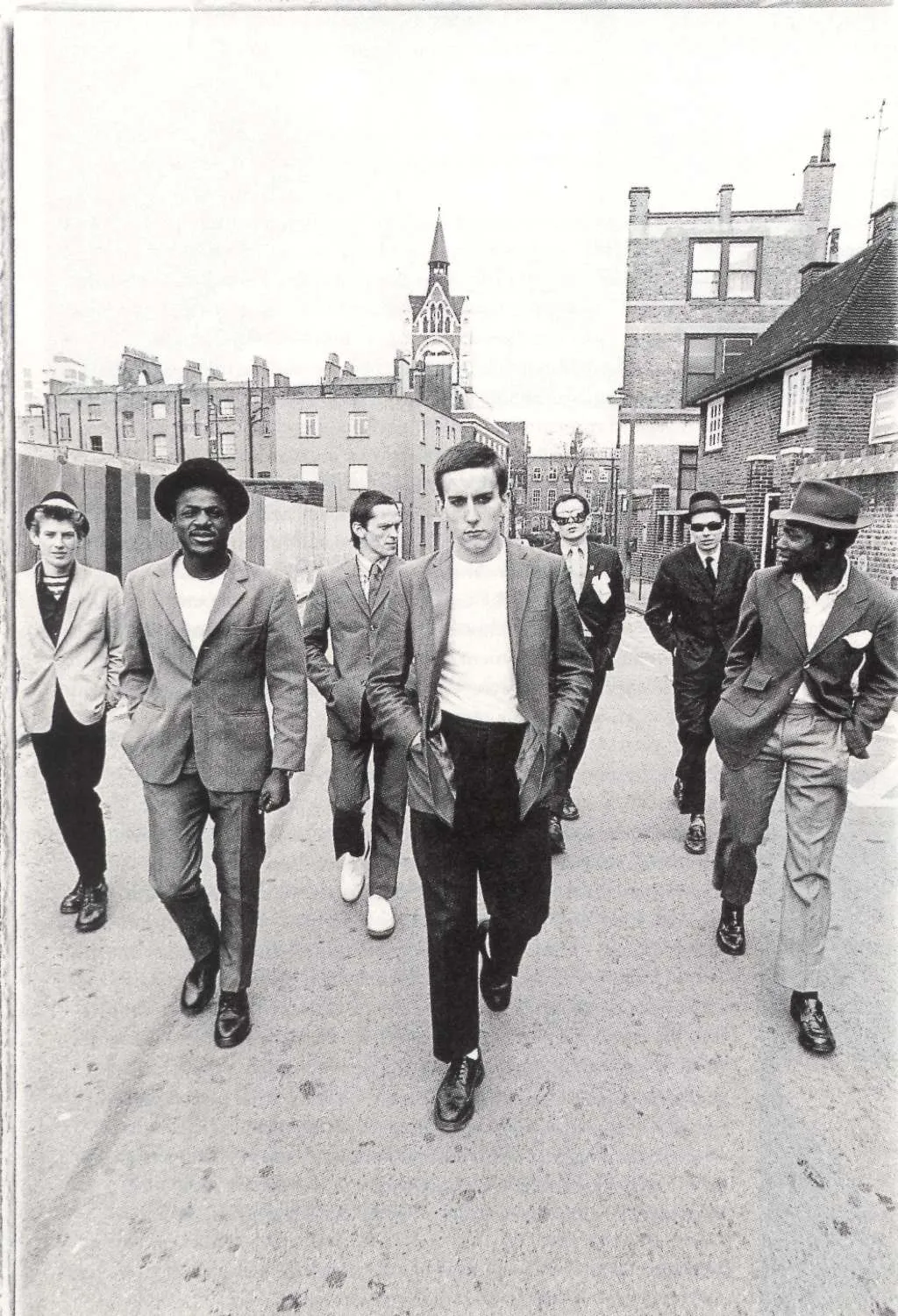
Written in 1981, Ghost Town highlighted the deteriorating conditions facing the British working class throughout the 1980s. From the devastating 1984 Miners’ Strike to the heart breaking events of 1989, when Liverpool fans were wrongly blamed by Margaret Thatcher’s government and the right-wing media for the deaths of 97 innocent people at Hillsborough, the decade was defined by hardship and division. Discontent simmered across the nation, fuelling a collective desire for change.
This growing unrest was mirrored in the music and culture of the time. Paul Weller’s politically charged songs gave voice to the frustrations of the disillusioned, while countercultures such as the Madchester scene and the emerging rave movement offered young people outlets for rebellion and hope. As they sought to carve out their own spaces in a society that seemed indifferent to their struggles, music, culture, and activism became powerful forms of resistance. It wasn't just in the UK where people had, had enough though. Across Europe the youth started to want a change.
One particularly poignant moment occurred in 1987 in front of the Reichstag in West Berlin. David Bowie, on his Glass Spider Tour, performed Heroes, a song he had written in the city a decade earlier. In a gesture of solidarity, he addressed the people of East Berlin, saying, “We send our best wishes to all of our friends who are on the other side of the wall.” His words sparked a mass movement, with over 200 East Berliners rushing towards the Berlin Wall, resulting in arrests and beatings. Demonstrations broke out, adding to the growing acts of civil unrest that would eventually lead to the fall of the Wall in 1989. Some reports suggest that the speakers were positioned so the performance could be heard in East Berlin, and that the emotional power of Bowie’s performance played a small but significant part in the momentum towards the Wall’s collapse.
Globally, the 1980s also saw signs of progress and transformation. In 1989, the fall of communism across Eastern Europe culminated in the collapse of the Berlin Wall, a historic moment that symbolized the triumph of the human spirit and the will of the people. This monumental event sparked hope for a fractured world, marking the end of an era.
For many, the fall of the Wall represented not just the end of one chapter, but the dawn of another. The 1990s would follow, bringing with it a new wave of possibilities and change.
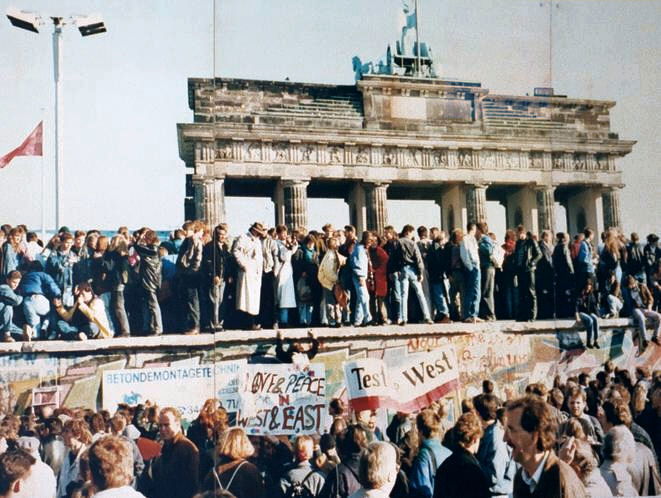
The fall of the Berlin Wall marked the start of a new era for the world and the end of totalitarian rule in Eastern Europe. The Iron Curtain began to crumble, giving way to the birth of the modern world as we know it. Not only was it the most significant event of the 1980s, but it also stands as one of the most important moments in modern history.
In the words of The Stone Roses: “The past was yours, the future’s mine.”
Load Up on Guns Bring Your Friends- The 90s Part 1
With that title, you might expect me to transport you across the pond to Seattle to talk about Grunge and don’t worry, we’ll get there. But first, let’s stay in England and journey somewhere far less glamorous than the Pacific Northwest. Welcome to Widnes, and the 27th of May, 1990.
The Stone Roses played Spike Island, marking the pinnacle of the Madchester movement as it crossed over into the 90s. Riding high on the success of their self-titled debut album and the single “One Love,” the band performed for 30,000 fans at a chemical plant on the banks of the River Mersey. They wanted to embrace the counterculture of rave and challenge traditional rock 'n' roll norms, so Spike Island became their venue of choice.
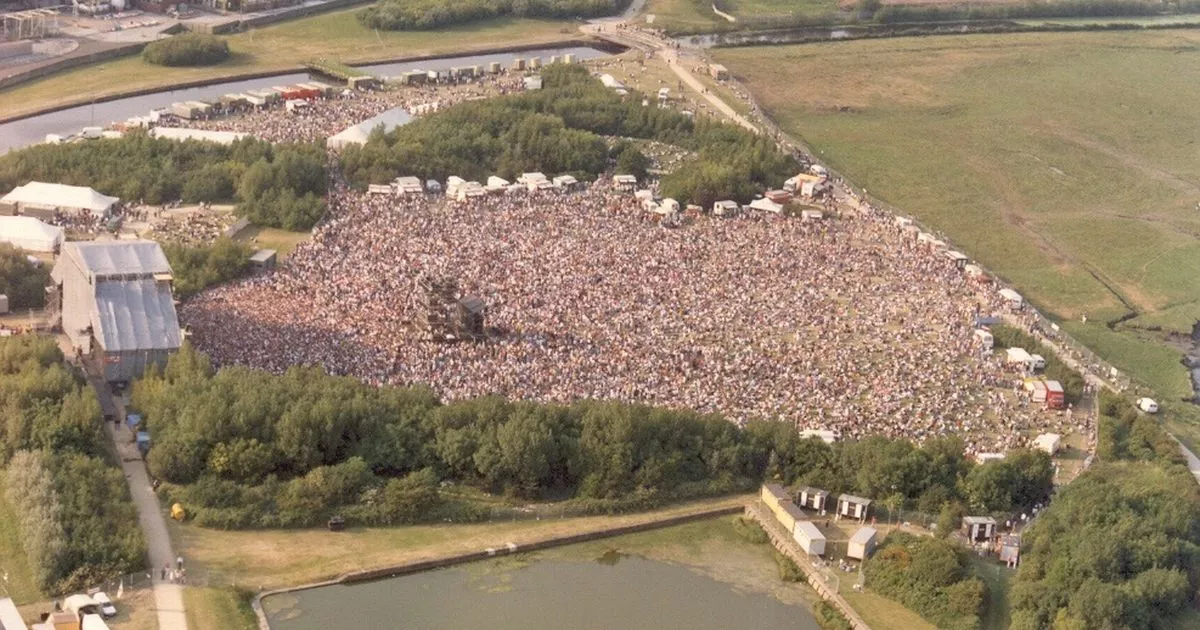
The gig itself wasn’t particularly remarkable. Many attendees complained of poor sound quality, lacklustre support acts, and inadequate food and drink facilities. Yet the cultural significance of Spike Island cannot be overstated. The event symbolized a unification of subcultures: indie kids, ravers, goths. Everyone was welcome at this celebration. It was where rock met rave, and they shared a euphoric group hug on an industrial island between Manchester and Liverpool.
The Stone Roses were a band with self belief like no one else before. A bridge between the past and the future, between ’60s psychedelia and the burgeoning acid house scene. They had arrived at the fag end of Thatcherism, the vanguard of a new sound, a new style and, in ecstasy, a new drug. Ian Brown spoke of killing the Queen and becoming bigger than The Beatles, and for a brief moment both seemed within the realms of possibility. However, we now know it was not meant to be.
Liverpool was also home to The La's, a band that released one of the greatest albums of the 90s—and then vanished without releasing anything else. Their self-titled debut album, released in October 1990, blended influences from previous decades, from The Beatles to Burt Bacharach, to create a stunning collection of melodic guitar pop. However, the album's release was marred by internal turmoil and disputes with record producers, leaving reclusive frontman Lee Mavers openly disowning the final product. Despite this, songs like “Looking Glass” and the timeless “There She Goes” became touchstones for a new wave of British guitar music, offering a glimpse of what was to come.
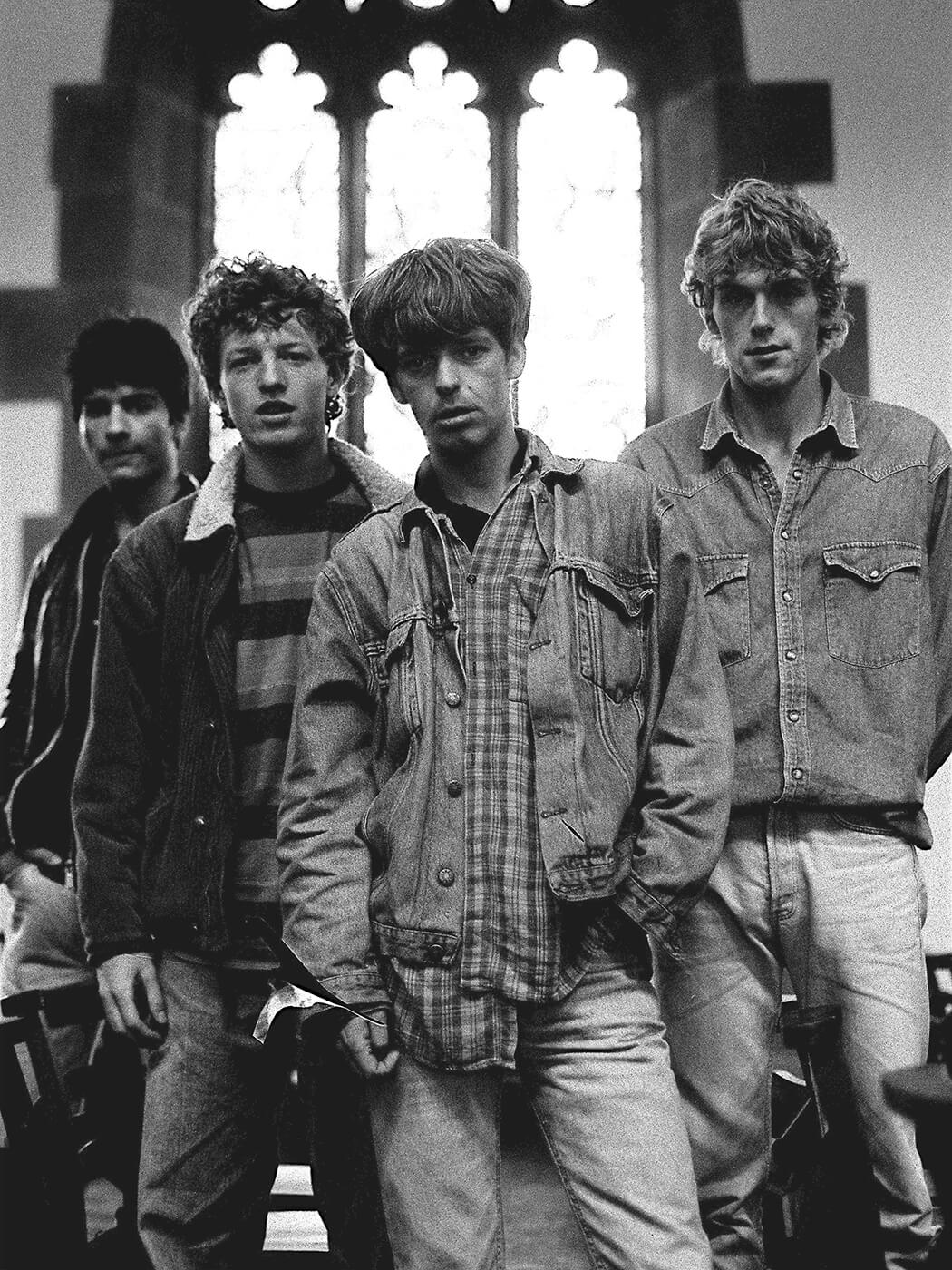
At the start of the 90s, British guitar music wasn’t in the best shape. Madchester was fading, though 1990 and 1991 produced some memorable tracks from the scene, like “Step On” by Happy Mondays, “Sit Down” by James, and “This is How it Feels” by Inspiral Carpets. Beyond these, however, the rest of the country seemed to be in a musical lull. Blur had formed and released their debut album, 'Leisure', but it failed to make much of an impact.
Something needed to change and it was about to.
Before that change, it's worth pausing to reflect on a monumental moment in 1991: the loss of Freddie Mercury, the legendary frontman of Queen. His passing shocked not only music fans but also the nation as a whole. The rock legend had only told the world 24 hours before that he had got AIDS. Although their had been rumours for years, Mercury had always denied them. Most famously in October 1986, two months after what would be the final Queen performance. British newspapers the News of the World and The Sun reported that Mercury had his blood tested for HIV/AIDS at a Harley Street clinic, but he was quoted as saying he was "perfectly fit and healthy"
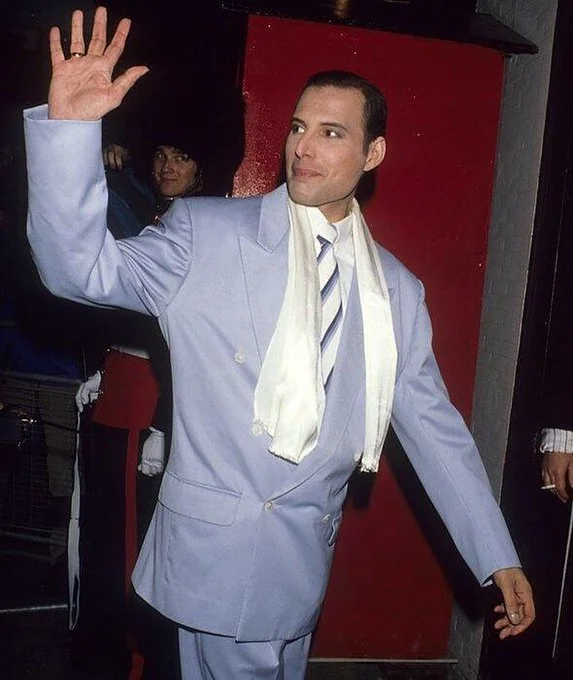
On 22 November 1991, Mercury called Queen's manager Jim Beach to his Kensington home to prepare a public statement, which was released the following day. The statement read.
"Following the enormous conjecture in the press over the last two weeks, I wish to confirm that I have been tested HIV positive and have AIDS. I felt it correct to keep this information private to date to protect the privacy of those around me. However, the time has come now for my friends and fans around the world to know the truth and I hope that everyone will join with me, my doctors and all those worldwide in the fight against this terrible disease. My privacy has always been very special to me and I am famous for my lack of interviews. Please understand this policy will continue."
On the evening of 24 November 1991, about 24 hours after issuing the statement, Mercury died at the age of 45 at his home in Kensington.
Queen along with their management, came together to organise a tribute concert for Freddie, both to celebrate his life and legacy but also raise money for research into AIDs and spread awareness about the disease. n the 1992 BRIT Awards ceremony, May and Taylor announced plans for the concert. When tickets finally went on sale, all 72,000 tickets sold out in just three hours, even though no performers were announced apart from the remaining members of Queen.

The band managed to draft in more than a few friends for the concert. David Bowie, George Michael, Seal, Roger Daltery, Annie Lennox, Lisa Stansfield, Mott the Hoople, Gun's N Roses, Black Sabbath and Elton John all took to the stage that day.
Mercury was more than a rock star; he was an inspirational figure, celebrated for his extraordinary talent, charisma, and his role in breaking down barriers as an openly gay man in the public eye. His legacy would resonate for decades to come.
Meanwhile, across the Atlantic, Nirvana. Kurt Cobain, Krist Novoselic, and Dave Grohl, were about to change the landscape of music forever. After making their debut with Bleach in 1989, the 90s saw Nirvana explode onto the global stage. Their 1991 album Nevermind not only launched Grunge into the mainstream but also became one of the best-selling albums of all time. Tracks like “Smells Like Teen Spirit,” “Something in the Way,” and “In Bloom” captured the angst and alienation of a generation. Nirvana quickly became the biggest band in the world, headlining Reading Festival in 1992 and releasing their final album, In Utero, in 1993. Cobain’s tragic death in April 1994 marked one of the most significant and heart breaking moments in 90s music history. In November 1994 Nirvana released their first live album "MTV Unplugged in New York".
It was part of the cable television series MTV Unplugged and features a mostly acoustic performance. It was recorded at Sony Music Studios in Hell's Kitchen, Manhattan, on November 18, 1993. Originally aired December 16, 1993, the band decided to release the performance to meet the demand for Nirvana material. MTV had been airing the performance repeatedly following Cobain's death.
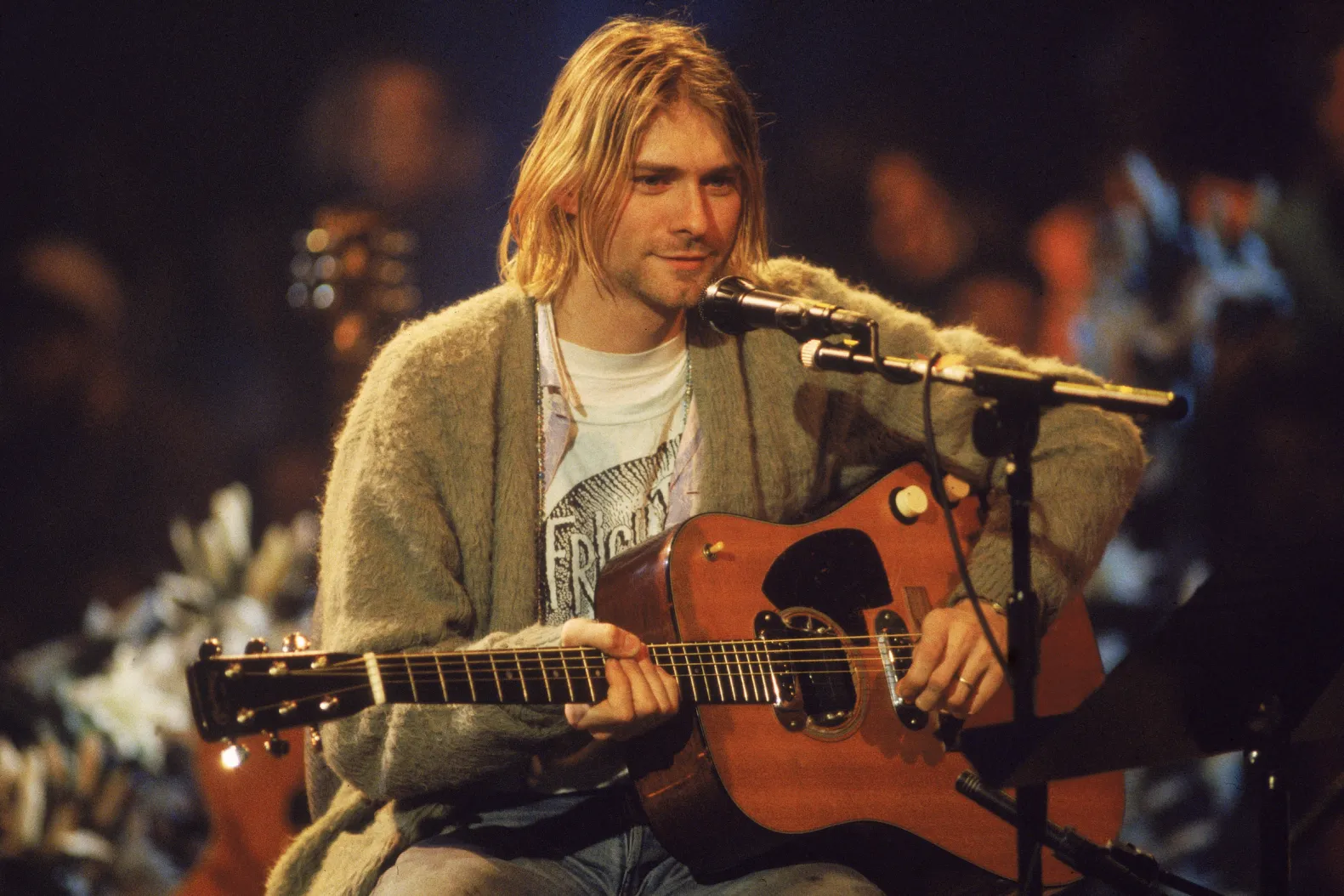
Nirvana filmed the entire performance of 14 songs in a single take.[9] It included one song from their debut Bleach (1989), four from their second album Nevermind (1991), three from the recently released In Utero, and six covers. Including "The Man Who Sold the World" originally by David Bowie.
The album despite being released after Cobain's death, is a must listen for Nirvana fans and one of the most important albums of the 1990s.
Grunge’s rise had an enormous impact, but it also led to a wave of copycat bands. While Nirvana’s influence was undeniable, the flood of imitators in the early 90s resulted in a lot of uninspired music. It was a strange time for rock, but not all was bleak. Many bands began to experiment with new sounds, blending rock with dance music. Primal Scream’s 1991 masterpiece 'Screamadelica' was a shining example of this, fusing rock riffs with euphoric beats. Tracks like “Loaded” bridged the gap between genres, continuing the legacy of The Stone Roses and uniting rock and rave culture.
The early 90s also saw standout dance tracks making waves. Saint Etienne’s dreamy cover of Neil Young’s “Only Love Can Break Your Heart” and The Shamen’s chart-topping “Ebeneezer Goode” became anthems of the era, embracing the carefree, hedonistic spirit of the time.
A new scene, Shoegaze, so named for the performers’ tendency to look down at their pedalboards during performances, emerged from the UK indie scene and emphasized lush, immersive soundscapes. The genre was characterized by ethereal vocals, heavy use of reverb and delay effects, and walls of distorted, layered guitar sounds. Bands like My Bloody Valentine, Slowdive and Ride became the main players in the scene.
Although at the time Shoegaze wasn't widely regarded as a significant scene. Sandwiched between Grunge and Britpop, in more recent times critics and fans alike have come to realise just how influential it was. Albums like "Loveless" by My Bloody Valentine, and Slowdive's "Souvlaki" are now considered as being two of the very best albums of the 1990s.
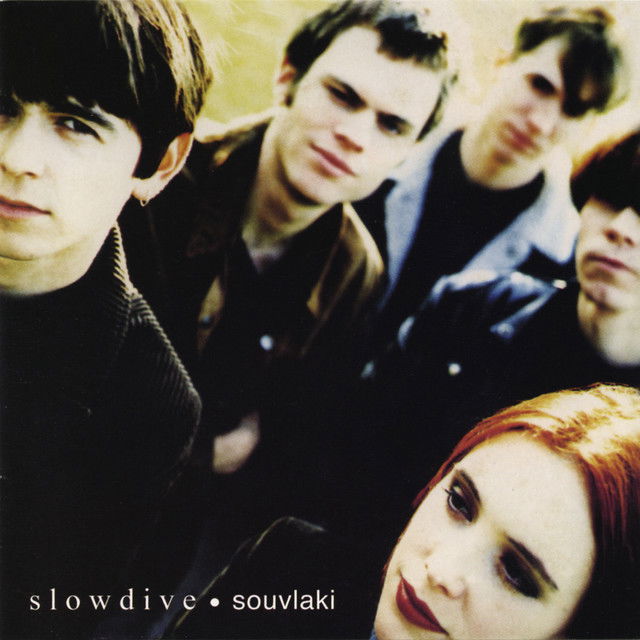
The genre's ability to convey both intimacy and expansiveness ensures its enduring appeal, cementing its place as a vital chapter in the history of guitar-driven music.
But in 1993, everything was about to change. Guitar music especially in Britain was going to get a massive shake up.
We're All Part of the Masterplan- The 90s Part 2
By 1993, the tide was beginning to turn. Grunge, once the dominant force in music, was on the decline. The charts were saturated with American bands trying and failing to recapture the raw energy of Nirvana, and audiences were growing weary. They craved something new, something closer to home. And like the proverbial London buses, when the wait felt interminable, two arrived at once.
First came Suede, with their electrifying self-titled debut album. Suede were everything Nirvana wasn’t: glamorous, romantic, and dripping with a distinctly British charm. Their music, with its swirling psychedelic guitars and Morrissey-esque lyrical wit, felt like a direct counterpoint to the angst-ridden grunge that had dominated the airwaves. Suede offered a sound and style that embraced beauty, decadence, and raw emotion. A breath of fresh air for a generation searching for something different.
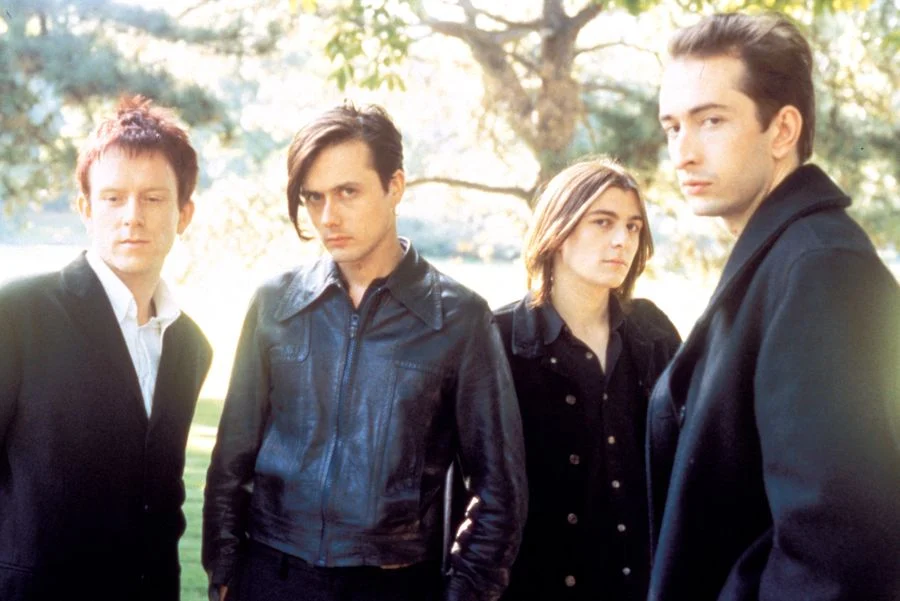
Hot on their heels was Blur, who released 'Modern Life is Rubbish that same year'. It was a statement album, signalling a deliberate shift away from the American influences of their debut Leisure toward a sound steeped in quintessentially British observations. Blur captured the mundane and magical in equal measure, painting vivid portraits of everyday life in the UK.
Together, Suede and Blur set the stage for a seismic shift in British music. They represented a bold departure from the grunge-dominated early 90s and signalled the dawn of something fresh, vibrant, and uniquely British. A cultural movement that would soon take over the airwaves and define the decade.
Blur were quintessentially British, drawing influence from the iconic artists of previous decades, including The Jam, The Kinks, and of course The Smiths. Their music often grappled with the decline of British culture, while still embracing the uniquely British essence that defined their sound. "Modern Life is Rubbish" became one of the most important albums of the 90s, marking a pivotal moment in Blur's evolution. It was a reinvention, transforming Blur from their early "baggy" beginnings as an Essex-based outfit into one of the most influential British bands of all time.
This album, along with Suede's debut, became the catalysts for a new musical movement: Britpop. By 1994, Britpop was primed to explode, capturing the hearts and imaginations of a generation with its mixture of catchy melodies, sharp wit, and national pride. The seeds for one of the most vibrant cultural revolutions in modern British music had been sown.
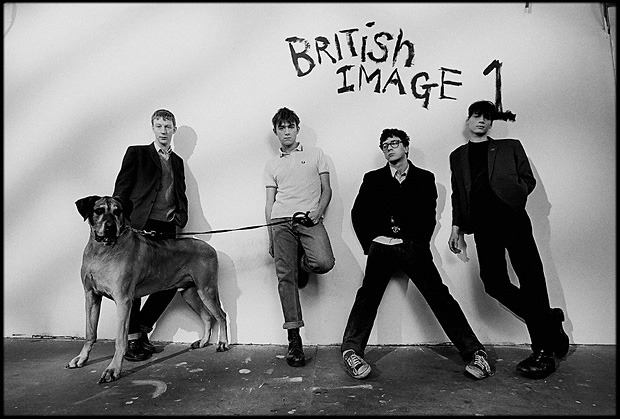
1994 saw two pivotal bands join the Britpop scene: Oasis from Manchester and Pulp from Sheffield. Oasis released Definitely Maybe in August, while Pulp unveiled His 'n' Hers earlier in the year, in April. His 'n' Hers showcased Pulp's sharp lyrical wit and observational storytelling, with their focus on the mundane, awkward, and often absurd aspects of everyday life. Particularly love and desire. This approach set them apart from their peers and secured their place in the Britpop pantheon.
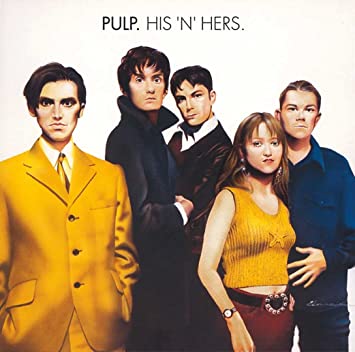
Meanwhile, Blur and Suede were still leading the charge, each carving out their own distinctive sounds. Blur released the iconic Parklife, an album that would cement their place at the forefront of Britpop, while Suede chose a different path with Dog Man Star, distancing themselves from the traditional Britpop label with a darker, more gothic approach. The album's moody atmosphere, cinematic instrumentation, and Brett Anderson’s haunting vocals made it a stark contrast to the upbeat anthems of their peers.
Parklife and Definitely Maybe stand not only as two of the most important Britpop albums, but as defining British albums of the era. Oasis and Blur were propelled to superstardom, dominating the charts and securing their places in the cultural zeitgeist. And this was just the beginning.
It’s impossible to discuss these albums without highlighting the songs that made them unforgettable. Blur delivered classics like "Girls & Boys," a sharp take on 18-30 holidays, "Parklife," a witty commentary on British life, and "This Is a Low," a love letter to the shipping forecast. They also showcased their range with tracks like "End of a Century," which captured nostalgia for simpler times. Oasis, on the other hand, opened Definitely Maybe with "Rock 'n' Roll Star," a confident statement of intent that set the tone for the album. "Shakermaker," with its infectious melody and unmistakable riff, demonstrated Oasis' ability to blend gritty rock with catchy hooks. "Live Forever," one of their most anthemic songs, encapsulated the essence of youth’s hope and defiance, while "Supersonic" packed a punch with its urgent energy and Liam Gallagher's raw vocals. Both albums became essential to the fabric of Britpop, defining a generation and shaping the sound of the decade.
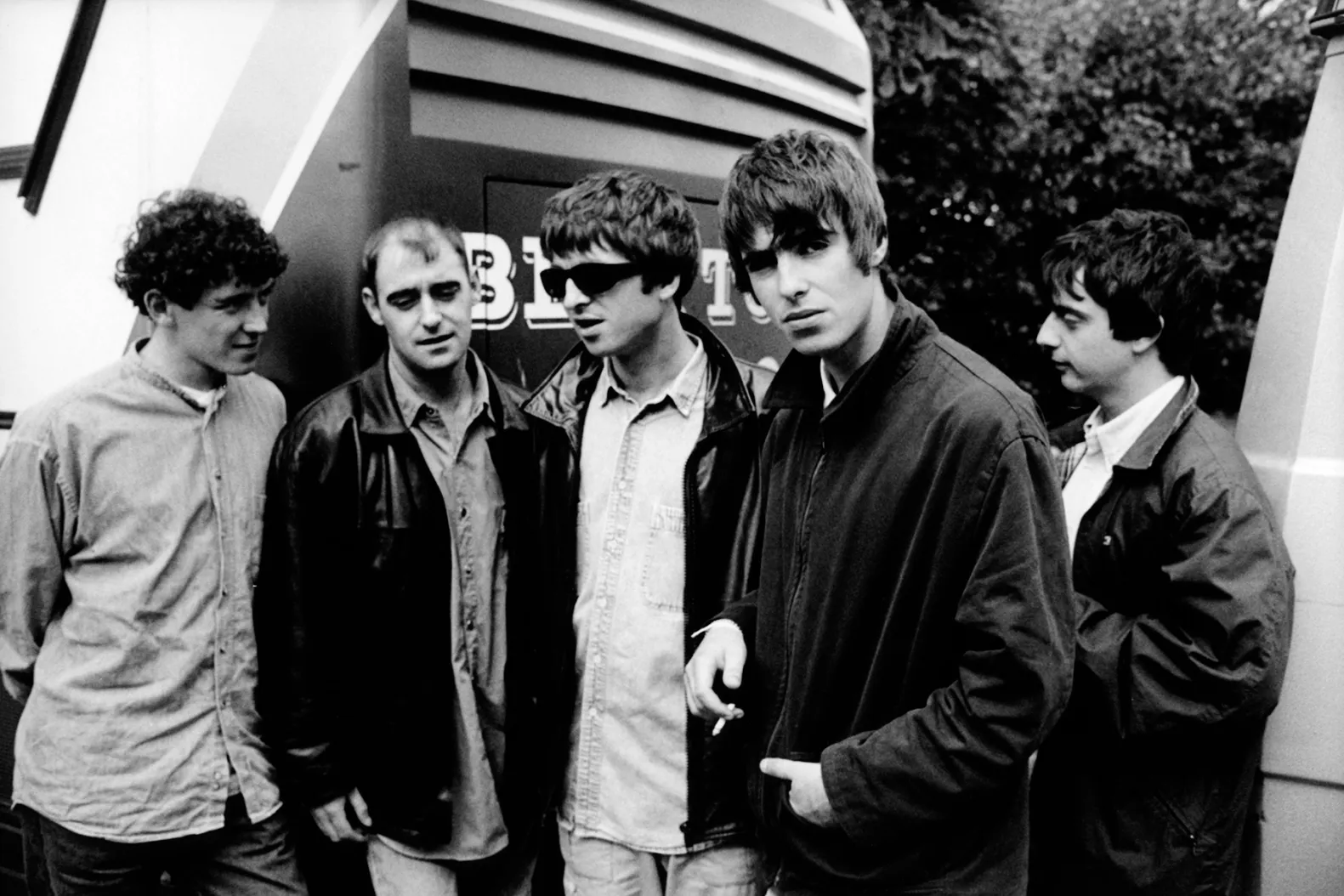
Pulp? Don’t worry, 1995 was Pulp’s year. They took on Blur, Oasis, and even The Stone Roses, and came out on top.
1995 was a huge victory for the "Girls and Boys in the Band" (depending on how you read that, I might be a year late or 7 years too early!).
Suede would take a step back in 1995 in terms of studio releases, but the big three Oasis, Blur, and Pulp each dropped iconic albums. Oasis released the global smash hit "What's the Story (Morning Glory)", Pulp unveiled the brilliant and beautiful "Different Class", and Blur completed their life trilogy with "The Great Escape".
Oasis would have hit after hit in 1995, releasing "Some Might Say", "Wonderwall", "Don't Look Back in Anger", and "Roll With It" all in this year. And let's not forget those b-sides: "Acquiesce", "The Masterplan", "Rockin’ Chair", just to name a few. It seemed that everything Noel Gallagher wrote during this period was a bonafide classic. He could do no wrong, and his songs would propel Oasis to being the biggest band in the world.
Blur were riding high off the success of "Parklife", sweeping up at the Brit Awards in 1995 and winning four! However, many saw their next album as a disappointment, including some members of the band. Damon famously called it a "mess." Despite this, although not as strong as the previous two albums, it still contained some of Blur's most beloved tracks, including the Number One single "Country House" and "The Universal.
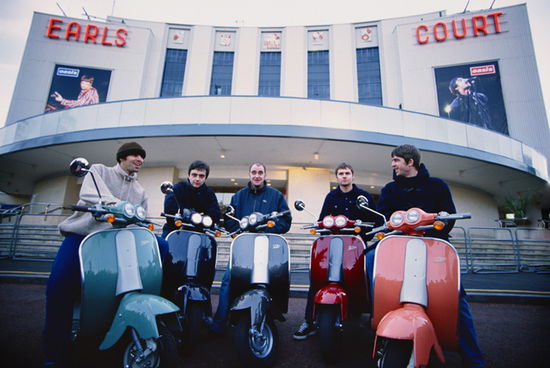
Pulp released "Different Class" in 1995, which, in my opinion, is the album that defines Britpop. Witty, dark, beautiful, ironic – the very nature of the album is quintessentially British. Songs like "Disco 2000", "Sorted For E's and Whizz", and "Mis-Shapes" could not be more British. The band takes the mundane and sometimes the frightening, and transforms it into brilliant, catchy pop songs. The album’s crown jewel is "Common People". The song captures society’s fascination with the working class and "class tourism," where the rich and wealthy try to appropriate aspects of working-class life as some sort of aesthetic. It’s a phenomenon that still exists today. Pulp managed to encapsulate the British class system in a single song, and to me, that’s quite extraordinary. I can only name a few songs that have had such a cultural impact on British society. Truly, a remarkable piece of music.
In 1995, to top off the success of a brilliant album, Pulp were the ‘super subs’ at Glastonbury, replacing The Stone Roses after John Squire broke his collarbone. It was a career-defining set for the band, and they more than filled the void left by The Stone Roses. It remains one of the best Glastonbury sets of all time. I told you Pulp won 1995, but I’m not finished yet.
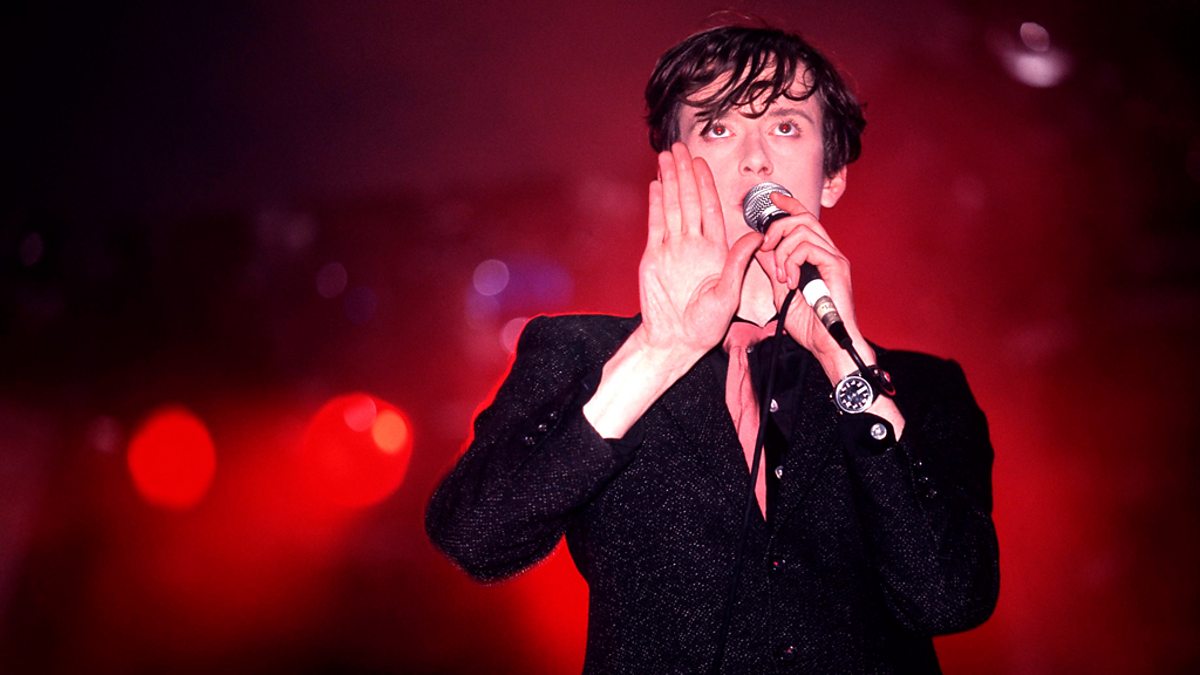
It wasn’t just the men writing Britpop anthems. Justine Frischmann’s Elastica and Louise Wener’s Sleeper contributed some of the era’s best songs. "Connection", "Waking Up", and "Never Here" provided Elastica with some of Britpop’s most punk-infused hits, and the band’s self-titled debut album would become the fastest-selling debut ever. "Inbetweener" would be a huge hit for Sleeper, a true Britpop classic with a brilliant hook and catchy chorus.
One band that wanted to distance themselves from Britpop, however, were Oxford rockers Radiohead. In 1995, they released their second album "The Bends", following the success of their 1993 single "Creep". This album proved the band were no one-hit wonders, delivering two of their most beloved songs, "High & Dry" and "Fake Plastic Trees". This is not the last you’ll hear of Radiohead in this post, either…
During the Britpop explosion of the 90s, British bands from all corners of the UK were contributing their own distinct sounds, each adding a unique flavor to the vibrant music scene.
Shed Seven, hailing from York, brought their energetic, guitar-driven indie rock to the forefront. With their raw, earnest sound, they quickly became one of the key players in the Britpop scene. Their hit "Chasing Rainbows" encapsulated the spirit of the time—an anthemic, jangly rock track that balanced catchy hooks with introspective lyrics. Known for their energetic live shows and strong songwriting, Shed Seven captured the essence of 90s indie rock with their ability to blend emotionally charged themes with accessible, feel-good melodies.
Cast, formed by John Power of The La’s fame, brought a melodic, anthemic style to the Liverpool scene. Their debut album, All Change, was a breath of fresh air, filled with catchy, uplifting songs. Tracks like "Alright" became Britpop classics, with their sing-along choruses and jangly guitars. Cast’s sound was rooted in traditional rock influences but infused with a contemporary energy that made them a standout act in the Britpop movement. John Power’s songwriting was the heart of the band, blending emotional lyrics with infectious melodies that resonated with audiences.
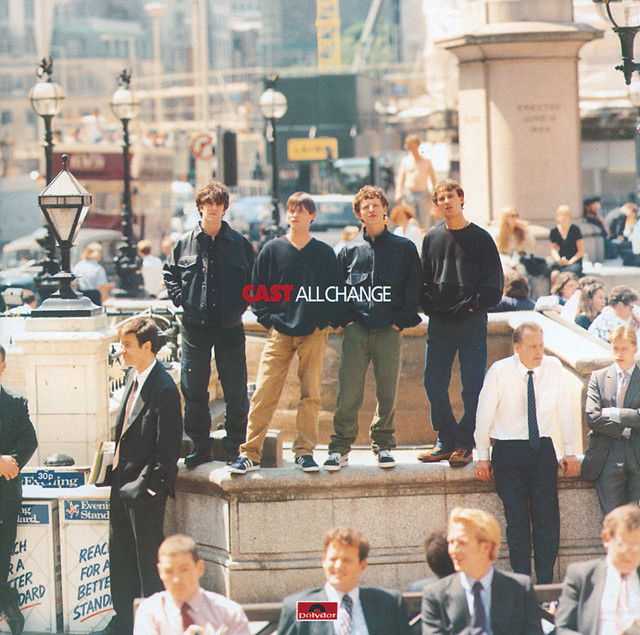
Manic Street Preachers, the Welsh quartet from Blackwood, took a different, more politically charged approach to Britpop. With a fiery intensity and a sharp critique of society, they stood out for their passionate activism and bold lyrics. Songs like "A Design for Life" and "Motorcycle Emptiness" became anthems of a disillusioned generation, addressing themes of social inequality, political alienation, and personal despair. Their music often blended punk, glam rock, and alternative influences, giving them a distinct edge.
From Birmingham, Ocean Colour Scene became synonymous with the Britpop movement's more laid-back, soulful side. Their sound was influenced by 60s rock, soul, and mod culture, and they built a fanbase with their hook-heavy melodies and clever, reflective lyrics. Their debut single "The Riverboat Song" quickly became a standout hit, showcasing their ability to blend nostalgic musical influences with contemporary sensibilities. Albums like "Moseley Shoals" were filled with hits that captured the spirit of the times, and Ocean Colour Scene's sound was often seen as a more organic, down-to-earth counterpoint to the sometimes flashy excesses of other Britpop bands. Their blend of folk-rock and soul with Britpop made them a fixture on the charts throughout the 90s, and their music has maintained a lasting legacy in British rock.

Meanwhile, Scotland's Travis were steadily gaining recognition with their introspective, melodic rock, eventually achieving widespread success with tracks like "Why Does It Always Rain on Me?" Their gentle, heartfelt approach contrasted with some of their more raucous Britpop peers, but it resonated with a wide audience. Even the psychedelic rockers The Verve, after struggling in the early 90s, found their footing with "A Northern Soul". With Key tracks like "This Is Music," "On Your Own," and "A Northern Soul" itself exemplify this shift. "This Is Music" served as a statement of intent with its soaring guitars, hypnotic rhythms, and layered vocals from Richard Ashcroft. The song’s powerful dynamics and sprawling structure hinted at the band's increasing ambition and scope. "On Your Own" echoed a sense of isolation, with melancholic lyrics wrapped in a heavy, cascading sound, showcasing their growth as a band capable of capturing the essence of human vulnerability. The title track, "A Northern Soul," was a prime example of Ashcroft’s emotionally charged lyricism, full of yearning and introspection, while the instrumental work, especially the sweeping strings, added a layer of grandeur that set the album apart.

This influx of talent from all corners of the UK demonstrated the widespread influence of Britpop and the rich diversity of the British music scene in the 1990s, with every region contributing to the cultural fabric of the era.
1996 was the year Britpop hit its peak, and where dance music made a return. British culture was at the forefront. The Spice Girls introduced us to "Girl Power", Danny Boyle gave us the film of the decade, "Trainspotting", and Oasis headlined at Knebworth.
What Oasis achieved in the two years between the release of Definitely Maybe and their iconic Knebworth shows is nothing short of astonishing. In the span of just two albums, the band crafted some of the most enduring and celebrated songs in the history of British rock. Tracks like "Live Forever", "Slide Away", "Rock 'n' Roll Star", "Champagne Supernova", "Some Might Say", and "Don't Look Back in Anger" not only defined an era, but also solidified Oasis as one of the most important bands of the 1990s.
Oasis had an unparalleled ability to create b-sides that could have easily been hits in their own right. Songs like "Talk Tonight", "Half the World Away", "Listen Up", "Acquiesce", and "Going Nowhere" were tucked away as bonus tracks on singles, yet many of these tracks are now considered among the band's best work. These b-sides were often as well-crafted and impactful as the main album tracks, showing that Oasis didn’t just rely on their singles to define their legacy—they were producing a full-bodied catalogue of unforgettable music.
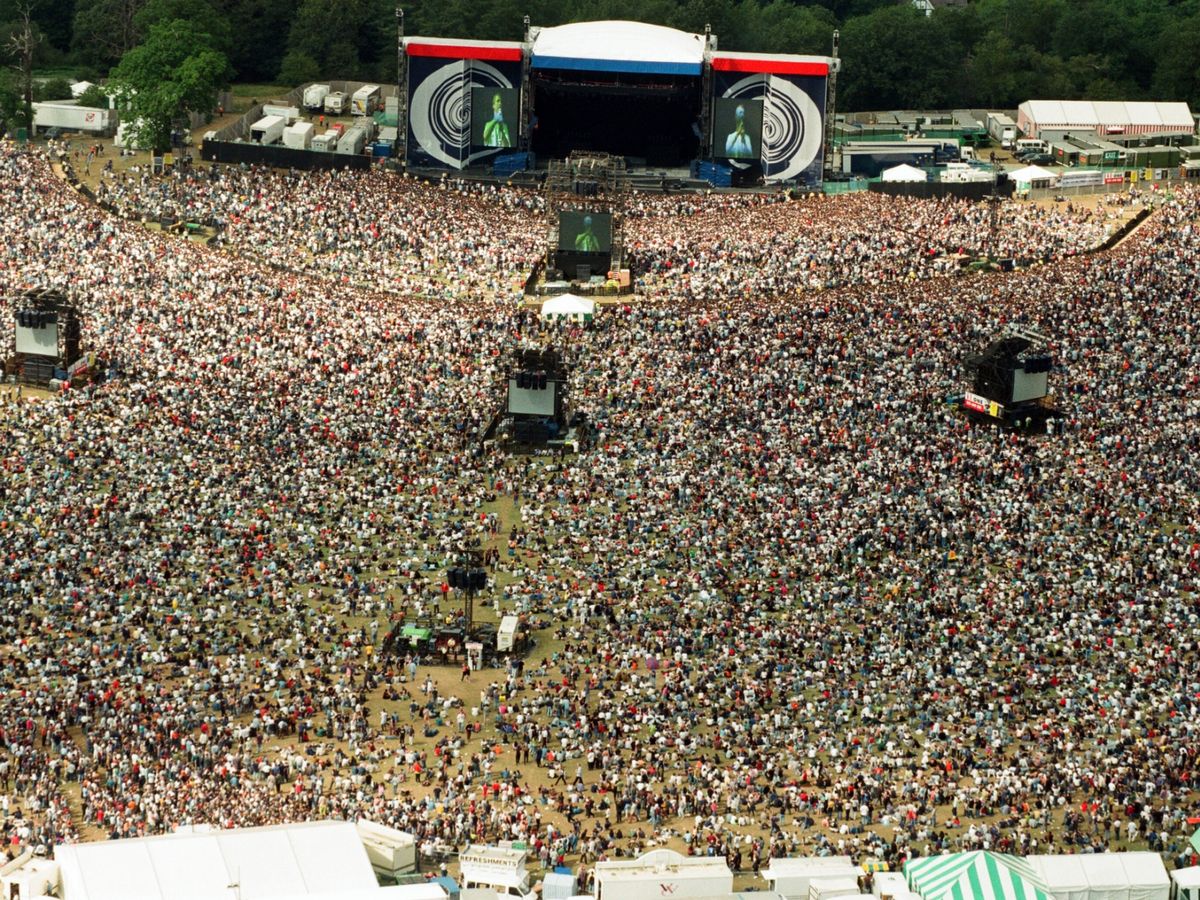
Their Knebworth gigs in 1996, attended by over 250,000 people, were the culmination of this explosive period. By that point, Oasis had become more than just a band—they had ascended to cultural icons. The sheer volume of remarkable music they had released in such a short time was unprecedented, and Knebworth solidified their place in rock history as one of the most important British bands of all time. The momentum they gained in those two years is unparalleled and speaks to the unrelenting creativity and drive that defined Oasis at their peak. It also helped show the world just how good British music was, Oasis were accompanied by a collection of huge bands at Knebworth. The Prodigy, Manic Street Preachers, Ocean Colour Scene, The Chemical Brothers, The Bootleg Beatles, The Charlatans, Kula Shaker, Cast, and Dreadzone all shared the stage with the band across the weekend.
Noel Gallagher has described the event in recent years as "the last great gathering before the birth of the internet."
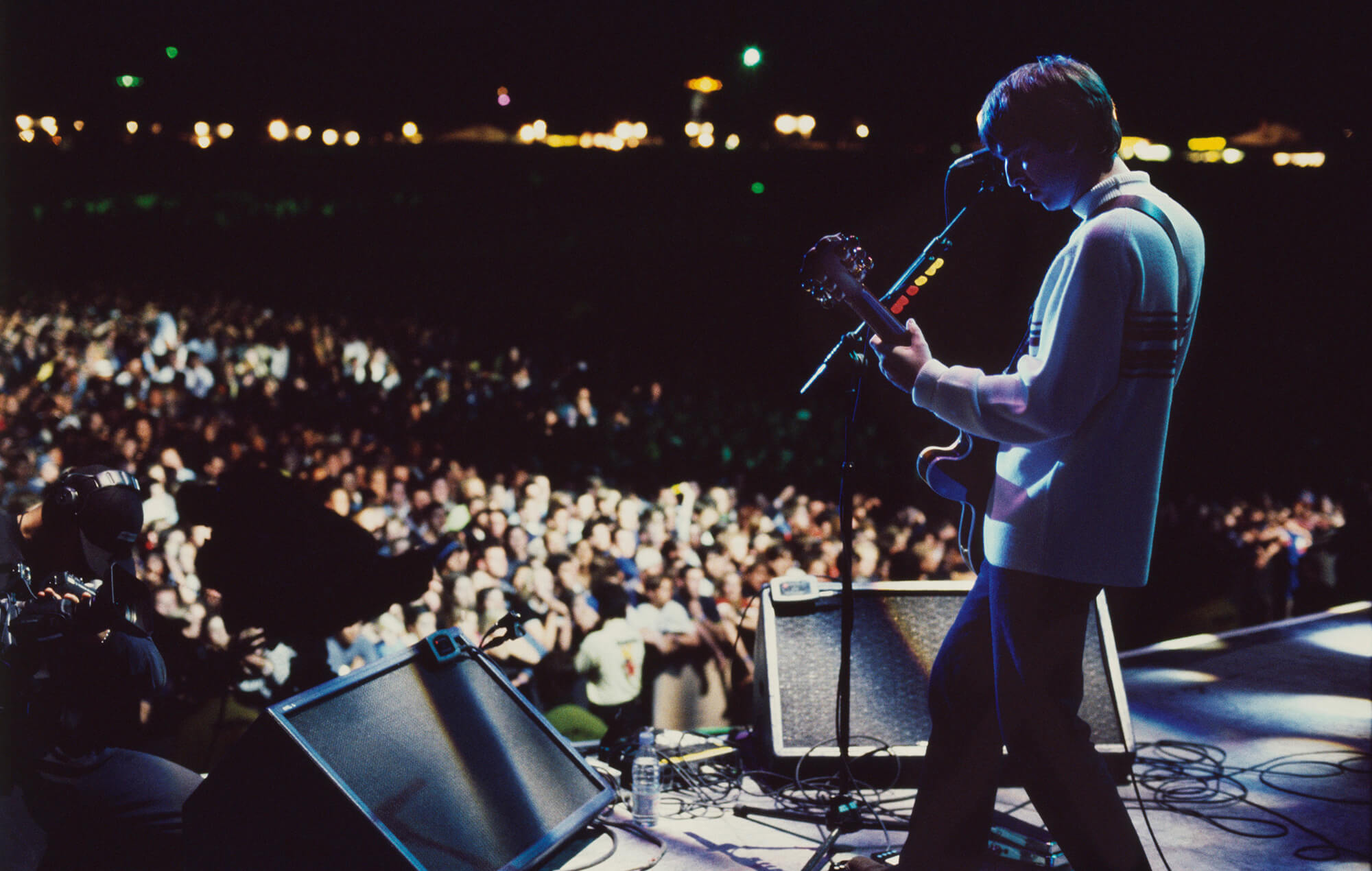
It was probably the definitive moment of 90s guitar music, at least in Britain.
The Chemical Brothers helped bring dance music to the masses with hits like "Setting Sun" and "Block Rockin’ Beats". Big Beat culture was born, and soon The Prodigy, Massive Attack, and Underworld would capitalize on it. Dance music was no longer confined to subcultures; it was about to go mainstream. It was an exhilarating time for British music.
Meanwhile, "A Design for Life" by the Manic Street Preachers soared to the Number One spot on the UK charts, marking a monumental achievement for the band in the wake of the mysterious disappearance of their guitarist, Richey Edwards. The song’s success was not only a testament to the band's resilience but also a reflection of their powerful, politically charged sound that resonated deeply with fans. At the time, even the band themselves believed such a feat was impossible without Richey, whose absence had left a void both personally and creatively. Yet, "A Design for Life" became an anthem of defiance and hope, cementing the Manics’ place as one of the most influential bands of the era. Despite the overwhelming odds, the track’s success symbolized both the band's strength and the emotional connection they shared with their audience.

It was a truly amazing year. British music was riding high, and apart from a select few. Alanis Morrissette, Foo Fighters, and R.E.M. The rest of the world didn’t really get a look in, especially in the UK. Not in terms of guitar music, anyway. America would rule the hip-hop airwaves, however.
Britain was undergoing a massive change in the 90s. Music, politics, art, film, science, everything was evolving. Knebworth, Girl Power, New Labour, Dolly the Sheep, the emergence of the internet. Even football came home, with a football song hitting the top of the charts three times in the 90s. New Order's "World in Motion" in 1990, "Three Lions" in 1996, and "Three Lions '98" in 1998. Music and football transcended; they helped bring English football out of the dark ages of hooliganism and into the modern world. The Premier League was born, and it changed forever.
Popularized by the Spice Girls, Girl Power symbolized female empowerment, independence, and solidarity, resonating with young women across the country. Comprised of five distinct personalities. Sporty, Scary, Baby, Ginger, and Posh—the group broke the mould of traditional girl bands by celebrating individuality and diversity. Their debut single, "Wannabe", released in 1996, became an instant global sensation, topping charts in 37 countries and establishing the Spice Girls as international icons.
Their debut album, Spice (1996), was a global phenomenon, selling over 23 million copies worldwide and becoming the best-selling album by a girl group in history. It topped charts in more than 17 countries, including the UK and the US, and spawned an unbroken string of hits, including “Wannabe,” “Say You’ll Be There,” “2 Become 1,” and “Who Do You Think You Are.” In the UK, all four singles from Spice went to Number One, a record-breaking feat for a debut album.
Their follow-up album, Spiceworld (1997), continued their dominance. The album debuted at Number One in the UK and reached the Top 3 in the US, eventually selling over 14 million copies globally. Its lead single, “Spice Up Your Life,” became an instant anthem, while “Too Much” and “Stop” further cemented their chart success. Notably, “Stop” was the only Spice Girls single to narrowly miss the Number One spot in the UK, peaking at Number Two.
Girl Power was more than just a catchy slogan. It was a rallying cry for gender equality and self-expression, and it played a key role in reshaping societal norms. The Spice Girls embodied this new wave of feminism, with their bold personalities, diverse identities, and unapologetic confidence.
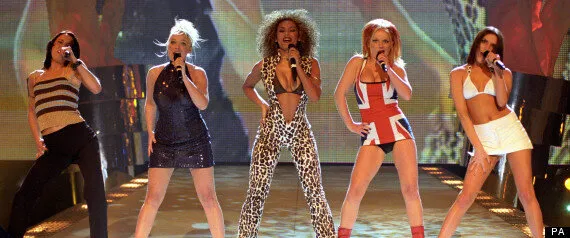
It was a time of possibility. Everything seemed achievable, and it wasn’t an elitist club. Everyone was invited to this party, no matter class, colour, or creed. It was a time of hope and optimism, where everyone was represented.
It was a time of great change. The young were being listened to. Celebrity culture was born; the tabloids were about to take over. Musicians, supermodels, and sports stars would grace the front pages as much as the back. The Channel Tunnel connected us to Europe, and Britain was ready to take on the world again, this time with guitars, paintbrushes, and footballs. Not rifles and bayonets.
But it would have to come to an end...
Death of A Party- The 90s Part 3
"The death of the party came as no surprise" . Blur would utter those famous words in 1997, and they were right. In more ways than one. Britpop was over. It had peaked the year before with Oasis at Knebworth, the movement had reached the top of the mountain, and now anyone with an acoustic guitar and a bucket hat was treated as the second coming of Christ.
With their self-titled fifth album, Blur would distance themselves from Britpop in dramatic fashion, influenced more by American music. The shift was in part due to a letter from the band’s guitarist that uttered these famous words: "I wanted to scare people again..." It saw the band move away from the British social commentary that had defined their previous three albums, leading them to write songs like "Beetlebum", the band’s second number-one single, and "Song 2", which carried a grunge-like sound. This marked the beginning of the end for Britpop and perhaps Blur’s most important album.
Blur would release one more album before the decade was out. 13 was released in 1999 and saw them build on what they had learned from their self-titled album, but with a much more personal approach. "Coffee & TV" saw Graham sing about his struggle with alcohol addiction, while "Tender" and "No Distance Left to Run" are two of the band’s finest songs. Damon Albarn looked inward, coming to terms with the end of both his relationship with Justine Frischmann and the close of the decade itself.
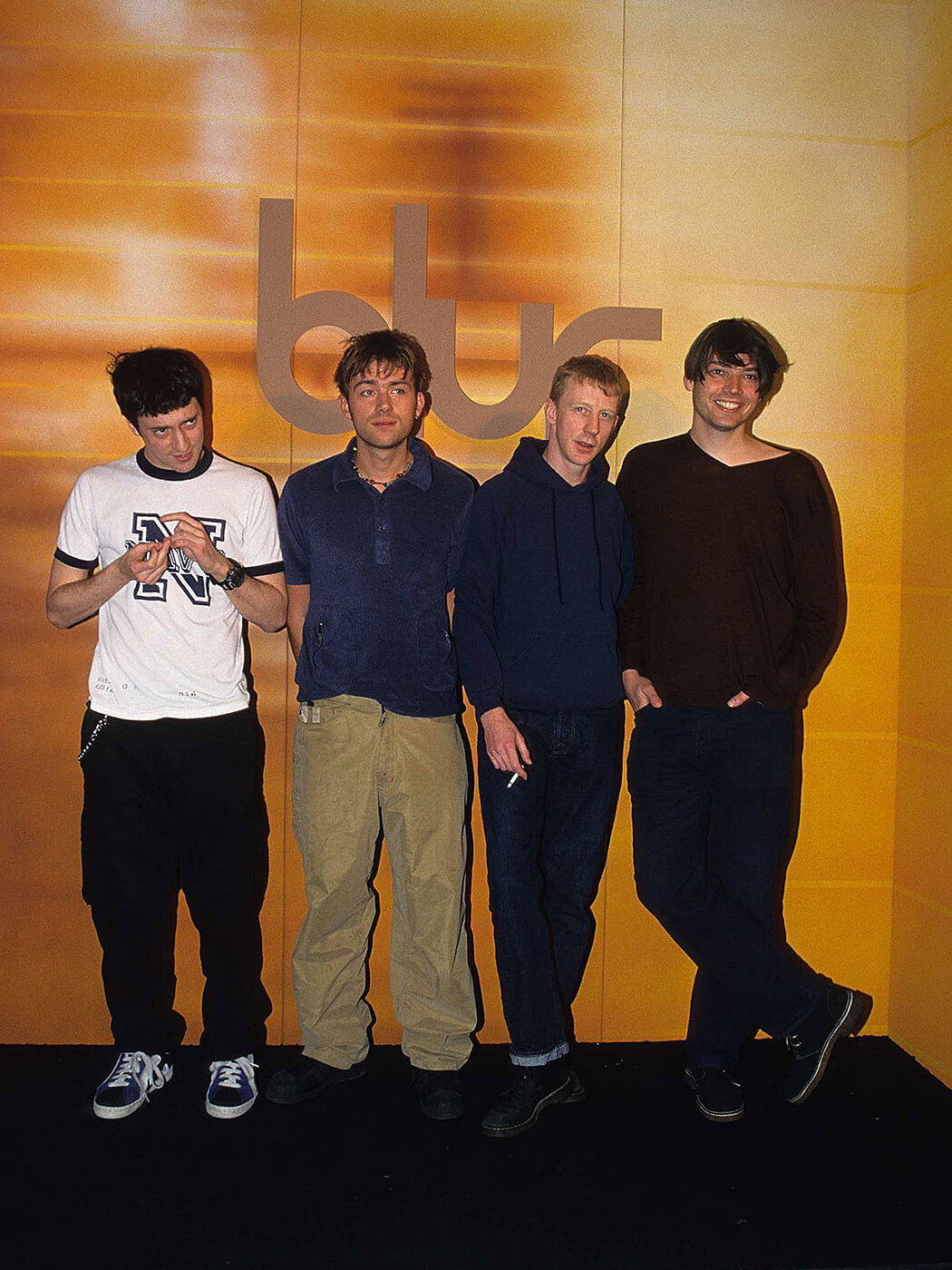
Oasis would also release an album in 1997, and perhaps they should have listened to Blur and left the party. Still riding high from the success of Knebworth and their third number-one single "D'You Know What I Mean?", they released Be Here Now. It was supposed to be the record that made them bigger than The Beatles, the one that solidified them as the biggest band in the world. It wasn't.
While the album has some good songs, it is overproduced, overindulgent, and far too long. "All Around the World" clocks in at nearly ten minutes. It was the sound of a band who, let’s face it, didn’t really care. They were the biggest band in the world, and they acted like it. Be Here Now feels like the sound of five people on cocaine. Sorry, Oasis fans, but it’s true. The album had so much potential, but sadly, they got it wrong. Should’ve saved those B-sides, Noel!
Oasis now considers the album a flop, but it became the fastest-selling British album ever, eventually selling over eight million copies, an eight-million-selling flop.
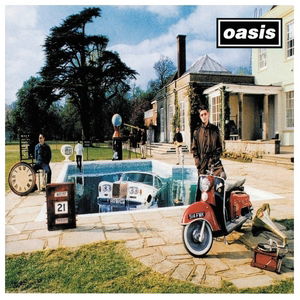
One band that didn’t get it wrong in 1997 was The Verve. After struggling with inner turmoil and disputes, they managed to reunite and make one of the best records of the decade, Urban Hymns, released in September of '97. The album showed the world that The Verve were not just a Northern indie band; they were a force to be reckoned with, and Richard Ashcroft was a brilliant songwriter. Just look at the track list and what’s on it: "Bittersweet Symphony," "The Drugs Don't Work," "Lucky Man," and "Sonnet" were the singles. That run of singles rivals any other band of the '90s. Sadly, they couldn’t keep it together, and the band split up again in spring 1999. It’s a shame because Urban Hymns gave a glimpse of a band on the cusp of their very peak.
However, before the breakup, the band would get their moment in the sun. On May 24th 1998, The Verve would take to the stage at Haigh Hall, a stately mansion and parkland in Wigan, the bands hometown. In front of a crowd of 35,000 people.

Celebrating "Urban Hymns" the band played the whole album as well as three tracks from it's predecessor "A Northern Soul". Although their peak was short lived, The Verve wrote and recorded some of the most iconic songs of that decade. When your album and live show includes "Bitter Sweet Symphony," "Lucky Man," and "The Drugs Don’t Work." you've done something right.
Remember when I said you hadn't heard the last of Radiohead? Well, they also released an album in 1997, OK Computer. The album is often regarded by critics as one of the best albums of all time, and the band has been hailed as saviours of modern music. I disagree with both of those statements. However, I cannot deny that OK Computer is a very, very good album. It featured songs like "Karma Police," "No Surprises," and "Paranoid Android". These are complex and intricate pieces of music in their own right. Along with Blur and The Verve, Radiohead wanted to move away from the Britpop formula that had defined the previous years, and they did so with great effect. In 1997, Radiohead would also headline Glastonbury, and according to festival hosts Michael and Emily Eavis, they gave the best performance the festival had ever seen.
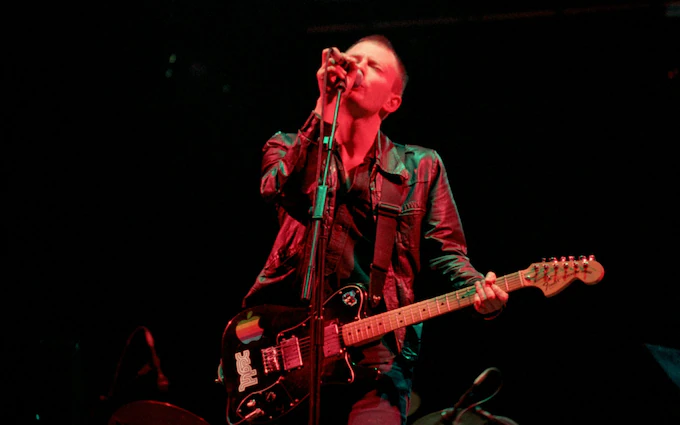
Whilst in England, bands were reinventing themselves, across the border in Wales, one band was just getting started. Stereophonics released Word Gets Around in August 1997, a debut album that captured the essence of small-town life with its gritty yet beautiful storytelling. The album spoke to the trials and tribulations of everyday existence, touching on themes of love, loss, and personal reflection. Featuring standout tracks like “Local Boy in the Photograph,” “Looks Like Chaplin,” and “A Thousand Trees,” it marked the beginning of a journey for the band, offering a raw and heartfelt approach to both song writing and music. While it may not have been experimental, Word Gets Around remains a brilliant collection of songs that introduced the world to Stereophonics' distinctive style: emotive rock with a strong sense of place and character.
This wouldn’t be the only album they released in the ‘90s. In 1999, Performance & Cocktails saw the band take a more refined approach, experimenting with new sounds and maturing as a group. The album is widely regarded as a career-defining moment, showcasing their ability to blend rock, blues, and anthemic ballads. Tracks like “Pick a Part That’s New,” “Just Looking,” and “The Bartender & the Thief” became fan favourites and are often considered some of the best rock songs of the decade. While Britpop may have faded into the background by this point, the post-Britpop era still had a handful of gems, and Stereophonics were undeniably one of the standout bands to emerge from this transition.
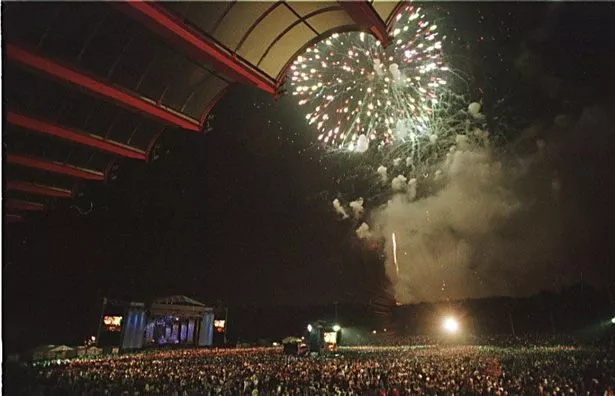
A particularly notable moment in the band's early years came with their iconic performance at Morfa Stadium in Swansea in 1999. This gig was a milestone for Stereophonics, as they performed in front of a hometown crowd, cementing their place as one of Wales’ most beloved bands. The sheer energy and passion of that night reflected the connection they had with their audience and the pride they felt as representatives of their small-town roots. The performance showcased the band’s evolution from a promising new act to a powerhouse of the UK rock scene, and it remains a defining moment in their early career.
1999 also saw two of the most underrated bands of the '90s release two of the most underrated albums of the decade. Travis released The Man Who, a change in sound for them and a shift in pace as the decade came to a close. It was a collection of acoustic masterpieces, with "Why Does It Always Rain on Me?" as its centerpiece— a somber and reflective album. Shack also released HMS Fable, which I covered in this post: Take a Seat at the Captain's Table. .
An album I call 'the greatest album no one has ever heard' an album that is as tragic as it is beautiful. The antidote to Britpop's hedonism and a tale of what drug taking is really like.
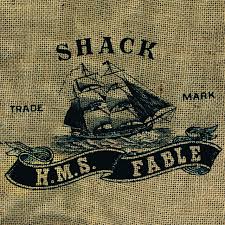
That seemed like the perfect curtain call to quite a chaotic decade. The credits begin to roll, it's over...
However, this section isn't quite finished yet. I know it's called Death of a Party, but in this part of the decade, dance music would hit the mass market. In 1997, The Prodigy released The Fat of the Land, complete with iconic singles "Breathe" and "Firestarter." This marked a new dawn for dance music, no longer confined to warehouse raves and dark nightclubs. Its new home was at the top of the charts. The Chemical Brothers would also release Dig Your Own Hole that same year, merging modern dance music with 1960s psychedelia to create a hybrid that no one expected, but it worked. "Setting Sun," the 90s version of "Tomorrow Never Knows," featuring a Noel Gallagher vocal, would hit the top spot, and "Block Rockin’ Beats" would become a dancefloor classic. This album cemented The Chemical Brothers as one of the most important British dance acts ever. In 1999, Forever picked up where the previous album left off, with "Hey Boy Hey Girl" reinforcing the band’s place as one of the 90s’ key players, even featuring another Noel Gallagher collaboration on "Let Forever Be."
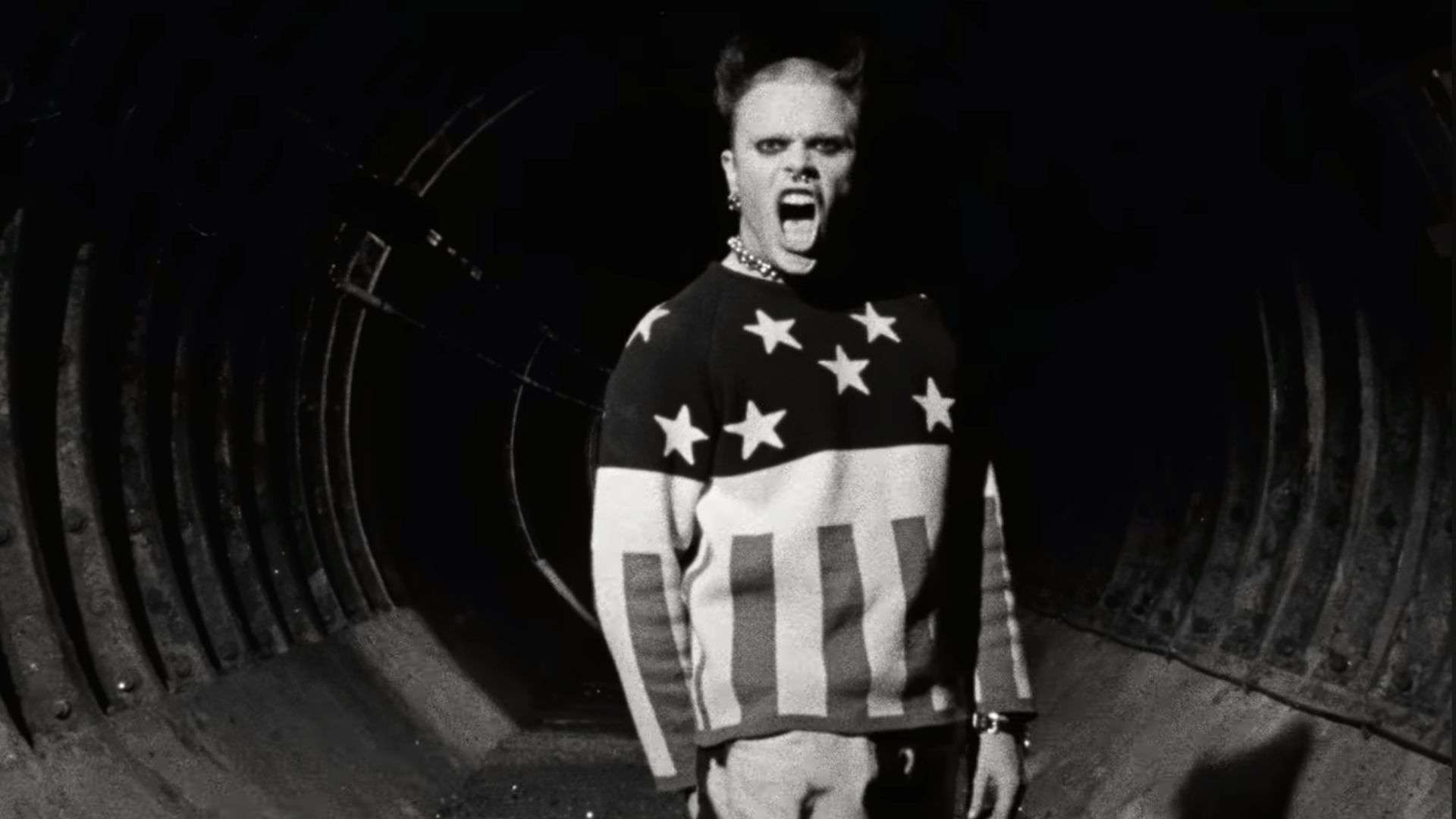
Dance music in the 90s was accessible to anyone, and even the bass player from The Housemartins, Norman Cook, decided to give it a go. Under a new name.
Fatboy Slim released "You’ve Come a Long Way", Baby in 1998, and no one could have predicted the impact it would have on both British music and the global dance scene. The album became a cornerstone of the Big Beat movement, blending infectious beats, clever samples, and a party-ready attitude that resonated with audiences worldwide. With its mix of humour, innovation, and undeniable grooves, it captured the zeitgeist of late-90s music culture.
The album produced three top-ten singles in the UK: “The Rockafeller Skank,” “Gangster Tripping,” and the Number One hit “Praise You,” which remains one of the best British dance songs of all time. That iconic piano loop and heartfelt choir intro on “Praise You” are instantly recognizable, making it a timeless anthem of the era. "You’ve Come a Long Way, Baby" reached Number One on the UK Albums Chart and achieved multi-platinum status, becoming one of the defining albums of the decade. Its influence can still be felt in the world of electronic music today, proving that Norman Cook, under his Fatboy Slim moniker, didn’t just make beats—he made history.
While British guitar bands began reinventing themselves, the DJs just wanted us to dance and dance we did!
The end of the 90s also saw the emergence of American acts once again. Foo Fighters, Placebo, Korn, Blink 182, and Red Hot Chili Peppers all made a bid to conquer the post-Britpop market with great success. These bands were writing some amazing songs, and unlike the grunge era, they didn’t all sound the same. It was an amalgamation of genres, which gave us some classic songs and albums, like Enema of the State, Californication, and The Colour and The Shape. Tracks like "Learn to Fly," "Everlong," "All the Small Things," and "Adam’s Song" became anthems of the era. And let's not forget the one-hit wonders that defined a moment in time: LEN’s "Steal My Sunshine" and Wheatus’ "Teenage Dirtbag." Do I need to continue?
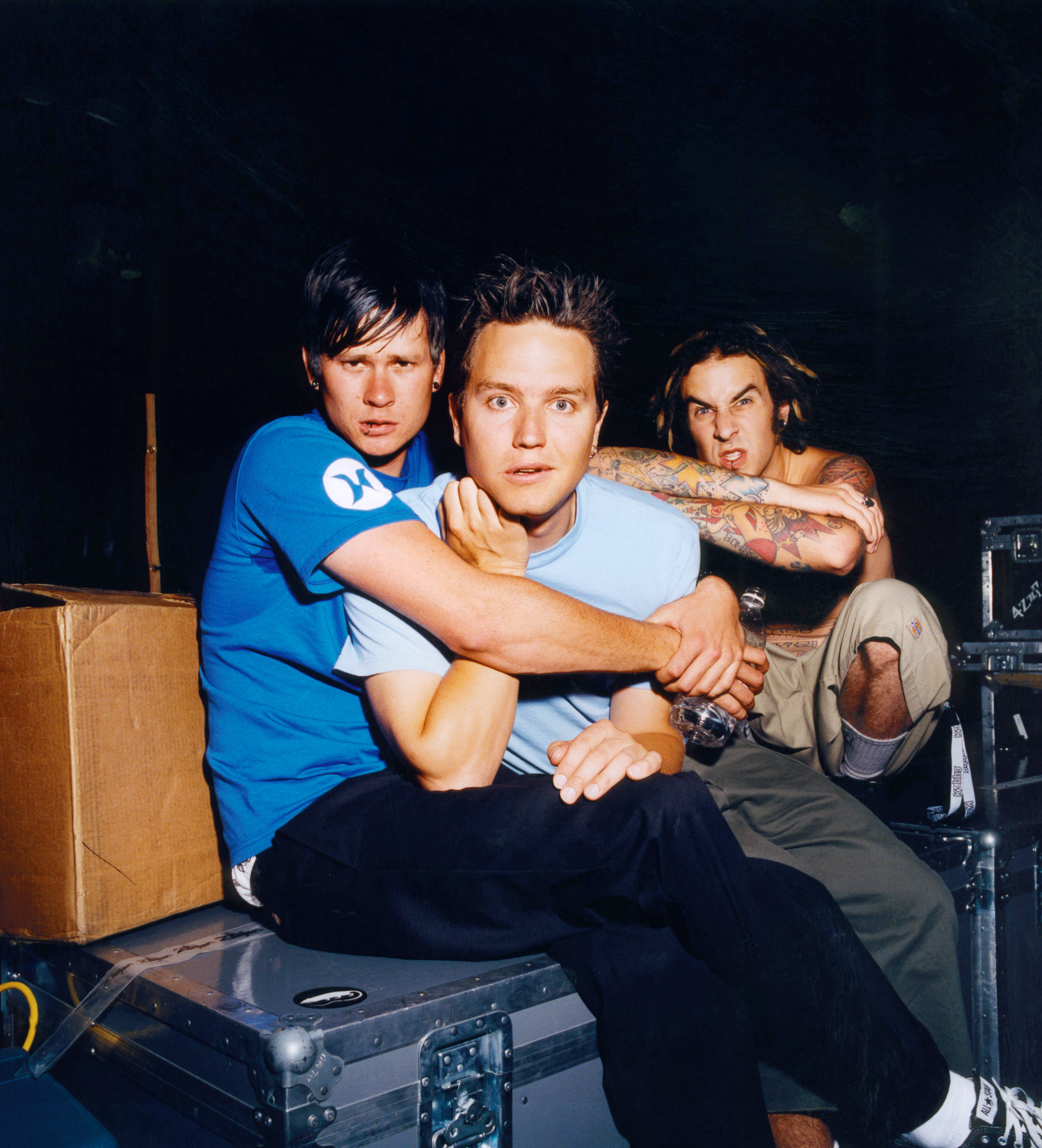
I can’t talk about the 90s and not mention Robbie Williams—he was ever-present throughout almost the entire decade. With his band Take That, he was part of a pop powerhouse that dominated the charts with a string of hit singles like "Never Forget," "Back for Good," and "Everything Changes." Take That were easily the biggest boy band of the 90s, and it was Robbie Williams and Gary Barlow who were the driving forces behind their success. In 1995, Robbie made the shocking decision to leave the band. Fans were stunned. Why would he walk away from one of the biggest groups in the world? Well, to go solo, of course.
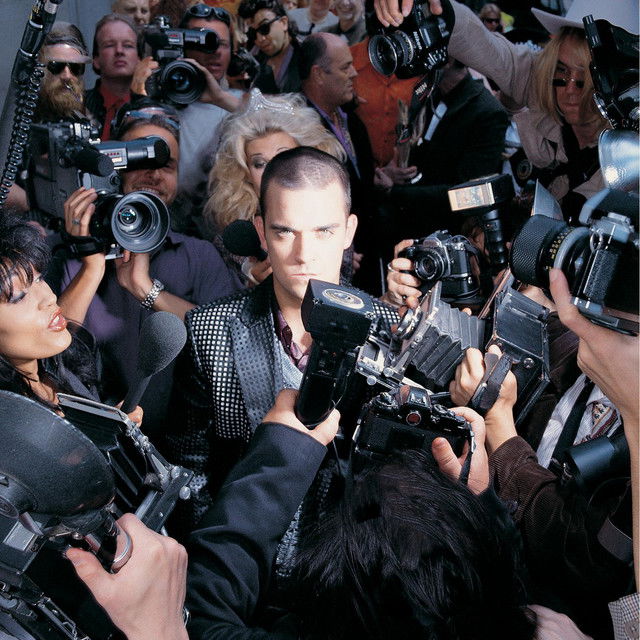
Robbie would release three albums in the 90s "Life Thru a Lens", "I've Been Expecting You" and "The Ego Has Landed". With a collection of singles that, in my opinion, far surpassed the success of Take That. Tracks like "Lazy Days," "Angels," "Feel," "Millennium," and "Strong" became anthems. Britain needed a new star after Britpop. Blur had headed to America, Oasis had gone to their drug dealers, The Verve couldn't hold it together, and Pulp, well, Pulp had released a masterpiece in This Is Hardcore but never aimed to be the biggest band in the world. So, in stepped Robbie...
The 90s, eh? What a mad decade. We've been everywhere from Liverpool to Seattle, watched movements grow and disappear, seen political parties change, countries form, bands break up, and witnessed the birth of celebrity culture. The world had changed, and there was no looking back now.
For all my friends born in the 80s/90s, especially Lauren, Luke & Zoe.
For the two biggest Be Here Now enthusiasts, Sean & Archie.
And last but by no means least, Take That's biggest fan, Noah x (sorry Grace).
Look at the Stars... Look How they Shine for You- The 00s Part 1
2000 not only marked the start of a new decade, but also the beginning of a new century and a new millennium. The world was changing, with the internet now a significant part of life, though no one could possibly comprehend just how much it would reshape everything. It would be quite the decade for Britain, in both good and bad ways. Music, too, would go through many changes; bands would emerge in ways previously unimaginable, the children of Britpop would begin to release albums, and Britain would have a few competitors for "band of the decade."
Let's start at the beginning. In July 2000, a new British band would release their debut album. Parachutes would be the first of four albums from Coldplay in this decade. The album took the sounds of Travis' The Man Who and developed them further. It was met with acclaim from both fans and critics, going on to become one of the cornerstone records of that "Post-Britpop" genre. It's a very good album, and gave us songs like "Yellow" and "Shiver" two of the band's best tracks and some of the best songs of the decade.
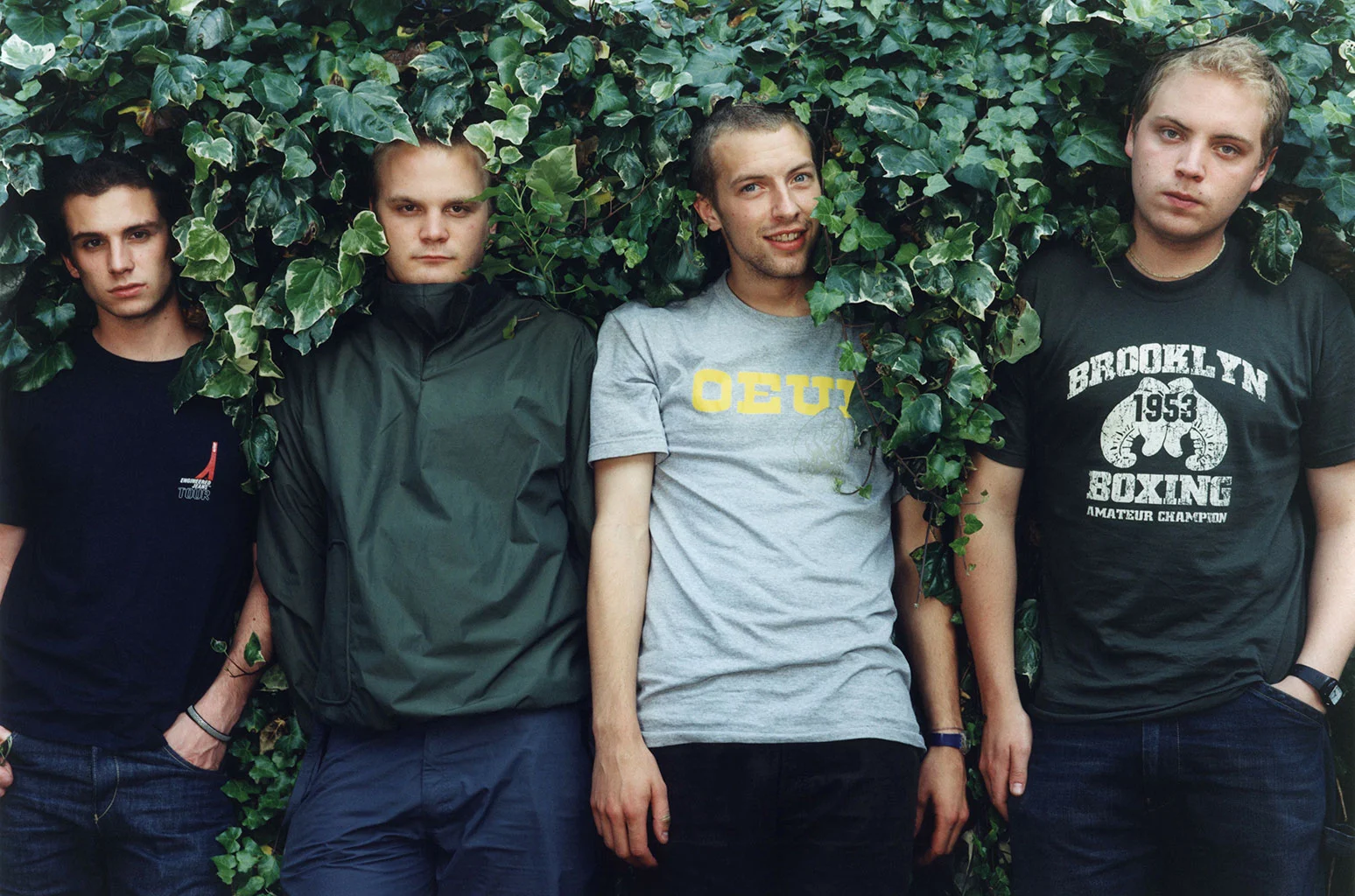
Oasis would also release a record in 2000, Standing on the Shoulder of Giants, their fourth album. It was the last album to feature founding members Paul "Guigsy" McGuigan and Paul "Bonehead" Arthurs. It’s not a bad album, but it sees the band coming to terms with what they had become, as well as reflecting on a decade of excess. The songs were written by Noel Gallagher during his time coming off cocaine, which resulted in some amazing tracks like "Gas Panic!" and the greatly underappreciated "Where Did It All Go Wrong?" But it also gave us "I Can See a Liar" and "Put Yer Money Where Yer Mouth Is". A real mixed bag.
Blur frontman Damon Albarn had a very different plan for the 2000s. He formed Gorillaz, an English virtual band, in 1998 with his friend Jamie Hewlett. This was something that had never been done before, and it saw Damon depart from Britpop sounds, instead embracing influences from hip-hop, world music, and punk. It was a genre-bending mix that would become one of the most successful musical projects of the decade. "Clint Eastwood" was the band’s first single, reaching Number 5 in the UK charts. What had originally started as a joke quickly became something much bigger. Gorillaz would go on to have a string of hits throughout the 00s, with their self-titled debut album in 2001 marking the start of it all.
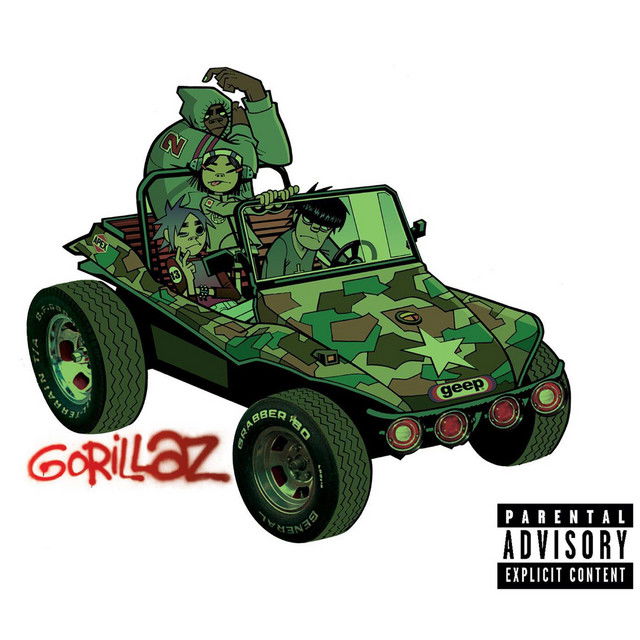
American bands had some success in the early part of the decade, just as they had at the end of the 90s. Limp Bizkit, Korn, Queens of the Stone Age, and Linkin Park all released albums that made an impact on the UK charts, with varying degrees of success. Linkin Park's debut album would age particularly well, while the others, in my opinion, didn’t stand the test of time as strongly. Limp Bizkit's reliance on gimmicks and Fred Durst’s polarizing persona made them divisive even at their peak, and their music has aged poorly.
However, one American band was about to change everything and drag guitar music into 'The Modern Age.' Julian Casablancas, Nick Valensi, Albert Hammond Jr, Nikolai Fraiture, and Fabrizio Moretti better known as The Strokes released their debut "Is This It" in August 2001, following the success of their EP "The Modern Age". They didn’t know it at the time, and in fact, no one did, but Is This It would become the catalyst for change and one of the most important albums of the decade. An album that would reinvent the guitar scene both in America and Britain, influencing bands on both sides of the Atlantic. The White Stripes and Yeah Yeah Yeahs were the first to ride the wave that The Strokes had created. The White Stripes would strip things back to basics, delivering brilliantly catchy guitar albums, while Karen O’s Yeah Yeah Yeahs would craft intricate pieces of guitar pop. "Maps" remains one of the best songs of the decade.
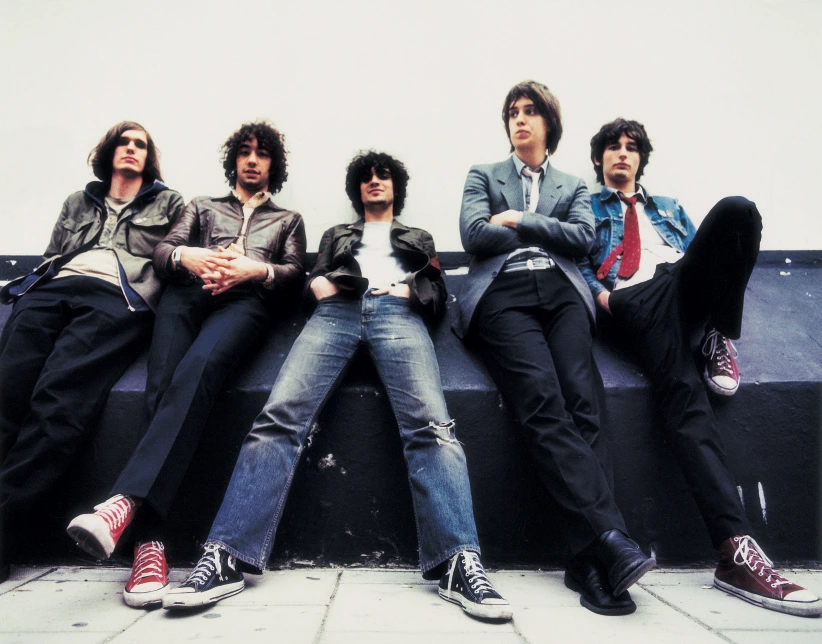
Kings of Leon would also be influenced by The Strokes, even earning the nickname 'The Southern Strokes.' They took The Strokes' approach to making music and added a heavier, darker, and more menacing tone to their songs. "California Waiting" from "Youth & Young Manhood" serves as a prime example of this. Both "Youth & Young Manhood" and the following album "Aha Shake Heartbreak" would go on to become two of the most important albums of the decade.
These 'Kings of the Rodeo' would play a huge part in 00s rock music throughout the decade, making an impact on both sides of the pond, but more on them later.
Guitar music in America had changed. Nu Metal and Grunge were old news. The Strokes had sparked a new movement, reinventing guitar music just when it needed it.
Meanwhile, in England....
Did You See the Stylish Kids in the Riot? The 00s Part 2
The Libertines entered the fray in 2002, and just like The Strokes had in 2001, they caused quite the scene. "What a Waster" was the band’s first single and would break the Top 40 with ease. NME called them "The best new band in Britain," and the hype began. The chemistry between Pete Doherty and Carl Barat is what made The Libertines brilliant—it was a fractured friendship that was always on the edge of spilling over, but that was part of the appeal.
The band would release "Up the Bracket" in 2002, propelling them to stratospheric heights. The songs were brilliant pieces of music, and in The Libertines' story, it’s sometimes easy to forget that. Yes, it was chaos, but songs like "Time For Heroes," "I Get Along," "Boys in the Band," and "The Good Old Days" are some of the best songs by a British band ever. It was always a circus with the band though—chaos seemed to find them, and Doherty’s drug use had increased greatly (he was using both crack cocaine and heroin by this time), which led to his relationship with the rest of the band deteriorating.
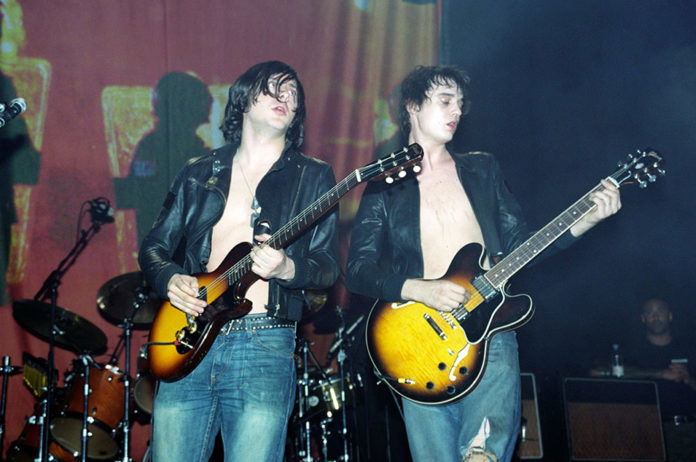
The band would release another album in 2004, "The Libertines," but the problems continued. Doherty’s addiction was still ever-present, and fallouts with record producers and in-fighting meant it was a recipe for disaster. Even so, it was a recipe for disaster that produced some of their best songs: "Can’t Stand Me Now," the perfect summary of Carl and Pete’s friendship, "What Katie Did," "Music When the Lights Go Out," and "What Became of the Likely Lads."
Don’t Look Back Into the Sun" was recorded in 2003 and released as a standalone single, receiving critical acclaim. It showcased just what the band could do, and to date, it’s still the most popular Libertines song. Their story is a real shame because they were a band that had so much and threw it all away.
We have learned a lot throughout this post, but the main lesson is: when one band disappears, there are others waiting in the wings... but more on that later.
Whilst The Libertines had been causing chaos, Coldplay released "A Rush of Blood to the Head," a pivotal album that marked a significant evolution from their debut, "Parachutes." Expanding their sound with grander arrangements and deeper emotional resonance, the album positioned Coldplay as a band with far-reaching ambition. Tracks like "Clocks" and "Politik" saw them drawing inspiration from the experimental brilliance of Radiohead and the sweeping anthems of Blur, rather than the gentler stylings of Travis. The result was a much more expansive and cinematic listen, balancing intricate musicianship with Chris Martin’s introspective lyrics.
The album was a critical and commercial triumph, earning widespread acclaim and several awards, including the Grammy for Best Alternative Music Album. It launched Coldplay into the global spotlight, solidifying their status as one of the most important bands of the early 2000s. With "A Rush of Blood to the Head," they gained the momentum needed to take on their first Glastonbury headline slot in 2002
They would headline for the first time, alongside the band I am about to mention next.
Stereophonics would release "Just Enough Education to Perform" in 2001, and they too would reinvent their sound from what they had been doing at the end of the 90s. This album has a much more intimate feel, with acoustic ballads like "Handbags & Gladrags" and "Have a Nice Day." It would showcase Kelly Jones’ ability as a songwriter, become the band’s biggest selling album, and launch them up the charts and to the top of festival bills.
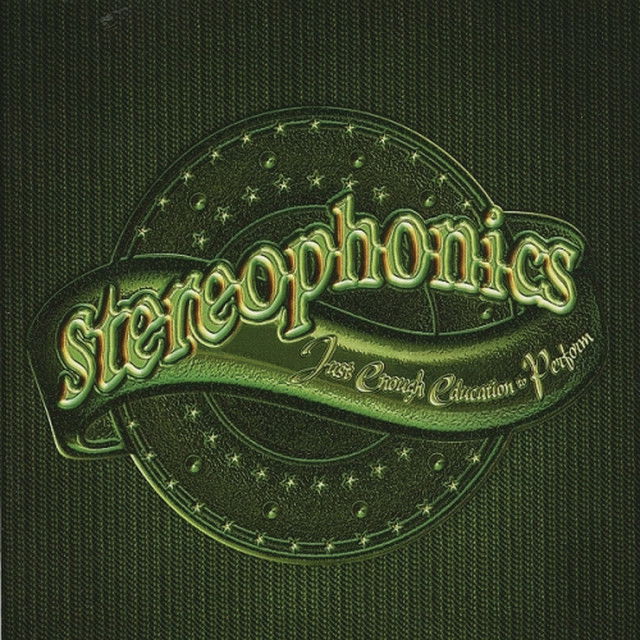
Another band worth highlighting from this period is Liverpool’s The Coral, one of the most underappreciated acts of the 2000s. What set The Coral apart was their refusal to be boxed into a single genre or sound. A trait that continues to define their timeless appeal. Instead, they built a diverse catalogue of brilliant songs that defied easy categorization. The early 2000s saw the release of standout tracks like the irresistibly catchy “Dreaming of You,” the psychedelic masterpiece “Goodbye,” and the shimmering acoustic gem “In the Morning.” These songs showcased their ability to blend influences from 60s psychedelia, indie rock, folk, and even sea shanties into something uniquely their own.
Remarkably, when The Coral released their self-titled debut album in 2002, they were barely out of their teens. James Skelly, the band’s frontman and primary songwriter, was just 18 a testament to their precocious talent. The album was met with critical acclaim and marked the beginning of a career that would see the band remain ever-present throughout the decade and beyond.
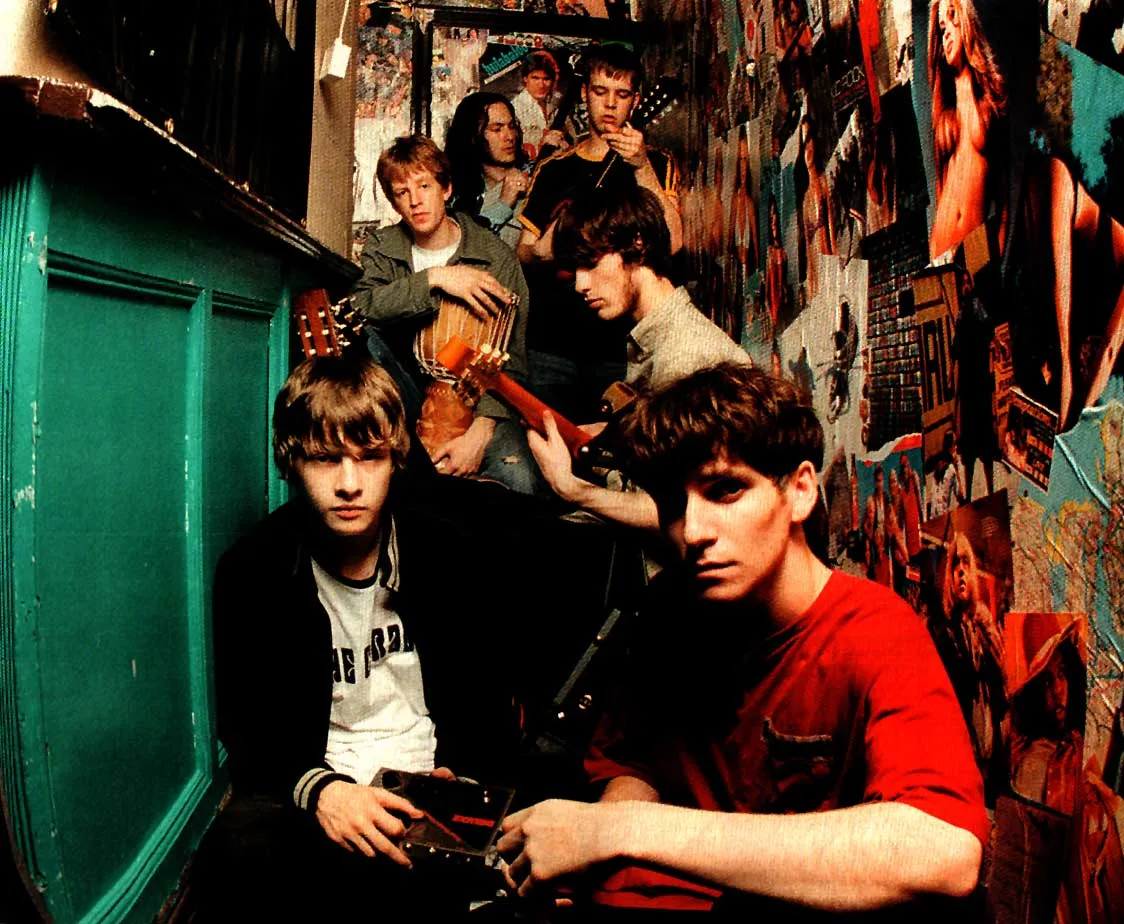
After their self-titled debut album in 2002, which earned them a Mercury Prize nomination, The Coral quickly followed up with "Magic and Medicine" in 2003. This sophomore effort saw the band refine their sound, delivering a more polished and cohesive record while retaining their signature blend of psychedelia, folk, and indie rock. Tracks like “Pass It On” and “Don’t Think You’re the First” became instant fan favourites, and the album topped the UK Albums Chart, cementing their place as one of Britain’s most exciting new bands.
In 2004, The Coral ventured into darker, more experimental territory with "Nightfreak and the Sons of Becker," a raw and spontaneous mini-album that showcased their willingness to take risks. Though less commercially successful, it gave fans a glimpse of the band’s more surreal and unfiltered side. Later that year, they released "The Invisible Invasion," produced by Geoff Barrow of Portishead. This album balanced introspection with their signature whimsical charm, producing standout tracks like “In the Morning” and “Something Inside of Me.” It received critical acclaim for its maturity and the band’s continued evolution.
I think it is also worth mentioning The Streets in this post. 2002 saw Mike Skinner release "Original Pirate Material," an album he famously recorded in a cupboard in his London bedroom. A rap album that drew influences from house music, UK garage, indie, and hip-hop, it created a genre-bending soundscape that was unlike anything we had heard before. At least not from British artists. The album’s raw, honest storytelling painted vivid pictures of everyday life, with tracks like "Has It Come to This?" and "Weak Become Heroes" capturing the grit, humour, and melancholy of urban Britain in the early 2000s.
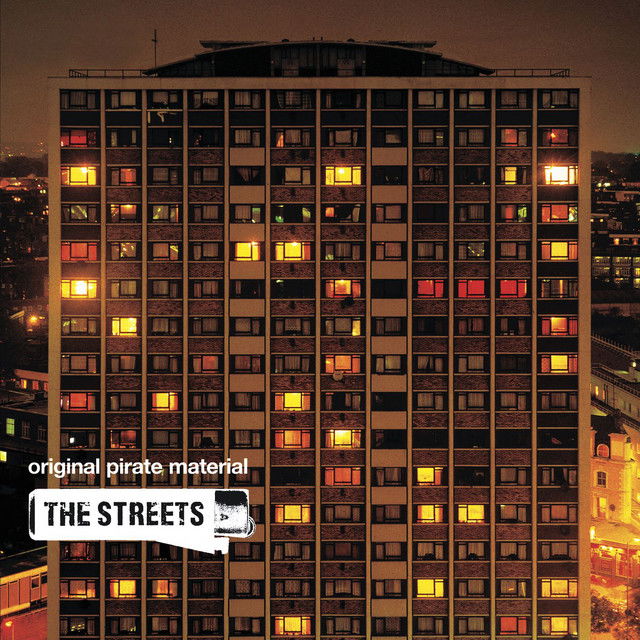
Skinner’s conversational delivery and self-deprecating wit made him relatable to a wide audience, while his sharp observations on nightlife, relationships, and social issues added depth and authenticity. "Original Pirate Material" wasn’t just an album; it was a cultural statement, giving a voice to a generation and putting British rap and garage firmly on the map. Its impact rippled far beyond its release year, inspiring countless artists and reshaping perceptions of what UK music could achieve.
In 2004, The Streets released their second album, A Grand Don’t Come for Free, a concept record that solidified Mike Skinner’s reputation as one of Britain’s most unique and innovative storytellers. The album told the story of a young man’s tumultuous journey over the course of a summer, blending humour, heartbreak, and introspection into a narrative that was as relatable as it was compelling. From losing £1,000 in cash to navigating the complexities of love and friendship, Skinner turned everyday moments into gripping, poetic drama. The Streets proved that garage and rap could be vehicles for profound storytelling, creating an album that remains one of the most iconic and innovative releases of the 2000s.
It was a good time for British music, but it was about to get a whole lot better. There were several bands waiting in the wings, all of which wanted to take on the world...
And take on the world they would.
Ich heiße Superfantastisch The 00s Part 3
2004... the year I started primary school. It would also be the start for two major British bands, Kasabian and Franz Ferdinand. It would also see The Streets hit Number One, Arcade Fire would release one of the classic albums of the decade, McFly would release a debut album. Oh, and "Mr. Brightside" would come out. We all know which I was listening to!
Franz Ferdinand's debut album is one of the most underrated albums of the 00s, and it always gets overlooked, in my opinion. It is a collection of 11 brilliant songs, and it would receive critical acclaim, and rightfully so. It is an absolute classic. There is not one weak track on the album. They had the ability to make each song unique in its own right, blending angular guitar riffs, danceable rhythms, and sharp, intelligent lyrics. Tracks like "Take Me Out" became instant anthems, showcasing the band's knack for infectious hooks and unforgettable melodies, while "Dark of the Matinée" and "Michael" brought a sense of drama and energy that set them apart from their contemporaries.
Britain may have found its "Libertines" replacement, but Franz Ferdinand wasn’t just a successor. They were innovators, blending art-rock ambition with pop accessibility in a way that felt both fresh and timeless. The album wasn’t just a debut; it was a manifesto, and it firmly cemented Franz Ferdinand as one of the defining bands of the mid-2000s.
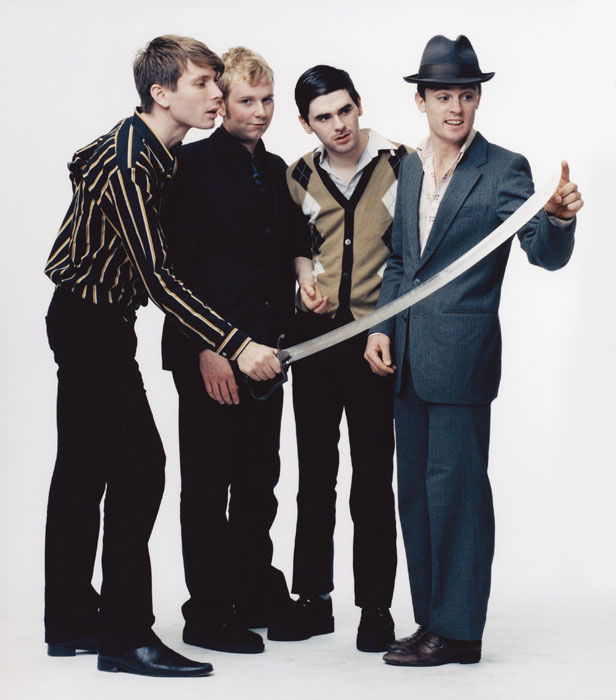
In 2004, Kasabian would release their self-titled debut album, embracing rock riffs combined with electronic synths. It was rock meeting rave once again, with the band's attitude reminiscent of The Libertines and Oasis, while incorporating the experimental spirit of artists like The Chemical Brothers and, dare I say, Blur. "Club Foot" became their first hit, a crossover track that could be heard at indie discos or football stadiums, appealing to both music lovers and sports fans alike.
Gorillaz were also back in 2005, continuing their experimental streak with "Demon Days," which featured two of their most well-received songs: "Feel Good Inc." and the Shaun Ryder collaboration "DARE." By this time, Gorillaz had become one of Britain’s most beloved acts, especially in America.
Kaiser Chiefs followed in 2005 with their debut album, another great British indie record. While they didn’t have the experimental edge of Kasabian or the same number of standout tracks as Franz Ferdinand, songs like "I Predict a Riot" and "Oh My God" have endured and stood the test of time. The album resonated with young listeners and brought the social commentary of the 90s Britpop era into the 21st century.
The same year, Bloc Party released Silent Alarm, an album that, while often overlooked in discussions of 2000s indie rock, deserves recognition as one of the most influential and genre-defying records of the era. Drawing from a wide range of influences, the album fused elements of post-punk, indie rock, and pop/dance music, creating a sound that was both urgent and intricate. It marked a departure from the often formulaic indie rock of the time, offering something far more experimental and forward-thinking.
Upon its release, Silent Alarm was a commercial success, selling in droves and quickly going Gold within just 24 hours in the UK. Tracks like “Helicopter” and “Banquet” became anthems, their driving rhythms and frenetic energy resonating with fans across the globe. “Helicopter” in particular, with its sharp guitars and biting lyrics, became a rallying cry for a generation of listeners craving something more than the formulaic offerings of mainstream rock at the time.
Silent Alarm wasn't just a snapshot of the indie rock landscape of the mid-2000s—it pushed the genre forward and helped define the sound of an era. It combined introspection and ambition in a way that few albums at the time did, crafting songs that felt both deeply personal and universally relatable.
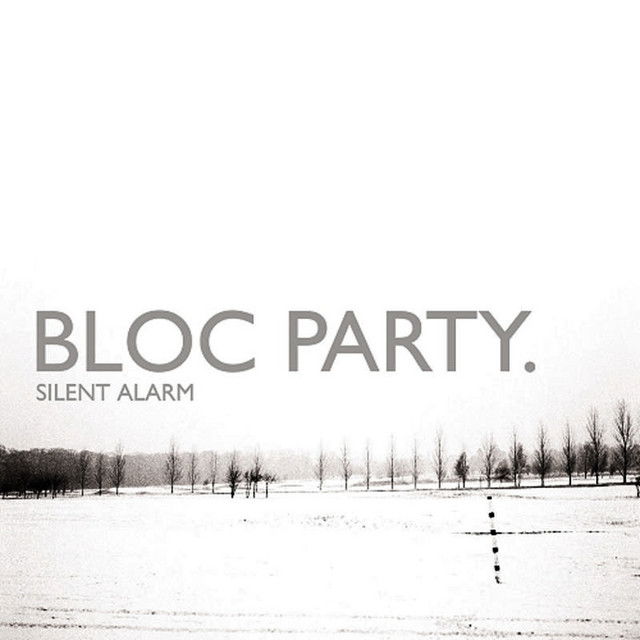
In 2005, Stereophonics released their fifth album, Language Sex Violence Other, marking a pivotal moment in the band’s evolution. While not a radical departure from their earlier sound, the album displayed a refined approach to their blend of rock, pop, and a hint of swaggering blues. It was their most commercially successful album in years, largely driven by the massive hit single "Dakota," which topped the UK charts and became one of the band's signature songs. Written during a tour with David Bowie, the track was deeply influenced by advice the legendary artist had given the band. Particularly the notion of embracing simplicity and emotional honesty in their songwriting. The song's soaring chorus, driving rhythm, and infectious energy captured the essence of the band's best qualities.
Beyond "Dakota," Language Sex Violence Other continued Stereophonics' trend of delivering polished, straightforward rock songs, though tracks like *"Superman" and "Devil" showcased a more introspective and experimental side to the band's sound.
But the biggest British band of the 00s was yet to come...
Anticipation has a Habit to Set You Up for Disappointment: The 00s Part 4
Arctic Monkeys formed in Sheffield in 2002, consisting of Alex Turner, Matt Helders, and Andy Nicholson, who met at high school, before Jamie Cook joined as a fourth member. They began gigging around the city while recording early demos, which they burned onto CDs to distribute at their shows. This led to the release of the "Beneath the Boardwalk" EP, and more and more people started to hear about the band. Around this time, social media was beginning to take off, and Arctic Monkeys were one of the first bands to take full advantage of this, with videos of their live performances being shared and their audience steadily growing.
By June 2005, they were signed to Domino Records, and their debut single, "I Bet You Look Good on the Dancefloor," recorded at Chapel Studios in Lincolnshire, was released on October 17, 2005. It went straight to No. 1 on the UK Singles Chart. Their second single, "When the Sun Goes Down," was released on January 16, 2006, and also debuted at No. 1, an extraordinary feat for a band’s first two singles.
This meteoric rise continued when, in 2006, they released their debut album Whatever People Say I Am, That's What I'm Not. The album became the fastest-selling debut album ever, and it featured classic Arctic Monkeys songs like "Fake Tales of San Francisco," "A Certain Romance," and "Mardy Bum." The NME summed up the album perfectly: "Essentially this is a stripped-down, punk rock record with every touchstone of Great British Music covered: The Britishness of The Kinks, the melodic nous of The Beatles, the sneer of Sex Pistols, the wit of The Smiths, the groove of The Stone Roses, the anthems of Oasis, the clatter of The Libertines."
Britain had found its new northern band destined to take on the world, and the maddest thing was, they were just getting started.
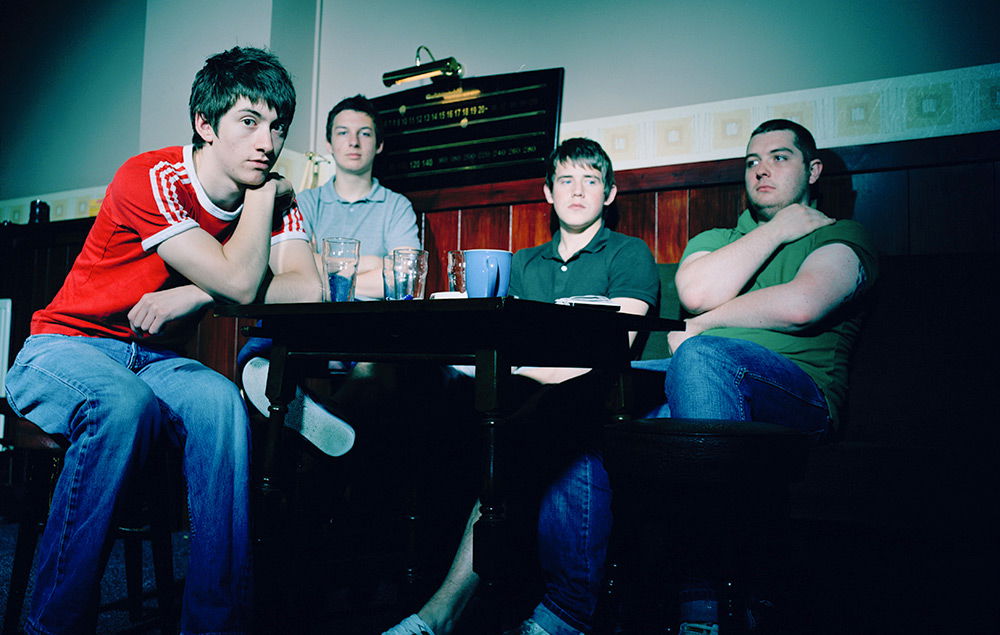
2007 would see Arctic Monkeys release their second album, Favourite Worst Nightmare, which showcased their growth and delivered another absolute classic. It became the most anticipated second album since The Stone Roses' Second Coming, and unlike the Roses, Arctic Monkeys didn’t mess it up. Twelve brilliant tracks proved that the band were here to stay. "Brianstorm" hit the airwaves with a ferocious energy, making it clear they weren’t messing about. "Fluorescent Adolescence" highlighted Alex Turner’s brilliant lyrics, wrapped around a catchy riff, and "505" would see the band pen one of the most important songs of their career. 2007 also marked the year they played the Glastonbury Pyramid Stage for the first time, solidifying their place in the musical world.
It wasn’t just Arctic Monkeys releasing albums that year, though. Reverend & the Makers, inspired by the Arctic Monkeys’ success, also hailed from Sheffield and released The State of Things in 2007. The album took what the Arctic Monkeys had done and added an electronic sheen, with great effect. This record featured brilliant songs written by a more mature frontman, commenting on both his hometown and the bigger issues affecting Britain at the time. The Cribs also released Men's Needs Women's Needs Whatever around the same time, produced by Franz Ferdinand's frontman Alex Kapranos. The album explored the new indie sound of the time, with "Men’s Needs" becoming a classic indie anthem of the era. The album served as a catalyst for the band’s continued success throughout the decade.
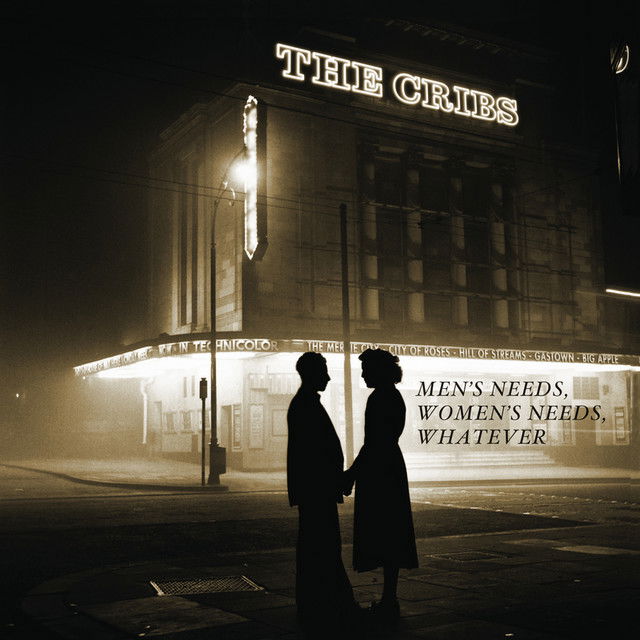
In 2007, Bloc Party released their highly anticipated follow-up to "Silent Alarm," "A Weekend in the City", an album that saw the band shift into darker, more introspective territory. While "Silent Alarm" was defined by its urgency and high energy, A Weekend in the City explored themes of alienation, hedonism, and disillusionment, set against the backdrop of a rapidly changing urban landscape. The album’s mood was more subdued, with lush, atmospheric instrumentation and a focus on emotional depth, signaling a departure from the more straightforward indie rock sound of its predecessor.
“Waiting for the 7:18” showcased this blend of electronic and organic elements, with its haunting keyboards and yearning lyrics capturing the feeling of stagnation and lost opportunities that pervaded much of the album. Meanwhile, “I Still Remember” and “On” harkened back to the anthemic, guitar-driven sound of Silent Alarm, yet with a more reflective tone.
With more politically charged songs like “Hunting for Witches,” Bloc Party moved away from the sound fans had heard on "Silent Alarm". On this album the band wanted to comment more on the world they were living in in particular the growing sense of fear and paranoia that permeated the early 2000s, particularly in the aftermath of global events like the 9/11 attacks and the Iraq War. It was and still is one of the most important records of that era.

Klaxons also emerged in 2007 with Myths of the Near Future, a rock band at their core but greatly influenced by 80s/90s rave music. Their sound was like nothing else at the time. Songs like "Golden Skans", "Atlantis to Interzone", and their amazing cover of the 90s rave track "Not Over Yet" launched the band up the charts, leading them to win the prestigious Mercury Prize in 2008.
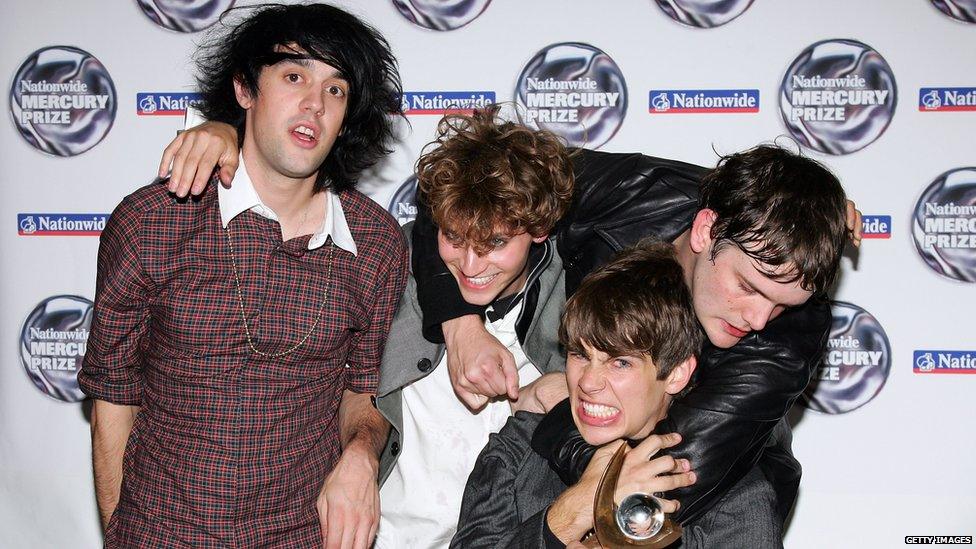
The Enemy released "We'll Live and Die in These Towns" in 2007, drawing clear influence from the social commentary of The Jam and the anthemic swagger of Oasis. With their debut album, the band brought to life the struggles and frustrations of working-class life in a small Midlands town, capturing the feelings of stagnation, ambition, and the yearning for something greater.
The title track, “We'll Live and Die in These Towns,” is a brilliant portrayal of the monotony and disillusionment of small-town life. With its biting lyrics and jangly guitars, it evokes the same sense of bleakness and frustration found in The Jam’s “That’s Entertainment.” It’s a song that paints a vivid picture of life in a town where ambition often feels crushed by the daily grind, yet still carries a sense of pride in the struggle. “Away from Here” follows suit with a more visceral, snarling tone, capturing the angst of wanting to escape the confines of the town and create something better for yourself.
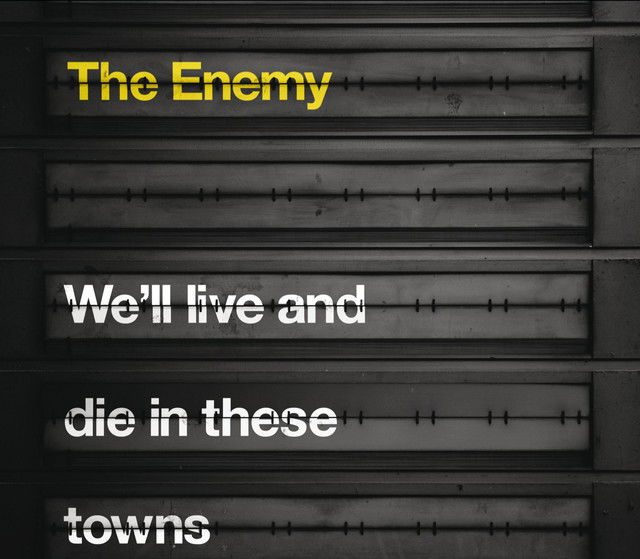
‘This Song is About You’ is another of these slower affairs. That builds and builds into something quite special, an anthem for the every man. If ‘We Live & Die in These Towns’ talks about the place, ‘This Song is About You’ is about the people. All of them. The hometown heroes, and villains, the people the band would leave behind. Another brilliant snapshot into working class life. Maybe the bands crowing moment.
One of the most underrated debuts of that era.
Courteeners, five friends from Middleton, released their debut album "St. Jude" in 2008, introducing the band to the British public and quickly establishing them as one of the most exciting new acts on the indie scene. The album captured the spirit of youth, brimming with energy and reflecting the joys and struggles of growing up. With themes that included not wanting to grow up, friendship, nights out, and the complexities of relationships, "St. Jude" connected with a generation of young listeners. The band’s raw, unpolished energy and relatable lyrics resonated deeply with those navigating the same turbulent period of their lives.
Tracks like the ferocious “Cavorting” and the anthemic “Not Nineteen Forever” became instant fan favorites, with their infectious choruses and sing-along potential. “Not Nineteen Forever,” in particular, became an anthem of youthful rebellion and nostalgia, perfectly encapsulating the feeling of wanting to hold onto youth despite the inevitable march of time.
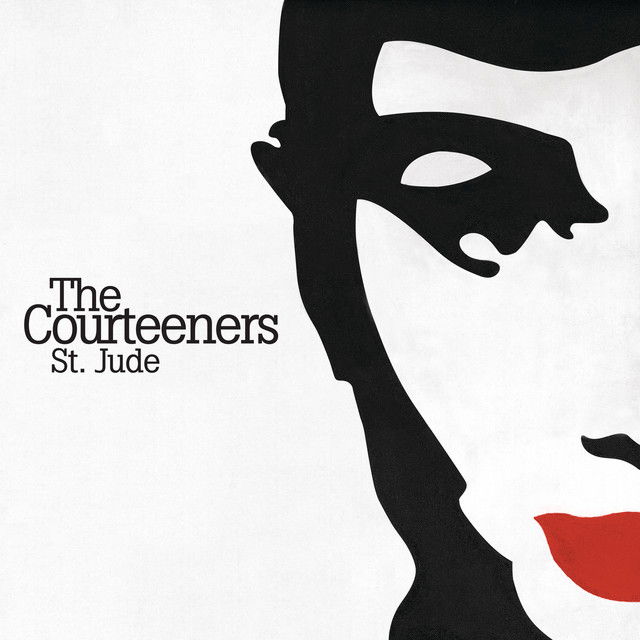
The success of St. Jude marked Courteeners as one of the most exciting new bands of the time, able to tap into the energy of British youth culture with a sound that felt both nostalgic and forward-thinking. Despite not achieving the same commercial heights as some of their contemporaries, the album’s enduring appeal is undeniable. To this day, songs from St. Jude remain anthems for a generation, and the album is still remembered as a raw, powerful declaration from a band that perfectly encapsulated the joys, frustrations, and disillusionments of youth. For many it is still the bands best work. It would be hard to argue against that.
The Wombats released A Guide to Love, Loss and Depression in 2007, a record that was ironically one of the most fun and infectious albums of the decade. Despite the heavy themes of love, heartbreak, and the struggles of growing up, the band managed to infuse the album with an upbeat, high-energy sound that made it a quintessential part of the UK indie scene.
Songs like “Let’s Dance to Joy Division” and “Moving to New York” became instant anthems, with their infectious choruses and tongue-in-cheek lyrics becoming staples of indie clubs across the UK. “Let’s Dance to Joy Division,” was written about drunken night out experienced by lead singer Matthew Murphy at Le Bateau, a nightclub in the band's home city of Liverpool, during which he and his then-girlfriend danced on a table to "Love Will Tear Us Apart" by Joy Division. The lyrics examine the irony of dancing happily to a famously sad song.
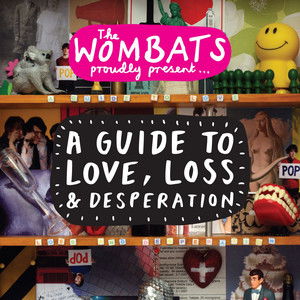
“Moving to New York” explored the excitement and disillusionment of seeking new beginnings in a big city, with a sense of humor that was distinctly The Wombats. These tracks resonated with listeners who were grappling with similar feelings of wanting to break free and experience life, while also dealing with the complexities of growing up in a rapidly changing world.
The Wombats kept it fun on this record, and that's why all these years later it still resonates. It's songs are catchy, and it blurs the line between joy and melancholy so well. One of the best debuts of recent memory.
Across the pond, MGMT followed Klaxons' approach with the release of Oracular Spectacular, an album that defined a pivotal moment in the indie and electronic music scenes. Featuring brilliant indie dance anthems like "Kids" and "Time to Pretend", the album blended psychedelic rock with electronic pop in a way that was both refreshing and groundbreaking. "Kids" became an instant classic, with its soaring chorus and evocative lyrics about the loss of innocence, while "Time to Pretend" offered a satirical, almost nihilistic view of fame and the excesses of youth. Both tracks captured the imagination of both American and UK audiences, becoming anthems for a generation grappling with growing up in an increasingly complex world.
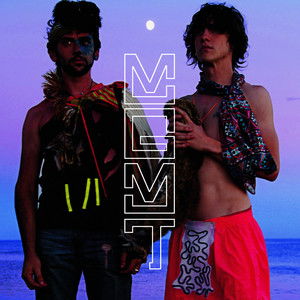
MGMT's ability to merge retro influences with futuristic sounds gave Oracular Spectacular a timeless quality that appealed to listeners across genres. The album’s eclectic mix of dreamy synths, shimmering guitar riffs, and quirky melodies made it stand out in the indie landscape of the late 2000s, earning critical acclaim and commercial success.
Fall Out Boy released Infinity on High, following the success of From Under the Cork Tree, solidifying their popularity on both sides of the Atlantic. Their mix of pop-punk and emo resonated deeply with a global audience, and songs like "This Ain't a Scene, It's an Arms Race" continued to cement their place in the mainstream.
Foo Fighters dropped Echoes, Silence, Patience & Grace, featuring singles like "The Pretender" and "Long Road to Ruin". This album reinforced Foo Fighters as one of the biggest rock bands in the world, with their ability to craft anthems that would continue to stand the test of time.
Now, I wouldn’t be doing 7-year-old Jack or even 23-year-old Jack justice if I didn’t mention MIKA. In 2007, "Grace Kelly", his No. 1 single, was everywhere, and it’s still a timeless piece of pop. At 7, I just thought it was a catchy tune, but at 23, I can truly appreciate how brilliant MIKA was. Those songs are pop masterpieces, and his debut album Life in Cartoon Motion is a unique, genre-blending collection of amazing tracks that continue to stand out in the pop music landscape.
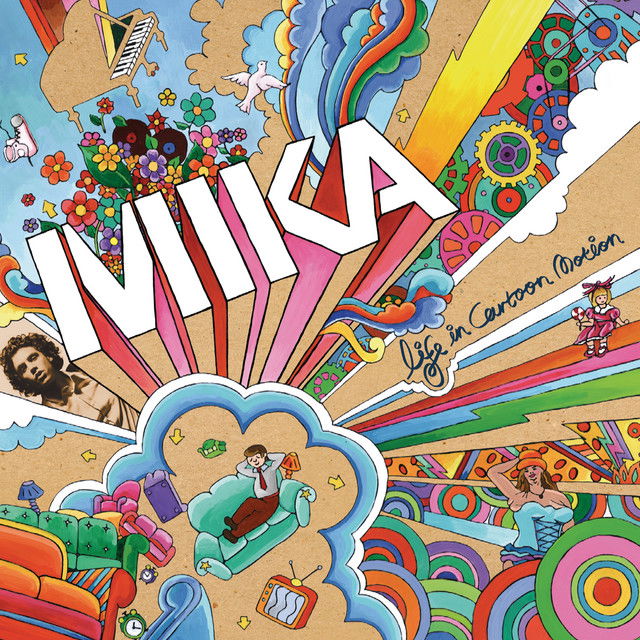
2007 even saw a rather unexpected reunion, for a one off gig. In 1980, Led Zeppelin parted ways after the tragic death of their drummer John Bonham. Each member went their separate ways to work on solo projects and other collaborations. Decades went by with few thinking that the band would ever reunite. Over a quarter-century later, the hopes and dreams of every Zeppelin fan came true. The band reunited at London’s O2 Arena. Not only that, Bonham’s son Jason joined them on drums.
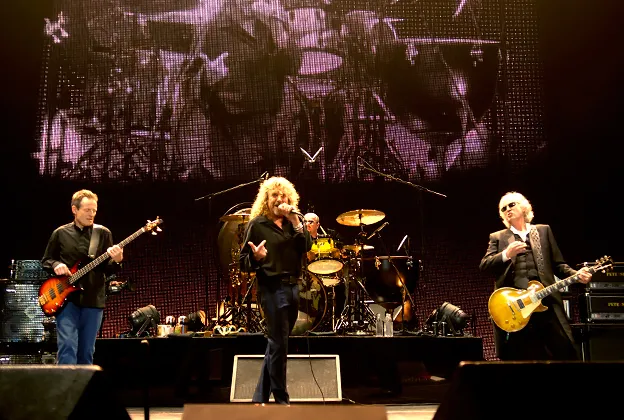
I couldn't not talk about Amy Winehouse in this section. She would release one of the most important albums of the decade in 2006, an album that showcased the true genius of her artistry. Back to Black is a powerful, timeless record, with songs like "Back to Black", "Rehab", and "Tears Dry on Their Own" highlighting her unique voice and unmatched ability to blend soul, jazz, and Motown influences into something distinctly her own.
The album, which runs a tidy 35 minutes with no filler, captured Amy at the peak of her powers. Back to Black opened doors for many artists who were a little bit different, paving the way for the likes of Lana Del Rey, Lady Gaga, and Florence Welch, all of whom have cited Amy as an influence. The legacy of this record cannot be overstated.
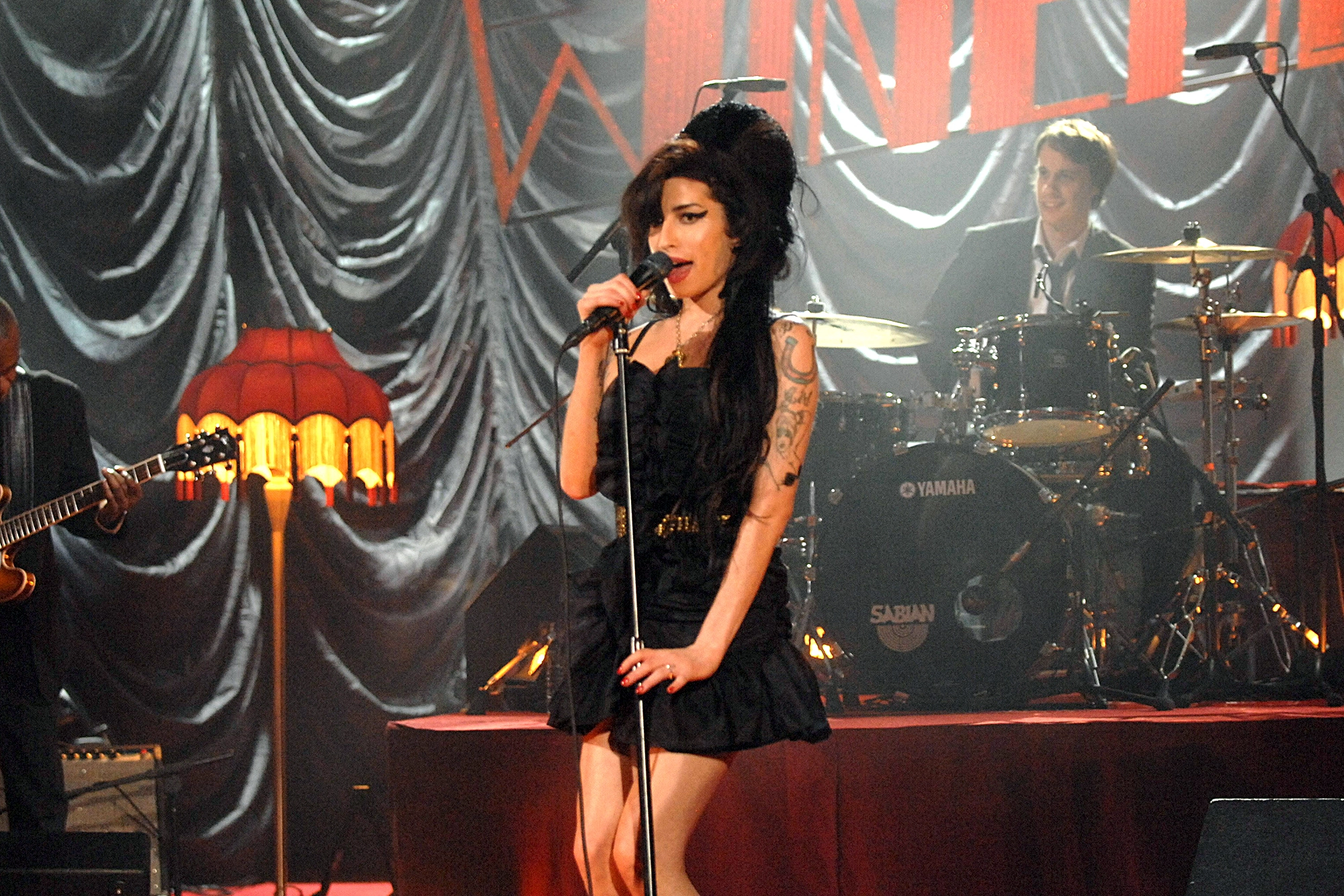
Upon release, Back to Black sold 3.5 million copies and earned Amy a staggering 5 Grammy Awards, cementing her place in music history. Quite simply, she is one of the most important British artists ever.
I Used to Rule to the World- The 00's Part 5
"Don't Panic," Coldplay fans, I haven't forgotten about them. 2008 would see Coldplay release their fourth album, "Viva La Vida or Death and All His Friends," following "X&Y", an album that received mixed reviews despite giving us hits like "Fix You" and "Speed of Sound." "Viva La Vida or Death and All His Friends" marked a significant reinvention for the band, as they teamed up with legendary producer Brian Eno to create a more experimental sound. With songs like "Strawberry Swing" and "Lovers in Japan," two of the most unique tracks in Coldplay's catalog, the album veered into new territory.
Ironically, despite the experimental approach, the album produced Coldplay's first Number One single, "Viva La Vida," a colossal stadium anthem built around strings and military-like drums. In my opinion, this is the last great Coldplay album, as the following decades saw them transition into becoming the biggest band in the world, though musically, they started to lose some of their earlier magic. Mad, isn't it?
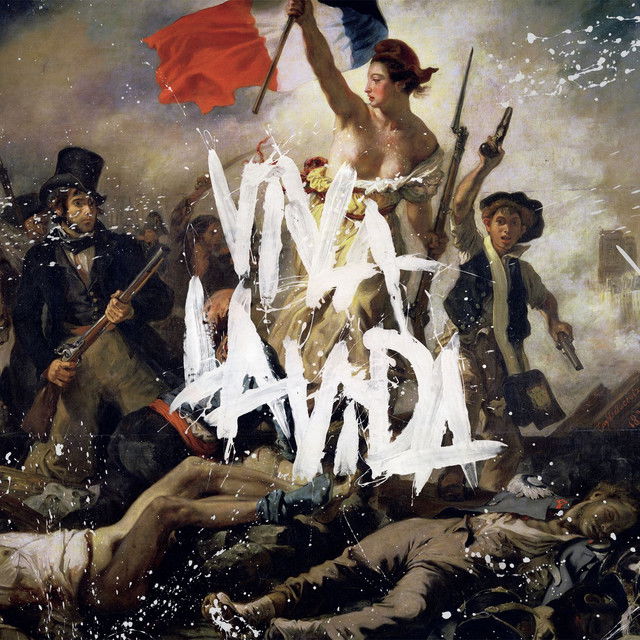
Kings of Leon would have a smash hit album in the UK in 2009 with Only by the Night, featuring "Closer," "Use Somebody," and the unlikely Number One hit "Sex on Fire." A song loved by fans but hated by the band, it had originally been written as a joke, and now it’s their most famous track. It's still a great song, though, and perfect for the live environment, where its anthemic quality shines brightest.
The album marked a significant departure from the raw, Southern rock sound of their earlier records like Youth and Young Manhood and Aha Shake Heartbreak, embracing a more polished, arena-ready style that brought them massive mainstream success. Tracks like "Use Somebody" demonstrated their ability to craft soaring, emotional anthems that resonated with a global audience, solidifying their position as one of the biggest bands of the era. However, not everyone was a fan of their new direction. Johnny Borrell of Razorlight famously called "Sex on Fire" "the apex, death, and afterlife of landfill indie all in one go."
2009 would also see Arctic Monkeys leave the UK and step into the desert to record their third album, "Humbug." Recruiting Josh Homme to sit in the producers chair alongside James Ford, the band made a very different album from their first two. To the shock of many, "Humbug" would become the most important album the band ever made. As NME said, "No longer were they just the biggest fish in the indie pond, they were rock stars."
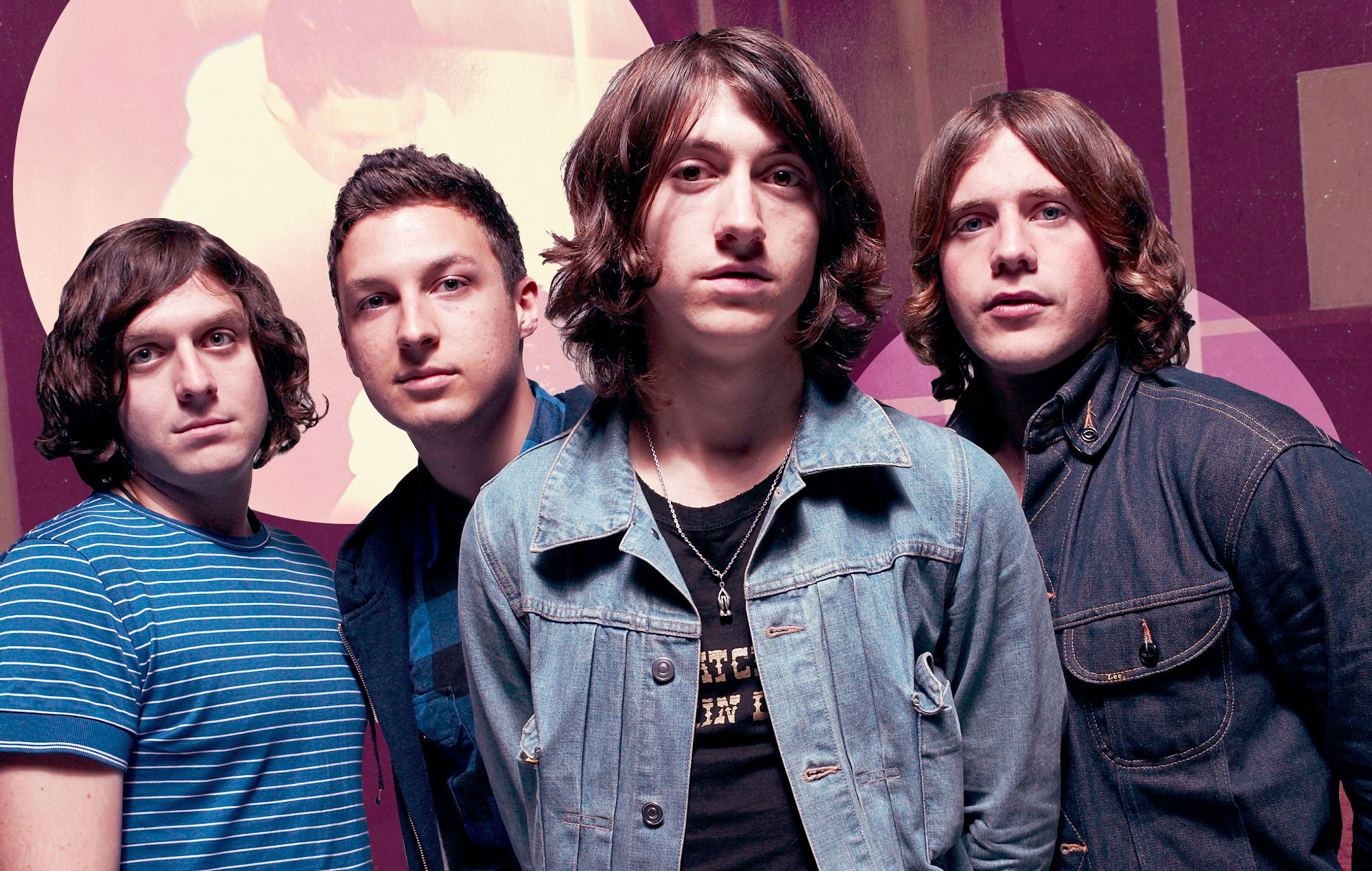
The album saw Arctic Monkeys become a better band, experimenting with new sounds and introducing a darker, more atmospheric feel to their music. Lyrically, "Humbug" is also one of the band's best. Tracks like "Secret Door," "Crying Lightning," and "Cornerstone" feature some of Alex Turner's finest lyrics. "Humbug" was also the catalyst for the band's musical journey in the next decade, as they would continue to evolve and push boundaries.
Florence & the Machine would release "Lungs" in 2009, her debut album, and it picked up where Amy Winehouse had left off with "Back to Black." A brilliant collection of songs, "Lungs" features tracks like "Dog Days Are Over," "You Got the Love," and "Rabbit Heart (Raise It Up)." It's a fantastic pop record that sees Florence Welch blend the daring artistry of Kate Bush with the pop sensibilities of Annie Lennox, creating one of the best albums of the decade. And it’s not the last time you’ll hear of Florence in this post either.

2009 was a strange year for Britpop. Blur had broken up in 2003 after the release of "Think Tank" and the departure of Graham Coxon. While it wasn’t a bad album, his absence was definitely felt. Following the breakup, the band members pursued various side projects—Damon Albarn focused on Gorillaz, Graham Coxon tried his hand at a solo career, Alex James became a farmer, and Dave Rowntree turned to politics. Imagine the shock in 2009 when a reunion was announced, with Graham Coxon back in the fold, and Blur set to headline Glastonbury as well as play massive gigs in London's Hyde Park.
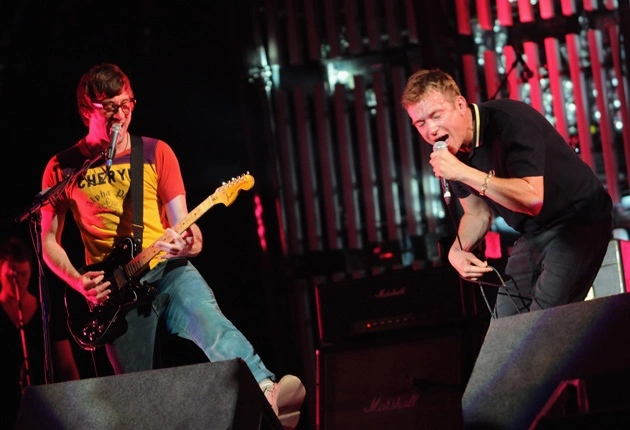
Meanwhile, Oasis were still plodding along. They had released a few albums in the 00s—"Standing on the Shoulder of Giants" in 2000, "Heathen Chemistry" in 2002, which gave fans tracks like "Little By Little" and "Stop Crying Your Heart Out", both of which became Top 10 singles. In 2005, the band released "Don't Believe the Truth", which featured "Some Might Say" as a return to form and gave the band two more Number One hits with "Lyla" and "The Importance of Being Idle."
However, they were no longer the same band they had been in the 90s. Britpop had died, and Oasis suffered from constant lineup changes, particularly in the drummer department. Though Gem Archer and Andy Bell were better musicians than Bonehead and Guigsy, the magic that defined Oasis in the 90s was gone. After the release of "Dig Out Your Soul" in 2008 and a subsequent world tour, tensions between Noel and Liam Gallagher reached their peak. It all came to an end on August 28th, 2009 in Paris. The city of love was where it all came to an end.
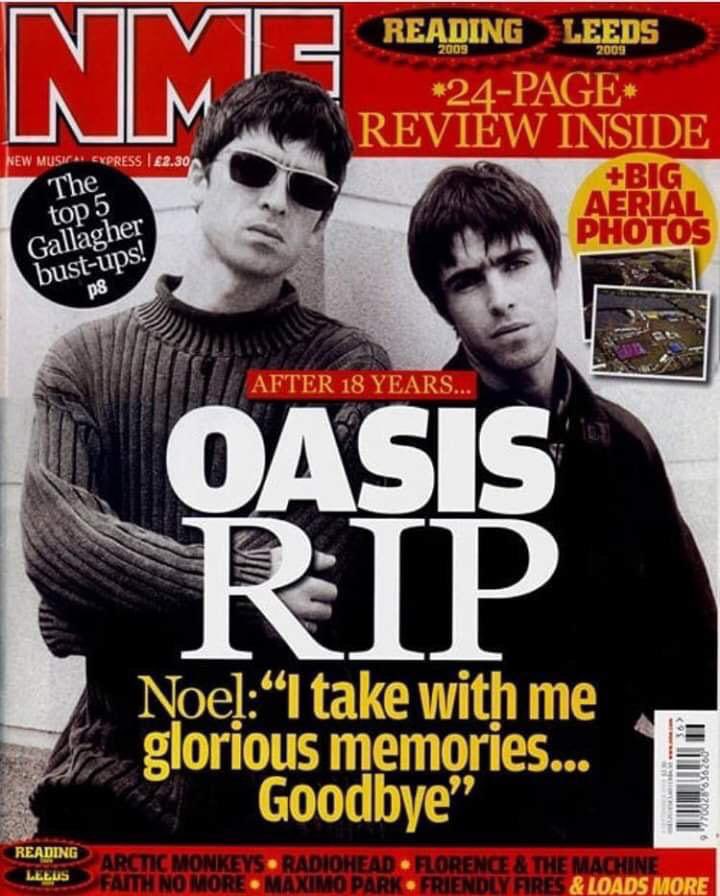
So that brings the 00s to an end. Blur were back, Oasis were gone. Coldplay were ruling the world, Arctic Monkeys were huge yet divisive, and Florence and Amy were ready to take on the world. Every major UK city had a band. Who knew what was going to happen next?
What You Know. The 10's Part 1
The 2010s was quite the decade for the UK, everything from London 2012 to Brexit. It was a decade of highs and lows. The world would also lose some musical icons in this decade, but more on that later.
In the early stages of the decade, Britain was going through a bit of turmoil—a coalition government was in power, and rioting was sparked in 2011. This is one of the first news stories I remember; it was quite a hostile time.
Music was going through a bit of a weird time too, especially guitar music. Of course, it was still present, and some of the old guard were still around. Arctic Monkeys would release their fourth album "Suck It & See" in 2011, which saw them take what they had learned on "Humbug" and master their craft. It was less experimental than Humbug and a lot more light-hearted in places. Controversial opinion here, this album is my favourite by the band. I think Alex's lyrics are some of the best he has ever written. Foals would release a second album right at the beginning of the decade, "Total Life Forever" in 2010, following on from debut "Antidotes" which had arrived in 2008. It saw the band shift in sound, always challenging themselves to make something different. Foals sounded like no other band, and this was a trend they would keep up throughout the decade. They were here to stay.
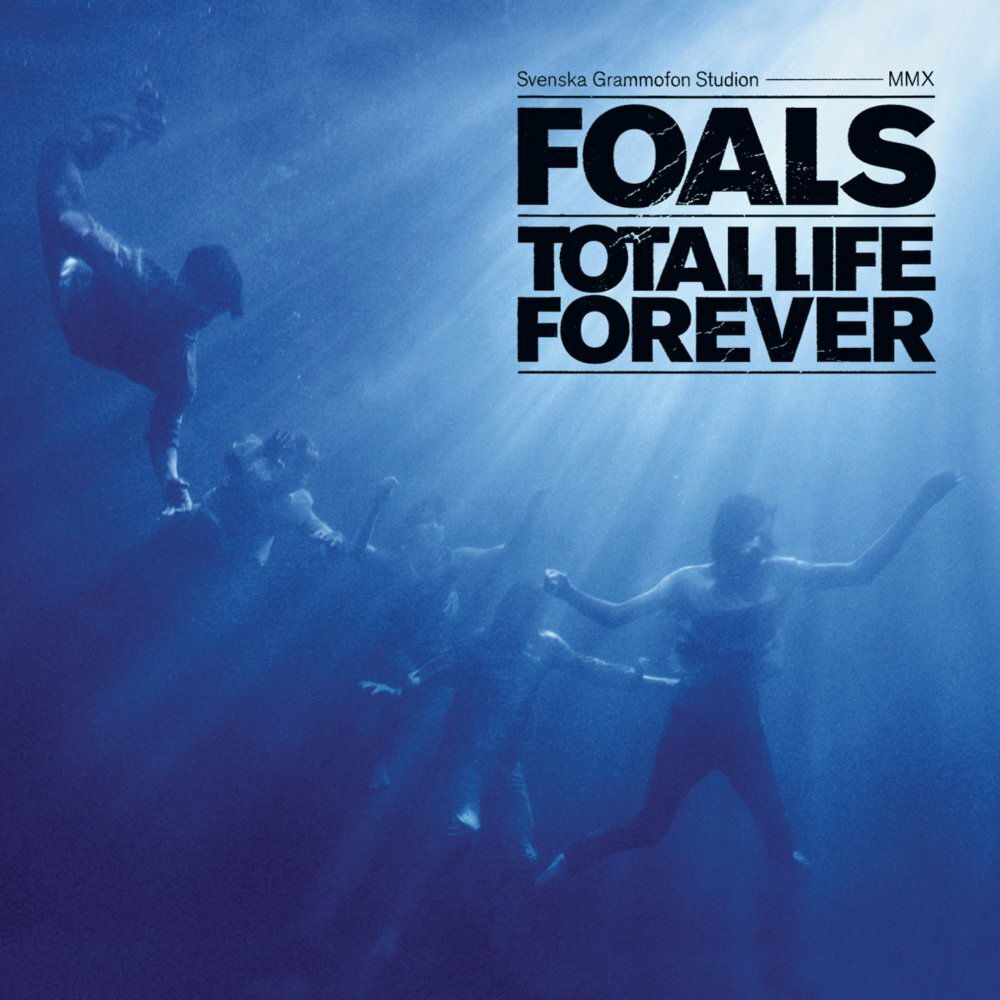
Kasabian would release Velociraptor after riding high on the successes of West Ryder Pauper Lunatic Asylum and the singles 'Underdog' and 'Fire,' which were released right at the end of the last decade. Velociraptor did not see the band slow down, however, featuring the singles 'Days Are Forgotten,' 'Goodbye Kiss,' and 'Switchblade Smiles.' It saw a band who were confident and willing to experiment, combining rock riffs with danceable synths. This album, along with the band's previous record, would launch them up the charts and higher and higher up festival bills. Arenas too were calling their name, and they wouldn't look back.
Following the breakup of Oasis in 2009, both Noel and Liam would launch separate projects in 2011. Noel would launch Noel Gallagher's High Flying Birds with a self-titled album, finding great success. Using leftover Oasis tracks and songs written after the breakup, his debut solo album would go on to be 2x Platinum in the UK. It was a return to form for the older Gallagher brother, featuring songs like 'Everybody's on the Run,' 'If I Had a Gun,' and 'AKA What A Life.' The album showcased just what Noel had been capable of for all these years, as well as a look into the future.
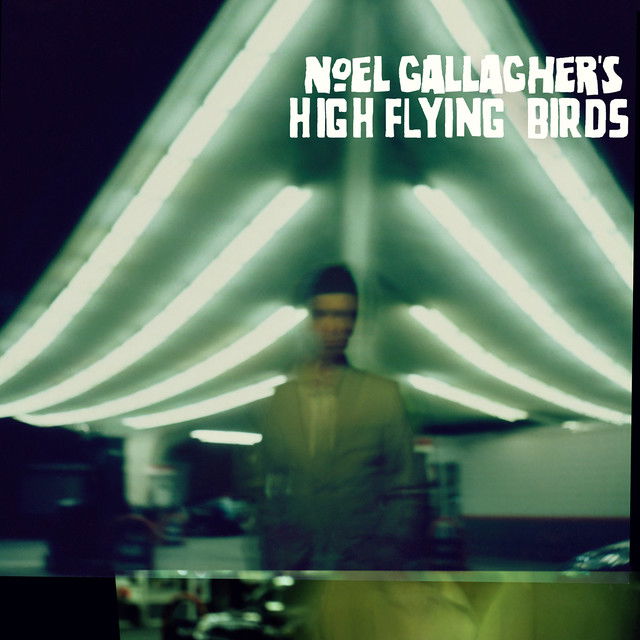
Liam's project was another band, Beady Eye, and that was a little less successful. Made up of Oasis members Chris Sharrock, Andy Bell, and Gem Archer, it was an okay project, but it could never live up to the Oasis hype. They also didn't really have a chief songwriter, so everyone had a go. This did lead to some great songs, like 'Flick of the Finger,' which took from the experimental side of Oasis, 'Soul Love,' a beautiful love song, and 'The Beat Goes On,' a very 60s-like track with a brilliant Pink Floyd reference. Beady Eye would release two albums: Different Gear Still Speeding in 2011 and BE in 2013 before breaking up in 2014. That would not be the last we hear of Liam Gallagher, though.
Kings of Leon would release Come Around Sundown" in 2010, and it saw them move away from the 'Southern Strokes' sound they had become famous for. After the success of 2008's Only By the Night, they had their eyes set on becoming the biggest rock band in the world. This album has some of their best work on it. 'Radioactive' is one of the most catchy songs they have ever released, 'Pyro' showcases the brilliant lyrics of Caleb Followill, and 'Back Down South' sees them strip things back a little.
Foster the People would release "Pumped Up Kicks" in 2011, which would give them a rather unlikely hit. A catchy sing-along pop song about a school shooting, it juxtaposed its dark, unsettling lyrics with an upbeat, almost carefree melody. The track became a cultural phenomenon, topping charts worldwide and sparking countless debates about its subject matter.
Tame Impala would release "Lonerism" in 2012, an album that looked back to The Beatles' psychedelic era, particularly drawing inspiration from 'Tomorrow Never Knows.' Using that song as a blueprint, Kevin Parker would craft an album about isolation and loneliness. Ironically, Lonerism would be the album that launched Tame Impala to the world, with songs like 'Elephant' and 'Feels Like We Only Go Backwards' becoming two of the most important rock songs of the decade. Lonerism is a classic album, and it's not even Tame Impala's best. That is to come...
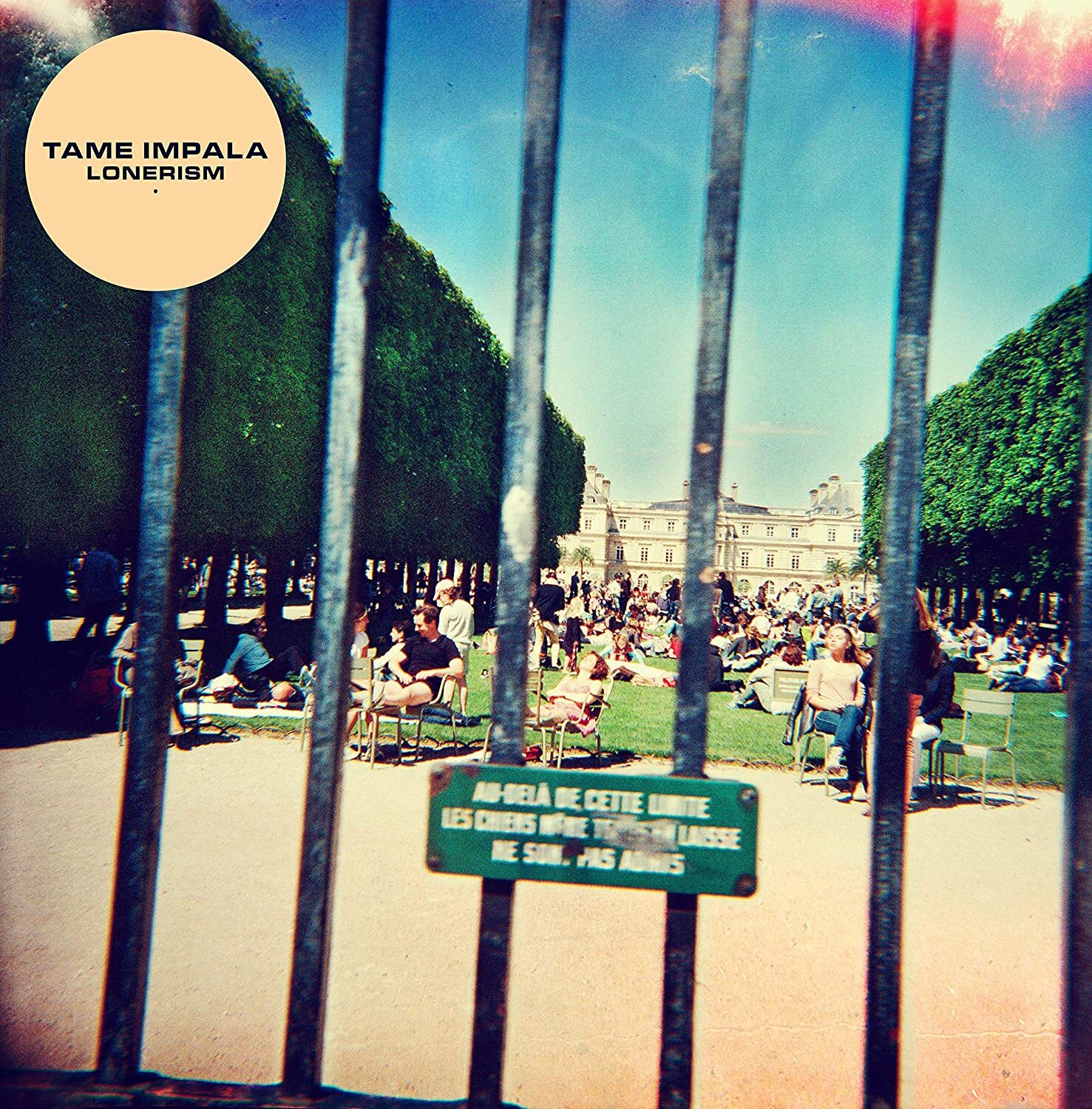
Two Door Cinema Club emerged in 2010 with Tourist History, a collection of songs that would soundtrack indie discos forever. Tracks like "What You Know," "Something Good Can Work," "Undercover Martyn," and "This Is the Life" became instant classics, cementing the band's reputation as one of the defining acts of the indie-dance crossover era. The album mixed post-punk hooks with shimmering electronic beats, creating a sound that was as infectious as it was unique.
Nearly every track feels like a single, and the band’s knack for writing irresistibly catchy melodies ensured their place in the festival circuit for years to come. The album remains a cornerstone of early 2010s indie, perfectly encapsulating the optimism and vibrancy of the era.
The Vaccines released their debut album, What Did You Expect from The Vaccines? in 2011, delivering a much-needed shot of adrenaline to the indie music scene. It was a perfect pop record, brimming with infectious hooks, driving guitars, and lyrics that balanced sharp wit with raw emotion. Tracks like "If You Wanna," "Post Break-Up Sex," and "Wreckin’ Bar (Ra Ra Ra)" became instant crowd-pleasers, earning the band a devoted fanbase almost overnight.
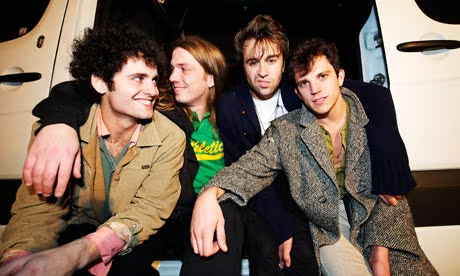
As Clash Magazine aptly summed it up in 2021: "Each song on their debut LP was an intense celebration of what makes pop music so good. Clear-cut emotions, catchy hooks, and wonderfully pithy lyrics, all of which drove right to the heart of what indie music was missing at that time." The album didn’t aim to break new ground but excelled in creating anthems that connected with fans on a visceral level. The Vaccines captured the spirit of indie at its most carefree, reminding everyone that sometimes, all you need is a guitar, a chorus, and a reason to jump.
After nearly two decades of silence following their split in 1996, The Stone Roses shocked the music world in 2011 by announcing their highly anticipated reunion. This marked the beginning of a series of triumphant returns that reignited the band’s legendary status.
The Stone Roses kicked off their reunion with a series of concerts that culminated in three sold-out shows at Heaton Park in Manchester in June 2012. These concerts, attended by over 220,000 fans, showcased the band’s enduring appeal and included beloved classics like "I Wanna Be Adored" and "She Bangs the Drums." The reunion was hailed as a triumph, with fans praising the band's energy and cohesion, which defied the long hiatus.
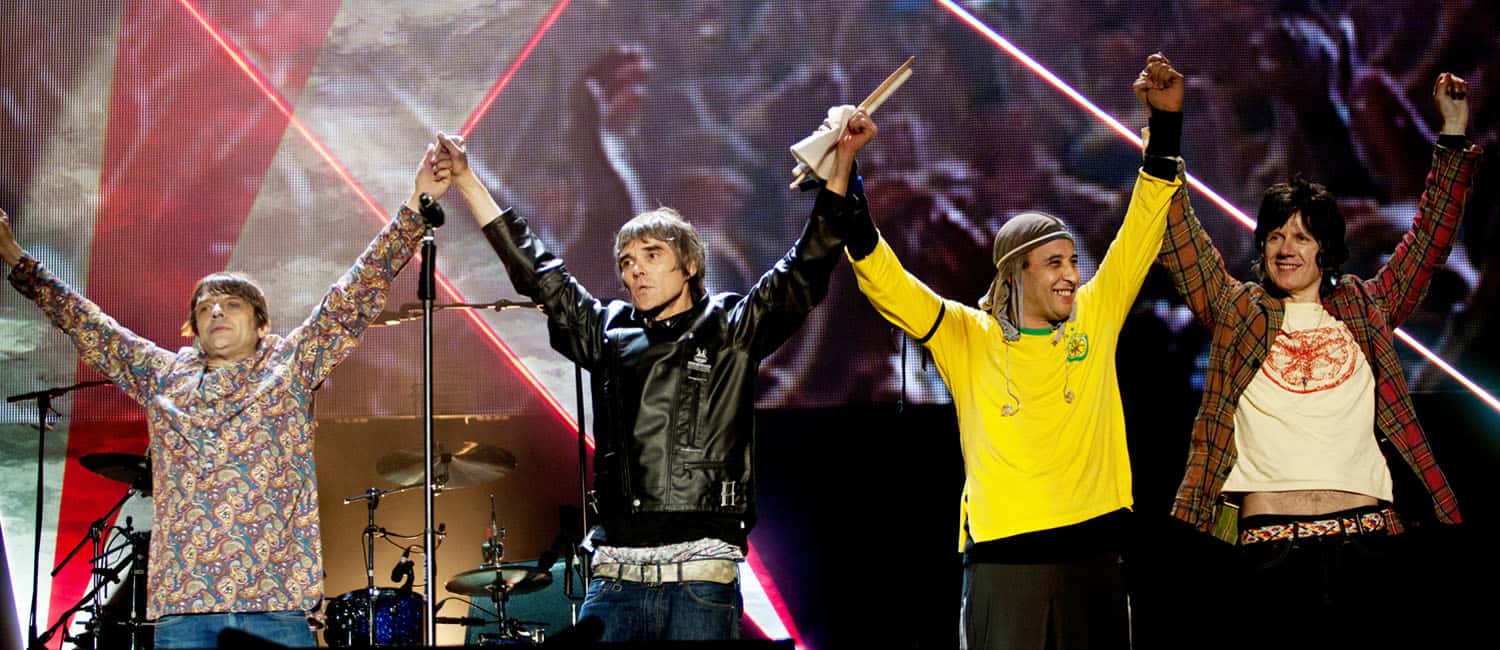
The Heaton Park shows saw the band supported by a whole host of support bands. Including Primal Scream, The Vaccines, and Beady Eye. The Manchester shows were not the only shows on that tour though. Opening with an intimate gig in Warrington, the band played in Barcelona, Amsterdam, Hultsfred, Aarhus, Lyon, Dublin, Lisbon, Milan before heading to Asia, playing in Signapore, Hong Kong and many more.
Festival headlines at the Isle of Wight and V Festival also made up the tour. Before huge shows at London's Finsbury Park and Glasgow Green. Once again backed up with some brilliant guests. Glasgow got Primal Scream, Jake Bugg and The View. London meanwhile got Courteeners, Dizzee Rascal, Rudimental, Miles Kane, Public Image LTD, and Johnny Marr.
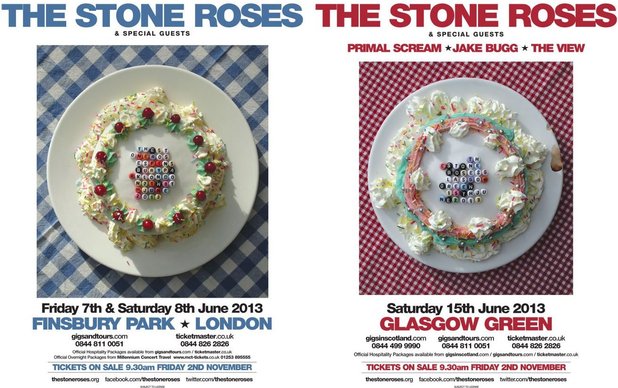
This isn't the last time we here from Ian, John, Mani and Reni though.
2011 would also see Britain lose one of its brightest musical sparks. Amy Winehouse tragically passed away at the age of 27, a shocking loss for both the music world and the public. Amy had the world at her feet, and her untimely death left a huge void in British music. Her death sent shockwaves through the industry, as many saw her as one of the last true, untamed talents of her generation. Despite her short career, Amy's influence continues to resonate, inspiring countless artists in various genres. Her passing highlighted the pressures of fame and the demons that often accompany
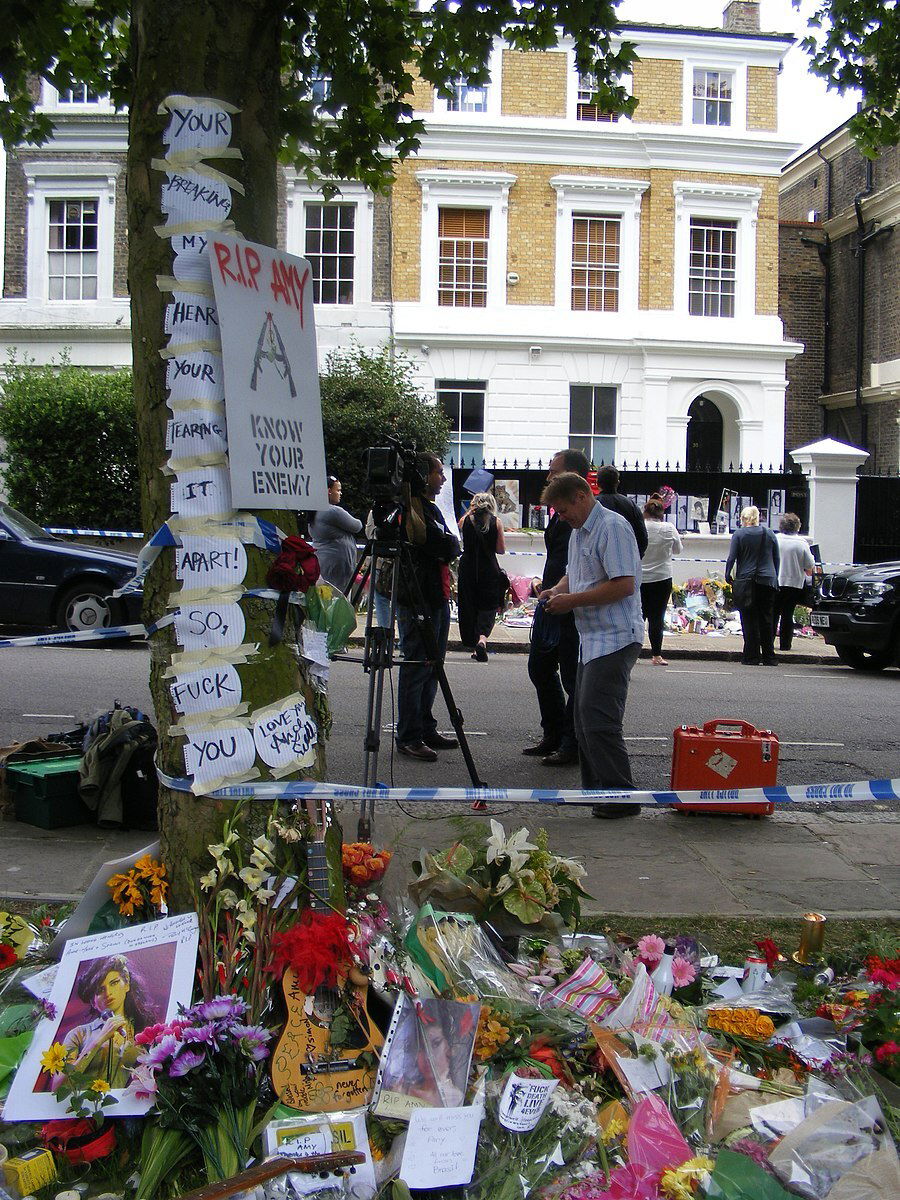
Things are about to get a lot more crazy though. A new rock revolution is about to begin
That rock’n’roll, eh- The 10s Part 2
2013 saw arguably the most important band of the decade release the most important album of the decade. "AM" was released in August 2013. It was an album that saw Arctic Monkeys become the biggest band in the world. The moment they stopped being defined by genre and instead became artists. Not a rock band, definitely not an indie band, but artists. Think Bowie, think The Beatles, think Stevie Wonder and think Bob Dylan. It was an album that saw the band dip into so many different genres, from 70's heavy metal to 90's hip-hop. It was the sound of a band that were just getting started. It would not have been possible without the desert trip four years previously. However, "AM" is the Arctic Monkeys a million miles away from the streets of Sheffield.
The band were booked to headline Glastonbury’s Pyramid Stage in June 2013, two months before "AM"'s eventual September release. This, in itself, was a statement and a half. Few bands have the nerve to book their biggest show of their career and play three new songs ("Do I Wanna Know?," "Mad Sounds," and "R U Mine?") from an album they hadn’t even finished yet. "AM" propelled them to being the biggest band in the world but also showcased Arctic Monkeys to a new generation. "My Generation" – we were teenagers at this point, and music was becoming more and more important. We had a band we could latch onto, something we could be proud of. Little did they know, they would also start a resurgence of guitar bands in the years following.

Following the success of AM, guitar music was undeniably back in the mainstream, and 2014 saw the emergence of two powerhouse debut albums that would shape the sound of rock for years to come. Royal Blood and Catfish and the Bottlemen both burst onto the scene, each in their own way reviving the spirit of guitar-driven music but with a modern twist. Royal Blood took the riff-heavy foundation laid by AM and pushed it to its raw, primal limits. Mike Kerr and Ben Thatcher, as a two-piece, created an incredibly unique sound that felt larger than life. Their self-titled debut album was loud, bold, and brash, capturing the essence of rock with intensity and ferocity. Tracks like "Ten Tonne Skeleton," "Out of the Black," and "Little Monster" are nothing short of modern rock masterpieces, with riffs that command attention and a rhythm section that gives the music a relentless energy. Royal Blood proved that you don’t need a full band to create a wall of sound, and their debut album marked them as one of the most exciting new rock acts of the decade
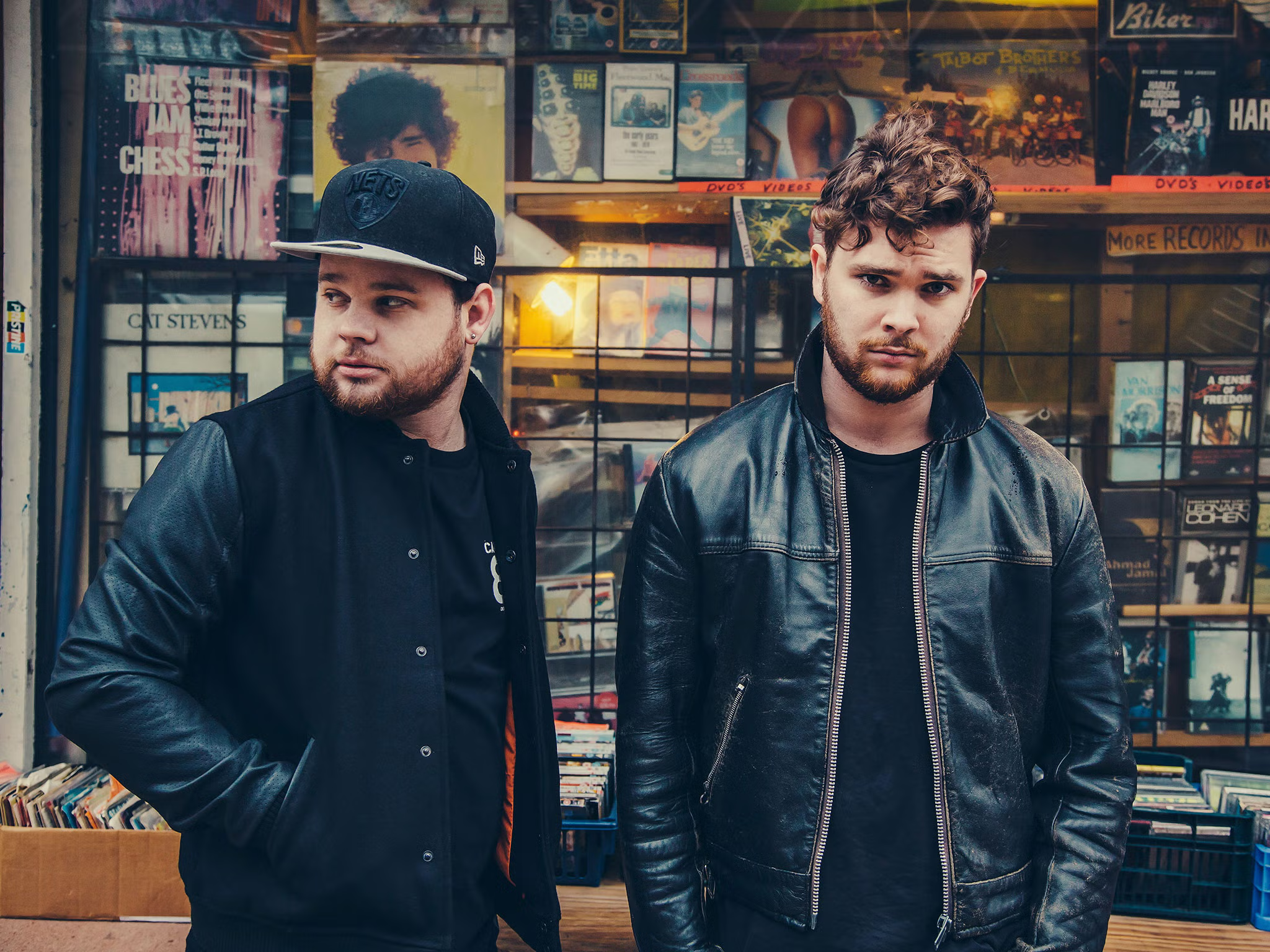
On the other hand, Catfish and the Bottlemen took a more classic approach to guitar-driven music, delivering a debut album packed with youthful exuberance and raw, unfiltered energy. The Balcony, with its infectious hooks and relatable lyrics, was an album about young love, lust, and the messy, exhilarating moments that come with being in your twenties. The critics may have been harsh on it, but fans adored it for its unpretentious nature and its ability to capture the spirit of the "AM" generation—songs written for long nights with friends, screaming along to lyrics that felt like anthems of rebellion and freedom. Tracks like "Kathleen," "Homesick," and "Cocoon" are built to be shouted back at the stage, with big, sing-along choruses and lyrics that spoke to the carefree yet introspective nature of youth. While The Balcony didn’t reinvent the wheel and clearly borrowed influences from the likes of Oasis and The Libertines, it didn’t need to. It was a record made for the moment, capturing the spirit of youthful exuberance and creating timeless tunes that would resonate with fans for years to come
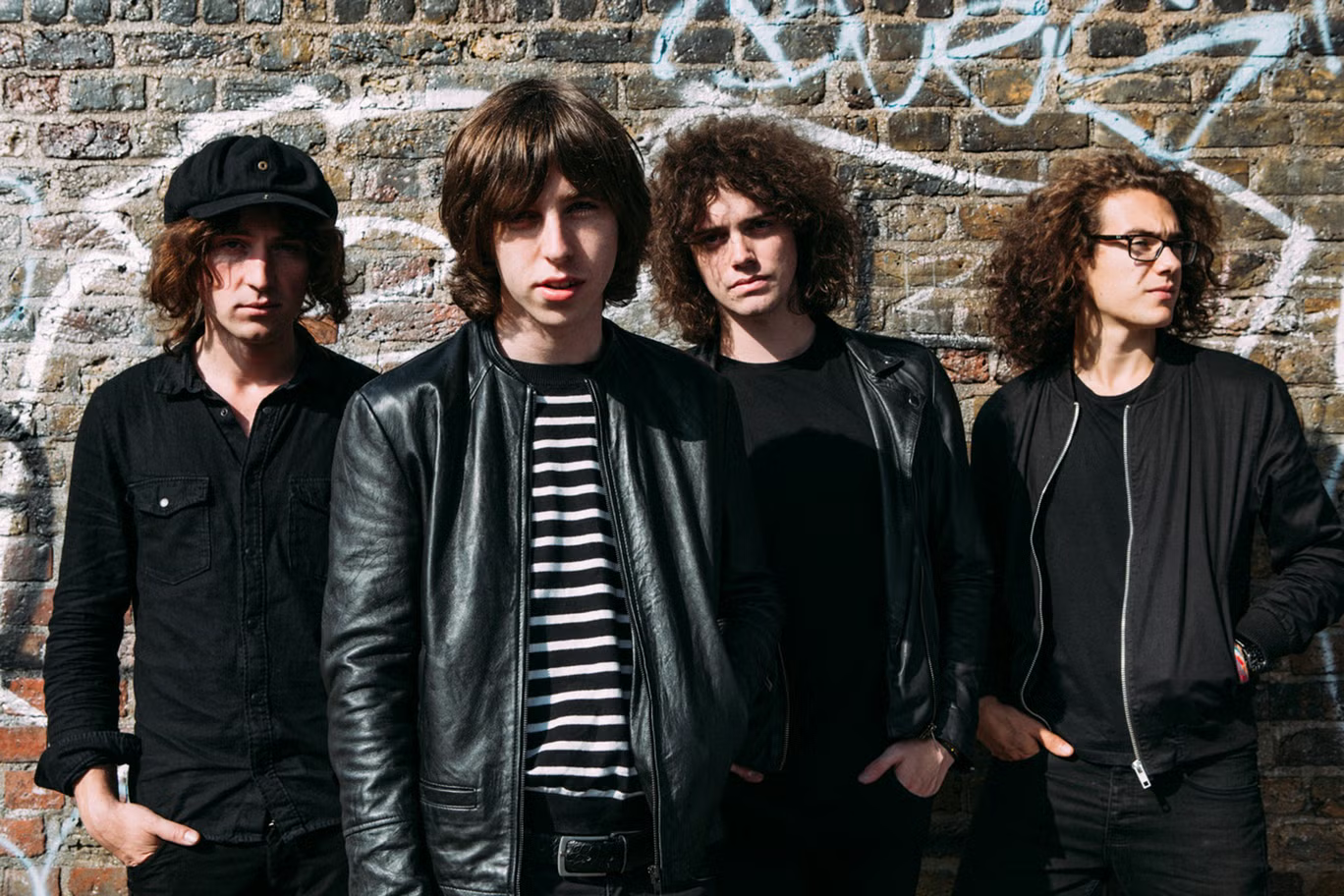
For many this album was their introduction to guitar music, a door opening to a new genre that they hadn't listened to before. Despite what happened with Catfish later on. The 11 songs on "The Balcony" are some of the best in recent memory.
Earlier in 2013, before the release of AM, a Manchester band would drop a self-titled debut album that would change the trajectory of their career and indeed, the entire music landscape of the decade. The 1975's debut album was a bold, genre-defying collection that showcased the band's versatility and vision. From the dark, gothic tones of "Robbers" to the upbeat indie dance of "Chocolate," the album effortlessly blended a wide range of influences, including 80s synth-pop, R&B, rock, and electronic. Tracks like "The City" brought a punchy, infectious indie edge, while "Sex" introduced a more provocative, sultry side of the band's sound, further showing their dynamic range. The 1975’s ability to mix styles with such ease was a testament to their unique sound, and their debut album caught the attention of both critics and fans. It wasn't just a pop record—it was a sonic exploration that pushed the boundaries of what pop music could be in the modern era.

The album’s success set the stage for a remarkable decade for the band. The 1975 was the first of three albums they would release during the 2010s, each one marking a new step in their evolution. While the debut was a monumental moment for the band and solidified their place in the alternative and mainstream scenes, it stands as the weakest of the three, not because of any lack of quality, but because the albums that followed would push their sound even further. "I Like It When You Sleep, for You Are So Beautiful Yet So Unaware of It" and "A Brief Inquiry Into Online Relationships" both built on the foundation laid by this debut, refining their approach and embracing even more experimental sounds and themes, making their later works even more groundbreaking. The fact that the debut is seen as the “weakest” of the three speaks volumes about the band's growth and their ability to continuously reinvent themselves while maintaining their distinctive sound. The 1975's self-titled debut may have been the beginning, but it remains an essential part of the band's legacy, showing how they captured the spirit of the time with their eclectic mix of genres and forward-thinking pop sensibilities.
Stereophonics would release one of their best albums in 2013, "Graffiti on the Train." It marked a completely different direction for the band, with a much more cinematic approach, accompanied by a film. It would be considered some of the band's strongest work to date and a real return to form. It propelled the band into the modern era, reinforcing them as one of Britain's biggest bands. They would release "Keep the Village Alive" two years later in 2015, which featured "C'est La Vie" and "I Wanna Get Lost With You," two gems in the band's discography.
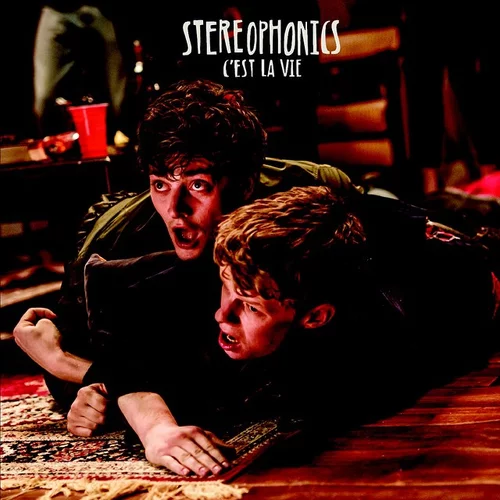
2015 saw the release of Noel Gallagher's second solo album, and two debut albums from two brilliant British bands. Liverpool's Circa Waves would release "Young Chasers," a brilliant indie pop record much in the vein of The Vaccines and Catfish and the Bottlemen. A collection of catchy, infectious hooks and lyrics. Perfect for festival fields and nightclub dancefloors. "T-Shirt Weather" would become one of the crowning jewels not only for the band themselves but also of this movement.
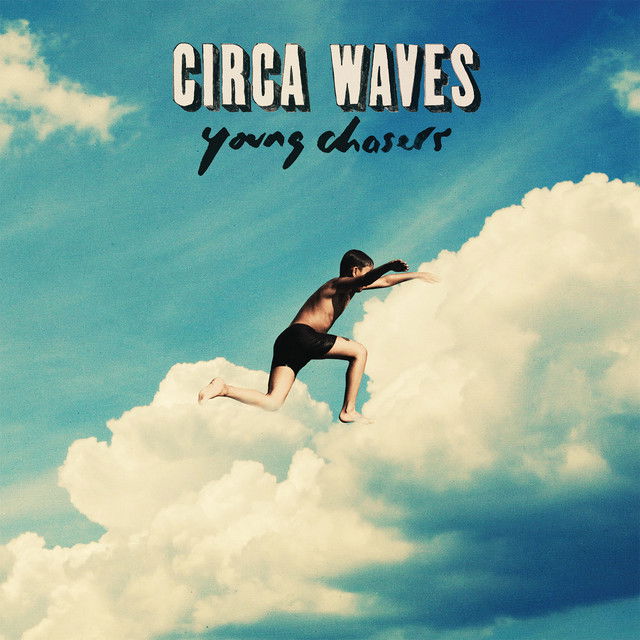
Wolf Alice released My Love is Cool, a genre-defining record that seamlessly blended grunge, indie, rock, and even touches of folk and country, crafting one of the most important albums of the decade. The album was a masterclass in versatility, with tracks like the dreamy "Bros," the hauntingly powerful "Silk," and the explosive anthem "Moaning Lisa Smile." Each song showcased the band’s ability to switch moods effortlessly, making the record feel both cohesive and diverse.
Frontwoman Ellie Rowsell’s evocative vocals, paired with the band’s dynamic instrumentation, created a sound that was fresh and deeply resonant. My Love is Cool didn’t just announce Wolf Alice’s arrival; it cemented them as one of the most innovative bands of their generation. The album received widespread critical acclaim and set the stage for an even more ambitious future.
Noel Gallagher, meanwhile, decided to break free from the shadow of Oasis, embarking on a journey of experimentation that redefined his career. With Chasing Yesterday, he began to explore new sounds, crafting a blend of psychedelic rock, jazz, and classic songwriting. Tracks like "Riverman," with its haunting saxophone solo, and "The Right Stuff," with its hypnotic, groove-laden rhythm, signaled a clear departure from the stadium anthems of his Oasis years. The album was a statement of intent, showing that Noel was willing to take risks and push his music in new directions.
"Chasing Yesterday" not only solidified Noel Gallagher's place as a solo artist but also hinted at his growing ambition to push boundaries, setting the stage for the more radical experimentation of his next album, Who Built the Moon?.
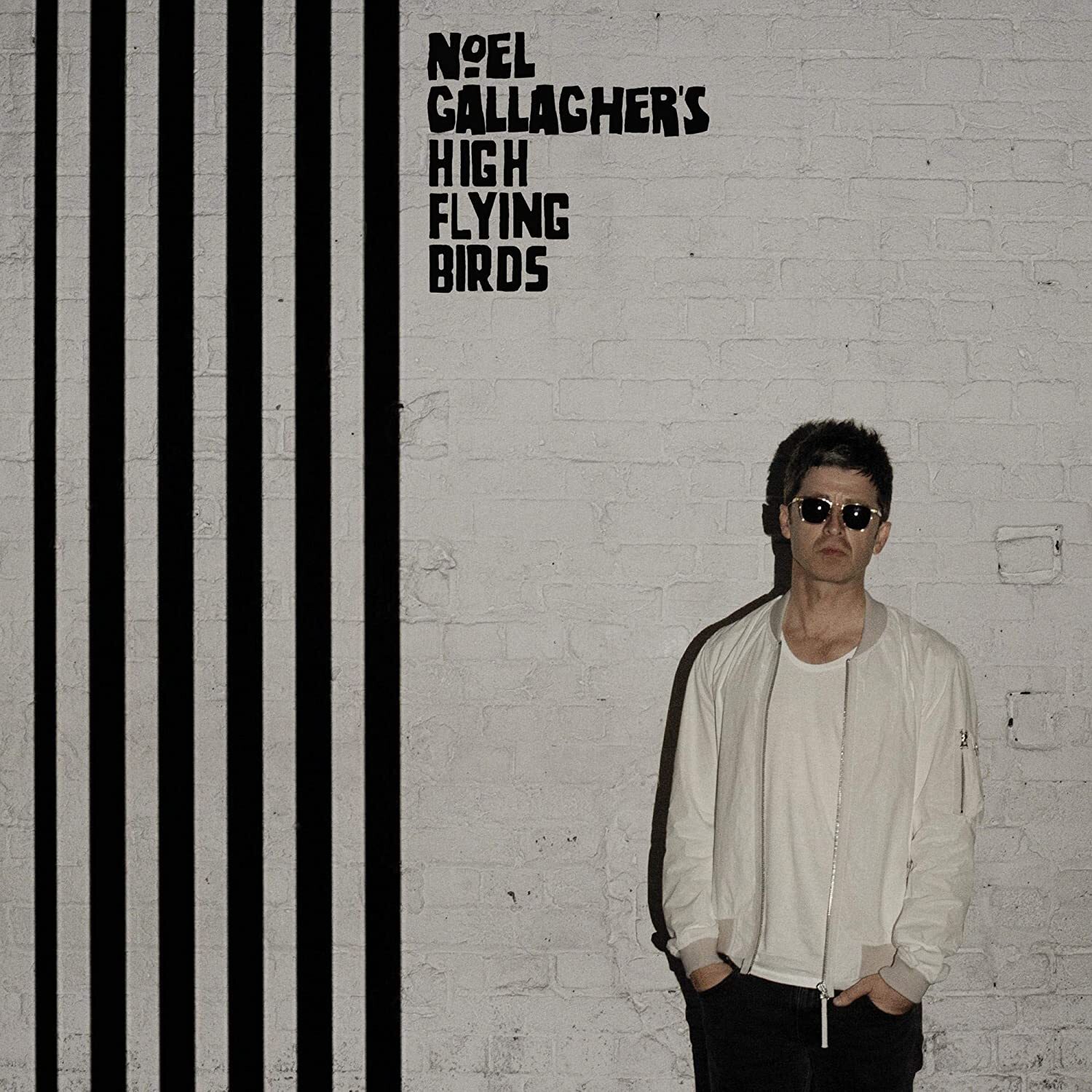
Tame Impala released "Currents" in 2015, and this album would make Kevin Parker into a pop star. Yes, a pop star, not a rock star. It is one of the best pop albums of the last 20 years. Featuring tracks like "The Less I Know the Better," "Eventually," "Let It Happen," and "New Person Same Old Mistakes," it would see him move away from his experimental Beatles phase and embrace influences from Daft Punk, Michael Jackson, and even Kylie Minogue. He wanted a seat at the table with the greats of pop, and after this album, it's safe to say he has earned that seat. Along with "AM", "Currents" is one of the most important albums of the decade, not just in rock or indie, but in pop music as a whole. Parker’s ability to seamlessly blend psychedelic rock with the polish and flair of pop culture icons reshaped his sound and placed him firmly in the global music conversation.
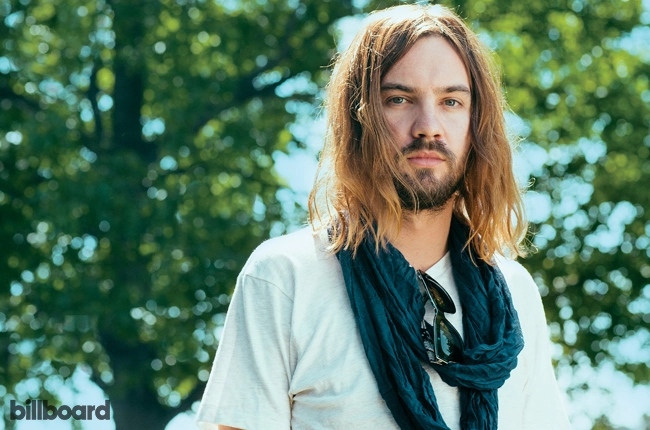
Another Australian group, DMA’s, would release their debut album "Hills End" in 2015 and quickly become adopted Brit’s in the process. UK fans fell in love with the band’s Britpop and 90s indie sound, which drew inspiration from bands such as Oasis and The Verve. Tracks like "Delete" became festival favorites, and the band won over both fans and fellow musicians alike. Their blend of nostalgic sounds and infectious energy made them a beloved part of the UK indie scene.
One thing I feel obliged to mention when talking about this period is Birmingham's mini guitar revolution. Being from near Birmingham, I saw this happen on the fringes. Bands like Peace, Swim Deep, and Jaws released records between 2013 and 2015. Peace were the most famous of the trio, with songs like "Lost on Me," "Follow Baby," and "Lovesick" becoming hidden gems of this era. Jaws delivered tracks like "Right in Front of Me" and "Just a Boy," while Swim Deep captured hearts with "Honey" and "She Changes the Weather." These are all brilliant indie songs that flew under the radar at the time and still do now. If you haven't already, give them a listen!
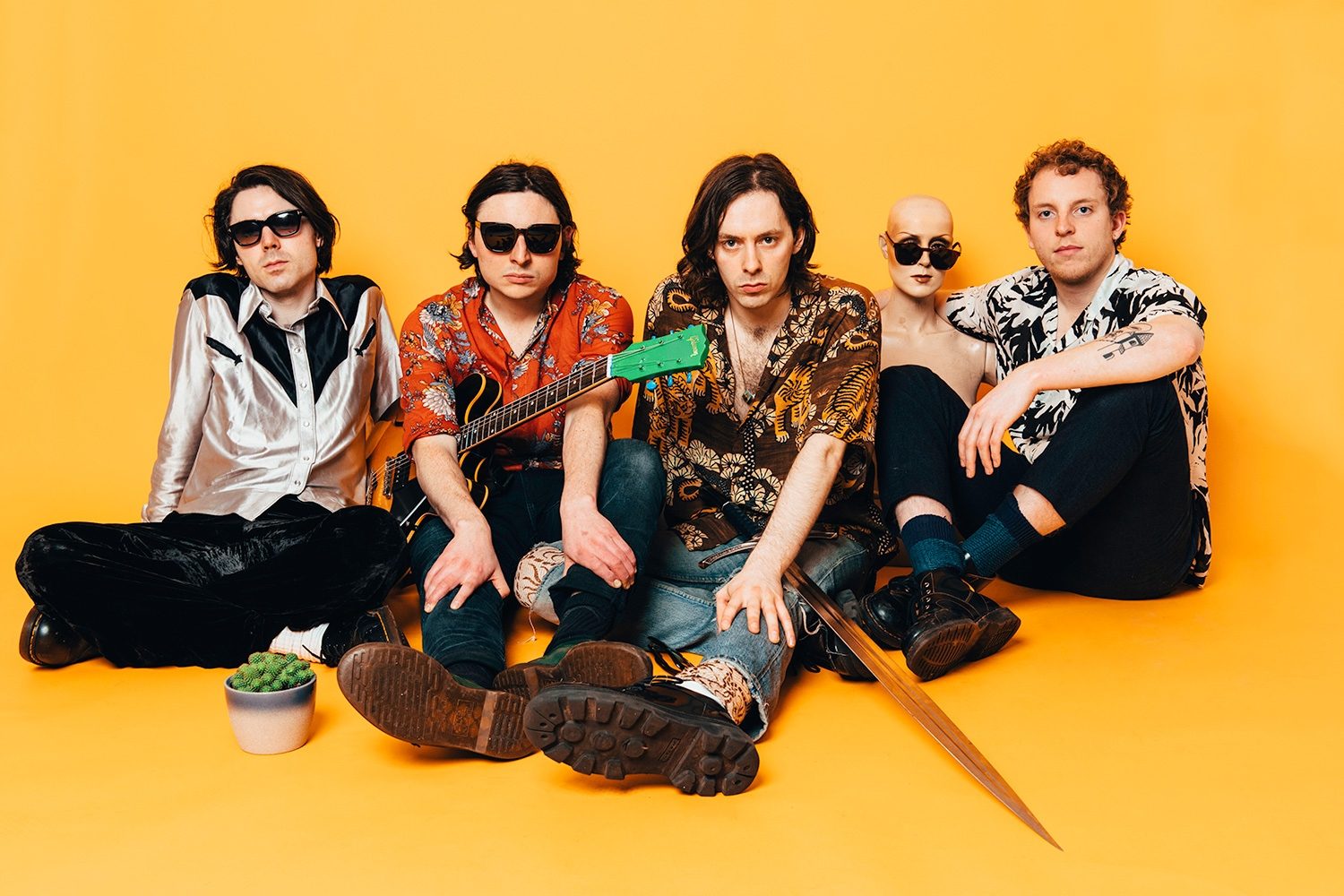
Blossoms would release one of my favorite albums ever in 2016 with their self-titled debut. It came out at a formative time for me, right as we started going to gigs. "Charlemagne" became a radio favorite and an anthem destined for festival fields for years to come. The album as a whole is a classic, seeing the band dive into pop influences from throughout the decades, from The Beatles to ABBA. Their sound, mixing indie with infectious pop hooks, set the stage for Blossoms to take their place among the top British bands of the decade.
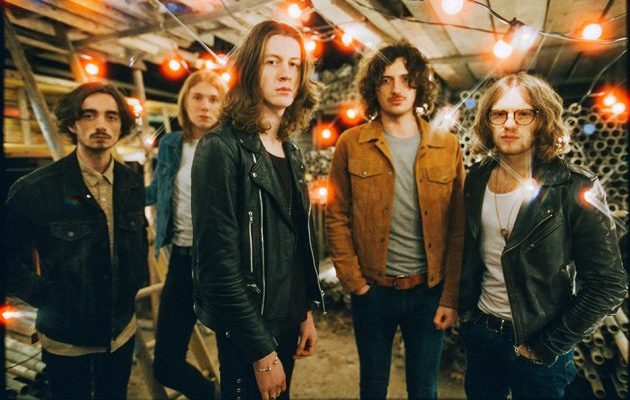
In the same year, The 1975 would release their second album "I Like It When You Sleep, for You Are So Beautiful Yet So Unaware of It." This album marked a dramatic shift from the dark, gothic tones of their debut, embracing 80s synths, acoustic ballads, and pop lyrics. It’s the work of a young band having fun and experimenting with their sound. Every song is brilliant, from the beautiful "Nana" to the bombastic "The Sound." This album confirmed that The 1975 were one of the most important British bands of their generation, offering a dynamic, genre-blending exploration over an hour and fourteen minutes of bliss.
2016 would also see two of the biggest musical events of the decade, and two of the saddest as well...
I’m A Blackstar. The 10’s Part 3
January 2016 would see the world lose one of its brightest sparks and musical icons. David Bowie passed away at the age of 69. It was a huge loss not only for the world of music but for planet Earth. We had lost our Starman. Bowie was one of those rare artists who transcended time and genre. You couldn't pin him down to one era, and just when it seemed like he might fade into the background, he would always return with something fresh and exciting.
Before his death, Bowie released two of his best works. In 2013, he gifted us ‘The Next Day,’ an album that gave us songs like "Where Are We Now?" and "Valentine's Day." These tracks marked a return after a long absence and reminded the world of his genius. But his final gift, ‘Blackstar,’ released just two days before his passing, would become an eerie and fitting swan song. The album, dark and somber, seemed to predict what was to come. With tracks like "Lazarus" and the title track, it feels like Bowie had somehow captured the essence of his journey and the inevitability of his passing, all while still challenging musical conventions. It is a true highlight of his discography and a testament to his legacy.
The world is not the same without the great man. Thank you for the music, David. You will forever be remembered as one of the greatest to ever do it.
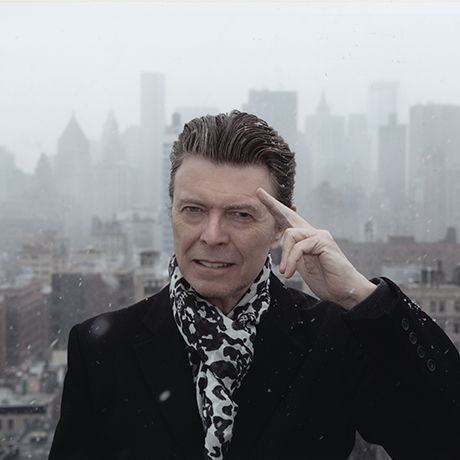
Another musical icon would come to pass in April of 2016. Prince passed away at the age of 57, leaving behind a legacy that could never be confined to a single genre. He was a man who constantly pushed boundaries, blending funk, rock, pop, and R&B in a way that was entirely his own. He wrote one of the most defining albums of the 80s, ‘Purple Rain,’ and delivered some of the best party anthems ever. As Elton John famously said, “Prince was the greatest performer I have ever seen, and a true genius.” His death marked the loss of an artist whose impact on music and culture will never be replicated.
Two of the very best had come to pass, and sadly, they weren’t the only musical deaths that year.
On 13th February 2016, the world lost River Reeves, Tomas Lowe, Kris Leonard, and Jack Dakin of Viola Beach, along with their manager Craig Tarry. The band was on their first tour of Europe, ready to take on the world. Everything I’ve ever heard about these five guys speaks to their love for music and their passion for playing gigs. Friends, families, other bands, promoters, and radio DJs all echoed the same sentiment: they were kind-hearted, hardworking, and had a huge future ahead of them.
Though Viola Beach is no longer with us, they left behind nine songs that became their debut album, released posthumously in 2016. The album, which reached the top of the UK charts, serves as a tribute to the band's spirit. It’s a bubbly, infectious indie pop record, full of jangly guitars and clever, witty lyrics. It stands as a celebration of their talent and their potential, and their legacy lives on through their music.
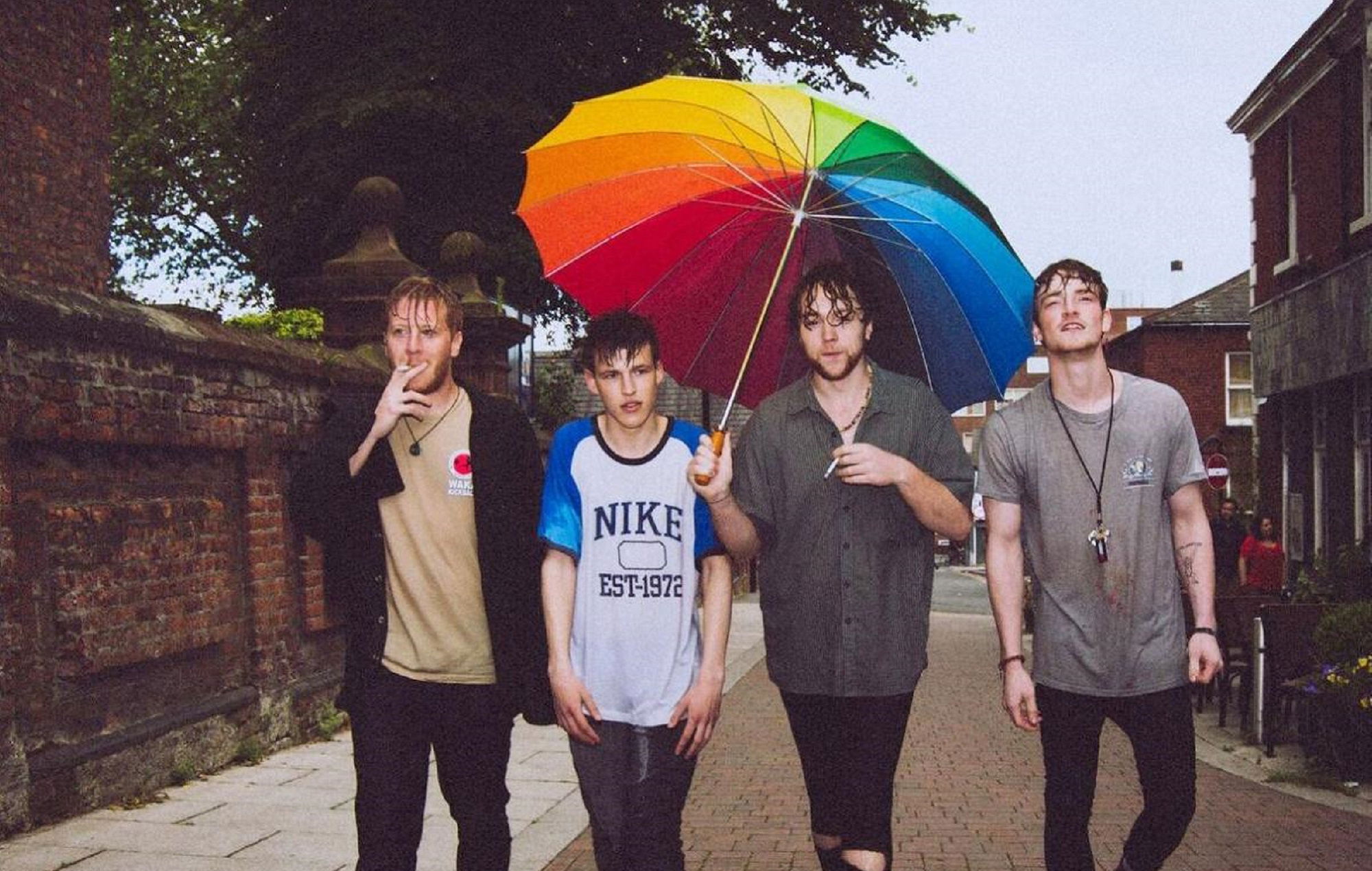
In 2016 The Stone Roses returned, this was a little different to the previous reunion three years earlier though. The band released new music, for the first time in over two decades. "All For One" and "Beautiful Thing." These tracks showcased a modernized version of the band’s signature sound anthemic, guitar-driven, and laced with their trademark swagger.
That summer, the band embarked on a string of high-profile shows that proved their enduring popularity. Standout performances included headlining sets at T in the Park in Scotland, Madison Square Garden in New York, and marquee shows at Manchester’s Etihad Stadium. The Manchester gigs, in particular, were symbolic a triumphant homecoming that cemented their legacy in the city’s musical history.
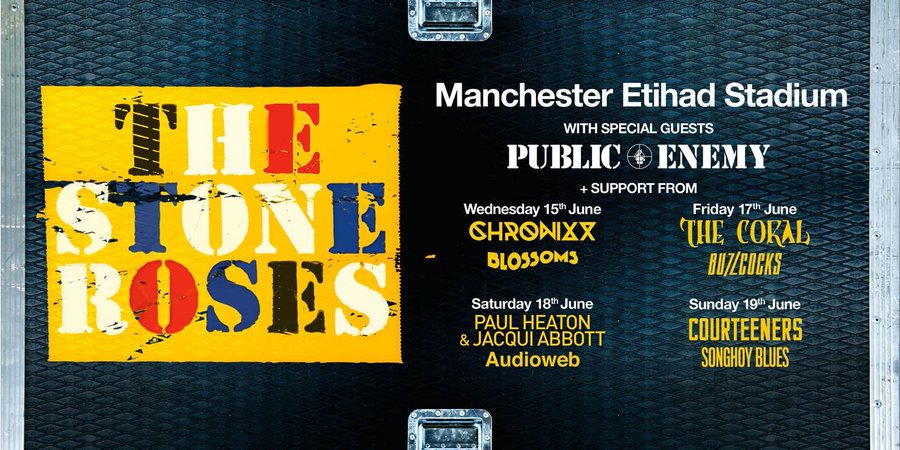
Support for the Etihad gigs, saw Manchester legends Buzzcocks, indie up starts Blossoms, amogst The Coral, Courteeners and Public Enemy. These gigs were huge monumental affairs, and the band weren't finished their.
The band continued the tour, into 2017 however speculation was mounting that this latest chapter in The Stone Roses' story might be their last. With huge shows at Wembley Stadium, Dublin's Marlay Park and Glasgow's Hampden Park. It was some of the bands biggest concerts to date, however in typical Stone Roses fashion it came to a rather abrupt end.

At the bands gig at Hampden Park, Ian Brown uttered these now famous words. “Don’t be sad it’s over, be happy that it happened”.
Fans speculated that it was the end and although no official statement has been made. The Stone Roses have not graced the stage together since Saturday 24th June 2017. Never a band to do things the easy way.
2017 would see British bands release some highly anticipated second albums. Wolf Alice would release the masterpiece ‘Visions of A Life,’ an album that, for many, would surpass their debut, ‘My Love is Cool.’ This album marked a band in full ascendancy, showcasing the immense talent of one of this generation’s most underrated songwriters, Ellie Rowsell. The record would be adored by critics, earning multiple nominations for Album of the Year. With tracks like ‘Don’t Delete the Kisses’ and ‘Beautifully Unconventional,’ it became clear that Wolf Alice had solidified themselves as one of the most important bands of the decade. ‘Visions of A Life’ is a true masterpiece.

Royal Blood would also release their second album, ‘How Did We Get So Dark,’ a more polished and mature record than their debut. Yet, it still retained the raw power and ferocity that made them a standout rock act. The album firmly proved that Royal Blood were not just a one-hit wonder or a gimmick—they were here to stay. With tracks like ‘Lights Out,’ ‘I Only Lie When I Love You,’ and the title track ‘How Did We Get So Dark,’ they cemented themselves as rock giants. This album propelled them to new heights, including an arena tour, a coveted Pyramid Stage slot at Glastonbury, and a support slot with the Foo Fighters. Solidifying their place as one of the biggest rock bands of the era.
Circa Waves also released their second album ‘Different Creatures,’ a much darker and more introspective record than their debut. In my opinion, it is one of the most underrated albums of the decade. This album really showcased the strength of frontman Kieran Shuddall’s songwriting, with standout tracks like ‘Fire That Burns,’ ‘Crying Shame,’ and the heartfelt ‘Old Friends.’ It marked a bold progression for the band, exploring deeper emotional and lyrical themes. Circa Waves proved they weren’t just another indie band. They were growing and evolving.
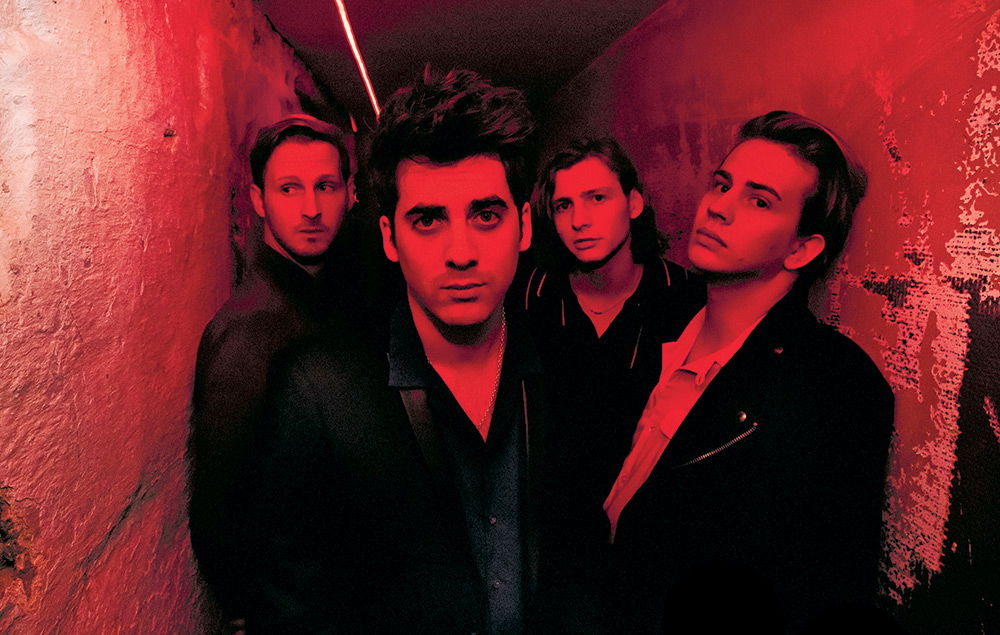
In 2017, Kasabian would release one of their career highlights with ‘For Crying Out Loud.’ The album, which includes standout singles like ‘You’re in Love with a Psycho,’ ‘Ill Ray (The King), and ‘Bless This Acid House,’ is often considered by fans and critics alike to be the band’s best work, and I’m inclined to agree. It has a real summery feel about it, with infectious melodies, clever lyrics, and brilliant instrumentation that makes it a true standout in their discography. Kasabian showed they were still at the top of their game, crafting an album full of energy and memorable hooks. In my opinion this is the last great Kasabian album.
Before this the band would celebrate one of the best summers, by playing two sold out nights at the King Power Stadium. Home of their beloved Leicester City, to celebrate the Foxes famous Premier League win. Kasabian were used to playing the big stages now, having headlined Glastonbury two years previously.
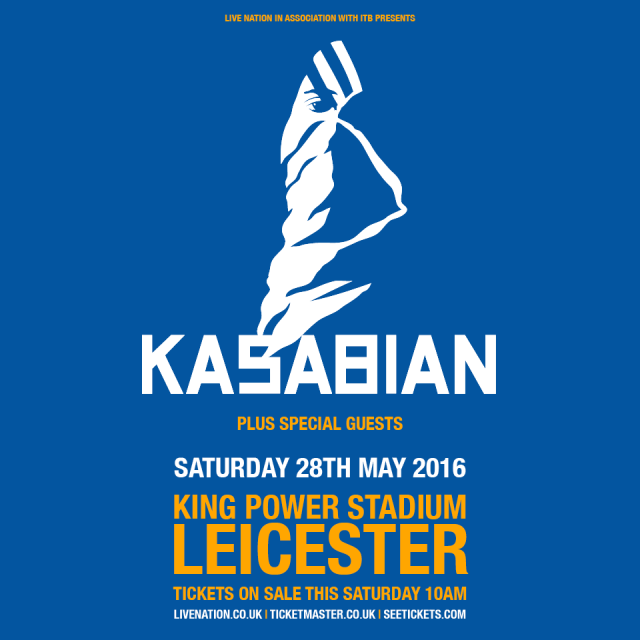
The King Power shows were a celebration of not only the band but the city of Leicester, a city where in that year the "Underdog" won. Kasabian wanted to celberate this, their football team had just won the Premier League at odds of 5000-1.
It was a show that saw them dig out some old classics ‘Doberman’ from 2006’s ‘Empire’ got a brief outing as an acoustic ballad and towards the end of the set, ‘Stuntman’ was lapped up by the King Power faithful. A look to the future with a then new track "Put Your Life on It" getting it's first run out. Noel Fielding returning as "Vlad the Impaler" and the unoffical anthem for the Premier League "Fire" being played at the home of the Premier League winners.
The Killers would also release ‘Wonderful Wonderful’ in 2017, which brought the band some well-received tracks like ‘The Man’ and ‘Run for Cover,’ two of the year’s best indie songs. But what truly stood out for me was ‘Tyson vs Douglas,’ a hidden gem in the band’s discography and one of my personal favourite tracks by them. This album marked a return to form for the band, delivering anthemic tracks and proving their ability to keep evolving while staying true to their roots.
In 2017, Gerry Cinnamon would release ‘Erratic Cinematic,’ a collection of songs that captured the essence of working-class life in Glasgow. The album earned him a small yet devoted following, with tracks like ‘Sometimes’ and ‘Belter’ becoming fan favourites. Initially, the album didn’t make a huge impact, but things would change dramatically in 2018. After an appearance at TRNSMT Festival, where he played a 45-minute set to a huge crowd that was later broadcast by the BBC, Gerry had won over not only the audience but also other acts in the scene. His rise was meteoric, and soon after, The Courteeners took him on tour, while a certain Liam Gallagher also expressed admiration for his music. Gerry had arrived, and the world was starting to take notice.
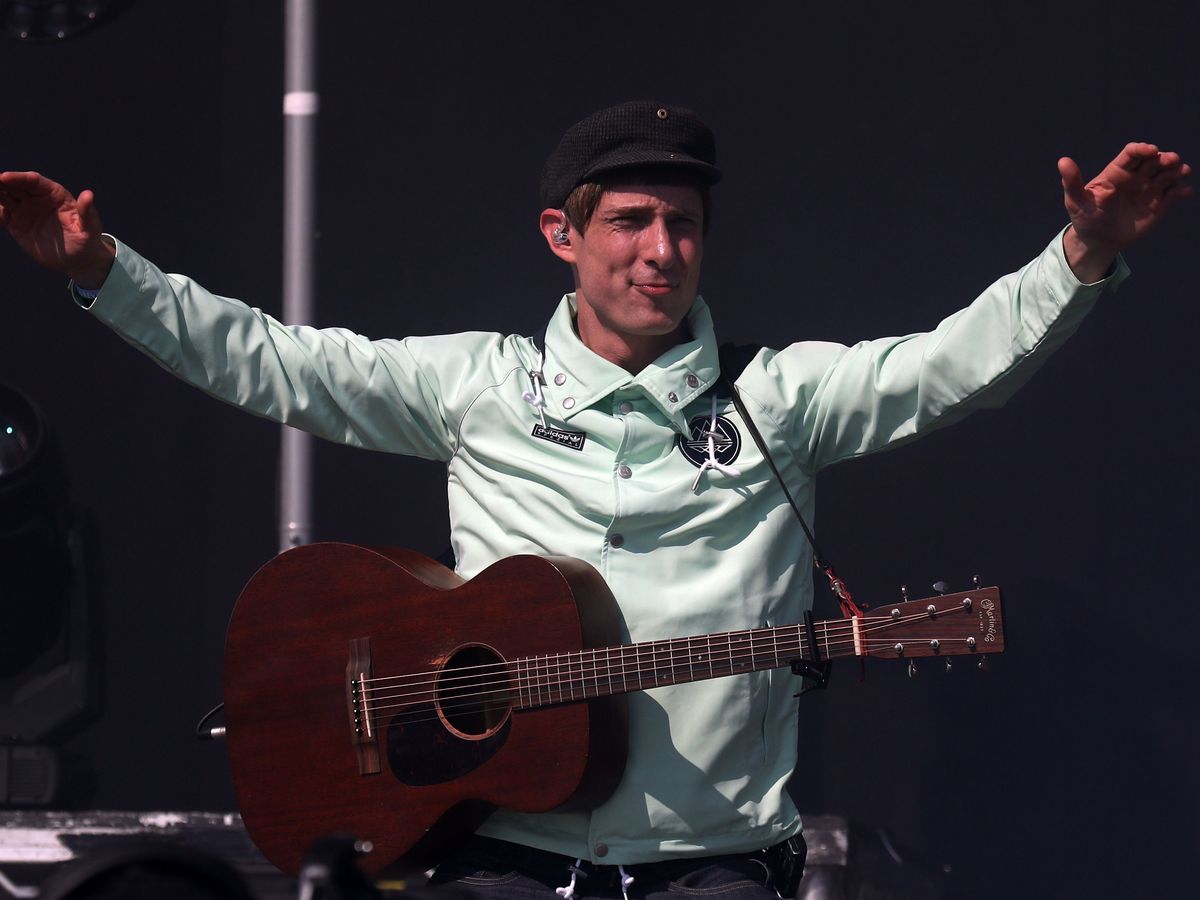
Which brings me perfectly to my next point: Liam Gallagher was back. Three years after the collapse of Beady Eye, he returned with a solo album, and how lucky were we. ‘As You Were’ proved to be a smash hit for Liam, marking a much-needed return to form. Unlike Beady Eye, which faltered, Liam had hired some of the world’s best songwriters, and together they crafted a modern rock record that resonated with fans. The album spanned a variety of styles, from the glam-inspired ‘Greedy Soul’ to the heartfelt ballad ‘For What It’s Worth.’ With this album, Liam delivered one of the best rock records of 2017. The fans came back with him too, and a sell-out arena tour followed. Since then, Liam has not looked back, cementing his place once again at the forefront of British rock music. But more on that later.
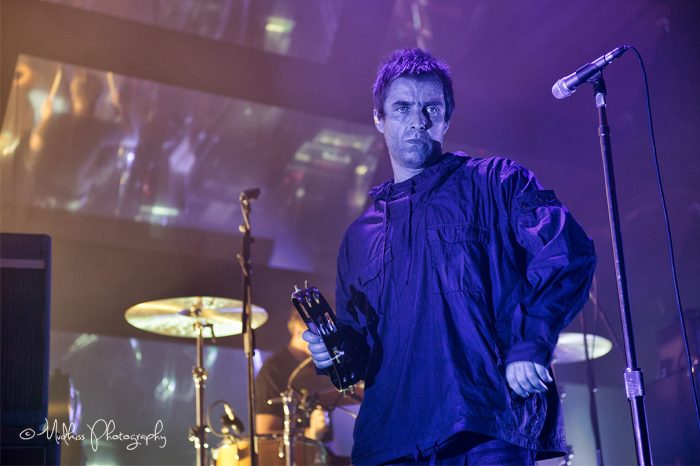
Meanwhile, Noel Gallagher also released an album in 2017: ‘Who Built the Moon?’ This album marked a major departure from the Noel we knew, as he experimented with psychedelia, electronic, and dance elements. This wasn’t the familiar Noel Gallagher who would sit with an acoustic guitar and craft anthems. It was something vastly different. The album received mixed reactions—some loved it, while others were less impressed. However, in my opinion, the album has some of Noel’s best work. ‘Holy Mountain’ is a classic pop song, and ‘She Taught Me How to Fly’ has a unique blend, like Blondie writing a New Order song. It was a daring record, taking influences from both past and present guitar music to create something fresh and modern. I can understand why many fans were initially shocked, and some even felt betrayed, but there’s no denying the boldness of this album and the evolution of Noel’s sound.
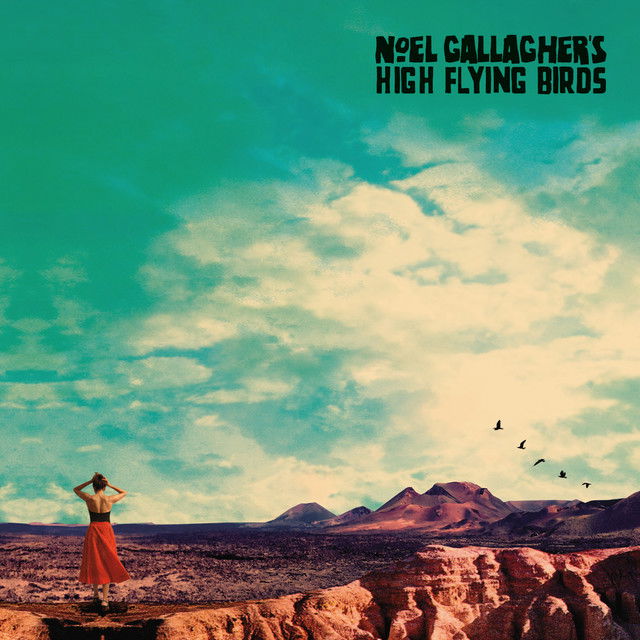
May 22nd, 2017 saw a tragedy that none of us will ever forget. 22 music fans went to an Ariana Grande concert at the Manchester Arena and tragically, they would never come home. It was a shock to the world. These people, simply out enjoying a concert with friends and family, had their lives stolen away in an instant. The tragedy devastated Manchester, Britain, and the world. But from the heartbreak, a remarkable display of unity and strength emerged.
The city of Manchester, along with the rest of the world, rallied together around one thing: music.
Watch this powerful moment here- mourners gathered in Manchester, singing "Don’t Look Back in Anger" by Oasis, a song that became a symbol of hope, love, and defiance.
In the days that followed, the One Love Manchester concert was organized, Ariana Grande united artists at Old Trafford Cricket Ground in Manchester on the 4th June 2017. With the help of Simon Moran, Melvin Benn and Scooter Braun, Ariana managed to get an all star bill which included Justin Bieber, the Black Eyed Peas, Coldplay, Miley Cyrus, Mac Miller, Marcus Mumford, Niall Horan, Little Mix, Katy Perry, Take That, Imogen Heap, Victoria Monét, Pharrell Williams, Robbie Williams and Liam Gallagher.
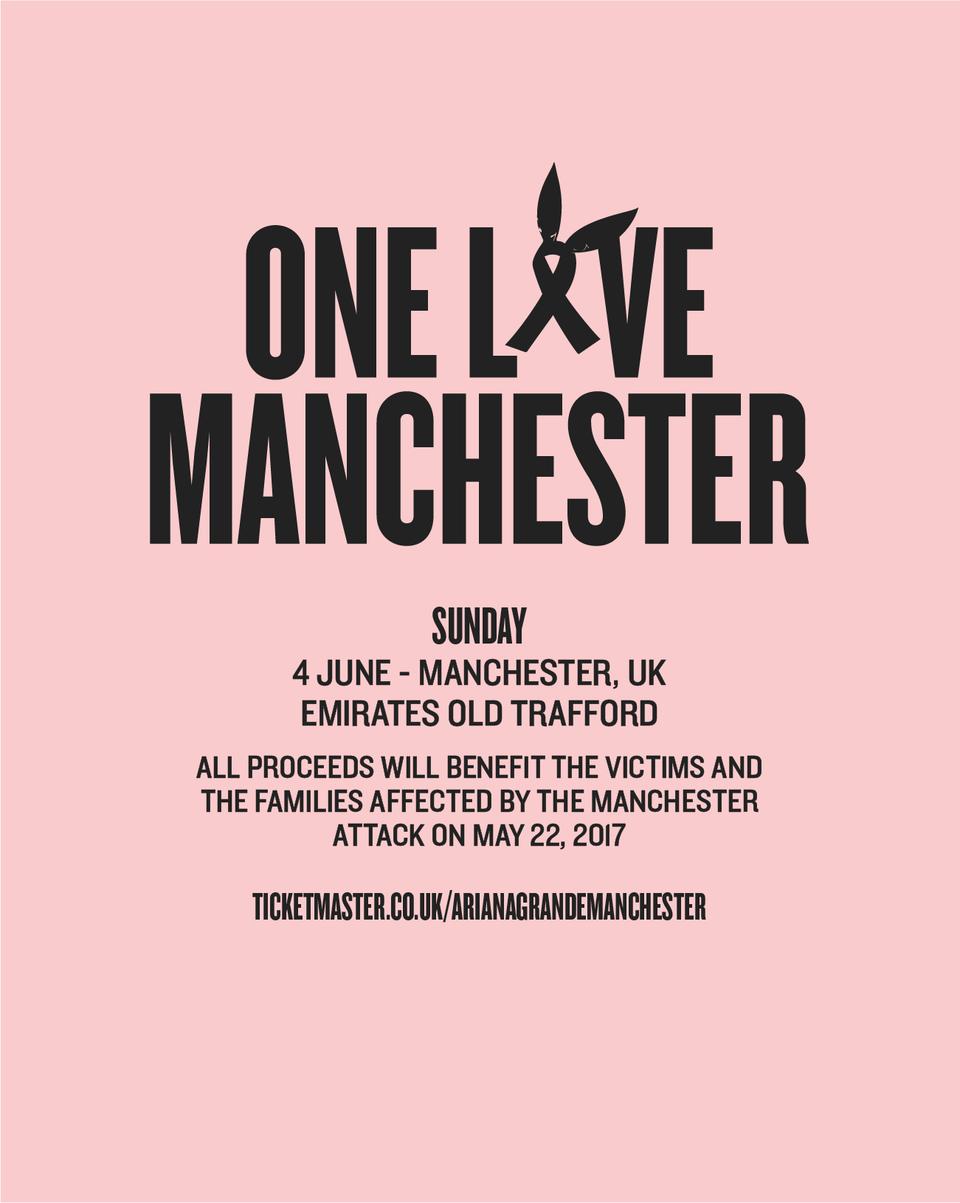
During the concert, the British Red Cross received £2.35 million in donations for the We Love Manchester Emergency Fund. By the next day, the British Red Cross announced it had received more than £10 million since the attack. Grande also donated all proceeds to the fund from a re-release of her single "One Last Time" and a live audio version of "Somewhere Over the Rainbow" that she performed during the concert.
The concert was attended by 55,000 people and broadcast on TV and Radio stations across the UK, including on the BBC. As well as being broadcast in 38 countries across the globe.
Alongside it, the We Are Manchester concert was organised to re-open the arena, following the repairs caused by the bomb. Headlined by Noel Gallagher's High Flying Birds and featuring Manchester legends Courteeners, indie up-starts Blossoms amogst others. It was a chance for the city to celebrate it's rich musical history, as well as raising funds for the families and those who were affected by the attack.
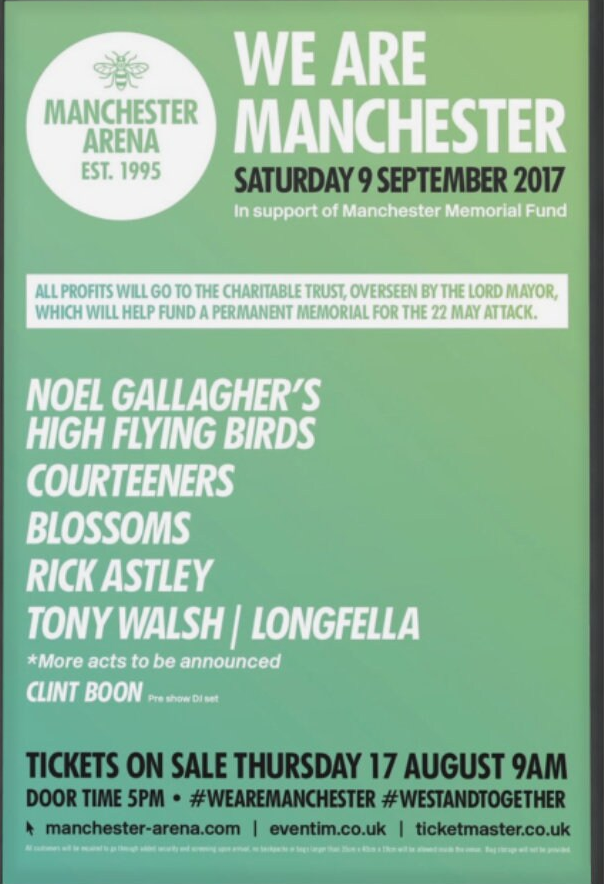
In times of profound grief and loss, it was music that gave people strength. It provided a space for defiance against the hatred that caused the pain. Music, in its purest form, was and always will be a source of healing, power, and beauty. It showed the world just how vital music is in moments of crisis, and it will forever remain a beacon of light in the darkest of times.
Cool Like You- The 10's Part 4
2018 was quite the year for guitar music. It saw debut albums from Tom Grennan and Fontaines D.C., and the 1975 would release what many critics called this generation's OK Computer, as claimed by NME. Arctic Monkeys, on the other hand, would release an album that divided their fan base in half.
Blossoms released the brilliant "Cool Like You", proving that they were not just a flash in the pan, but a band here to stay. This album saw the band embrace synths and the 80s heavily, marking a shift in their sound while maintaining their knack for catchy indie pop. Every song on the album could easily have been a single, with tracks like "I Can't Stand It", "There's a Reason Why I Never Returned Your Calls", and "How Long Will This Last" standing out as highlights.
While often overlooked in the band's discography, Cool Like You would prove to be the album that propelled Blossoms to bigger stages. It was the record that gave them the momentum for sell-out tours and even football stadium gigs. In June 2019, the band played a monumental sell-out show at Stockport’s Edgeley Park to celebrate this album. A gig I had the privilege of attending. It was an unforgettable moment in the band's journey, solidifying their place in the future of British guitar
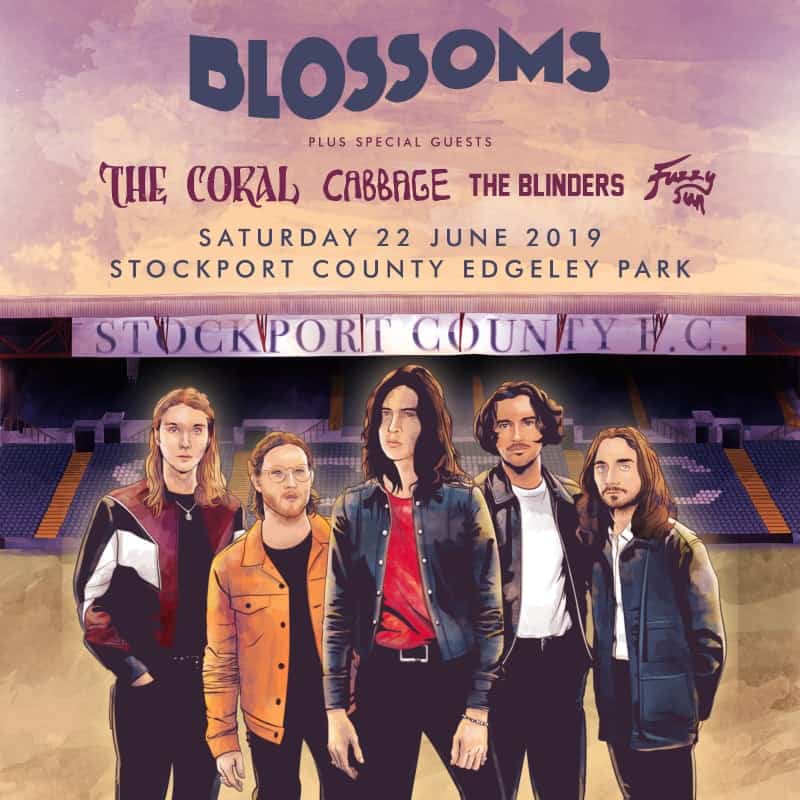
While we’re on the subject of big gigs, it’s worth mentioning Courteeners at Heaton Park, which also took place in 2019. The band had been flying under the radar for years, but their fan base adored them. In their hometown of Manchester, they were regarded as one of the city’s great bands. The Heaton Park show was a landmark moment, with 50,000 tickets sold for the second time in two years. They had achieved the same feat two years earlier when they performed at Lancashire County Cricket Club, a venue usually reserved for the likes of Arctic Monkeys, Oasis, and Radiohead.
This gig was proof of how far the Courteeners had come. They had become one of the UK’s biggest bands, and they had done it on their own terms, without the need for mainstream hype. Their success was built on a loyal following and a strong connection with their fans, and Heaton Park was a celebration of that journey. It was an unforgettable moment for both the band and their devoted crowd.
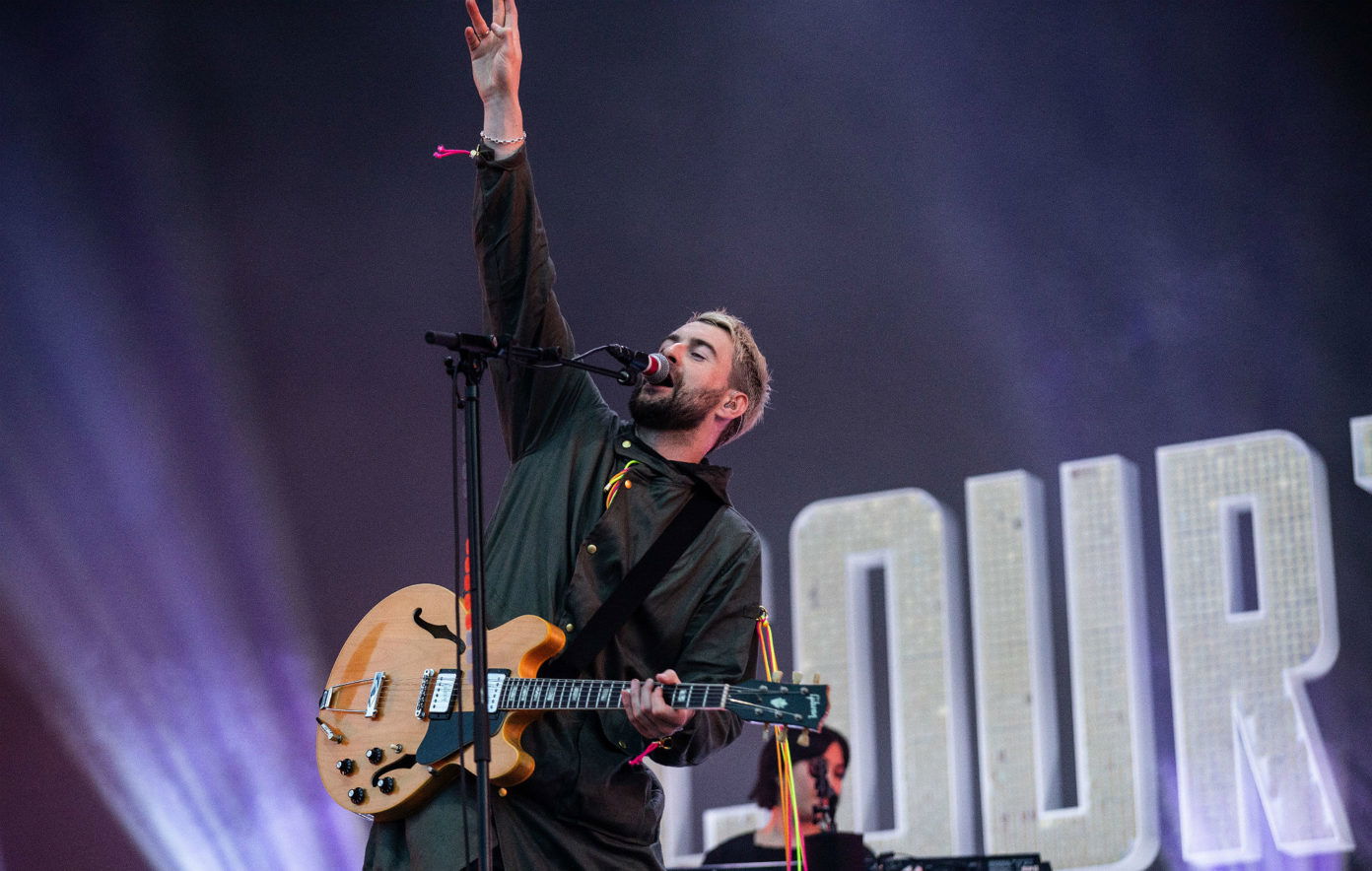
The Vaccines released "Combat Sports" in 2018, a much heavier album than their previous efforts and a real return to form. A short, snappy indie record with some killer singles, it saw the band reinvent themselves while keeping their energetic, catchy style intact. The standout track, "I Can't Quit", became a fan favorite and showed the band at their best. Despite suffering from some internal issues that resulted in a lineup change, "Combat Sports" emerged stronger for it. The album marked a turning point for the band and is easily some of their best work to date. A hidden gem of the year.
Tom Grennan released "Lightning Matches" in 2018, one of the year’s best pop records. A breakthrough for one of Britain’s best new voices, it was a real crossover album that transcended genres. Tom was often compared to Jamie T, Amy Winehouse, and even John Newman, with his music appealing to both Radio 1 and Radio X listeners. The songs on the album range from the upbeat "Found What I've Been Looking For" to the somber "Something in the Water", showcasing Tom’s versatility and emotional depth. He truly covered it all, from joy to heartbreak, and proved himself as a major new talent in pop.
2018 also saw a new band emerge from Ireland—Fontaines DC. Their debut album, "Dogrel", was summed up best by the NME as “a debut album that offers both a storyteller’s narrative voice and a snarling new vision of youthful disillusionment." It’s a true punk masterpiece, mixing punk energy with unique storytelling that gave us something we hadn’t heard before. Imagine punk meets The Pogues, and you’re halfway there. Fontaines DC quickly established themselves as one of the most exciting bands of the year, and "Dogrel" marked only the beginning of their ascent.
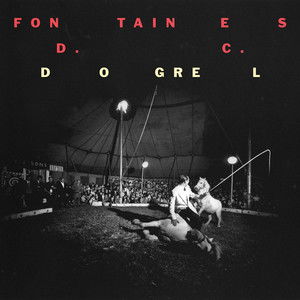
Meanwhile, The 1975 released their third album, "A Brief Inquiry Into Online Relationships", a game-changing pop album for the internet generation. The album explores modern-day politics, relationships, and of course, the internet. It’s a reflection of life for today’s generation, touching on themes that are dark, haunting, ironic, and, at times, very funny. The 1975 wrote this album at a time when they were on the rise but had also experienced their own personal and professional struggles. The album blends genres in ways that hadn’t been done before, from 90s indie to Kanye-like hip hop and even jazz. It is an album that altered the landscape of pop music in the decade and solidified The 1975 as one of the most important bands of the era.
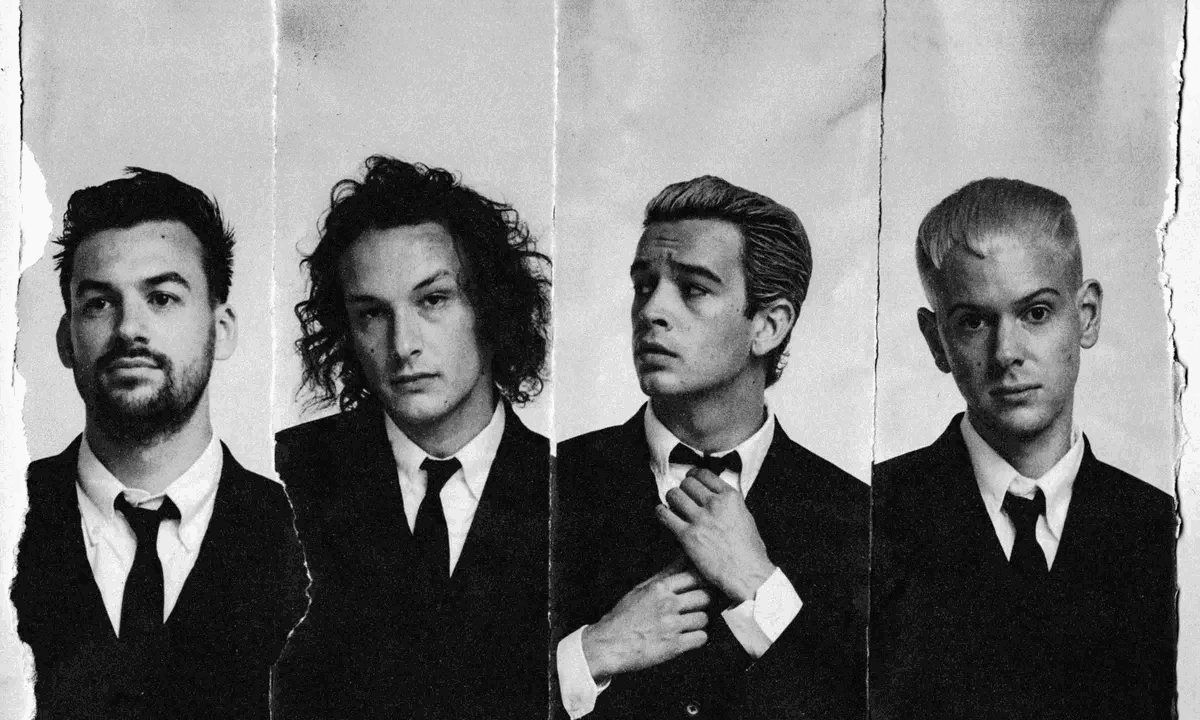
Arctic Monkeys released "Tranquility Base Hotel & Casino", a polarizing album that marked a striking departure from their previous work. Five years after the massive success of AM, fans were eagerly anticipating what Alex Turner and his bandmates would deliver next. What they received, however, was an album that left many confused and, for some, disappointed. Tranquility Base Hotel & Casino was nothing like the energetic rock sound of AM or the gritty indie vibe of their earlier albums; instead, it was a bold, concept-driven project set in a lunar hotel for retired rock stars.
This ambitious concept album showcased a shift in the band's musical direction, as they embraced a more experimental, lounge-inspired sound. Gone were the raucous, guitar-driven anthems of their past; instead, the band explored atmospheric, synthesizer-heavy textures that were as cool and distant as the lunar setting described in the album. Lyrically, "Tranquility Base Hotel & Casino" was dense and abstract, full of references to technology, fame, and existential musings. Themes of space, isolation, and the trappings of modern life took center stage, offering a sharp contrast to the straightforward, relatable narratives that had once made Arctic Monkeys' music so universally accessible.
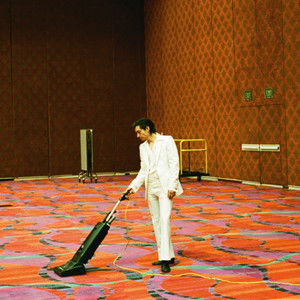
For many fans, the album was a shock to the system. Expecting something more familiar, they were confronted with a sound that was quieter, more introspective, and at times, even alienating. The once raucous Sheffield rockers had transformed into a band uninterested in following the expectations of their fanbase. The bold, unconventional direction of "Tranquility Base Hotel & Casino" revealed that Arctic Monkeys were no longer the indie darlings of the mid-2000s, nor the same band that had stormed the charts with AM just a few years earlier. It was clear that they were evolving, not only musically but conceptually, and the album's experimental nature divided their once fiercely loyal following.
Ultimately, the album proved that Arctic Monkeys were no longer interested in pleasing their audience with familiar sounds or commercial expectations. Instead, the album marked a definitive turning point, as the band carved out a unique, genre-defying path. By choosing to follow their creative instincts rather than conforming to fan expectations, they reaffirmed their status as one of the most innovative and unpredictable acts in modern music. Whether or not the album found universal acclaim, it was clear that Arctic Monkeys had moved beyond the realm of indie rock icons, evolving into a band whose vision was driven solely by their own artistic desires.
Before we bring the decade to an end, I need to talk about two artists. One male, one female. One British, one American. They also happen to be two of the biggest artists in the world, even now in 2023.
Harry Styles first entered the public consciousness 12 years ago on the British TV show "X Factor", where he, along with his bandmates Louis, Niall, Zayn, and Liam, became part of One Direction. After their success on the show, the band became the biggest boy band in the world. However, in 2016, One Direction went on hiatus, allowing its members to pursue solo projects. Harry Styles’ solo career has been nothing short of extraordinary, and let's be real here—he’s definitely done the best out of the band. With three number one albums, two number one singles, and seven top ten singles, his journey has been meteoric.
His solo career started with his self-titled debut album in 2017, which saw him drawing inspiration from 70s and 80s rock. His music had more in common with Fleetwood Mac, Prince, and even David Bowie than with the stereotypical boy band sound. Yet, he kept a modern, contemporary pop sensibility that appealed to a broad audience. This album was a real crossover record, loved by indie fans, One Direction fans, and yes, even your mum. Harry Styles' 2019 album "Fine Line" was more pop-oriented, with hits like "Golden" and "Watermelon Sugar", propelling him from arenas to stadiums.
On the other side of the Atlantic, Taylor Swift became the biggest artist in the world at the end of the last decade with the release of "Reputation" and "Lover". She fully embraced pop and synths, moving away from her country roots and securing her place as the world’s biggest pop star. But her reign as a pure pop sensation wouldn’t last. In the following decade, she reinvented herself yet again, embracing her country roots alongside an indie/alternative sound. Even the world’s biggest pop stars were picking up guitars. Taylor Swift's ability to evolve musically shows her versatility and ability to stay relevant, no matter the genre.

2019! I had forgotten about you. It was an amazing year for music. Tame Impala was back after four years away, Stereophonics would release another classic, Liam's second solo album, not one but two Foals albums, and a certain Mr Sam Fender would rear his head.
I want to start with Catfish & the Bottlemen. They released "The Balance" this year, the band’s third and currently final album. Featuring singles like "Longshot" and "Fluctuate", it was the album that helped the band reach the headline slot at festivals. They would headline TRNSMT, Reading & Leeds, and NBHD Weekender on the back of this album. It would also be the last time the band would play live. The album itself is decent—nothing too groundbreaking, but it sounds like Catfish & the Bottlemen, and that’s not a bad thing. They do exactly what they say on the tin, and their fans love it.
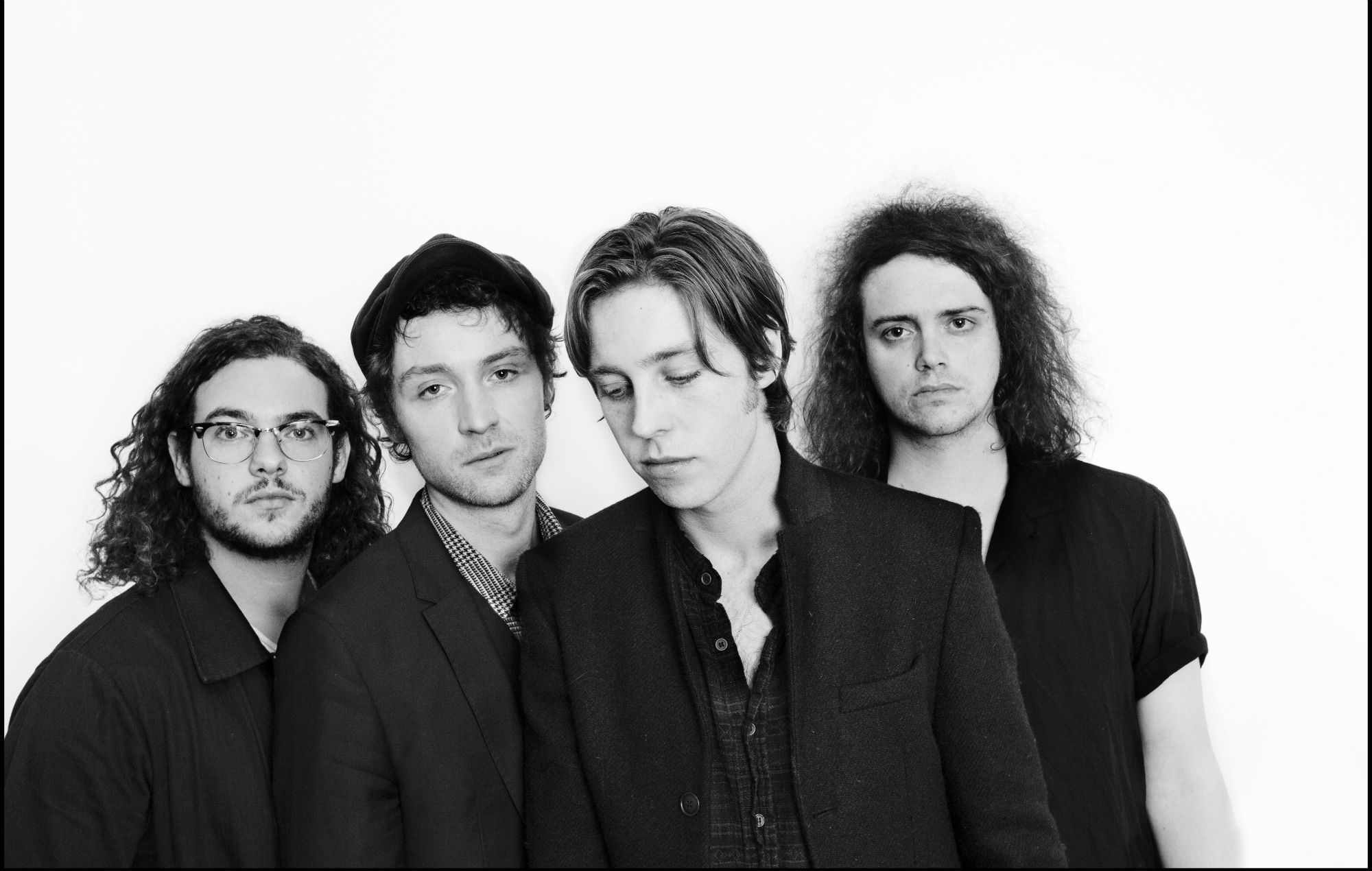
Stereophonics would strip things back on their 11th album, "Kind", slowing down the pace and letting Kelly Jones’ storytelling do the heavy lifting. The album was well received by both fans and critics, and it gave us some of the band's most cherished songs, including "Fly Like an Eagle", "Make Friends with the Morning", and "Hungover for You", which have since become live staples. It was fascinating to see the band take this more introspective, stripped-back approach, and it truly worked. "Kind" became a career highlight for them.
Liam Gallagher would pick up where he left off with "Why Me, Why Not", using the same formula that worked so well on "As You Were" to great effect. The album included some of Liam's most beloved solo tracks, such as "Once" and "One of Us". It showed a more introspective Liam, one who had let his ego settle a little, and it made for a fantastic listen well, almost. "Halo" is the one song I can’t quite get behind sorry, Liam.
When it comes to groups, Foals definitely took the crown in 2019. They released two albums, "Everything Not Saved Will Be Lost – Part 1" and "Part 2", which happened to be the band’s best work to date. Released six months apart, Part 1 in March and Part 2 in October, the albums saw the band both revisit their past and push forward into new sonic territories. Both albums feature absolute Foals classics, from "On the Luna" and "In Degrees" on Part 1, to "The Runner" and "Black Bull" on Part 2. Foals took a risk with this ambitious double-album approach, but it paid off, cementing their place as one of Britain’s most important and forward-thinking bands. The "Everything Not Saved" era truly reinforced just how much the band is capable of in terms of sound, scope, and greatness.

Sam Fender, the Geordie Springsteen, would release his debut album "Hypersonic Missiles" in 2019, a powerful record that captured small-town frustration, the plight of the disenfranchised youth, and the flaws within political systems. With this album, Fender emerged as a new working-class voice in rock music, unafraid to tackle sensitive, often taboo subjects. He explored themes such as the high male suicide rates, poverty, and the struggles faced by young people in the UK. His music seemed to offer a poignant snapshot of reality for many.
Songs like "Leave Fast" resonated with listeners who had experienced the paradox of loving aspects of their hometown but also realizing it offers them nothing. "Dead Boys" became an anthem addressing the often-overlooked issue of men’s mental health, opening up conversations around the subject. The album's title track, "Hypersonic Missiles", took aim at the world, questioning the direction of politics and society, and challenging the status quo. Sam Fender truly defined a new era of rock, using his music to speak for the voiceless and spark conversations that needed to be had.

So that brings us to the end of the 2010s. Quite the decade. A decade in which the world changed a lot, and unfortunately, not always for the better. For me, it was also the decade I became a teenager and witnessed these changes firsthand. Amidst the turmoil and transformation, there was a narrative often pushed by critics: that guitar music was dead.
But here's the truth: that narrative couldn’t have been further from reality. Guitar music didn't die; it evolved, adapted, and thrived in new and unexpected ways. We saw bands like Tame Impala, Wolf Alice, The 1975, and Fontaines DC redefine what guitar-driven music could sound like. From the psychedelic undertones of Tame Impala's "Currents" to the post-punk energy of Fontaines DC’s "Dogrel", guitar music remained vital, innovative, and alive in the 2010s.
The decade also gave rise to solo artists like Sam Fender, Liam Gallagher, and Harry Styles, all of whom embraced guitars while pushing boundaries. The sound of guitars may have changed, but it was very much alive, whether it was blended with pop, psychedelia, electronic elements, or indie rock.
The critics might have predicted the death of guitar music, but the artists proved them wrong. Guitar music may have evolved, but it never left us. And in that evolution, it found new ways to connect, to provoke, and to inspire. Fittingly so for a decade that saw the world change in ways we never expected. Guitar music is alive, and it's here to stay.
Seventeen Going Under- The 20s
So that brings us to the 2020s. The decade we are currently in, one that will undoubtedly be remembered for a global pandemic that brought the world to a halt. Even though we are only three years into it, this decade has already been memorable for many reasons, including the release of some truly incredible albums. Bands worldwide have continued to thrive, and guitar music has found a new life.
Courteeners made a strong return in 2020 with their experimental album 'More Again Forever'. The record showcased the band's evolution, blending elements of electronic and indie rock with tracks like the LCD Soundsystem-esque 'Heavy Jacket', the R.E.M.-influenced 'Better Man', and one of Liam Fray’s finest songs, 'Hanging Off Your Cloud'. It was a bold, adventurous step for the band and was considered by many to be one of their strongest albums to date. Sadly, the pandemic prevented them from properly touring it, but they still managed to give it a memorable send-off with an unforgettable Old Trafford Cricket Ground show. This event, which featured performances from Johnny Marr, Blossoms, and The Big Moon, was a testament to the power of live music and the spirit of unity that still exists in the music community, even in challenging times.
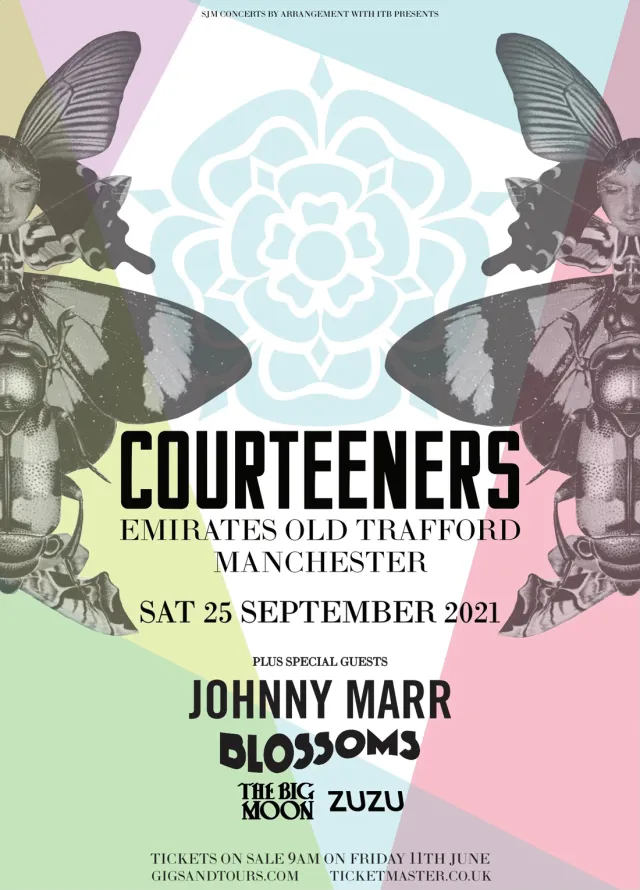
Speaking of Blossoms, they too released an album in 2020, 'Foolish Loving Spaces', which many would argue is their best album to date. This record took everything they had perfected on 'Cool Like You' and 'Blossoms' and pushed their sound to new heights. They embraced a variety of styles, ranging from disco to Talking Heads influences, and fused the 70s, 80s, and 90s to create an album that felt fresh and ready for the 2020s. The result was a masterpiece that spanned multiple genres and had something for every listener. From the acoustic ballads like 'My Vacant Days' to the dancefloor fillers such as 'If You Think This Is Real Life', and one of the best love songs of the last 15 years, 'Oh No I Think I’m In Love', the album was a well-rounded triumph. It showed that Blossoms were not just keeping up with the times they were shaping them.
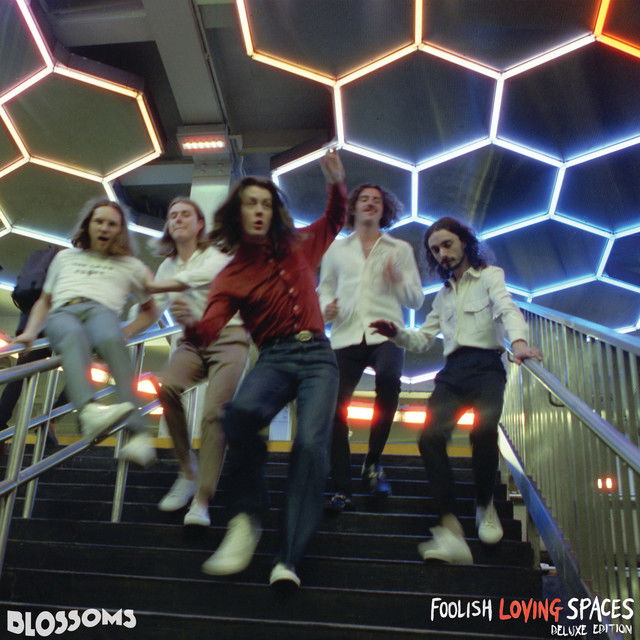
Circa Waves also made waves in 2020 with their double album 'Sad Happy'. The album offered a contemplative, conflicted exploration of modern life, as described by NME. It allowed the band to showcase both sides of their musical personality. The 'Happy' side contained festival anthems like 'Jacqueline', 'Move to San Francisco', and the standout 'Call Your Name', echoing the sounds of their earlier albums 'Young Chasers' and 'Different Creatures'. Meanwhile, the 'Sad' side was filled with synths, keyboards, and heavier distortion, capturing a more emotional, introspective side of the band. Tracks like 'Hope There’s a Heaven' delved deep into themes of loss and grief, creating a reflective, heartfelt atmosphere. This album is a hidden gem of the decade—emotionally raw and musically sophisticated.
Another band from Liverpool, Red Rum Club, released their second album 'The Hollow of Humdrum' in 2020. Following the success of their debut 'Matador' in 2019, the band continued to rise. This album is a brilliant collection of catchy, groovy, and infectious indie pop songs. It’s the kind of record you can play when you need to escape, as it will instantly lift your mood. With songs that will have you tapping your feet and humming along, 'The Hollow of Humdrum' is a record that has the power to make you forget about your worries and just enjoy the music. Whether you're late to the party or not, I promise this album will make you a fan of Red Rum Club.
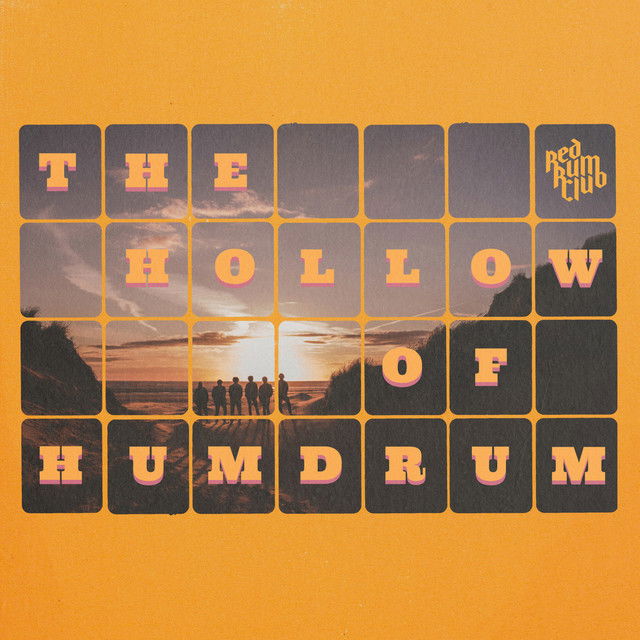
Gerry Cinnamon released his second album, 'The Bonny', in 2020, which marked a more expansive approach compared to his debut 'Erratic Cinematic'. On this record, Gerry experimented with new sounds and production techniques, while still delivering the big live favourites like 'Canter' and 'Where We're Going'. However, 'The Bonny' also introduced more introspective tracks, such as 'Roll the Credits', 'Six String Gun', and the haunting 'Dark Days'. While some of these tracks may be better suited to the live environment, the album as a whole showcased Gerry's growth as a songwriter, offering listeners a deeper, more nuanced side of his music. 'The Bonny' was a strong follow-up, proving that Gerry Cinnamon was not just a live sensation, but also a talented artist capable of creating complex and emotionally rich songs.
Haim released one of the best albums of 2020, 'Women in Music Pt III', a record that quickly became one of my all-time favourites. In simple terms, this is a brilliant collection of songs that perfectly blends indie, pop, and even garage influences. 'Women in Music Pt III' is a genre-melting masterpiece, with not a weak song in sight. From the dreamy opening track 'Los Angeles' to the indie-pop gem 'Summer Girl' that closes the album, each song contributes to the band's most defining record to date. The album was a defining moment for Haim, showcasing their growth and versatility as musicians. Despite being one of the best albums of the year, it remains underrated and often overlooked, but its brilliance deserves far more recognition.
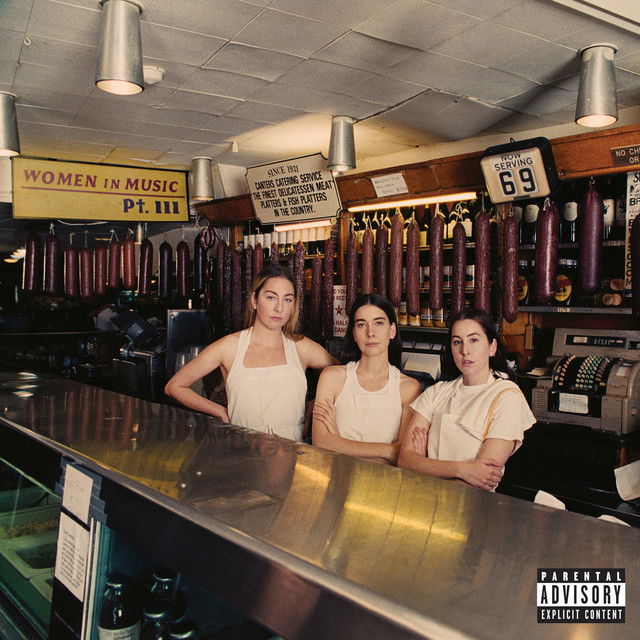
The main thing everyone remembers 2020 for though is the pandemic bringing the world to a stop. Lockdowns were enforced, and for many of us we were subject to new rules that we'd never experienced before. Social distancing, the rule of six, remember that!
Before everything changed, two significant things happened within just a couple of days. I turned 20, and the day before, on February 14, 2020, Tame Impala released 'The Slow Rush' after a five-year hiatus. With this album, Kevin Parker took a step further away from the guitars, opting instead for a more pop-oriented sound, while still retaining the unique essence that makes Tame Impala so distinct. It was a record that felt both expansive and intimate, introspective yet full of sonic depth. Tracks like 'One More Year' showcased an incredible scope, but the personal nature of the lyrics made it the most vulnerable and intimate music he had released to date. 'It Might Be Time' was another standout, as Kevin wrestled with the fear of losing his creative spark, while looking back on the past. A feeling many can relate to. But don't worry, Kevin, we still think you're incredibly cool. In fact, very cool indeed!
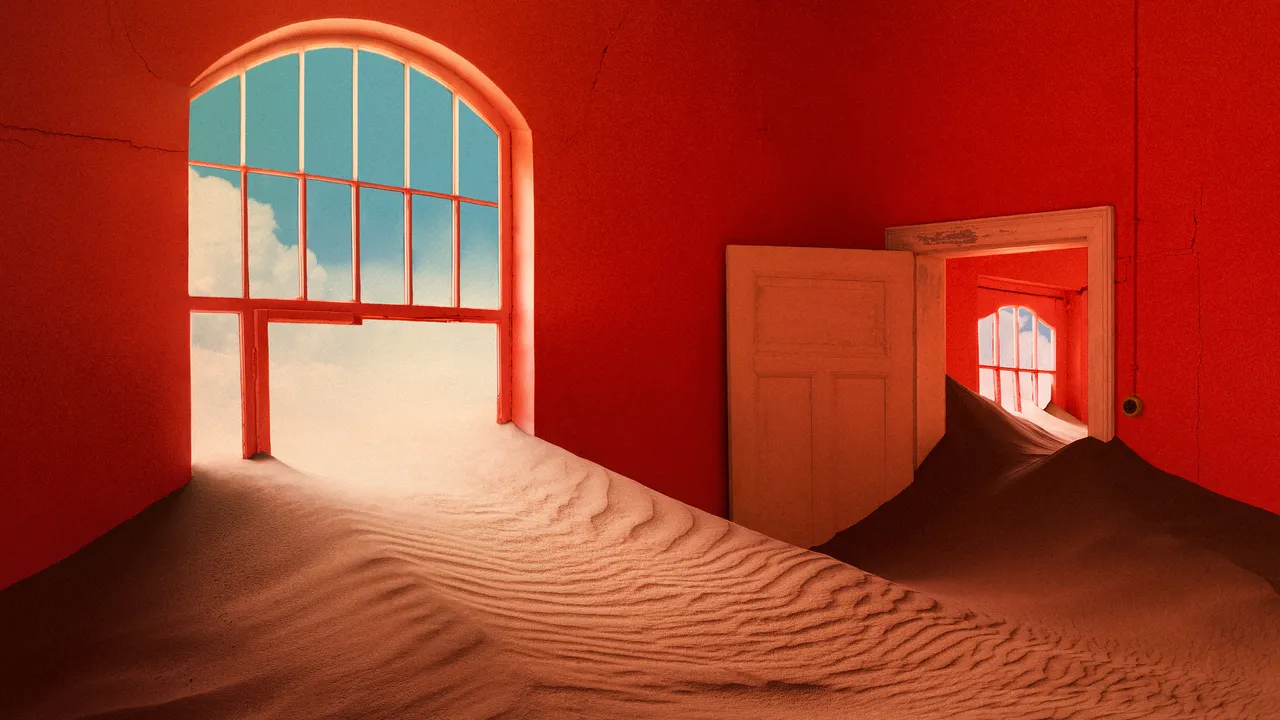
2021! A year of comebacks, and live music was back after a long hiatus. Two British bands made their return with albums: Royal Blood and Wolf Alice. Inhaler introduced themselves to the world, Noel Gallagher released new music, and Sam Fender dropped a masterpiece.
Wolf Alice released the album of the year in June 2021. This stunning record showcased the band at full confidence, firmly cementing their place as one of Britain's most important bands. It’s a breathtaking mix of everything they do so well: cinematic masterpieces like ‘The Beach’ and ‘The Beach II,’ snarling punk anthems like ‘Smile’ and ‘Play the Greatest Hits,’ and even haunting piano ballads like ‘The Last Man on Earth.’ I can’t express enough how much I love this album. It is in my opinion, one of the most important British albums ever made.
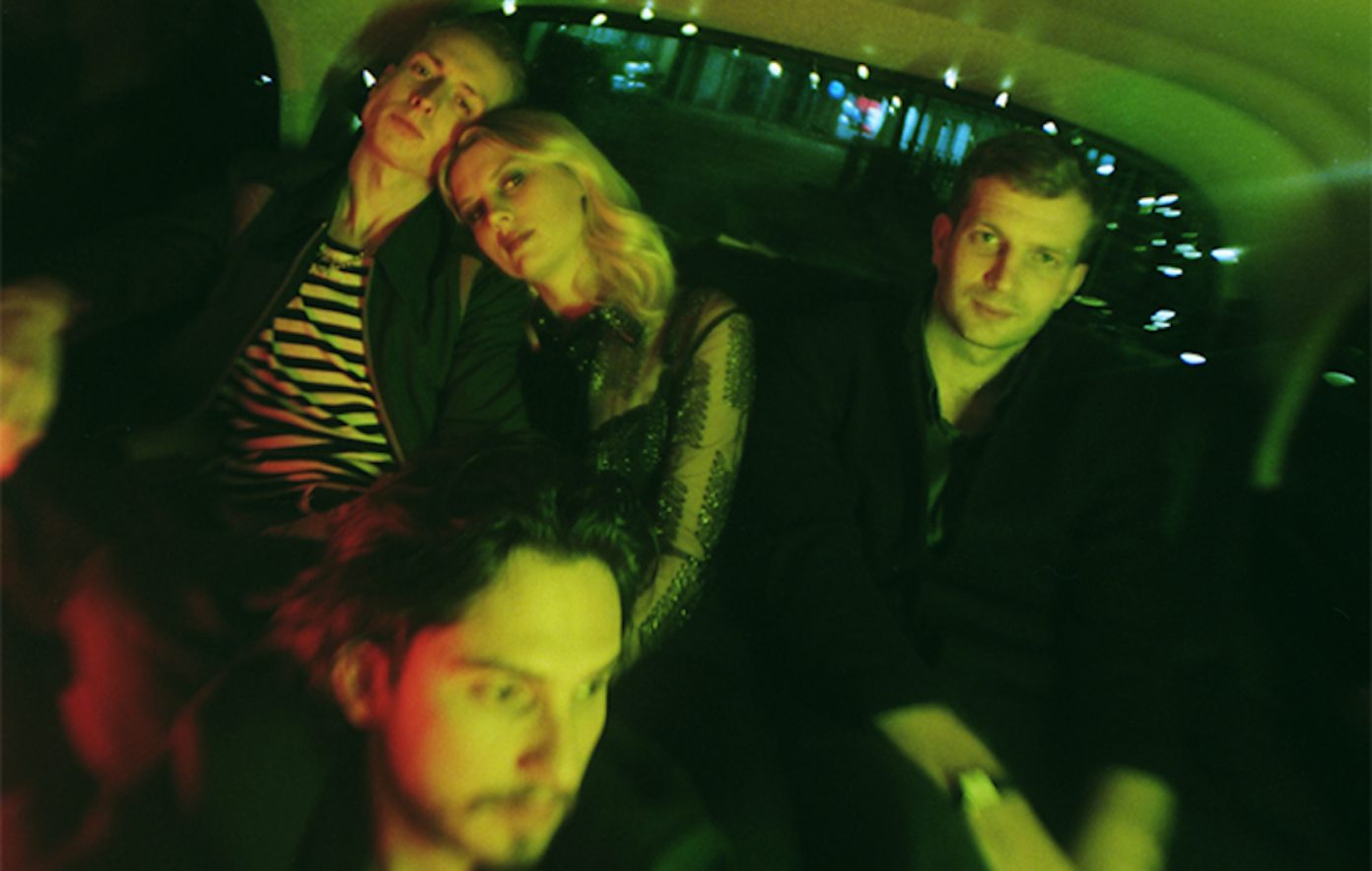
Royal Blood grew tired of being labeled the "saviors of rock music." After Mike Kerr quit drinking, the band decided to reinvent themselves, and they did just that with "Typhoons2. The band took us straight to the dancefloor in 2021, turning their demons into an upbeat, infectious sound. The Royal Blood DNA is still there Ben Thatcher’s drums are louder than ever, and Mike Kerr’s bass is still at the forefront—but the approach is different. It's guitar music you can dance to. Lyrically, they open up more than ever before, with some dark, emotional lyrics wrapped around danceable beats, making for a fresh and captivating listen.
Inhaler released their debut album, "It Won’t Always Be Like This," and while they didn’t reinvent the wheel, they certainly delivered a solid debut. The album features catchy indie-pop tracks perfect for festival fields and indie discos. The title track is one of the best songs released in 2021, and this debut marks the start of what promises to be a bright future for the Irish band. The Lathums also released "How Beautiful Life Can Be"in 2021, a record that helped them reach number one. The Wigan-based band built a massive following online, and this album won over fans and critics alike. They didn’t experiment with new sounds but offered exactly what a lot of listeners wanted: good songs with big choruses and relatable lyrics. Sometimes, that’s all you need.
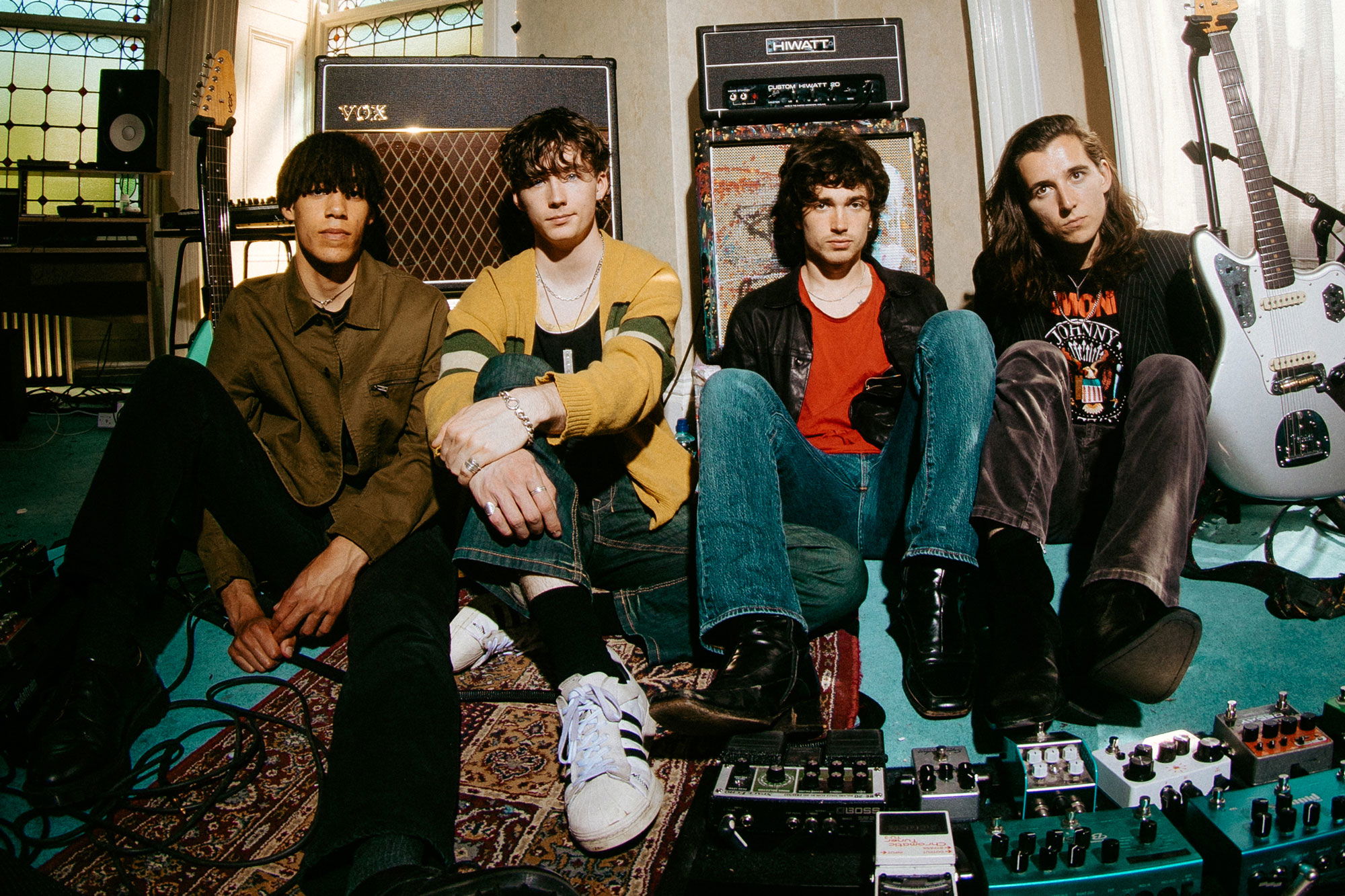
Sam Fender would release a powerful statement of working-class pride with ‘Seventeen Going Under’. This album offered a vivid portrait of his hometown and a deeply personal reflection on his younger self. The title track stands out as one of the best portrayals of working-class life ever written. It paints a picture of troubled youth, family struggles, and the violence and crime that can define a small-town existence.
Sam explored the relationships and events that shaped him the most. ‘Spit of You’ is a deeply personal song about his relationship with his dad—one that every son can relate to in some way. ‘The Dying Light’ acts as a poignant follow-up to ‘Dead Boys,’ a dedication to the people he loves: "For Mam and Dad and all my pals. For all the ones who didn't make the night." The album allowed Sam to reflect inward, recognizing how these people and experiences have shaped him and ultimately made a difference in his life.
While Sam’s first album scratched the surface, ‘Seventeen Going Under’ digs much deeper. The NME summed up the transformation perfectly: If ‘Hypersonic Missiles’ was the sound of a young man kicking out at the world, ‘Seventeen Going Under’ is about realizing that the world can kick back even harder. But Sam finds peace in knowing that time passes, and most wounds—even the deepest ones—can heal if you allow them to.
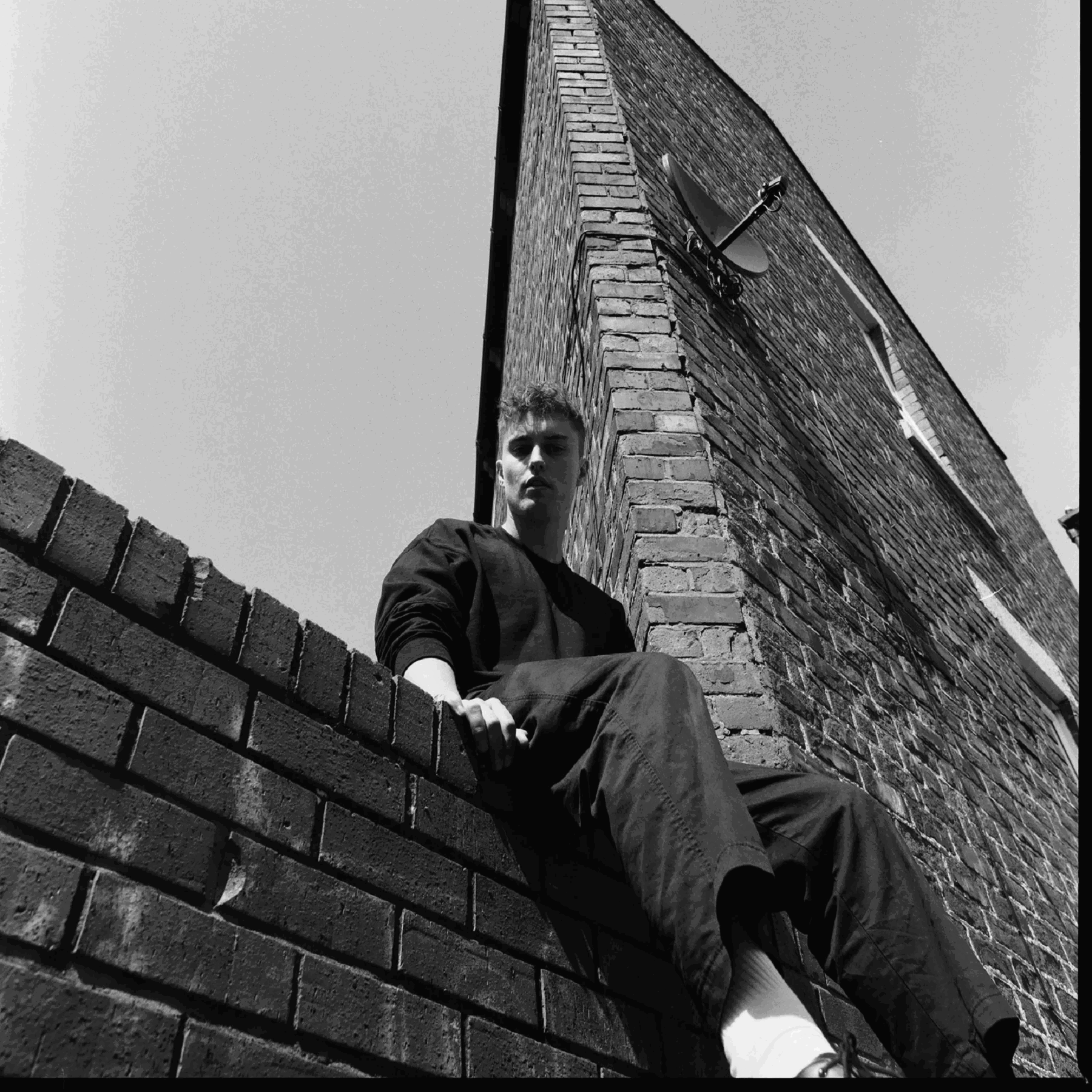
2022 would see a return of the old guard in more ways than one and also the release of one of the best British debuts in years.
Let’s start with that debut. Wunderhorse would release his album ‘Cub’ in October 2022. Before that, I hadn't even heard of him, but when I listened to ‘Cub’, I was blown away. It’s a rock masterpiece that blends a multitude of genres—punk, grunge, shoegaze, britpop, indie, and even metal at times. The album tells the story of a man coming to terms with who he is and where he’s been. What's even crazier is that this is just the beginning for him. ‘Cub’ is one of those records you need to sit with to fully appreciate its brilliance.
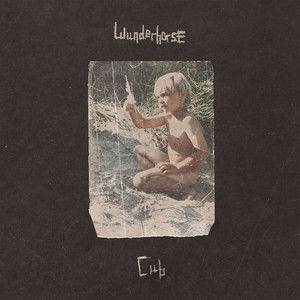
I first saw Wunderhorse on a Fontaines D.C. poster, so it feels only right to mention them next. Fontaines D.C. would release their third album ‘Skinty Fia’ in 2022. It was a huge leap from their punk roots and marked a turning point for the band. Written as a love letter to their homeland of Ireland, the album sees them expand their sound in ways we hadn’t heard before. ‘I Love You’ is a standout, where frontman Grian Chatten channels the anger and frustration of his generation. The track reflects on the political struggles of Ireland, but also the pain of having to leave home. It’s a beautiful and powerful song, showing the bittersweet feeling of watching your country suffer while still holding it dear.
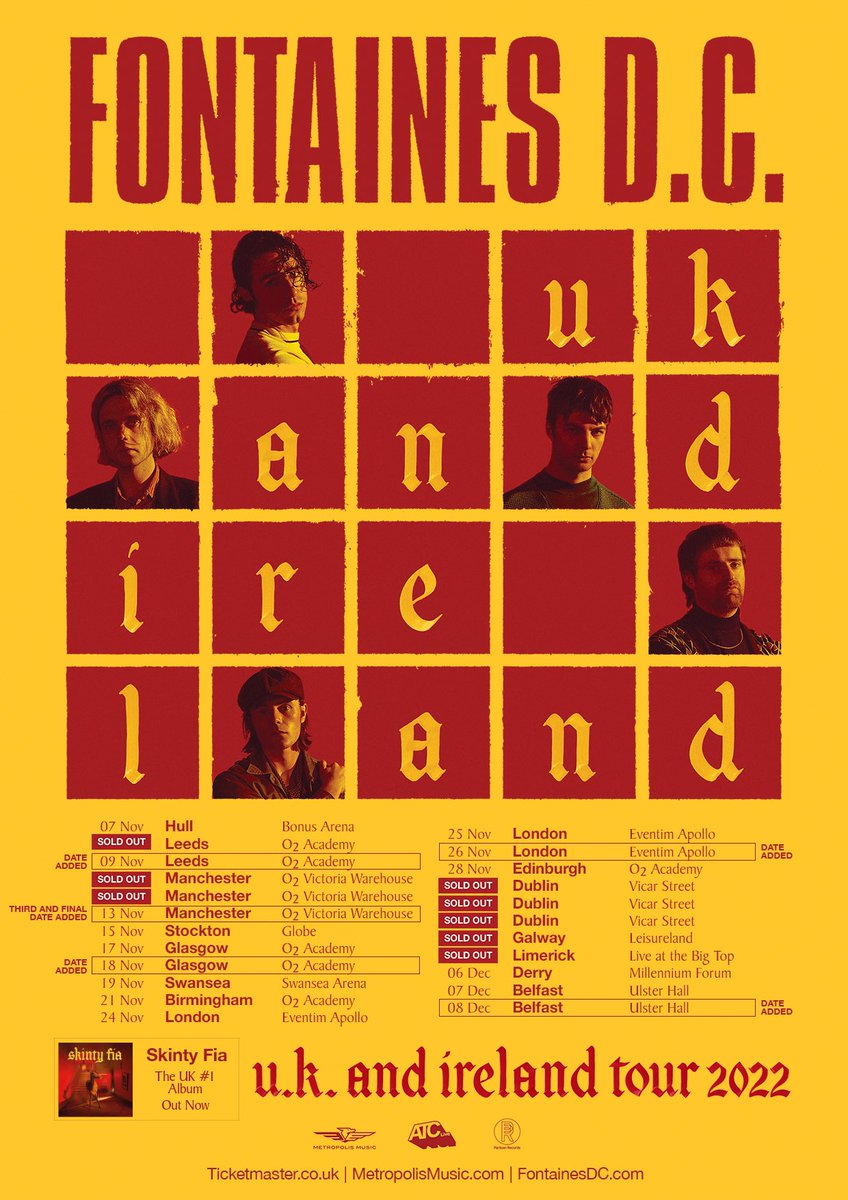
Blossoms would release their fourth album ‘Ribbon Around the Bomb’, which saw the band mature and deliver some of their best work to date. However, don’t think they lost their sense of fun! While songs like ‘Visions’ see the band turn inward and question themselves, the album still captures their playful spirit and the close-knit relationships between the band members. This is best seen in the Paul Simon-inspired ‘The Sulking Poet’, complete with handclaps and throwaway vocals. It's one of the band's finest moments, embracing youthful naivety while showing they've grown up in their own charming way.
Jamie T would make a triumphant comeback with ‘The Theory of Whatever’, and we had definitely missed him. The first single ‘The Old Style Raiders’ reminded us of just how important Jamie T was to the scene, and it also became one of his best tracks to date. The album was a welcome return for fans, showcasing Jamie doing what he does best—writing great songs. The record saw him explore new sounds and genres, all with great success. He not only survived the indie scene, but proved he was still a vital and relevant voice. Let’s hope he doesn’t leave it so long next time, Jamie!
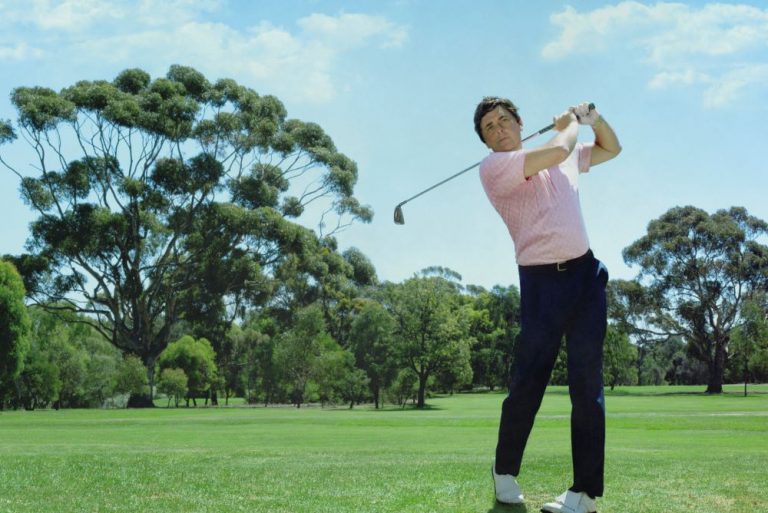
Stereophonics had originally planned to release a greatest hits album to celebrate their 25th Anniversary in 2022. However, while searching for extra tracks, they stumbled upon some gems like ‘Forever’, which led them to abandon the idea of a compilation in favor of crafting a new album. The result was ‘Oochya’, which almost sounds like a greatest hits album of new songs. It covers every iteration of the band's sound, showcasing some of their best work. ‘Do You Feel My Love’ stands out as one of the finest tracks they’ve ever released, while ‘Forever’, the song that sparked the album, is a heartfelt piece about escapism and longing for freedom, conveying a powerful message of love and support.
Liam Gallagher would release ‘C’Mon You Know’, his third solo album, which, in my opinion, is his weakest to date. He experimented with tracks like ‘Moscow Rules’, written with Vampire Weekend, and the very odd ‘I’m Free’. While the album itself may not have resonated as strongly, 2022 would still be a remarkable year for Liam. He had one of the best summers of his life, with two nights at the home of his beloved Manchester City football team and two sell-out shows at Knebworth—yes, not in 1996, but in 2022. Liam had truly stepped out from Oasis’ shadow, leaving behind the comparison to his brother Noel. He had captured the hearts of a new generation who idolized him, proving just what a force he remains on stage.
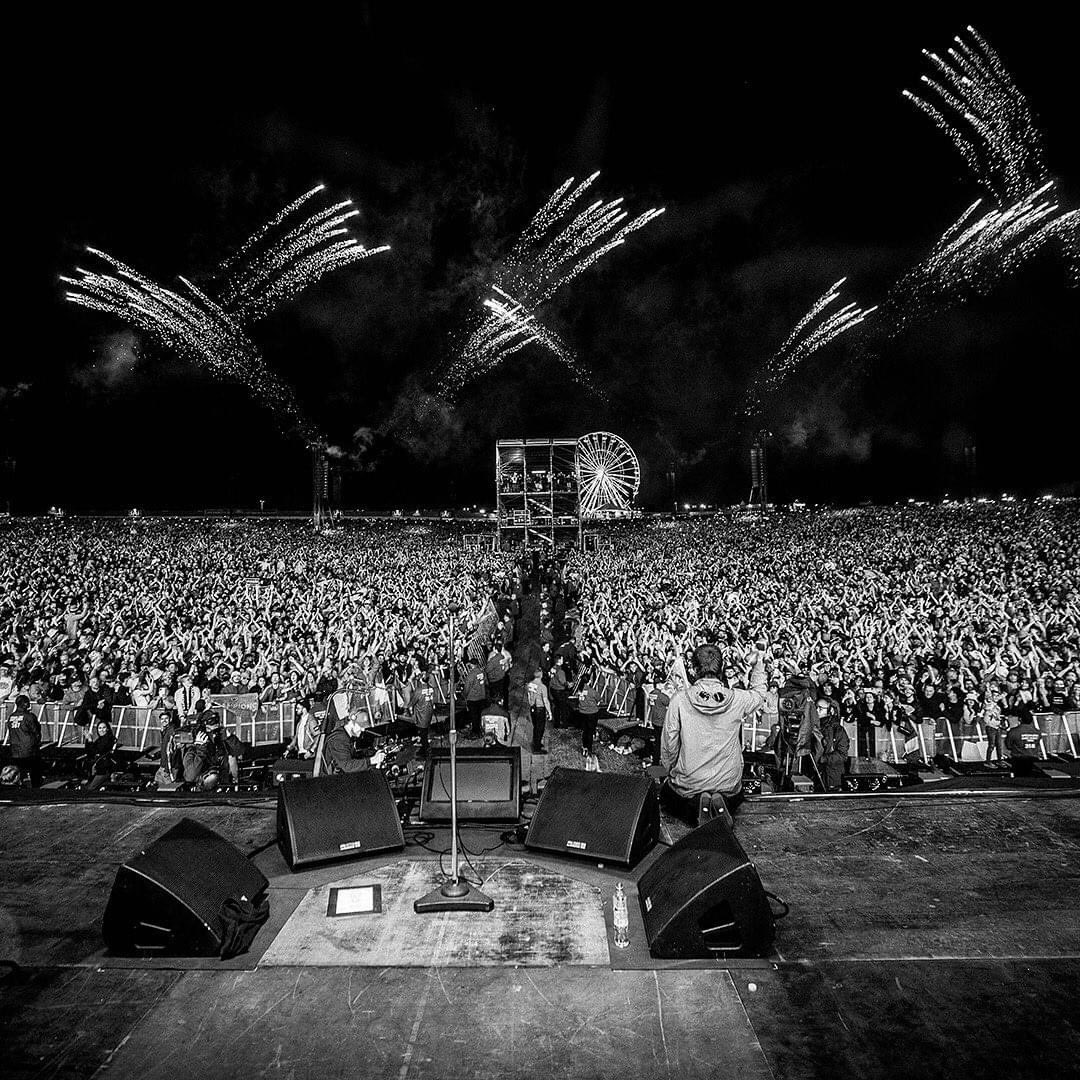
Arctic Monkeys would continue their experimental phase with ‘The Car’ in 2022, an album that took a cinematic approach. In my opinion, Alex Turner’s songwriting had improved since ‘Tranquility Base Hotel & Casino’, and the rest of the band also had their moments to shine on this record. I have to admire the innovation Arctic Monkeys embraced, and ‘The Car’ does contain career highlights, particularly the singles ‘There’d Better Be a Mirrorball’ and ‘Body Paint’. However, as with their previous work, I can understand why some listeners might feel disappointed, as it’s a very different sound from their earlier albums.
In contrast, The 1975 seemed to take a step away from their experimental records. After the release of ‘Notes on a Conditional Form’ and ‘A Brief Inquiry into Online Relationships’—two genre-defying, career-defining albums that tackled topics such as world governments, climate change (with Greta Thunberg), the power of the internet, relationships, and their friendship with each other—the band decided to make a straight-up pop album in 2022. Think Peter Gabriel, Bruce Springsteen, and even Hall & Oates—it’s a great pop record with clever, humorous lyrics, LCD Soundsystem references, and a couple of love songs mixed in. It’s a strong contender for album of the year!
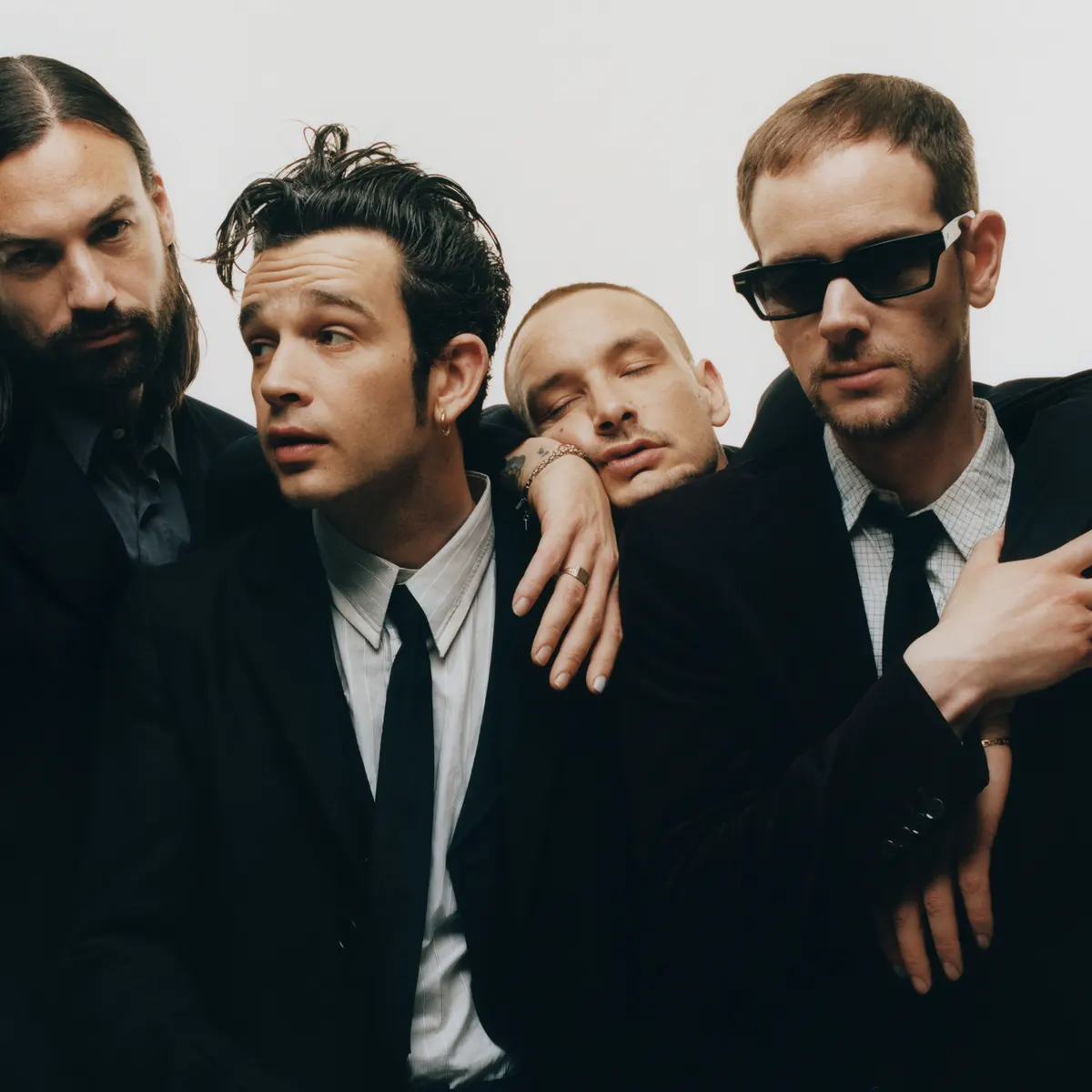
Foals would claim the crown with "Life is Yours", the perfect antidote to the lockdown blues. Written during the pandemic, the album feels anything but confined. It showcases the band letting loose and embracing a joyous, carefree vibe. The record is filled with tales of nights out, holidays, and youthful excess. something that lifts your spirits the moment you hear it. It’s the modern-day "Technique", solidifying Foals as one of the UK’s finest while also getting you onto the dancefloor with its infectious energy.
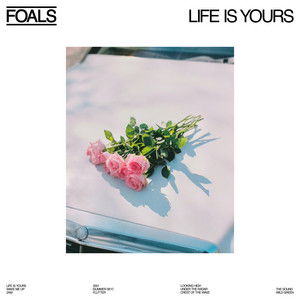
Speaking about the record the band said “We were thinking about parties, club nights and being drunk on the bus at 2am trying to get home. All of it: the excitement before you go out, meeting up with your friends, the wild abandon. ‘Who’s got the pingers? Where are we going?’ This is all of that youthful excess of going out.”
The album is the perfect soundtrack to those feelings, this album is full of songs that lead you to the dancefloor.
I feel like talking about one record from 2023: "Heavy Heavy" by Scottish band Young Fathers. It’s an album unlike anything I’ve ever heard before. Pop music that embraces influences from across the globe, "Heavy Heavy" continues to break boundaries while still being filled with catchy pop songs. The genres blend together like a puzzle, creating a rich tapestry of incredible music. Don’t just take my word for it though. Go and give it a listen.
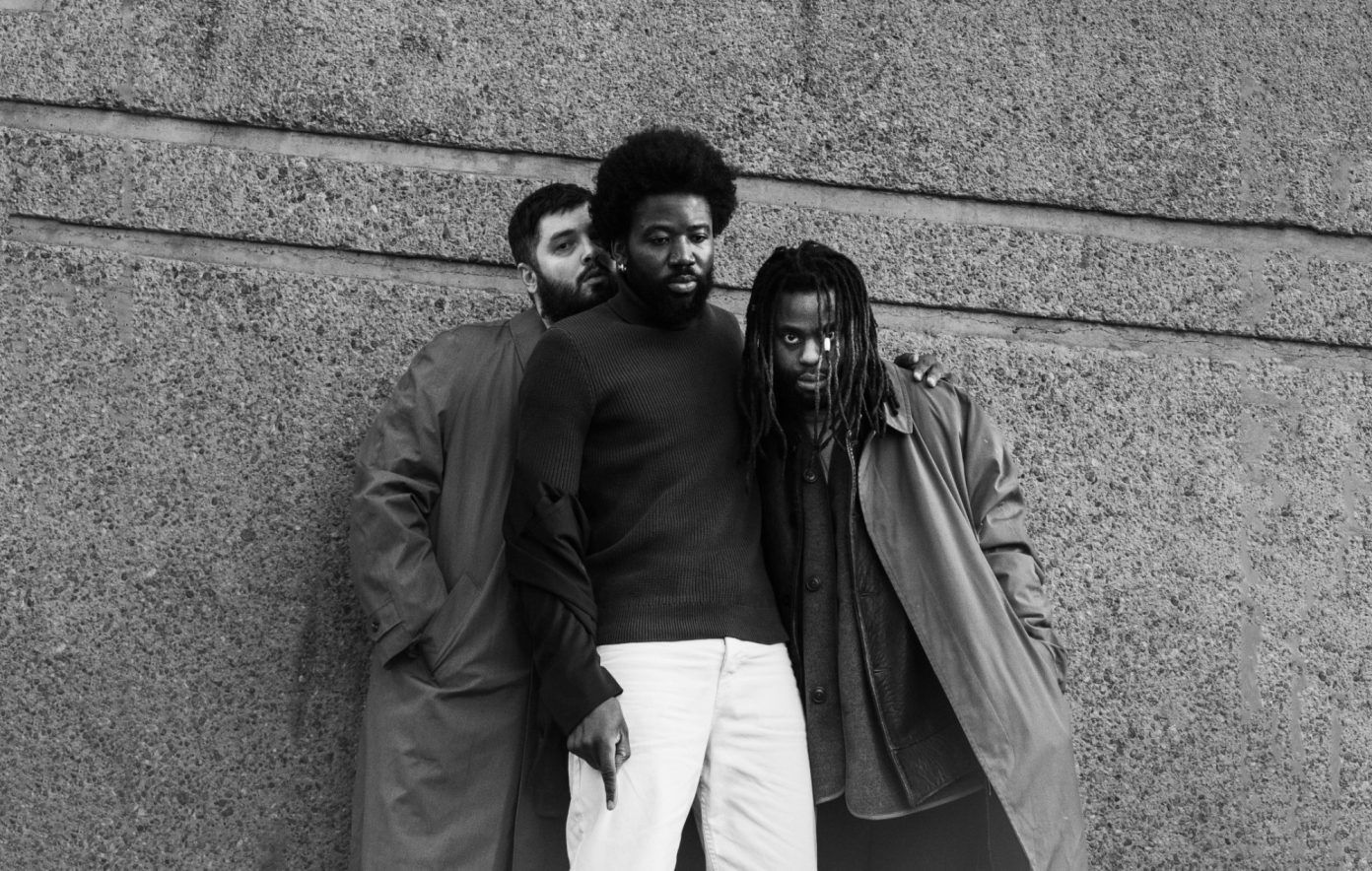
It Really, Really, Really Did Happen- 20s Part Two
2023 also saw two HUGE reunions. Britpop was back. Pulp reunited to celebrate the 25th anniversary of "This is Hardcore," the album that arguably killed Britpop. The band played a series of summer gigs in huge venues, arenas, and even at the top of some festival bills.
However, it would be bittersweet for Pulp as their long-time bass player, Steve Mackey, passed away in March 2023. The band continued to play without him and chose to honour his memory that way. Pulp's shows were well-received by both the public and critics. They were always a brilliant band, and Jarvis never lost his edge.
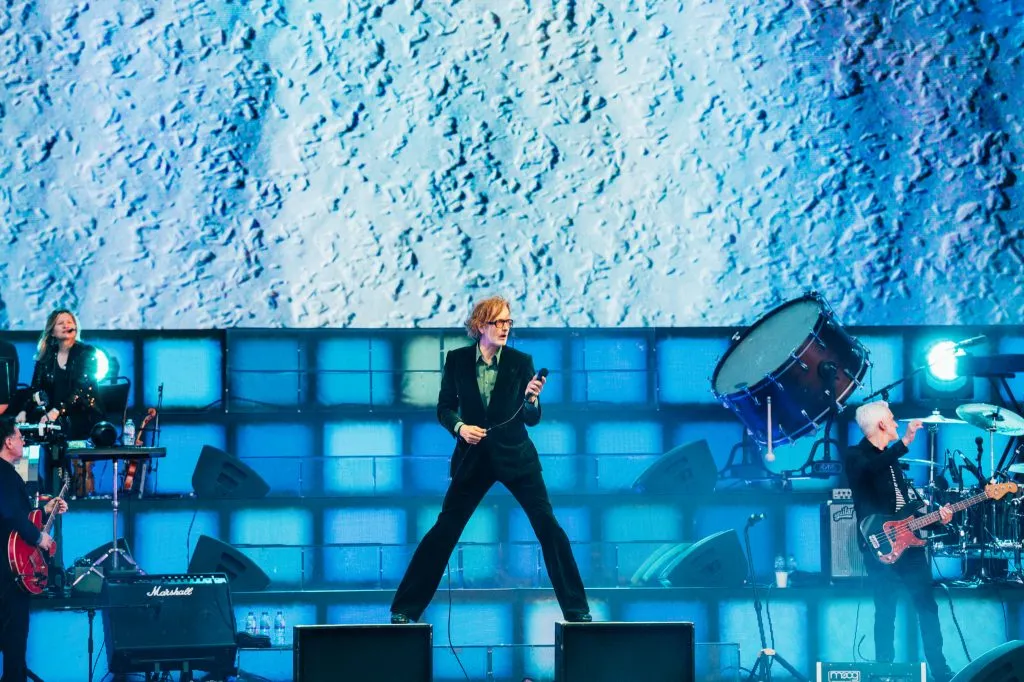
Blur also made a return in 2023, with a reunion tour around Europe and Asia first on the cards. The European leg of the tour included festival appearances, a first Amsterdam show since 1998 (I was there!), and two, yes, two dates at Wembley Stadium.

If that wasn’t enough, on the 18th of May Blur released new music and announced an album, "The Ballad of Darren." It marked the first new Blur record in 7 years. I’m definitely glad to hear them back. Blur are one of those bands that are still as important and influential today as they were in their '90s heyday. They also seem to be doing this tour and record for all the right reasons, and that’s admirable.
The magic was there, both on stage, and I can happily say in the studio. 'The Ballad of Darren' is some of the band's best work. It is memorable and touching full of emotion. You can feel what the band are going through which each line sung by a fragile front man, and each note played by his three best friends. Whatever they are going through, they are facing it together. This sense of friendship has strengthened over the years. As has the relationship with the Blur faithful.
“I gave a lot of heart, so did you / Standing in the back row, this one’s for you” Albarn sings on the album's final song 'The Heights'
The Ballad of Darren was born out of the gang getting back together, and the four members experiencing the friends they have lost. This album is for the people who have been there for Blur even in its title Blur has tried to appeal to their generation those who have been on this journey with them. Darren refers to Blur’s security guard and resident every man Darren “Smoggy” Evans. But the title is more than just a nod to an old friend, Darren is a name that is synonymous with the generation Damon, Graham, Alex and Dave grew up in, and that name seemed to lose favour with the public, in fact it dropped out of the Top 100 Boys Names in 1994 just as Blur began to win favour with the British public. There's something quite beautiful in that.
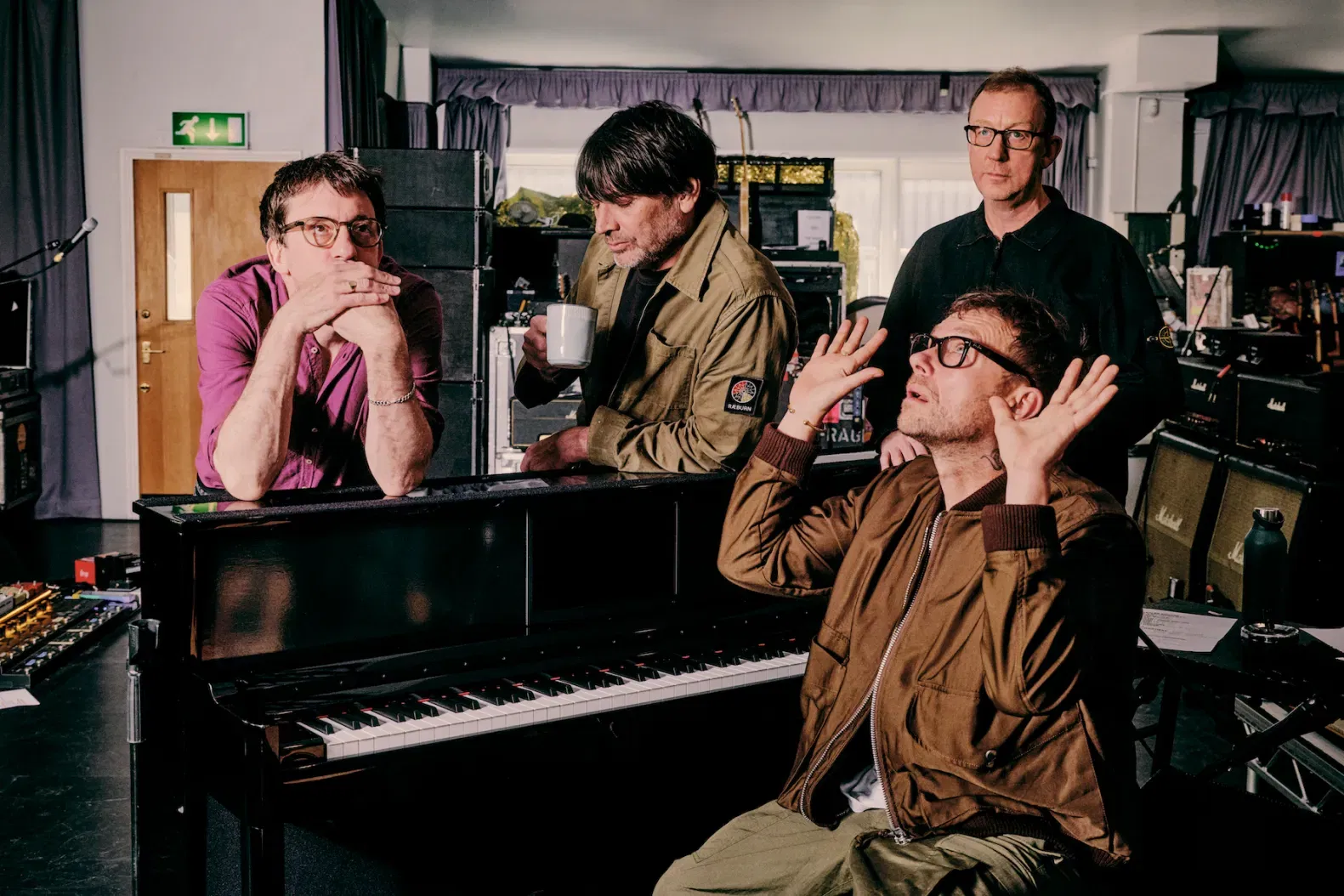
Glastonbury 2023 saw the ‘Monkeys’ back on the farm for the third time, ten years since Arctic Monkeys’ last headline slot. Although for some it was a lacklustre performance, it showed the new era of the band and Alex’s unique presence as a frontman.
The band played through a career spanning set, just days after illness had threatened to cancel their headline slot. A set that saw the band play songs from the latest album "The Car" and work back through the previous six albums. Giving older tracks a new lease of life. ‘Pretty Visitors’ comes armed with a tense key-change towards the end. Full crooner-mode is activated for ‘Cornerstone’, a song that seems to grow with power as it gathers momentum; ‘I Wanna Be Yours’ works in lines of ‘Star Treatment’. The raw power of ‘Body Paint’ – perhaps their finest composition – shows how far the band have come.
They stand alone in their field, out of all of the bands that came out of Britain in the early noughties. Arctic Monkeys stand out as true superstars.
A full review of the performance can be found here: The Monkeys Back on the Farm
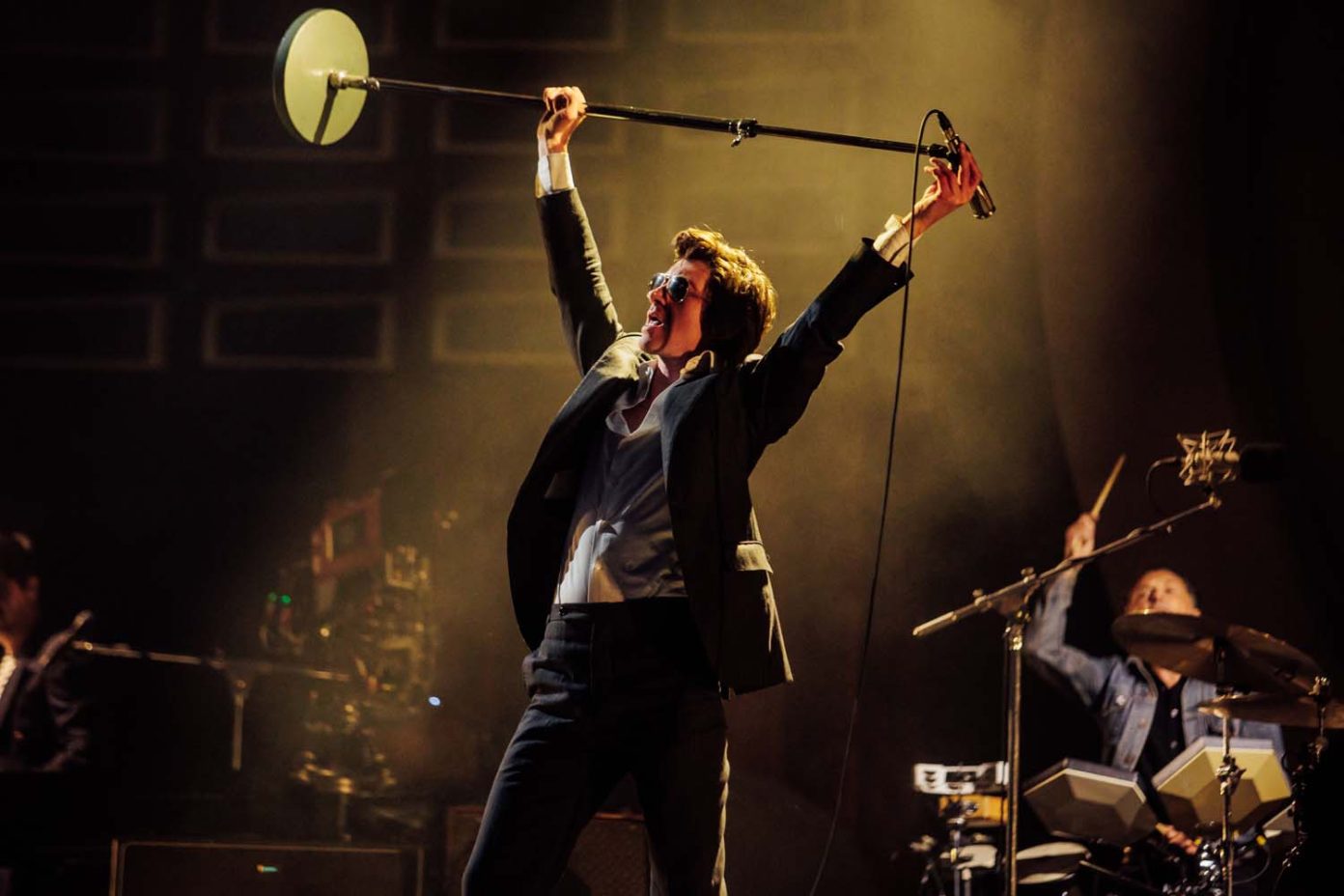
It was quite a good year for guitar music, in fact. Blossoms and Rick Astley became Britain's best tribute band and proved you can still like The Smiths even with Morrissey’s controversial views. It was a mad, unique idea first seen in 2021 with two small gigs, but trying it at Glastonbury was a huge gamble but it paid off. A 16 song set that contained all of the heavy hitters, played by six huge fans of the band. In a time where being a fan of The Smiths, can be seen by some as controversial. Blossoms and Rick allow fans to enjoy and revel in those brilliant songs again.
Again, a full review can be found here: https://www.beyond-the-grooves.co.uk/news/these-charming-men
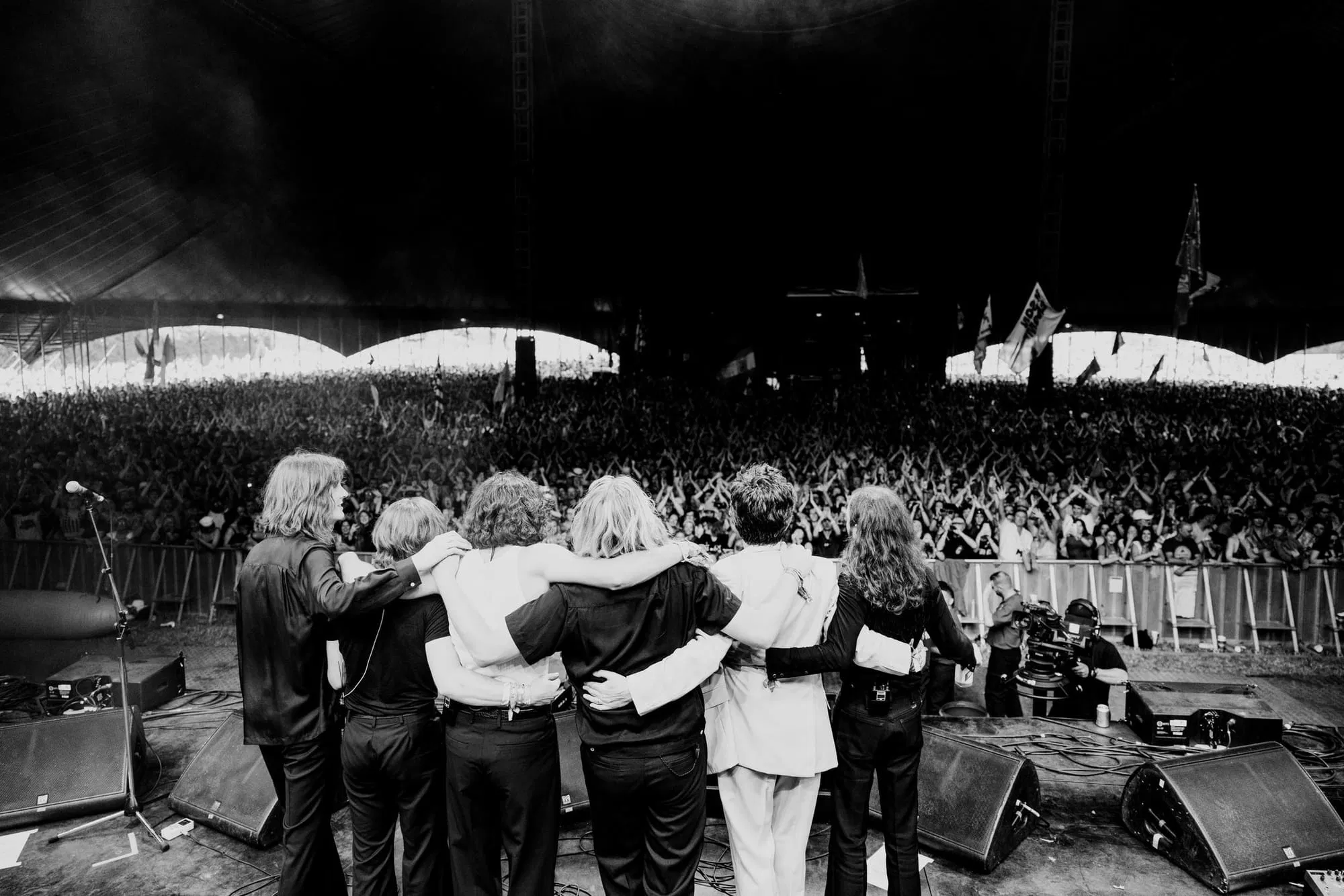
Courteeners played the festival for the 8th time, and it seemed like a return to form. Having seen them live a number of times, Liam’s voice can be a bit hit and miss, but Glastonbury was a big success for the band. Fingers crossed 2023 can be the year we see new music from them.
Friday also saw a secret set from ‘The Churnups,’ who we found out to be Foo Fighters. It was the band’s first performance in the U.K. since the tragic loss of drummer Taylor Hawkins. They were given an afternoon slot on the Pyramid Stage, and an hour. Safe to say they smashed it. No gimmicks, no time to stop. They played the hits, and fans were impressed. A true rock masterclass.
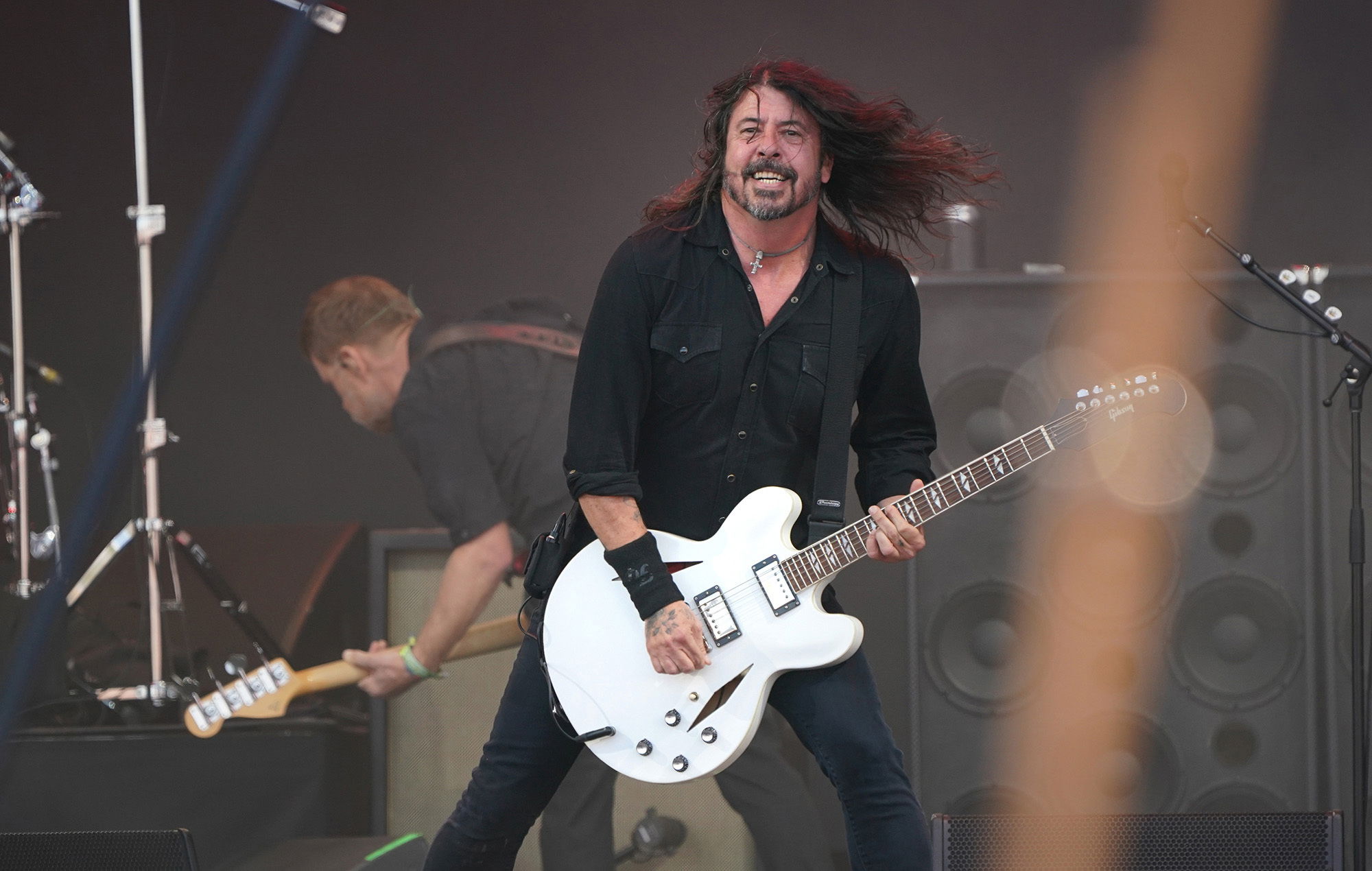
Rounding off Glastonbury in both this post and the festival itself was Elton John. It saw the Rocket Man take his final flight, well, in the U.K. at least. A performance that didn’t let up. It was hit after hit. He knew what he was doing, and he attracted one of the biggest crowds the festival has ever seen! It will go down as one of the best Glastonbury performances we have ever seen.
Celebrating the past, present and future of UK music. Using his set to give a platform to some newer artists Jacob Lusk from Gabriels lends some sweet soul to ‘Are You Ready For Love’, Rina Sawayama absolutely slays Kiki Dee’s part on ‘Don’t Go Breaking My Heart’.
Brandon Flowers adds some Vegas glamour to 'Tiny Dancer'. It's Elton's stage presence and the songs fans are here to see though, and there's none missing. It is a set of wall to wall bangers. ‘Crocodile Rock’, massive. ‘Saturday Night’s Alright for Fighting’, feral. ‘I’m Still Standing’, the summit. ‘Don’t Let the Sun Go Down on Me’, dedicated to George Michael on what would have been his 60th birthday.
"Candle in the WInd", "Someone Saved My Life Tonight" and Pinball "Wizard" all made the setlist, even the most casual Elton fan was gripped. By the epic firework finale of "Rocket Man" had finished, it could have been in no doubt, that Elton's performance was not only the best of the weekend but one of the best headline slots for years.
It was one of the festivals standout moments, the perfect farewell to one of the greats.
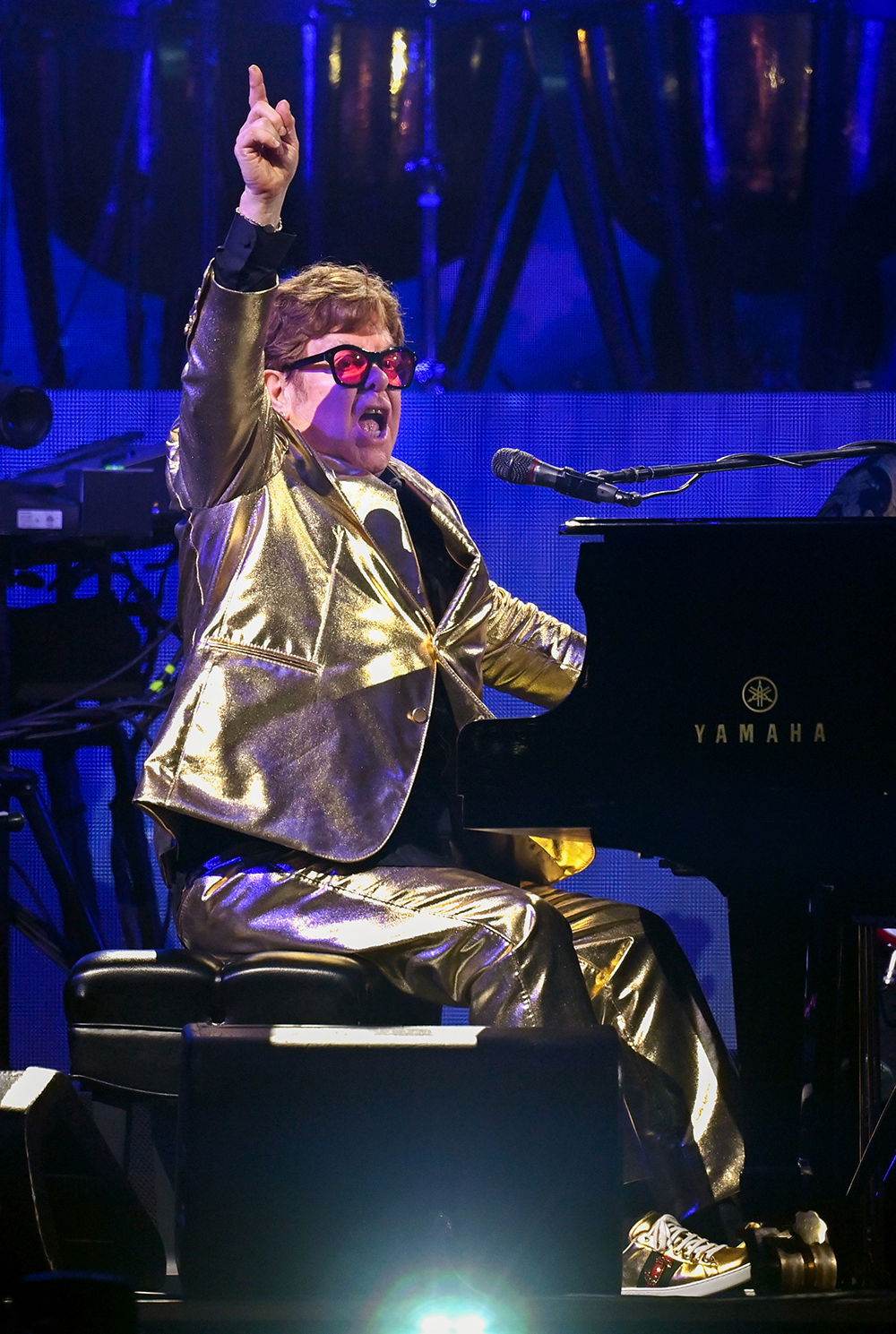
Glastonbury wasn’t the only big gig though. Arctic Monkeys would take "The Car" for a spin on a U.K. stadium tour, playing a career-defining set Read the full review here.
London’s Finsbury Park would host Jamie T, Pulp, and The 1975 over one weekend, all of which played some of their biggest headline shows to date. It’s quite telling that these gigs happened in a time where guitar music is supposedly dead! Full review here.
Manchester saw “Sounds of the City” make a return, with Bastille and Blossoms representing the guitar bands. Hacienda Classical played too, keeping Manchester's heritage alive.
The legends came out to play: Bruce Springsteen sold out two dates in Hyde Park and played a few football stadiums. Billy Joel brought his piano ballads to the capital too, rounding off Hyde Park’s big gigs for the year.
Plus, 2023 has also given us some brilliant new music from some of Britain’s best bands and artists. I mentioned Young Fathers earlier, who have gone on to become one of my favourite bands. Noel Gallagher’s High Flying Birds also released an album, “Council Skies”.
An album that saw Noel look back and be reflective with his songwriting. In terms of structure and sound, he also looked back to a more traditional style that fans are familiar with. It’s the Noel we know and love. With huge choruses, nods to Oasis with songs like “Easy Now” and beautiful ballads that we know Noel can deliver, yet still with the twists and turns Noel throws in. “Dead to the World” being a prime example, it's one of the most ambitious things Noel has ever written, it's not the first time he has gone outside of his comfort zone with High Flying Birds. 2017's "Holy Mountain" and 2019's "Black Star Dancing" spring to mind.
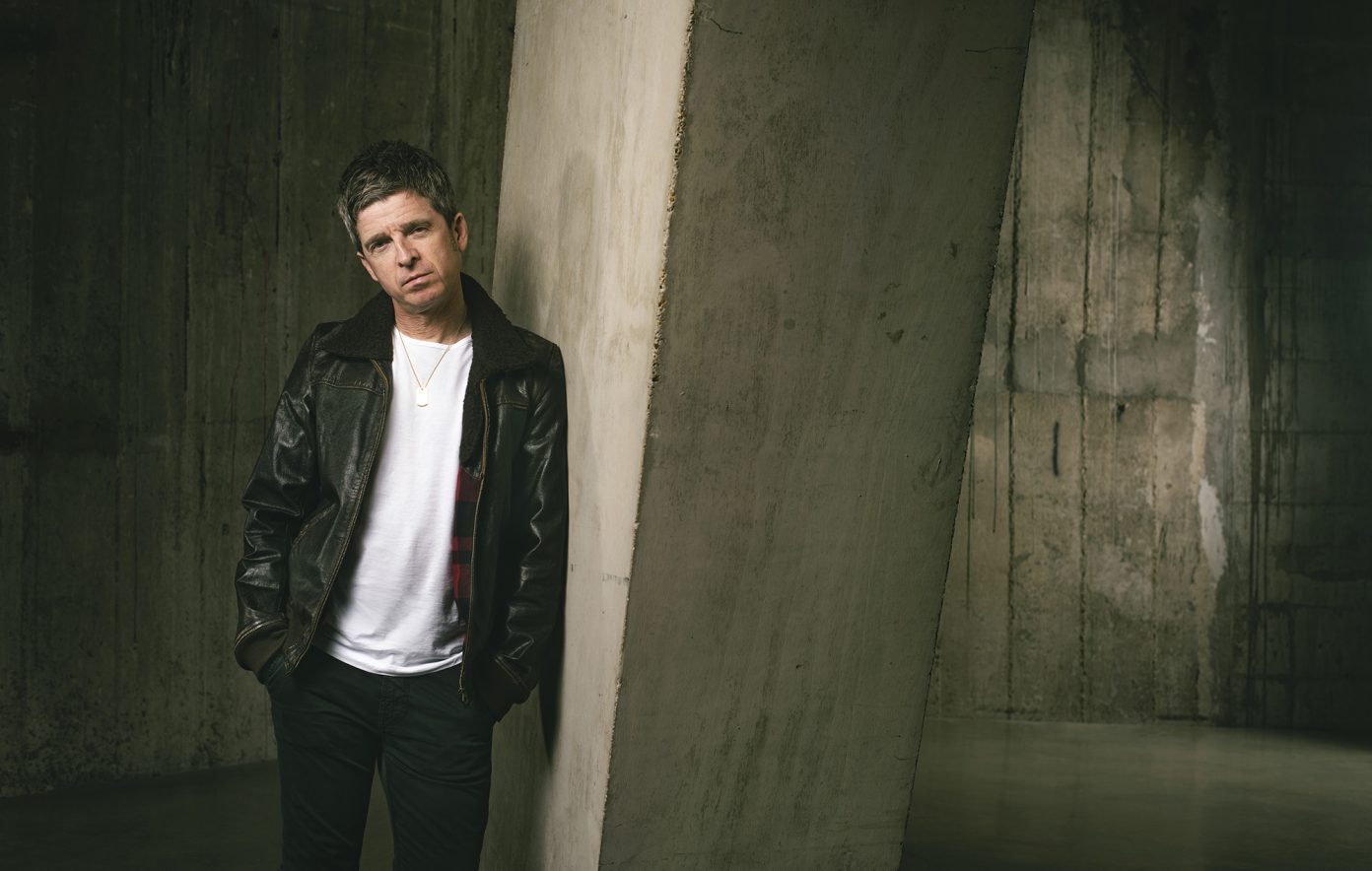
Deploying strings decisively and carefully similarly to how Arctic Monkeys did on 2022's "The Car" it creates a beautiful moving atmosphere on the record.
It's some of the elder Gallagher's best work since Oasis. An album inspired by his youth in Manchester, his love of The Cure, and getting the acoustic guitar back out of the case. Hopeful and nostalgic, reminding us just how good of a songwriter Noel is.
Damon Albarn has been a busy man over the last couple of years, and his project Gorillaz wasn’t going to take a step back whilst he was working on Blur. In fact, Gorillaz have released their best album to date, “Cracker Island”, complete with Stevie Nicks and Tame Impala collaborations and a song that sounds like everything Damon Albarn has ever done in the form of “Skinny Ape” Read more here.
A record that shows the bands influence on popular music, past, present and future. There is no complex concept, or industry defining moments. Just a collection of some of the bands best tracks. ‘New Gold’ must now be considered alongside their best work: the latter enlists a catchy vocal hook from Tame Impala’s Kevin Parker. Stevie Nicks and Albarn’s vocals intertwine wonderfully for ‘Oil’, as does Adeleye Omotayo’s on ‘Silent Running’.
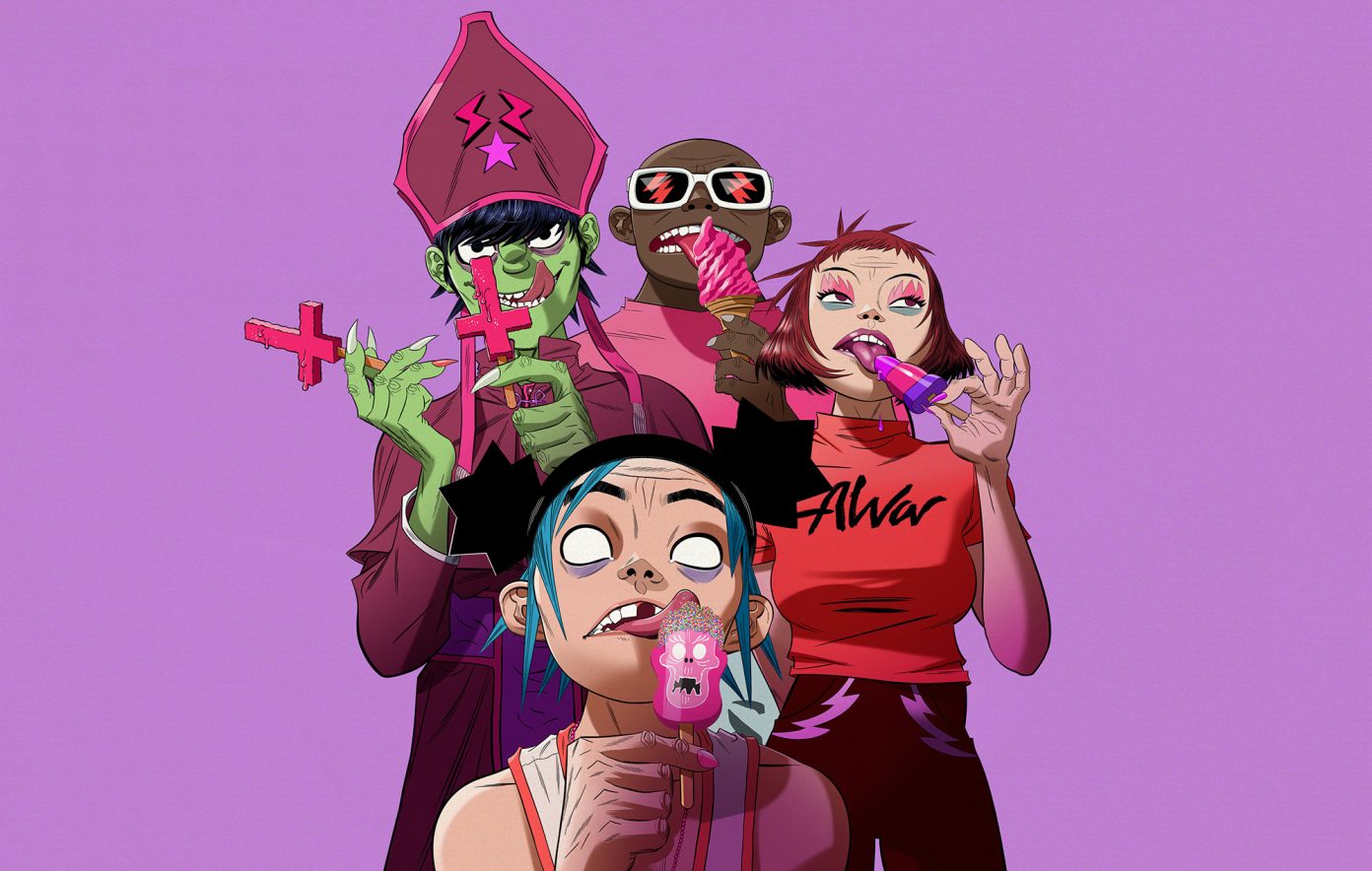
As the NME state."A band that was once considered mucking about on the periphery of pop are now very much defining the present and inspiring the future. You could be doing much worse for album eight, eh?"
Sleep Token, one of Britain’s most interesting and intriguing bands, is a group of masked and cloaked musicians whose identity is currently unknown. Don’t let this captivating dynamic deter you though. Sleep Token have released one of the best albums of the year, “Take Me Back to Eden”. It’s an album that takes the rock rulebook and rips it up! An eclectic mix of sounds, styles, and songwriting that is simply brilliant. “Are You Really Ok” is stadium rock, and one of the best songs of the year! Whereas “Aqua Regia” is almost R&B in sound. It’s a breathtaking listen.
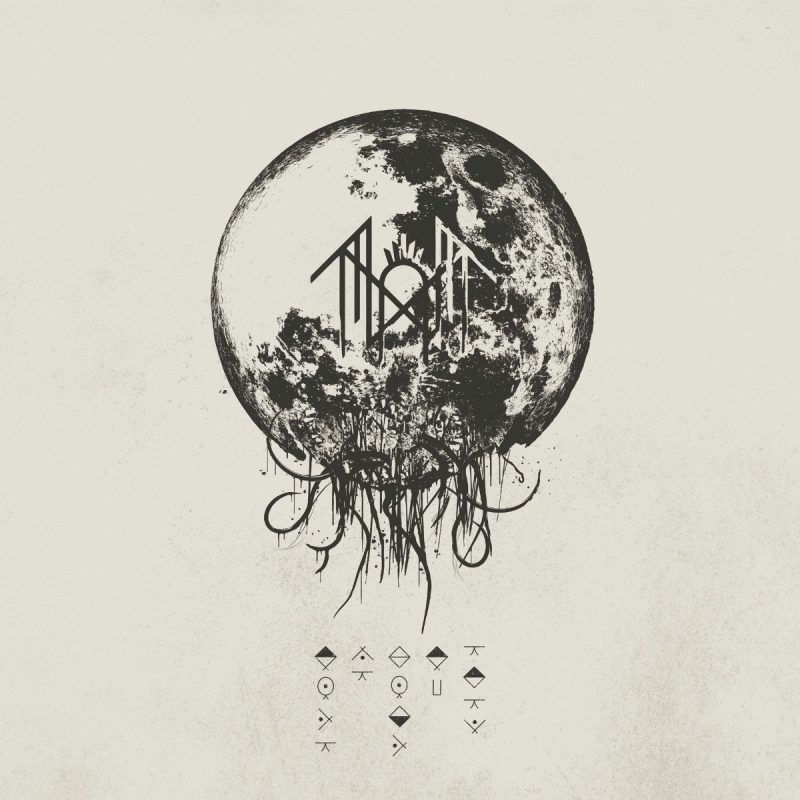
Following on from the bands two previous records, this is the album where the stakes have been upped. They had already written some of the best music of recent memory. Not wanting to be confined to a genre. Sleep Token are pushing the boundaries of whats possible. From atmospheric anthems like “The Night Does Not Belong to God” through to synth pop tinged metal bangers like “Alkaline” and whatever “Dark Signs” is. It sounds like a dance tune with an alternative rock, metal sound.
The band are making some of the most interesting music in Britain today, and have now made the jump into arenas. Festival headline slots are just around the corner. Its an exciting time to be a fan of the masked band.
Ending festival season was Reading & Leeds, which saw Sam Fender, Foals, The 1975, and The Killers headline the famous festival. All of them played unbelievable sets to huge crowds. It was a spectacular close to an unforgettable summer of live music.
You can read more about the festival here: The End of the Summer, the Beginning of Your Lives.
It was the fitting end to Sam Fender's Seventeen Going Under cycle following his huge dates at St James Park earlier in the year. The 1975 proved themselves to be one of Britain's best live bands and reinforced their self-titled debut as an absolute classic. The Killers are, and always will be, adopted Brits. Although they hail from the fabulous Las Vegas, Nevada, they will always have a place in the hearts of us Brits. Foals played an absolute blinder, again proving themselves as one of Britain's best live bands, delivering a set that could inspire the next generation of headliners.
It was the fitting end to what has been one of the best summers of music in recent memory. From The Monkeys on the Farm to Sam's first headline slot, it was one to remember.
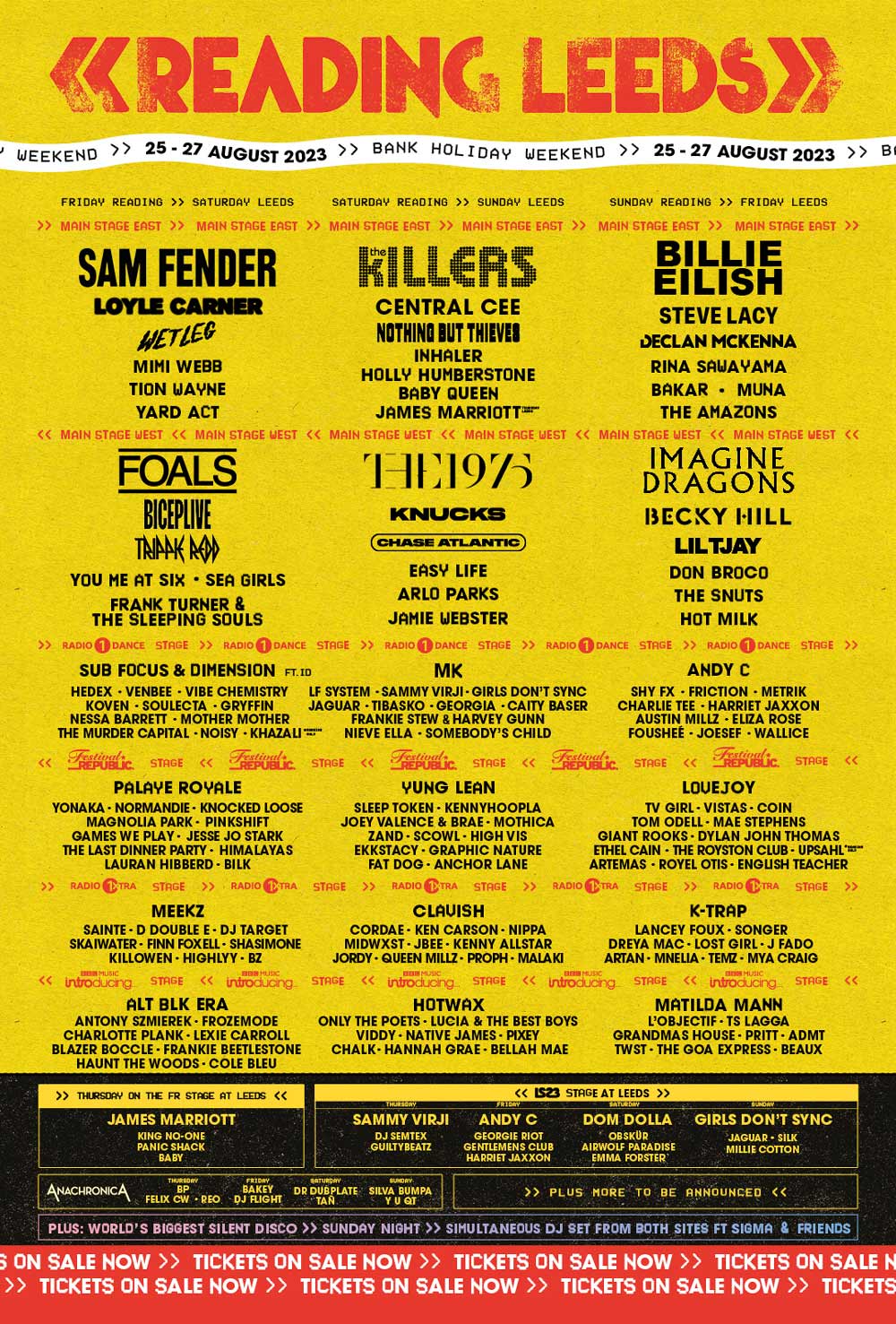
November 2023 saw arguably 2023’s biggest musical moment: the release of a new song by The Beatles. “Now & Then” was released on November 2nd, a song that the band had originally tried to record in the 1990s unsuccessfully but was brought to life with the aid of Peter Jackson and new vocal isolation technology.
“Now & Then” didn’t just fade into obscurity. As with most things The Beatles did, it took off. Breaking countless records, it became the band’s 18th Number One single in the UK. The band also broke streaming records this century. It became the fastest-selling single of 2023 and the fastest-selling vinyl of this century too.
The Beatles now hold the record for the longest gap between the band's first Number One single “From Me to You” (released in 1963) and “Now & Then” (released in 2023), a career spanning over 60 years.
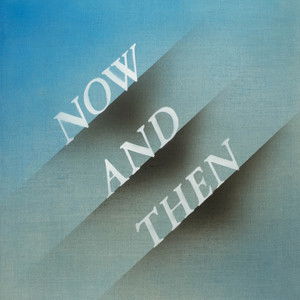
The gap between The Beatles' last Number One single, “The Ballad of John & Yoko”, and “Now & Then” is also a record-breaking 54 years.
It was a truly poignant moment for music this year, seeing all four of The Beatles play on one last song. This marked a definitive closing chapter for The Beatles, bringing their story to a heartfelt and emotional end. A real poignant ending.
It’s the final chapter in musics greatest story. A story in which four lads from Liverpool took on and took over the world, a story filled with chaos, tragedy, beauty, controversy, sadness and joy, friendship and soundtracked by some of the greatest songs ever written. Has its final chapter. For those who are still here and for those lost along the way.
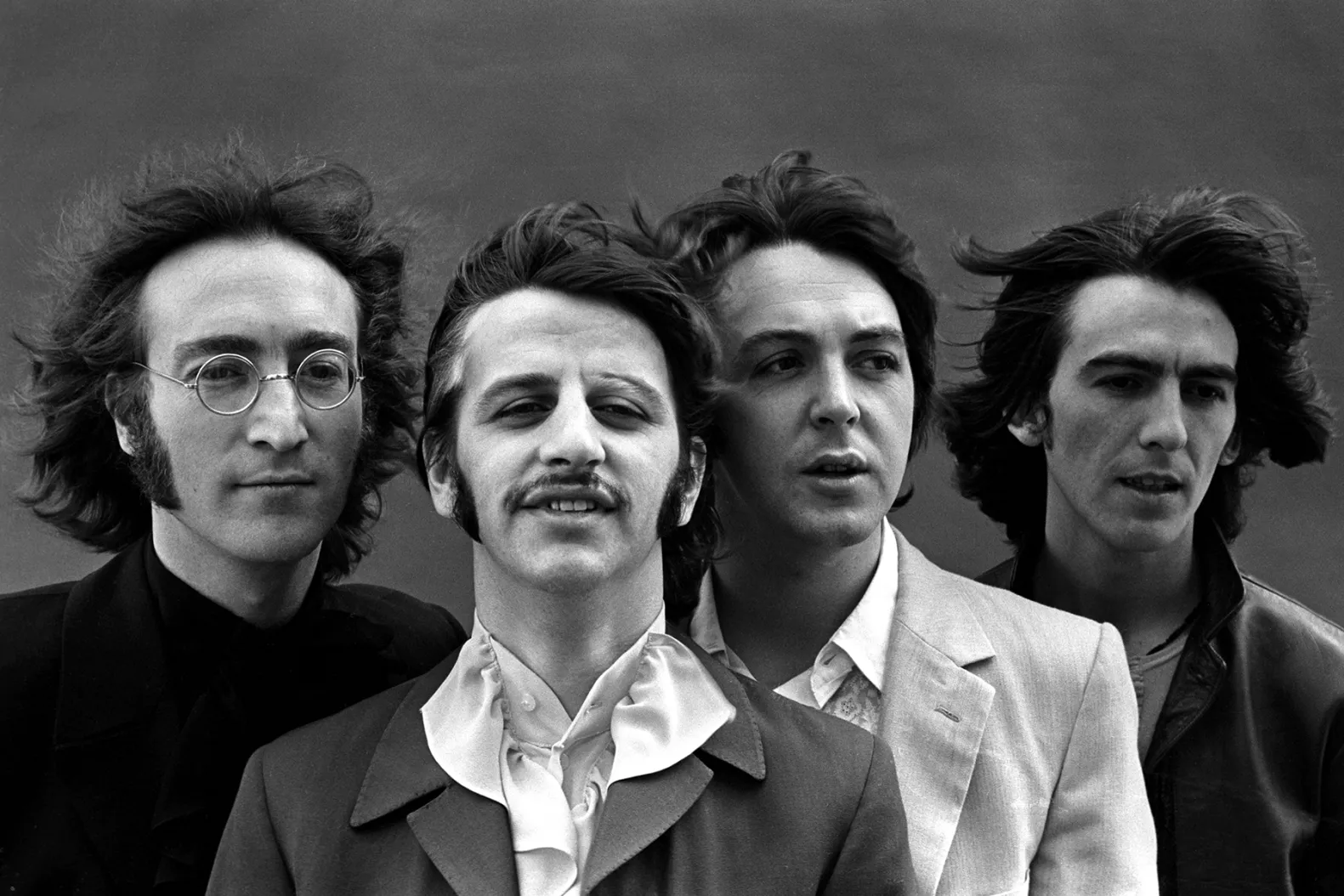
2024 started out with a new band hitting the top spot in the UK. The world got to know about The Last Dinner Party at the end of 2023 with the singles “Nothing Matters” and “My Lady of Mercy.”
February 2024 would see the band release their debut album, “Prelude to Ecstasy,” a genre-defining, boundary-pushing debut. The album saw the band mix cinematic strings with 70s guitars and Fleetwood Mac-style vocals, creating a truly unique record. “Caesar on the TV Screen” offers a unique take on the Roman Empire and Soviet-era politics, making for a brilliant listen. “Burn Alive” is one of the best songs in recent memory, a sprawling epic with haunting instrumentation and vocals that combine influences from ABBA and Fleetwood Mac, creating a gem of a pop song.
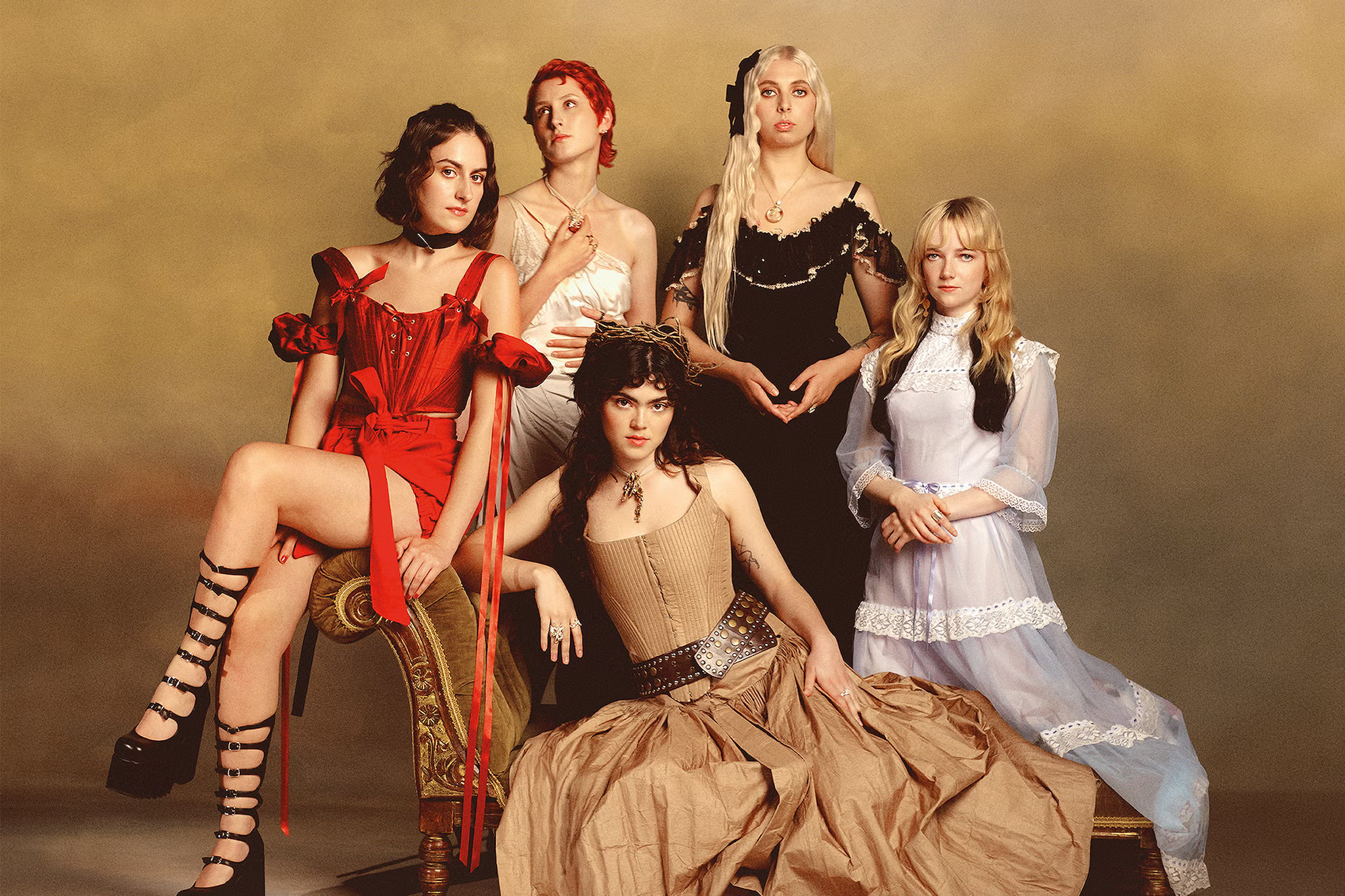
The album would arrive in March 2024, with both legends hitting the road and playing in smaller venues than fans might expect from such icons.
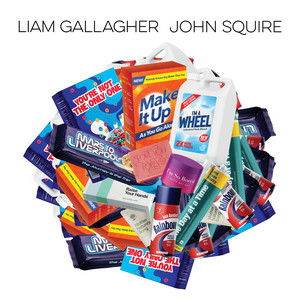
It was an album that received a mixed reception. Some hailed it as the best thing both Liam and John had released in years, while others were left a little disappointed. Of course, there were glimpses of The Stone Roses and Oasis in the songs, but the album seemed to be missing something. There are moments of brilliance; “Mars to Liverpool” stands out as one of the best things either of them has done in a long time. A tribute to the Fab Four by two legends from just down the M62, Squire's guitar work is brilliant, and Liam's vocal has echoes of early Oasis. “Love You Forever” carries a touch of Hendrix and some snarling lyrics, which may or may not be about a certain Mr. Noel Gallagher. While some of the songs are let down by their lyrics, there’s a good variety of tracks here. Oasis and Stone Roses fans will likely be pleased with what’s on offer. Liam has made a record with one of the men who inspired him to form a band, while Squire rekindled his love for music after an injury that made him fear he might never play guitar again.
The tour that followed the release of this record also received both good and bad press. I find myself firmly in the “bad press” camp for this one. Gallagher and Squire were charging £80+ for tickets, yet they only played a 50-minute set, with no Oasis or Stone Roses songs. Fans were essentially paying to hear the album and a Rolling Stones cover. If you ask me, that’s a little bit ridiculous.
Just as they had done in 2023, The 1975 hit the road in early 2024 with their “Still At Their Very Best” tour. This tour firmly cemented them as one of the country’s biggest and most important bands. Selling out four nights at the O2 Arena in London is no small feat. Birmingham, Glasgow, Manchester, and Cardiff also got dates, proving the band’s widespread popularity and impact on the UK music scene.
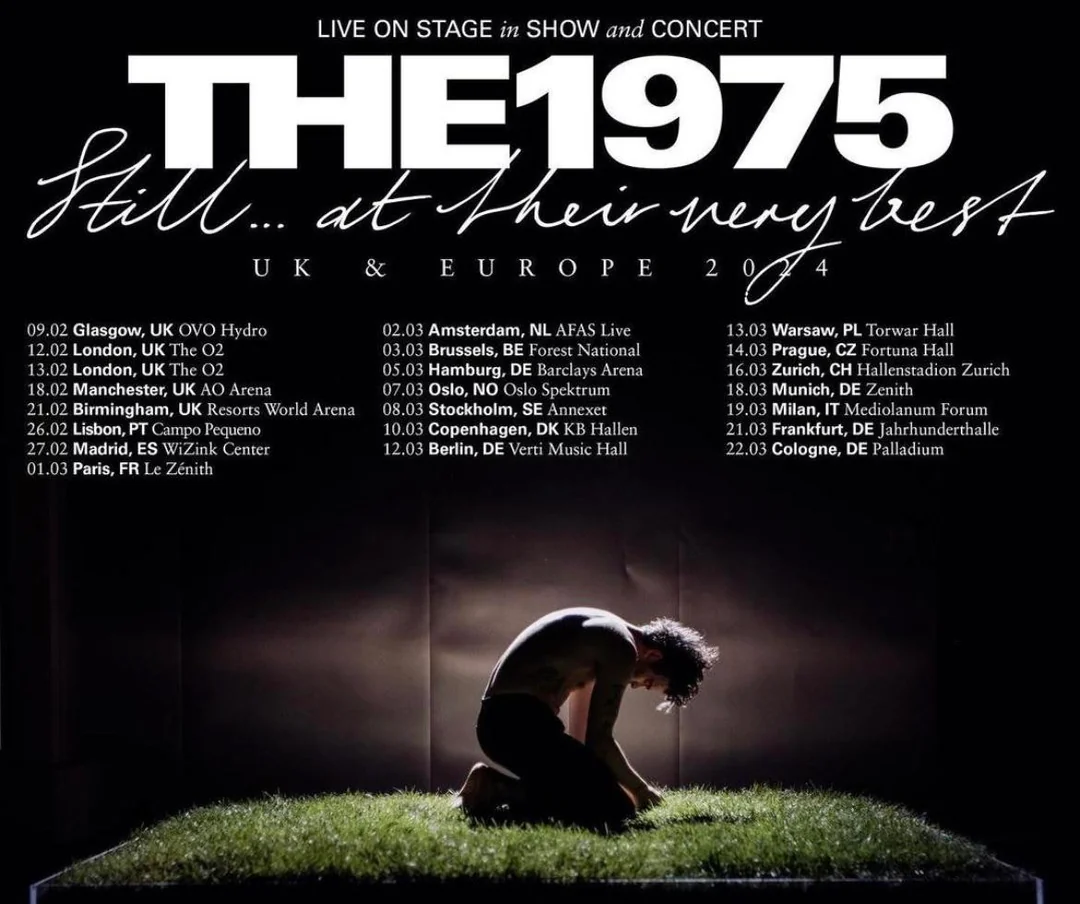
Jamie Webster would release "10 for the People," his third album. A collection of songs for the people who had gotten him to this stage. "Better Day" acts as a thank you to the fans who have helped him get this far. All of the songs, however, tell a story of the people. "Something to Eat" and "Voice of the Voiceless" see him at his most political with some hard-hitting lyrics. It's another very good record from the Liverpool songwriter. He manages to sum up the plight and peril faced by many with a catchy pop tune. The ballads are still there too. "Lovers in the Supermarket" and "Dolly Bird" are some of the most beautiful things Jamie has ever written. The first, in particular, is a tale of an elderly couple who are still absolutely besotted with each other. All these years later, it's wholesome and beautiful, written and delivered with a heavy heart.
Two female led bands would release two of the best albums of the year. Galway four piece NewDad released their debut "Madra" in January, a confident and assured collection of shoegaze bangers. Underneath the shoegaze polish, is seams of doubt, uncertainty and frustration within the lyrics. It makes for one of the best listens of the year. You can hear nods to Slowdive and Wolf Alice but make no mistake NewDad are not merely imitating these bands, they are forging their own sound. "Sickly Sweet" is one of the years catchiest singles and "Where I Go" is up there with the very best songs released this year. It's a brilliant debut album, have we found Ireland's next great guitar band?
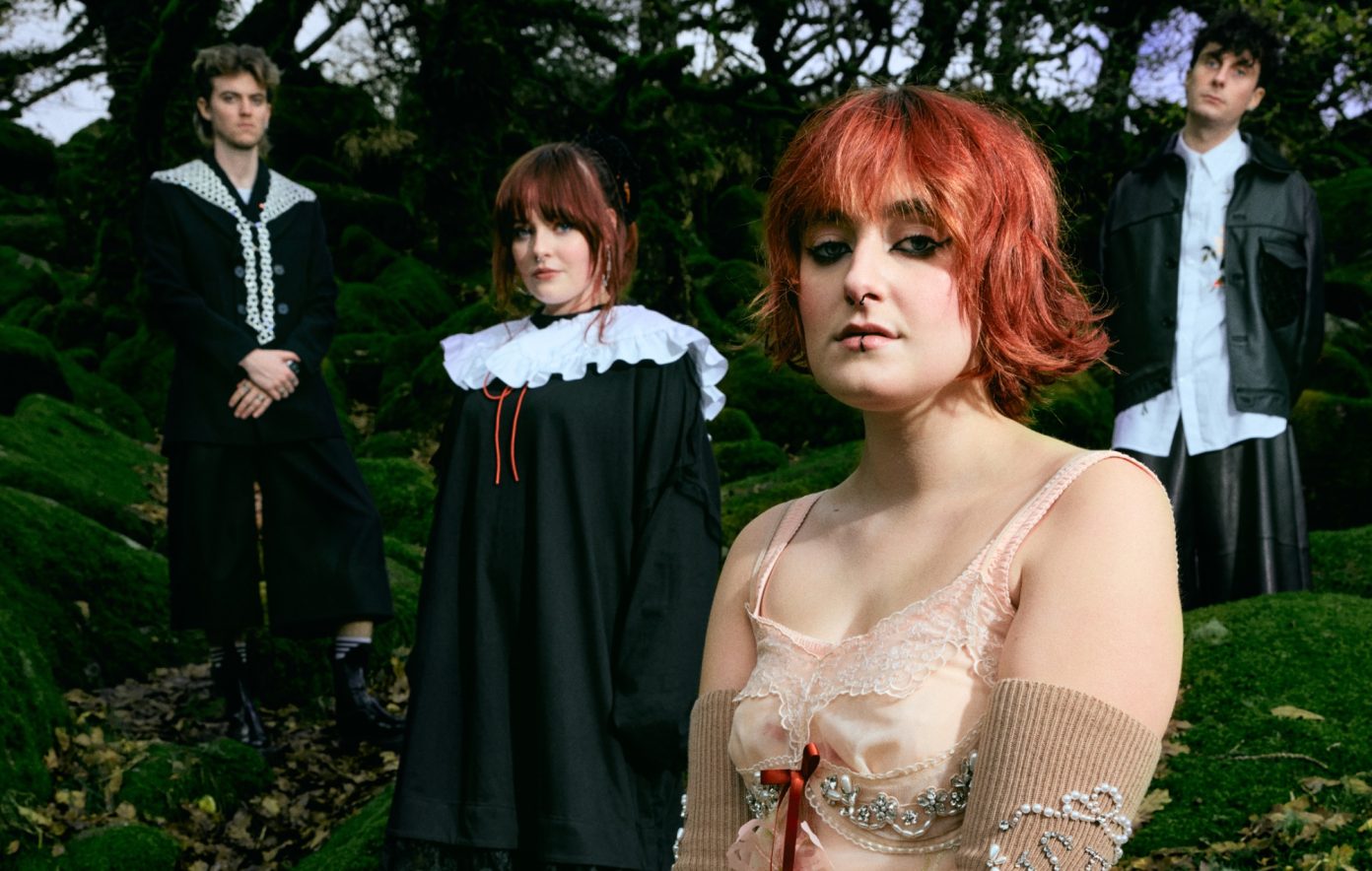
English Teacher blew many of us away this year. With their Mercury Prize winning "This Could Be Texas" a collection of brilliant indie songs. It's an album that takes influences from everywhere, and mixes the surreal with the everyday. From "The Worlds Biggest Paving Slab" which delivers an ode to the little people with huge ideas. "Albert Road" will speak to anyone who remembers bittersweet moments of boredom and frustration, and teenage daydreaming themselves out of the wire in working class neighbourhoods. "R&B" sees the band an in particular Lily Fontaine, the front woman hit back at misplaced stereotypes and presumptions about her place in the industry “despite appearances, I haven’t got the voice for R&B”.
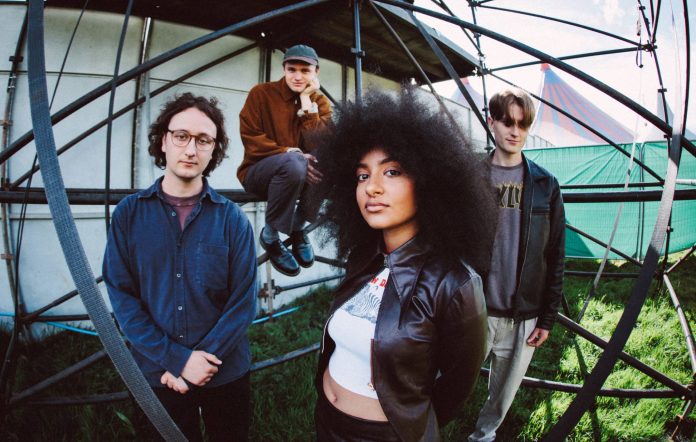
It's a landmark statement by a band poised for big things, a band working with brilliant songs who have dared to dream.
Catfish would also make a return in 2024, nearly three years since their last appearance at 2021's Neighborhood Weekender. They would drop new music in the form of "Showtime," a slight deviation from what we've come to expect from them. Two members down and a point to prove, made them deviate a little from the Catfish sound. With some huge summer shows penciled in, could this see a new era of the band, or will they not live up to the hype?
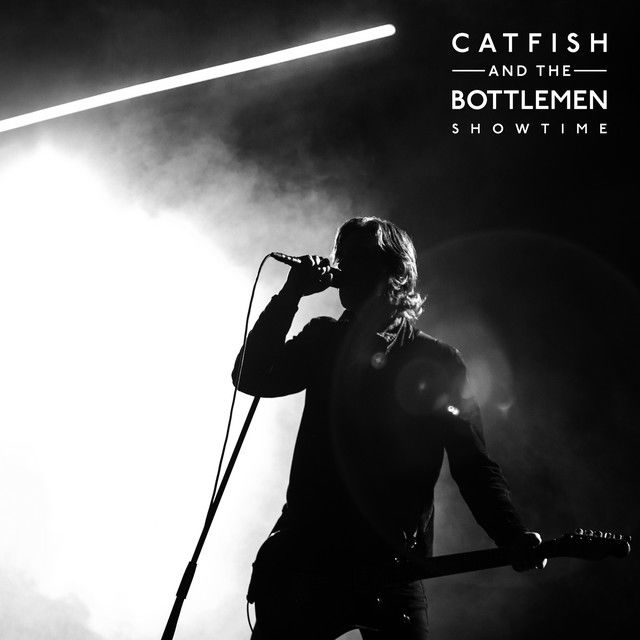
The 2024 Teenage Cancer Trust gigs delivered a stellar lineup, headlined by the legendary Noel Gallagher, supported by Stockport’s finest, Blossoms.
Other headliners included The Chemical Brothers, Young Fathers, The Who, and Squeeze.
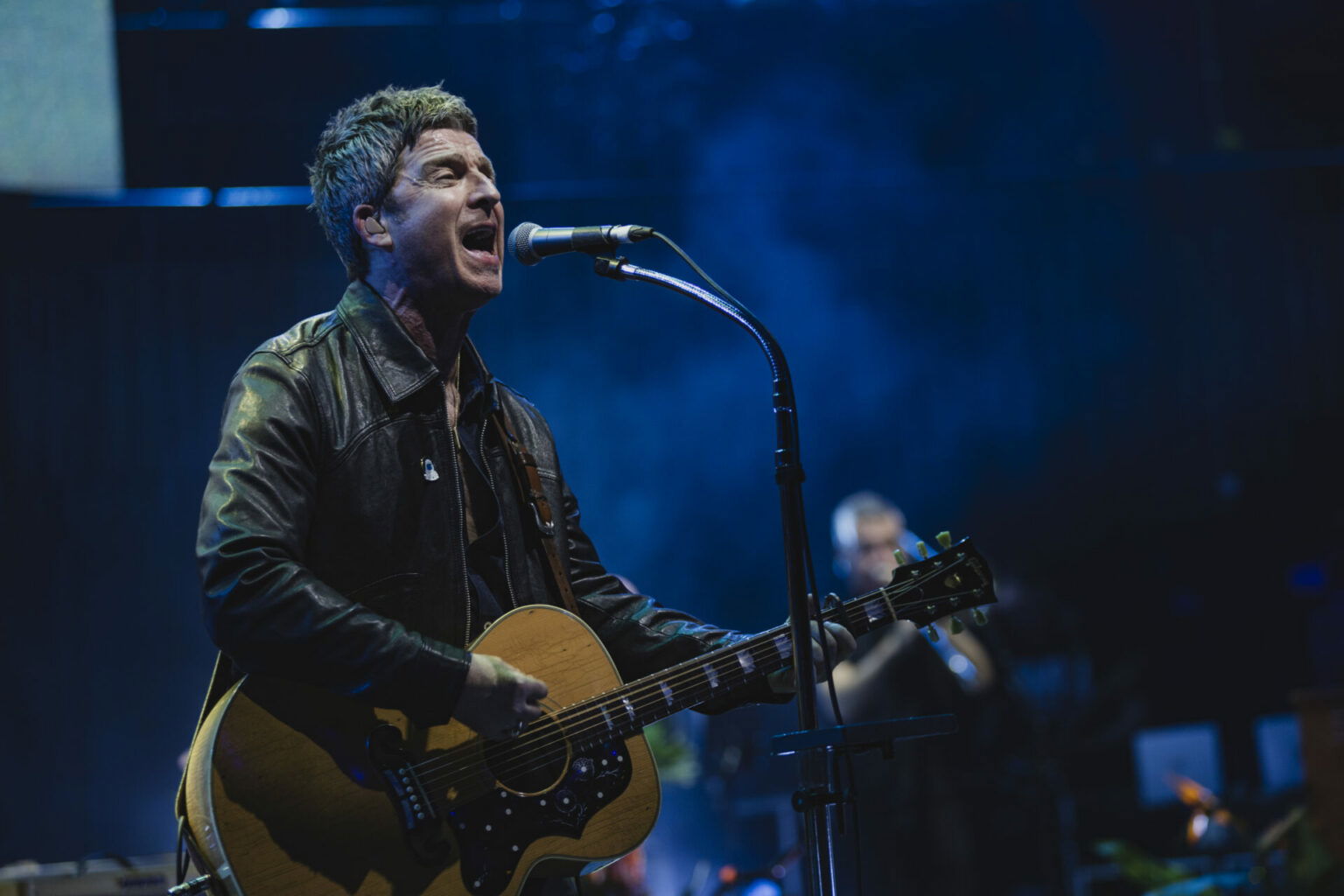
Noel Gallagher’s set was a dream come true for Oasis fans. Among the highlights was the live debut of High Flying Birds’ rendition of "Stand By Me," a beloved Oasis classic performed for the first time ever by his current band. The setlist also included fan-favorites "Talk Tonight" and "The Masterplan," transforming the evening into a nostalgic celebration of one of the UK’s most iconic bands. It was a night packed with musical gems, leaving the crowd with memories to treasure for years to come.
Young Fathers have become one of my favorite bands over the last year or so, and the band's Royal Albert Hall performance may have made more people take notice. Reaffirming them as one of Britain's best bands. A night that showcased a rich discography, soulful stage presence, and life-affirming friendship.
That draws ideas and sounds from different genres and movements. Breaking down boundaries with an array of diverse influences.
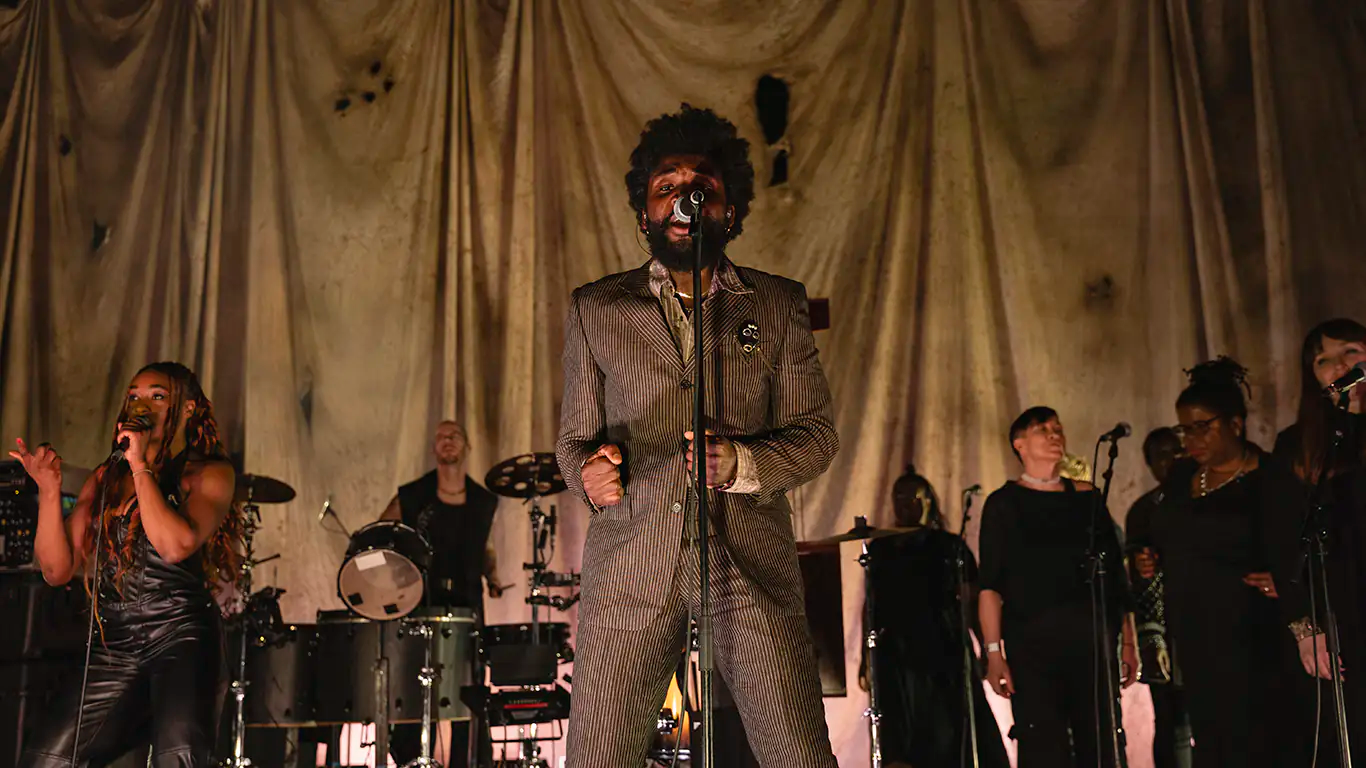
A show that is testament to the band's underlying brilliance. If you haven't given them a listen, I urge you to, you won't be disappointed.
Glastonbury...
It is the biggest festival in the world, a cultural institution that has delivered countless iconic moments over the decades. From Pulp stepping in as super subs in 1995 to The Killers teaming up with Johnny Marr in 2019, Glastonbury has consistently created unforgettable memories. Stormzy's Union Jack bulletproof vest in the same year redefined what a modern headline set could be, while Jay-Z shattered expectations by bringing hip-hop to Somerset in 2008. Beyoncé dazzled with her pop-tastic spectacle in 2011, proving that Glastonbury could embrace all genres.
Radiohead’s legendary 1997 set, where they triumphed through technical issues, remains one of the festival’s most revered performances. The Verve in 2008 and Blur's emotional reunion in 2009 showcased the power of Britpop at Worthy Farm. More recently, Elton John’s final UK show in 2023 captured the hearts of millions, cementing his legacy. And, of course, there are Paul McCartney’s sets both of them perfect examples of how the festival celebrates musical history and its timeless icons.
Yet this year, I can't see another historic moment being made. I honestly think the 2024 Glastonbury lineup is the worst one in my lifetime.
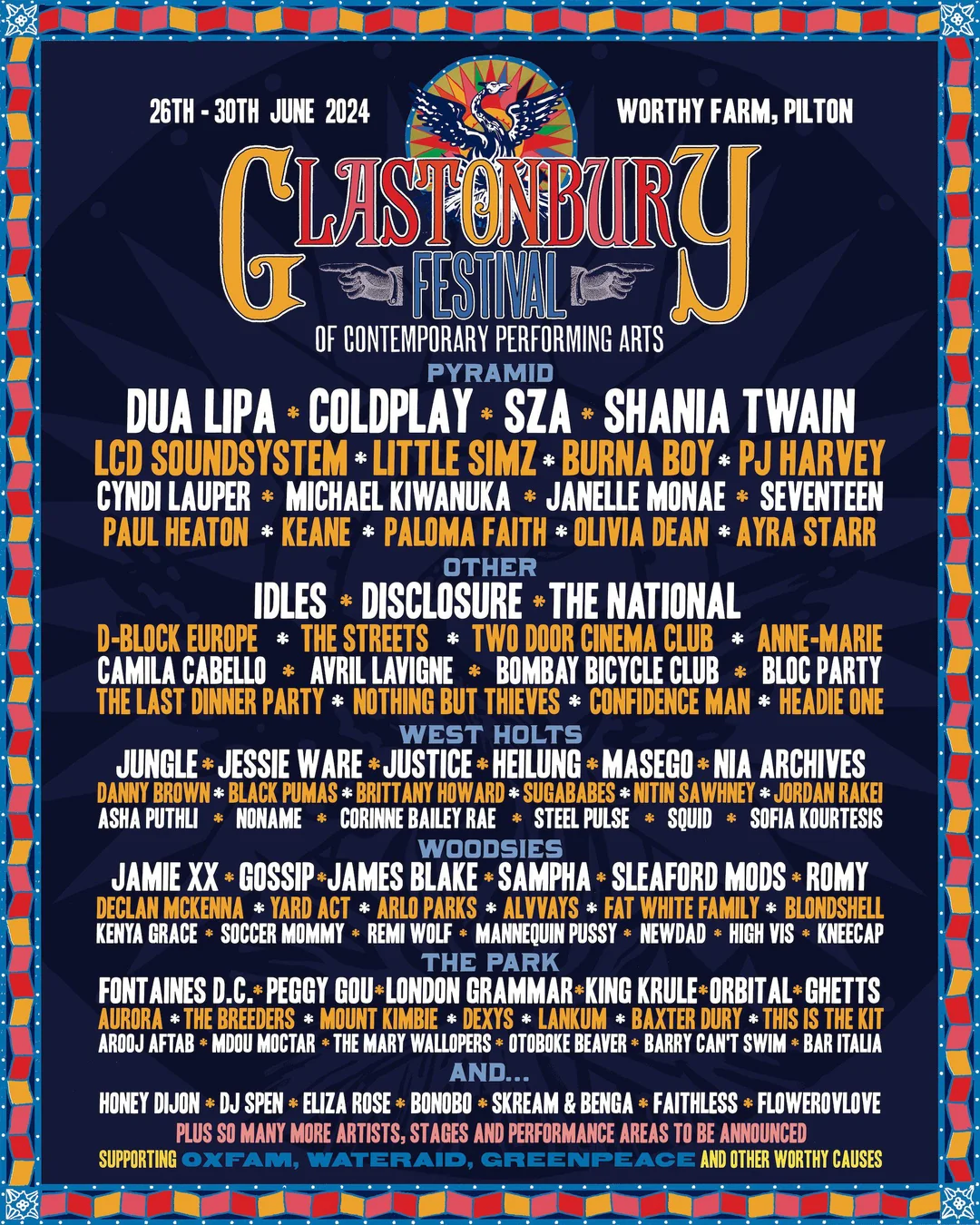
I look at that lineup, and I don't see anything that would make for a special show. There are some good bands and artists on there, from LCD Soundsystem to Jungle. Fontaines DC to The Last Dinner Party. However, as a whole, it is disappointing. Coldplay, to me feel like a lazy booking. They have headlined the famous festival four times, and in my opinion, the band's recent material isn't up to much. It is even their only UK festival headline this summer.
Dua Lipa will put on a good show. I don't know enough about SZA, but it feels like to me that they tried to get Taylor Swift and could not. Shania Twain as the legends slot, I think many were hoping for Stevie Nicks, who is in the UK this summer on tour.
In the last two years, we have had McCartney, Arctic Monkeys, Elton John, Sam Fender, Billie Eilish, Lana Del Rey, Haim, Elbow, Kendrick Lamar, Foals, Pet Shop Boys, Olivia Rodrigo, The Libertines, Rick Astley, Blossoms, Jamie T. Plus so many more. It just feels like a massive disappointment for Glastonbury. I felt as if they could have maybe got another legend back. "Pulp" for round two? Or promoted one of the newer artists. Sam Fender, Lana, even Foals. "The 1975" would make for a great headliner, especially over Coldplay, who have played the festival countless times.
Although the festivals in 2024 weren’t the strongest on record, it didn’t stop some of the biggest venues in the UK being sold out by some huge artists.
The Killers brought their "Rebel Diamonds" show to the UK with a huge arena tour. Celebrating 20 years as a band, with a bombastic greatest hits show.
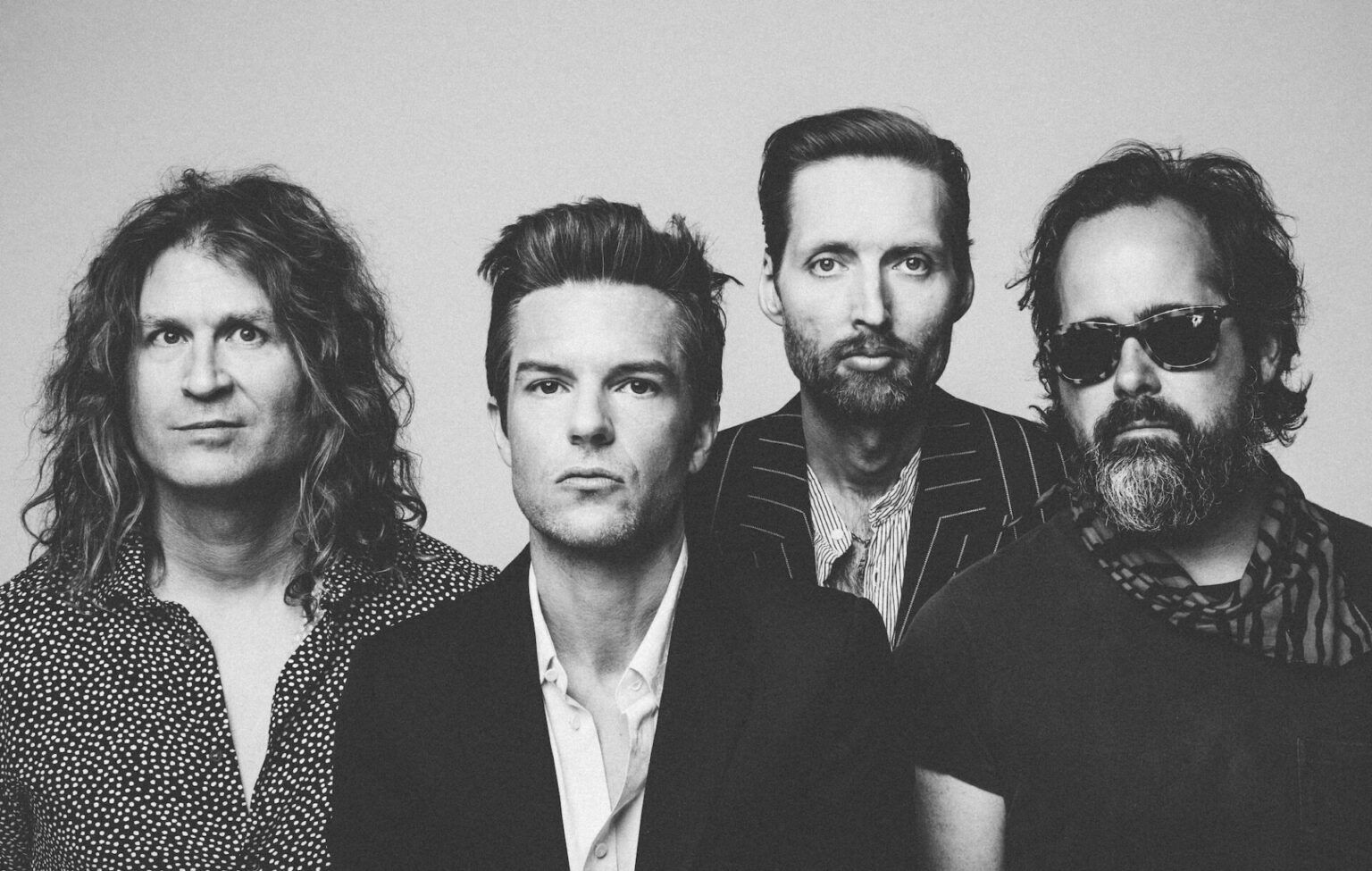
It allowed the band to bring Las Vegas showmanship, and a collection of indie bangers to the UK’s cities. Changing the setlist every night, fans were left wondering what would be played. Fans would get all of the classics from “Read My Mind” to “Spaceman”, “All These Things I’ve Done” and of course “Mr Brightside”. They also gave some newer songs a little run out. Despite playing new songs they did not disappoint.
Having seen the show myself, they reinforced themselves as being on top of the indie mountain. One of the best bands in the world.
With a band with the catalogue of anthems that The Killers have, it was a surprise that the band opted for arenas instead of stadiums!
Liam Gallagher too took to the arena stage to celebrate 30 years of "Definitely Maybe" with a nostalgia-filled run through of the album and its b-sides.
Getting to hear that album in full was a special moment for any Oasis fan. For many, it is their best work, the sound of a band who were ready to take over the world.
The songs on that record are timeless, from "Rock n Roll Star" to "Live Forever" these songs have resonated with fans for years, and Liam gave a new generation of fans a chance to hear them live. He also dusted off some obscure tracks and B-Sides for this tour.
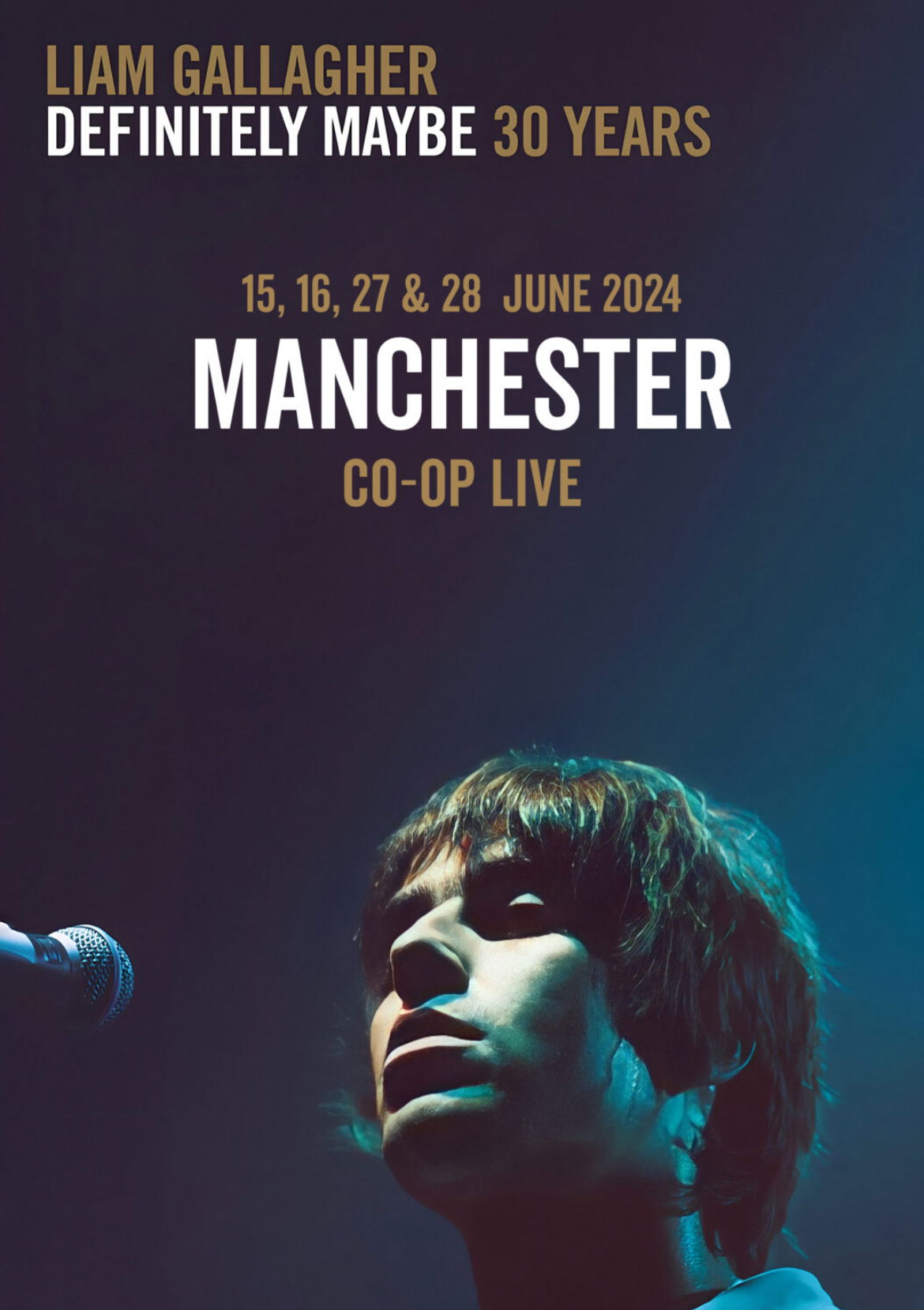
‘Up in the Sky’ was a real highlight, a hidden gem in the Oasis discography, ‘Digsy’s Dinner’ received a good reception, and a good outing of the chorus. ‘Bring it On Down’ is Oasis at their punk best and you can tell that Liam was enjoying singing this one. ‘Cloudburst’ and ‘I Will Believe’ got a run out in the middle of the set, until this tour these songs must have only been played a handful of times.
At a time where Oasis are not together, this was the closet to a reunion.
Thirty years later, Liam has taken on the world on his own terms. Yet every word on that record still resonates with him today. All these years on. He's still the defining Rock n Roll Star.
Bloc Party made a welcome return this year. Celebrating 20 years of "Silent Alarm" and with a new look lineup. As well as some new music.
A show at Birmingham’s O2 Institute set them up for a summer that would see them take to the stage at Glastonbury and play some sell-out gigs in London, Belfast, and Dublin.
One of the most interesting bands of the 00s back making music is always a good thing.
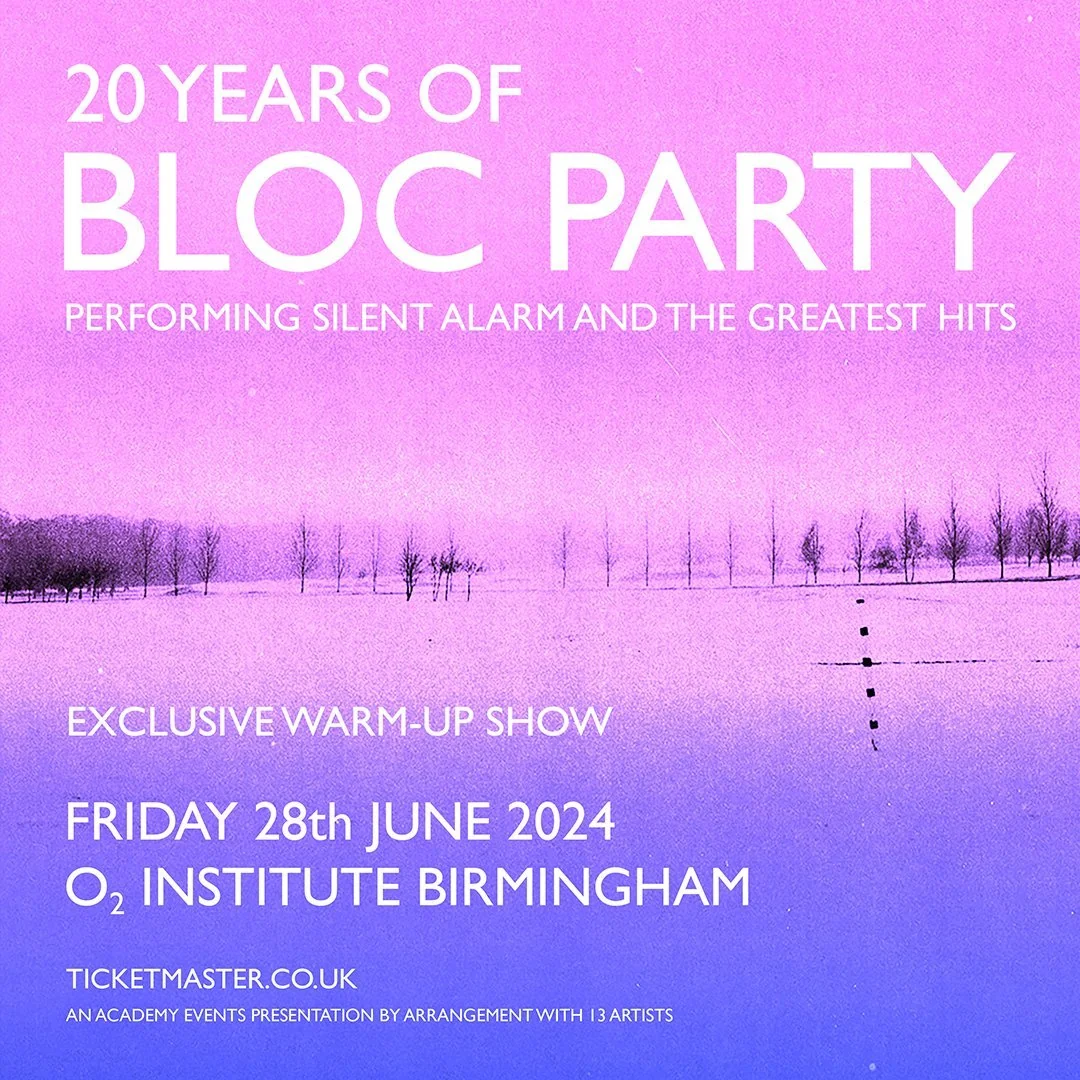
Fontaines DC returned with some brilliant genre-diverse new music. "Starburster" and "Favourite," two songs that are completely different from each other, and yet are still unique to the band.
"Starburster" is the sound of a band taking a deep breath and starting again. Inspired by a panic attack suffered by Chatten in London’s St Pancras station, ‘Starburster’ captures that shock of trying to grasp reality amidst all the chaos. It's a song that fuses so many different elements, rock, electronica, and hip-hop. The hip-hop element often more associated to recent collaborators KNEECAP. It was a huge left turn, the bands most daring work to date.
"Favourite" is indebted to post-punk and The Cure. The bands frontman Grian Chatten has described the song as having ‘this never ending sound to it, a continuous cycle that goes from euphoria to sadness. Two worlds that are spinning forever. song about life and embracing the challenges we face. Within the music video the band honour each other. Showing archive footage of their childhoods intertwined with footage from a recent trip to Madrid. Where the bands guitarist Carlos O’Connel grew up.
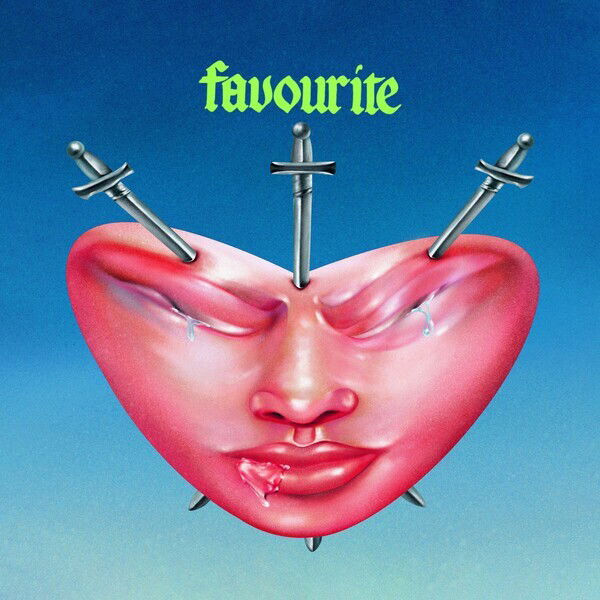
Lyrically, these tunes are a massive step up again. "Favourite" hines lyrically. Commenting on the fast nature of change. ‘Each new day I get another year older’. ‘Every time you blink you feel a change.’The mistreatment of the working classes ‘when they painted the town with Thatcher’.
The gentrification of cities, and the feeling of homesickness due to touring and being away from their native Ireland. ‘Cities on return are often strange’.
Fontaines are becoming one of the most important bands out today.
Blossoms too returned. With two singles "What Can I Say After I’m Sorry" and "Gary" from their forthcoming album "Gary." Two songs which see Blossoms evolve their sound again. Taking elements from what they’ve done before, and turning them into something new. The band worked with J Lloyd of Jungle on "What Can I Say After I’m Sorry". On the music video for the song, the band enlisted help from Everton manager and former footballer Sean Dyche, in probably the most unlikely collab of the year.
With the biggest show of their career still to come in August, it's a good time to be a Blossoms fan right now.
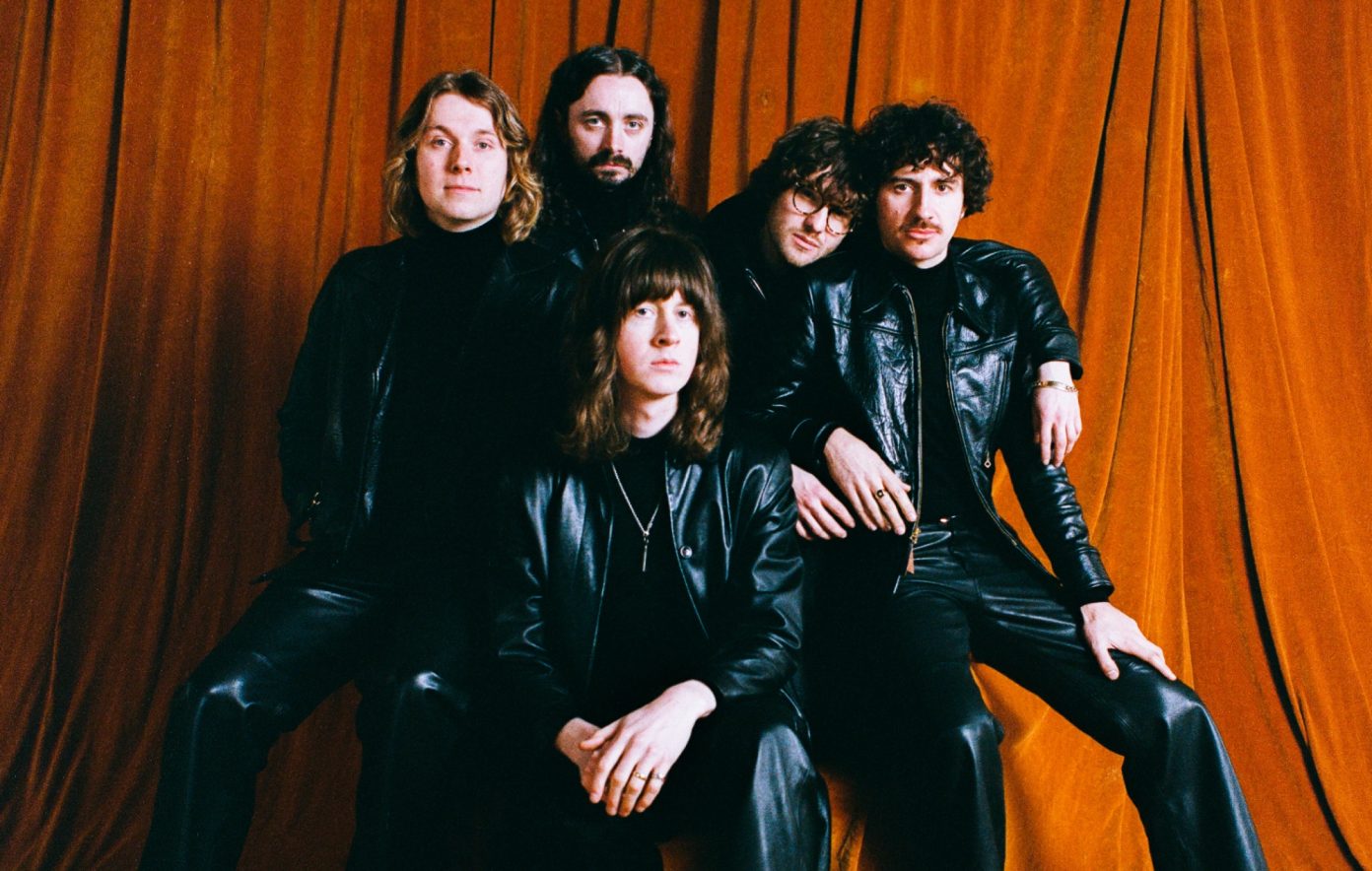
It has been quite the year so far, we’ve had some huge gigs and some great new music. Here’s hoping to more. We’ve got some good albums on the way. "Blossoms," "Fontaines DC," and "Wunderhorse" all have records on the way. A new "Sam Fender" and "Wolf Alice" record can’t be that far away.
"Catfish & the Bottlemen" returned in July. Fans had been set up for an optimistic reunion back in February with the announcement of "Showtime." However, following the announcement of these live dates, it has been radio silence from the band.

The first show was in Liverpool, playing their biggest headline gig to date. Backed up by "The Mysterines" and "Sundara Karma." With a first outing for the new-look line-up, following the loss of Johnny 'Bondy' Bond and Bob Hall. This gig proved a lot of people's criticisms of "Catfish and the Bottlemen" correct. It was more of the same.
Before this show, the last time "Catfish and the Bottlemen" had taken to the stage was in 2021, at Warrington's "Neighborhood Weekender." Three years apart, the band played the exact same setlist. Despite releasing a new single, and working on the assumption the band are releasing a new album, they chose not to play any new music.
Courteeners announced they would be returning this year. This was news that fans had been waiting for. With the last music the band released being all the way back in 2020. The rather joyous ‘Solitude of the Night Bus’ was released as the first single from the band's seventh album "Pink Cactus Cafe." Liam Fray described the album as the most ‘collaborative and rewarding thing we've done, it's a real melting pot of an album.’
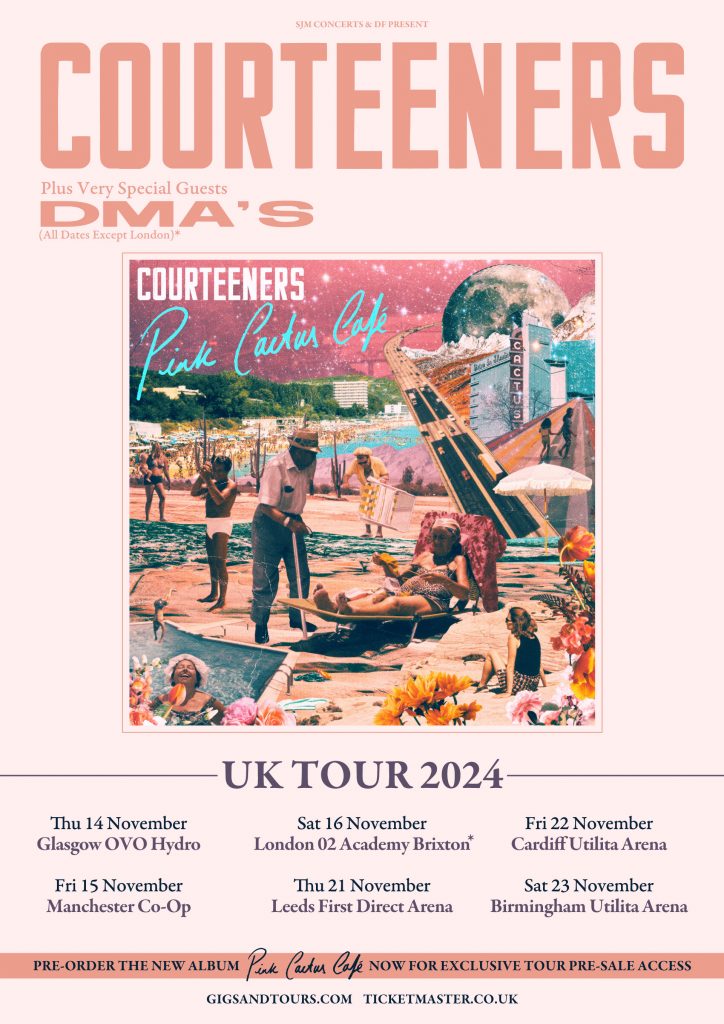
Following the album announcement, the band also announced tour dates were incoming. Six Arena dates, including a massive show at Manchester’s Co-Op Live. They've made the jump into arenas. It's been a long time coming. I for one am glad that "Courteeners" are back. Four and a half years is a long time.
Wunderhorse released "Silver", the third single from their upcoming second album "Midas", and it's a real evolution of their sound. It's arguably the best track we've heard from the album so far, combining the best elements of their previous work from Cub and adding something new. It's an exciting time to be a fan of the band, and with what we've heard so far, it looks like this record is going to be something special.
As for summer gigs, Noel Gallagher has been hitting the road, bringing Council Skies to stadiums, castles, and palaces. Fans have been treated to a mix of his solo material and all the Oasis classics. His outdoor gigs have been a hit, and this tour has seen Noel play in some different towns and cities, with shows in Wigan and Warwick, offering a fresh experience for fans outside the usual stops.
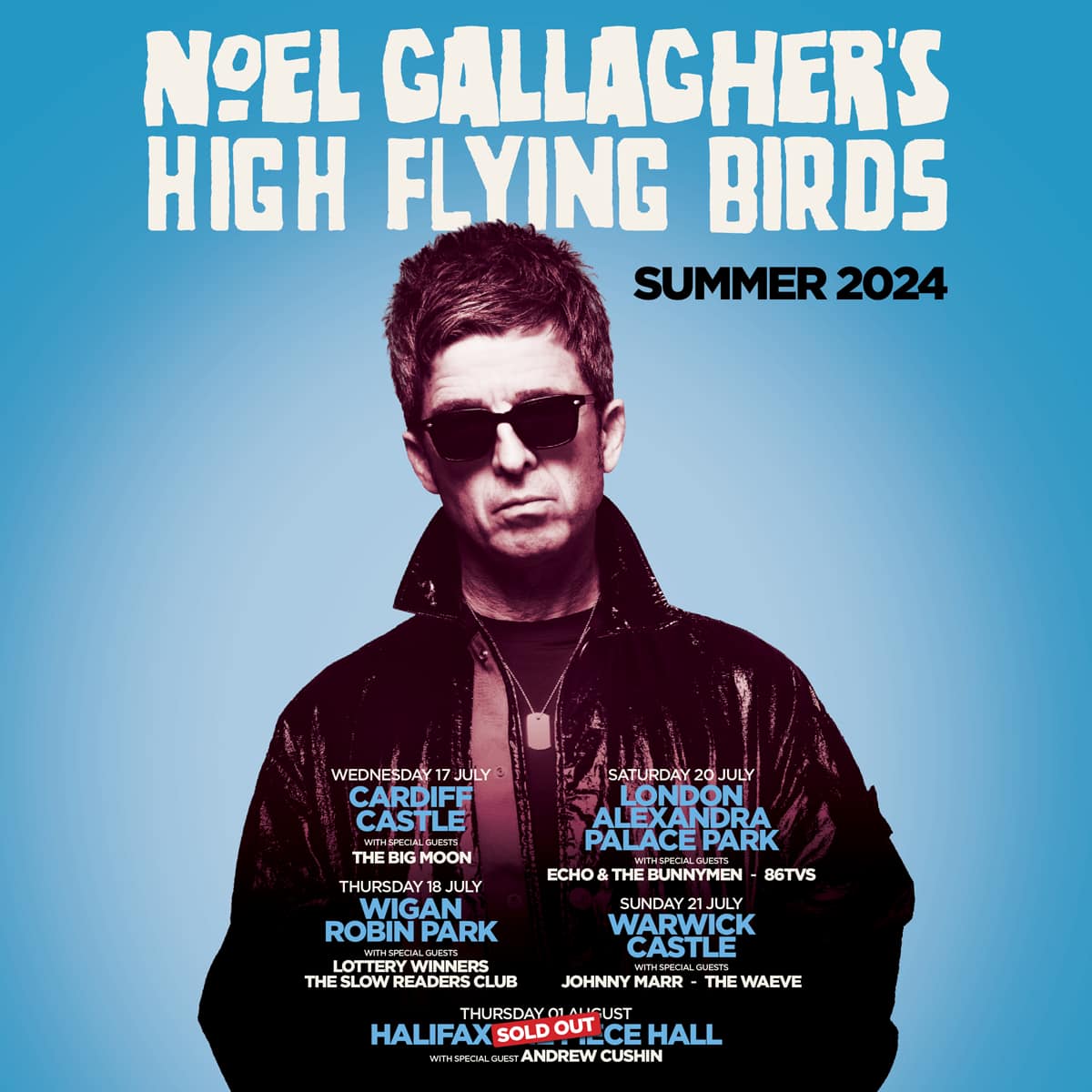
One of my new favourite bands, Jungle, has been out on the road, and with four albums under their belt and a Glastonbury performance for the ages behind them, they've been bringing one hell of a party to UK cities. The release of "Volcano" last year, featuring hits like "Back on 74" and "Candle Flame," as well as a win at this year's BRITs, has only helped grow their fan base.
More and more people are becoming aware of Jungle, which is a great thing. Alongside Young Fathers, they’re creating some of the most interesting and exciting music in Britain right now.

TRNSMT rolled back into Glasgow this year, bringing sets from hometown hero Gerry Cinnamon, Liam Gallagher, and Calvin Harris. It was a real melting pot of acts, featuring seasoned artists like Courteeners, The Vaccines, Blossoms, and Rick Astley, alongside the future of guitar music represented by Nova Twins, Wunderhorse, and The Last Dinner Party.
I've heard mixed reviews, with some questioning the crowd's energy for certain acts. Watching footage of Courteeners, I can see what they meant. Despite that, TRNSMT remains Scotland's premier music festival, managing to pull in some of the biggest acts in the world while still celebrating local talent, with Scottish acts getting some of the most coveted spots on the lineup.
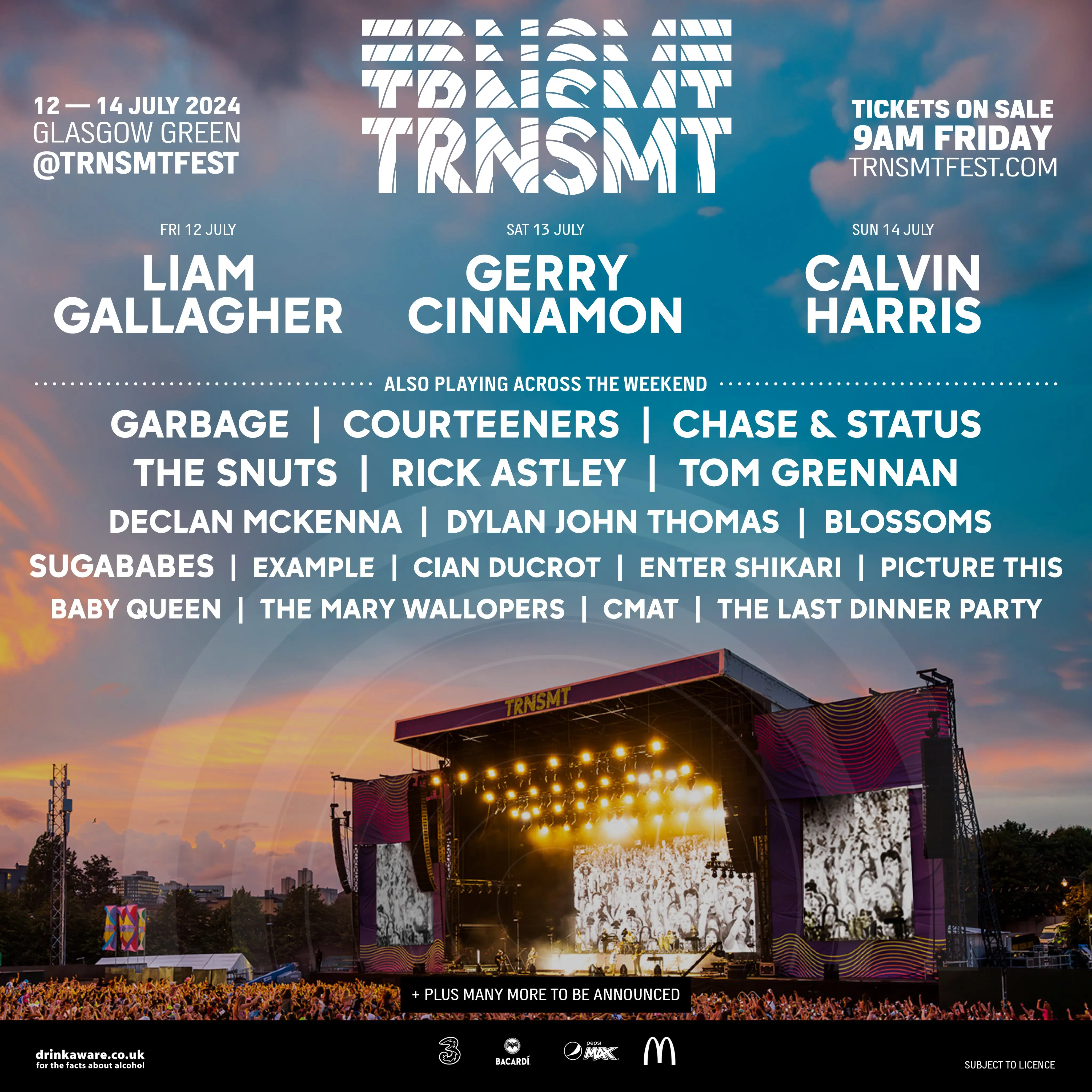
Wunderhorse released "Midas" there must anticpated follow up to 2022's "Cub". An album that saw him go from selling out pub gigs to playing at Glastonbury. "Cub" was firmly a Jacob Slater project, this second album is firmly a Wunderhorse album and feels like a rebirth in a way. His previous backing band – guitarist Harry Fowler, drummer Jamie Staples and bassist Pete Woodin have all been recruited to the fray. Creating a darker and more racous sound on this record. It's a much rawer and more emotive affair.
Recorded live at the iconic Pachyderm Studio in Minnesota (the birthplace of Nirvana's In Utero), Midas is brimming with raw edges, imperfections, and unfiltered, unrestrained energy.
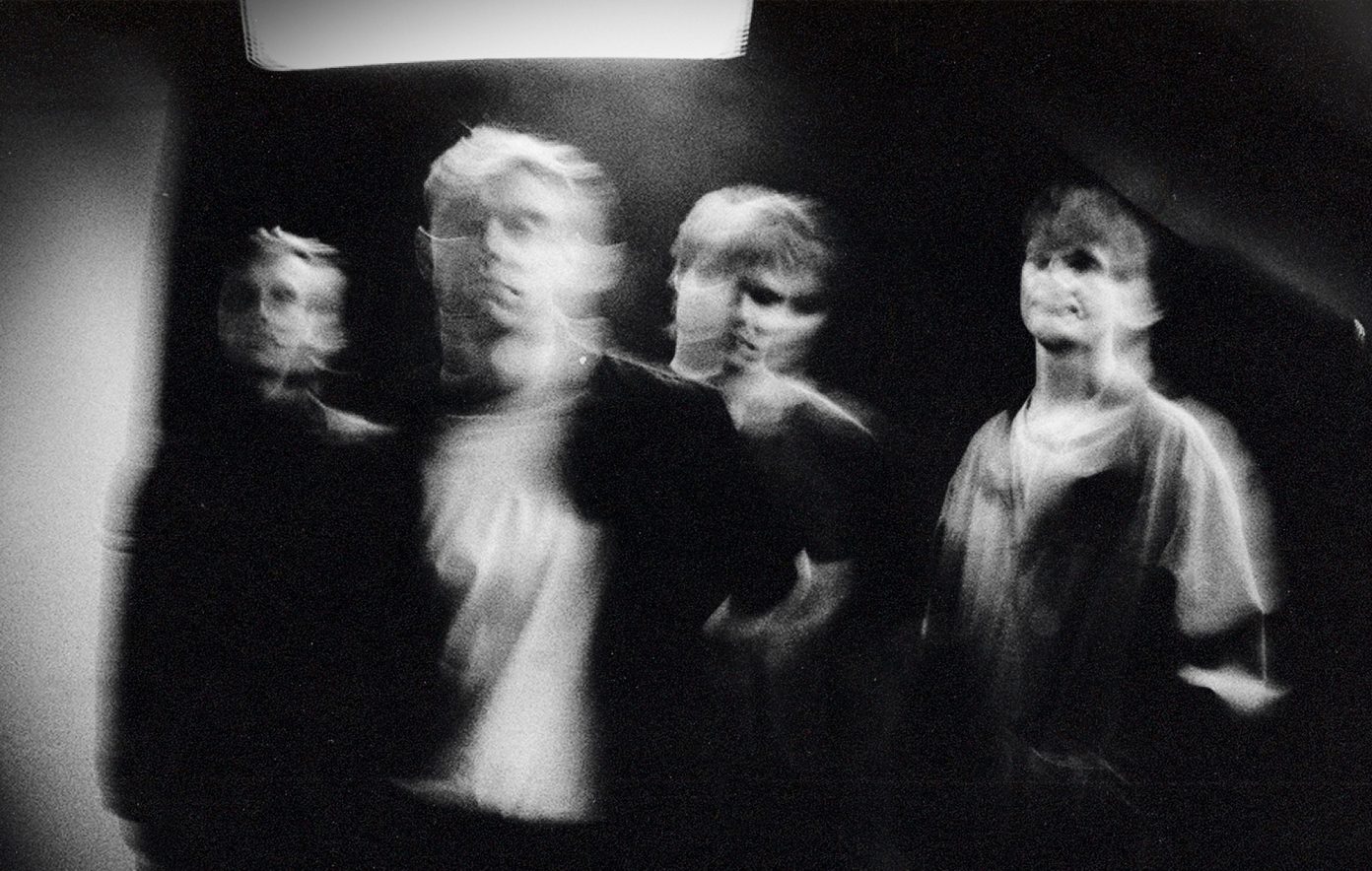
Wunderhorse could very well be Britain's next great band. With a frontman who is an enigmatic force, a man who was waiting for his moment and his voice. Jacob Slater has found that voice, and a band who can more than back him up. Now watch them flourish.
The August Bank Holiday weekend is always a big one for music fans, and in 2024, it was even more exciting than usual, with Reading & Leeds being just one part of the action.
This year’s festival lineup was one of the strongest in recent memory, offering an eclectic mix of acts. Headlining were Liam Gallagher, Catfish & The Bottlemen, Gerry Cinnamon, Lana Del Rey, Blink 182, and Fred Again. A diverse range of huge names.
Catfish returned to the stage after a three-year hiatus. Their last performance in 2021 had been somewhat fractured, but this new-look version of the band seems ready to go. Reading & Leeds was the perfect marker for them, setting the stage for next year’s huge stadium gigs.
Liam Gallagher brought his LGDM tour to the masses, performing the full Oasis debut album with some b-sides for good measure. Blink 182 brought high energy, mixing new material with their classic tracks. Fred Again created an unforgettable party atmosphere, while Gerry Cinnamon continued to do what he does best, entertain massive crowds. Lana Del Rey tried to redeem herself after last year’s Glastonbury set, and while she succeeded in some ways, there were still some areas where she didn’t quite hit the mark.
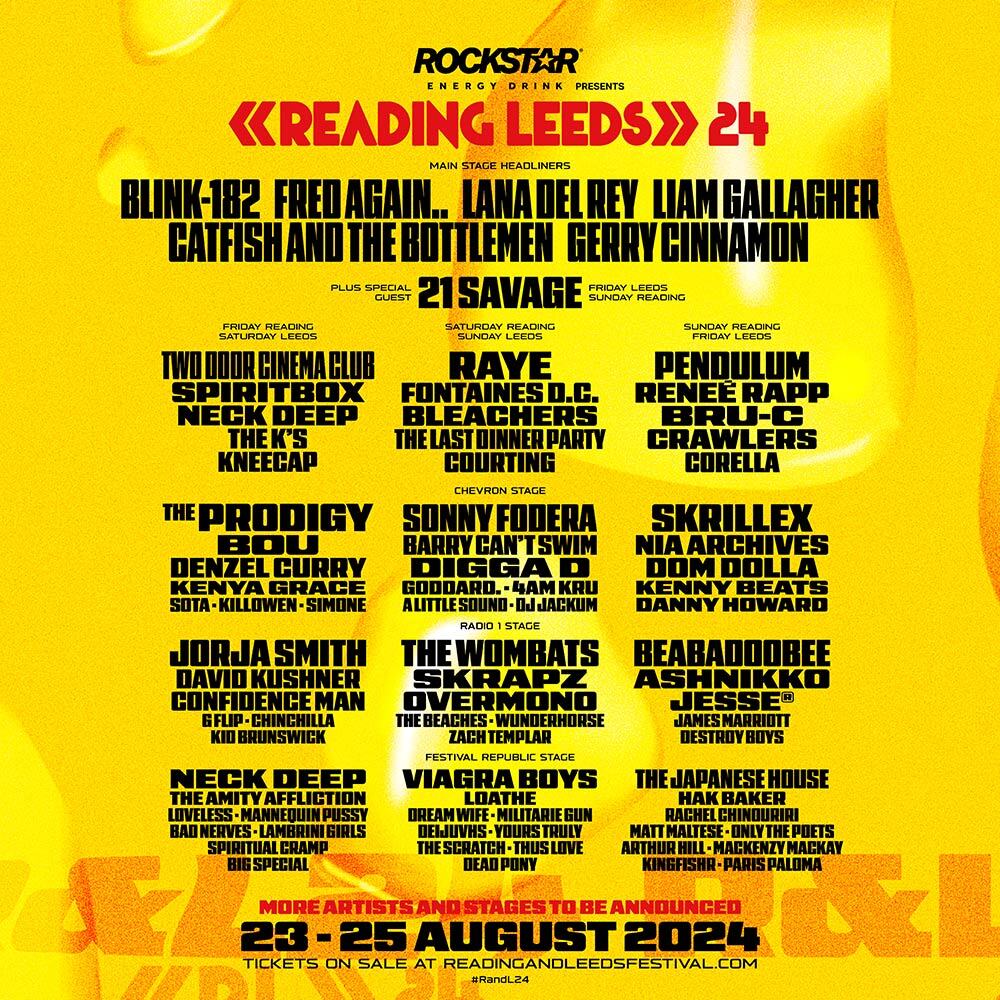
Further down the lineup, guitar music was well-represented. The K’s earned a main stage slot after the release of their debut album, showcasing their rising talent. The Last Dinner Party also made their mark, following the release of "Prelude to Ecstasy". Both bands are ones to watch over the next 12 months and are set for big things.
Fontaines D.C. continue their unstoppable rise, delivering yet another unforgettable performance that solidifies their reputation as one of the most exciting bands of the moment. Following the release of their fourth album, "Romance", it’s clear that their trajectory is headed toward headlining major festivals like Reading & Leeds in the near future.
Romance is unquestionably the band’s most ambitious record to date. It sees Fontaines D.C. embracing a wide array of influences, from trip-hop to 80s indie, without losing their distinctive edge. Many are already hailing it as their finest work, a cohesive yet daringly diverse album that cements their place as innovators in modern rock. While the album feels unified, no two songs are the same, showcasing a willingness to experiment that never detracts from the “Fontaines magic” that defines their sound.
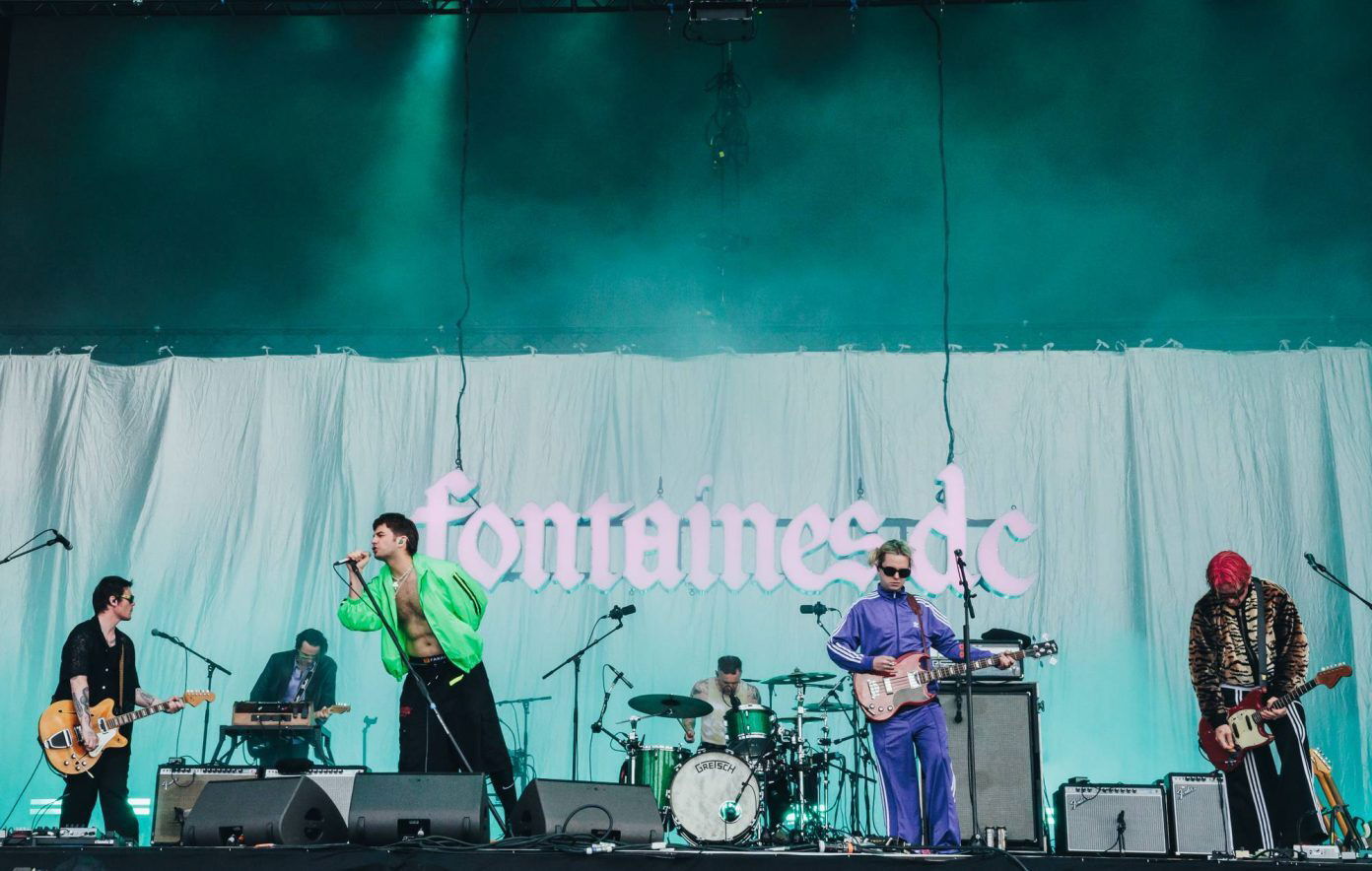
The lead single, “Starburster,” is a chaotic, breathtaking masterpiece that tears up the rulebook. It’s a track delivered with confidence by a band fully aware of their place on the brink of greatness. Meanwhile, “In the Modern World,” the album’s closer, reveals a more vulnerable side to Fontaines D.C., blending lush string arrangements with introspective lyricism, surprising even their most devoted fans.
Other standout tracks include “Here’s the Thing,” a guitar-driven anthem with a razor-sharp riff destined to become a staple of their live shows, and “Favourite,” an instant classic with echoes of The Cure. This song, brimming with hope and featuring some of the band’s best lyrics to date, boasts a chorus that feels destined to be sung by festival crowds for years to come.
Another Irish band, Kneecap, introduced themselves to the world with one of the best performances of the weekend at Glastonbury. Their electrifying set earned them a main stage slot at Reading & Leeds, where they delivered a politically charged display of Gaelic rap. Not shy about making a statement, the band has been stirring up attention since their inception. They’re certainly one of the most unique musical outfits around right now.
The Gaelic rappers have had quite a year, having released their debut album "Fine Art" full of controversy, brilliant songs, some laughs and even a history lesson. "Parful" quotes the 90s documentary "Dancing On Narrow Ground" which tells the story how dance music helped bridge the divide between Catholics and Protestants in 1990s Belfast. They have a hand from Fontaines Grian Chatten on a "A Better Way To Live" which contains some of the albums most profound lyrics, “the upside of the seesaw”. You gotta come down, too. "Rhino Ket" is a lot less profound but it's very very funny. Written about taking the drug strong enough to a put a rhino to bed. It's the band at their humorous best.
As well as a brilliant debut album, Kneecap released a bio-pic. Part Trainspotting part 8 Mile. It's hedonistic but heartfelt. That documents there rise, but also highlights the struggles of Gaelic speakers in Northern Ireland. It has it all. A brilliant story, a list celebs (Michael Fassbender) plays Mogali Bap's IRA father and it's very funny. Full of heart that documents the struggles of the ceasefire children in Belfast.
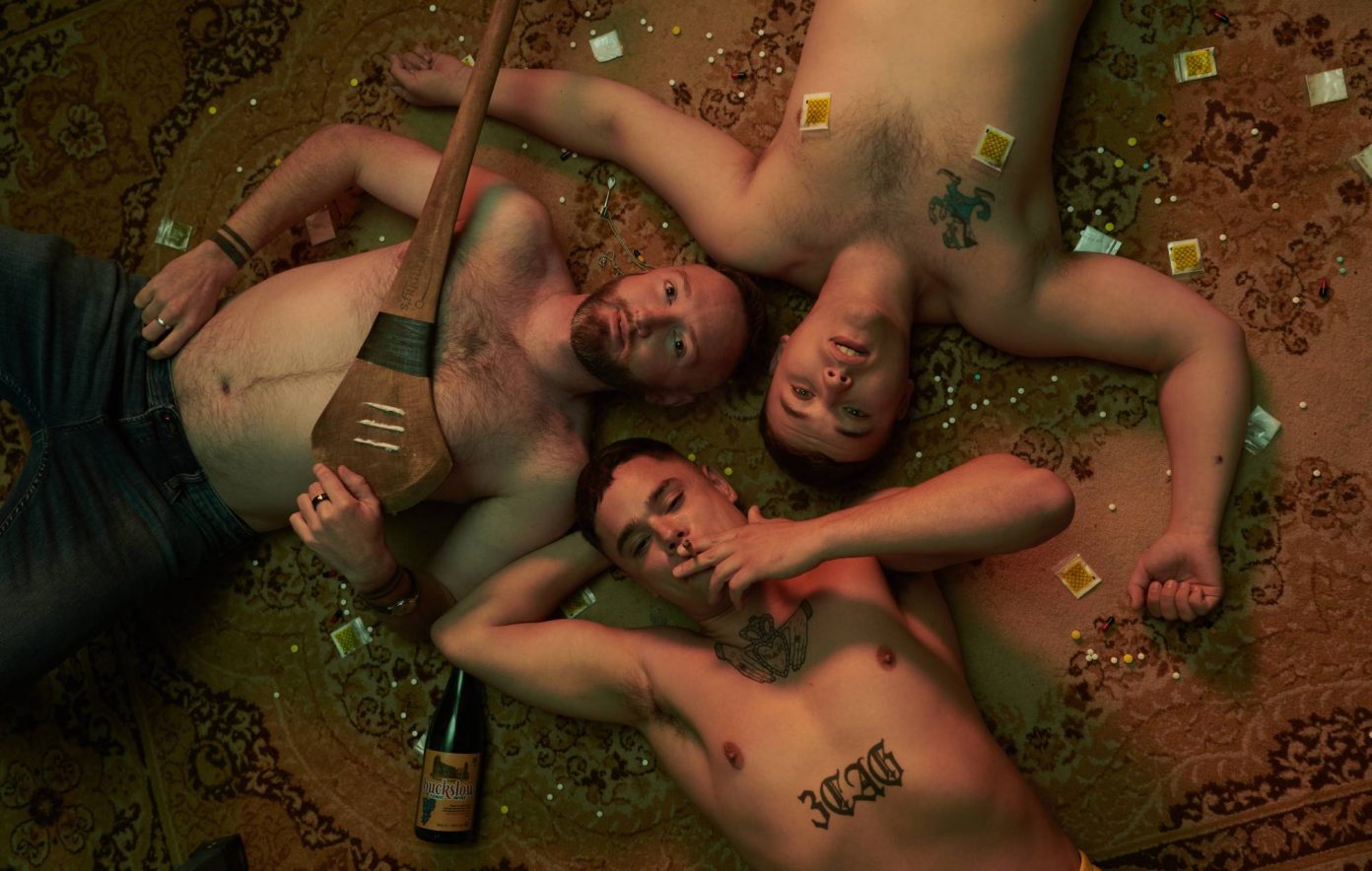
Away from the festivals, 2024 also brought new album releases from Fontaines DC, as well as some major gigs. Blossoms played their biggest headline show to date at Manchester’s Wythenshawe Park, supported by an all-star indie lineup. The K’s, Shed Seven, and Inhaler all shared the stage with the boys from Stockport, making it a night to remember.
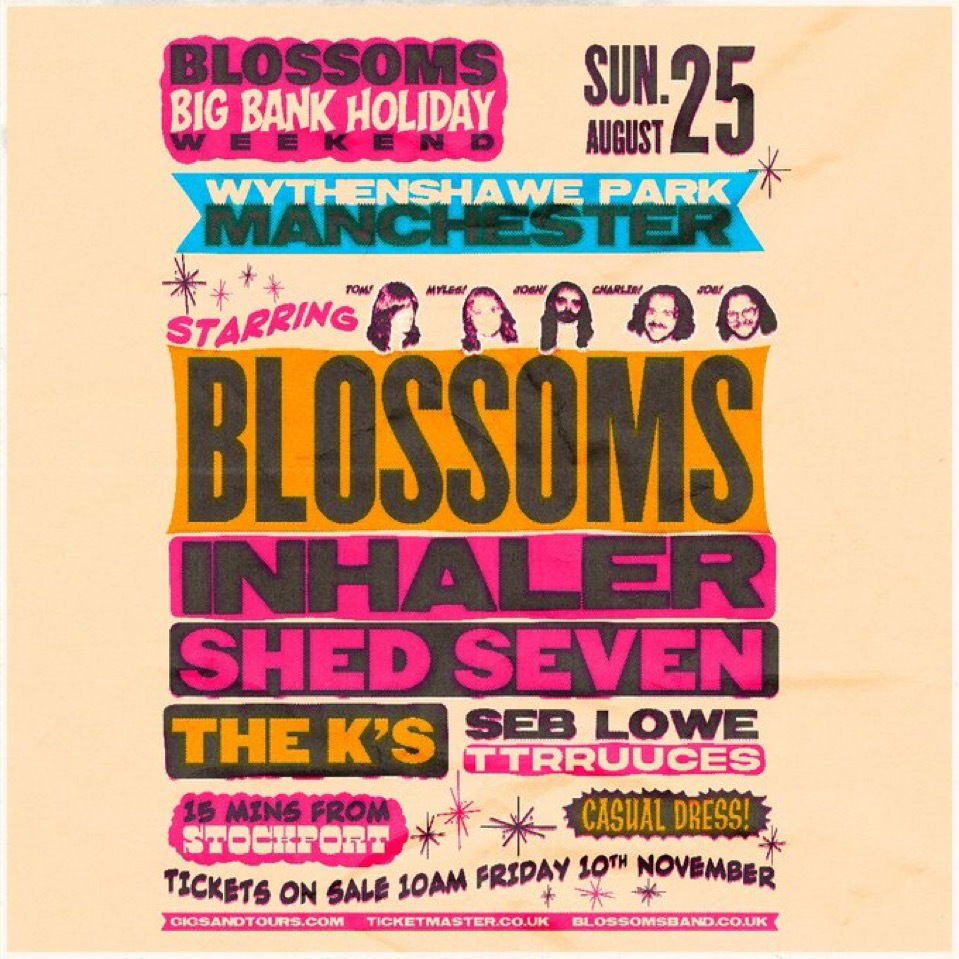
Another huge milestone for Blossoms, who are now onto their 5th album. This record is the bands first as an independent band. It's some of their best work to date. Full of infectious indie hooks, huge choruses and tales of 8ft gorillas. "Gary" is a really really fun record. That takes everything we have come to expect from Blossoms, and adds a new dimension. It has heartfelt moments with songs like "Mothers" songs that make you want to dance "Nightclub" and monumental live favourites "Gary" and "Perfect Me". This album doesn't hang around with a run time of just over 30 minutes. It’s the perfect soundtrack to your very own dance floor. One of the albums of 2024
I had the privilege of attending the gig, and it was another brilliant affair. Blossoms have firmly established themselves as a staple of the UK live music scene, consistently selling out venues and being featured on festival bills. Despite their presence in the mainstream, they’ve always managed to evolve, continuing to release indie pop gems. Their performance at Wythenshawe Park was the culmination of everything that makes Blossoms great.
Although these are significant musical events, they weren’t the biggest. At Reading Festival and at Wythenshawe Park on Sunday, August 25th, 2024, a short video was played on the screens.
That video indicated a date and a time, and it was in relation to a certain band. A certain Manchester band. Oasis.
On the 27th of August, 2024, after a weekend filled with speculation and rumours, after 15 years away, social media spats, no communication, and even the odd vegetable-related insult, Oasis announced...
They were reuniting. For some shows in 2025 in the UK and Ireland.
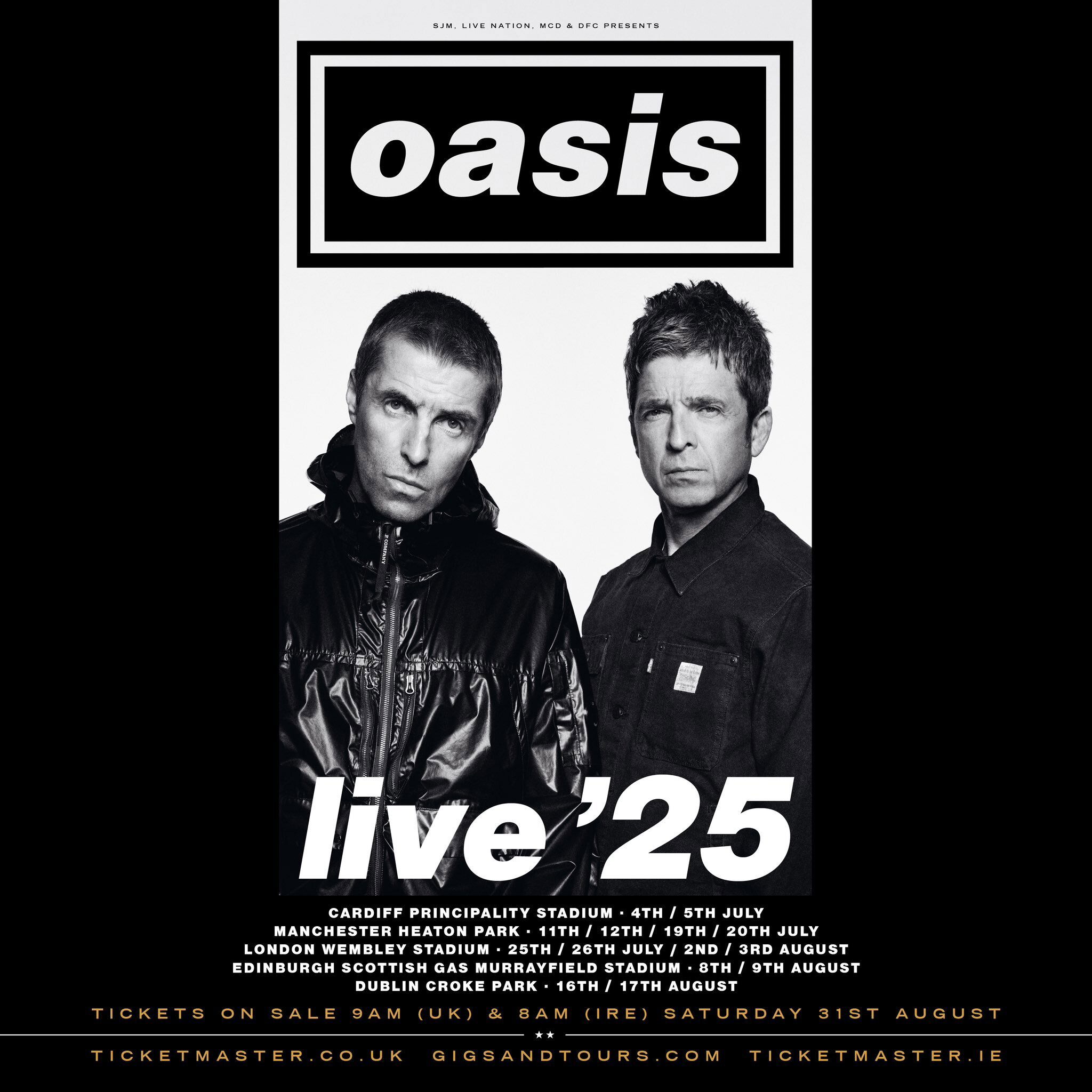
That news is monumental. This isn't just a significant moment in music; it’s more than that. Oasis have transcended generations and ingrained themselves as a part of British culture.
It’s one of the most important news stories of this decade.
Another huge British band would also announce some stadium shows for next summer. Stereophonics revealed plans for some massive summer shows in 2025. They’ll be playing in huge stadiums and heading out on the festival circuit.
With the band returning to the road after a few years, it gives fans, both young and old, a chance to see one of Britain’s very best live bands.
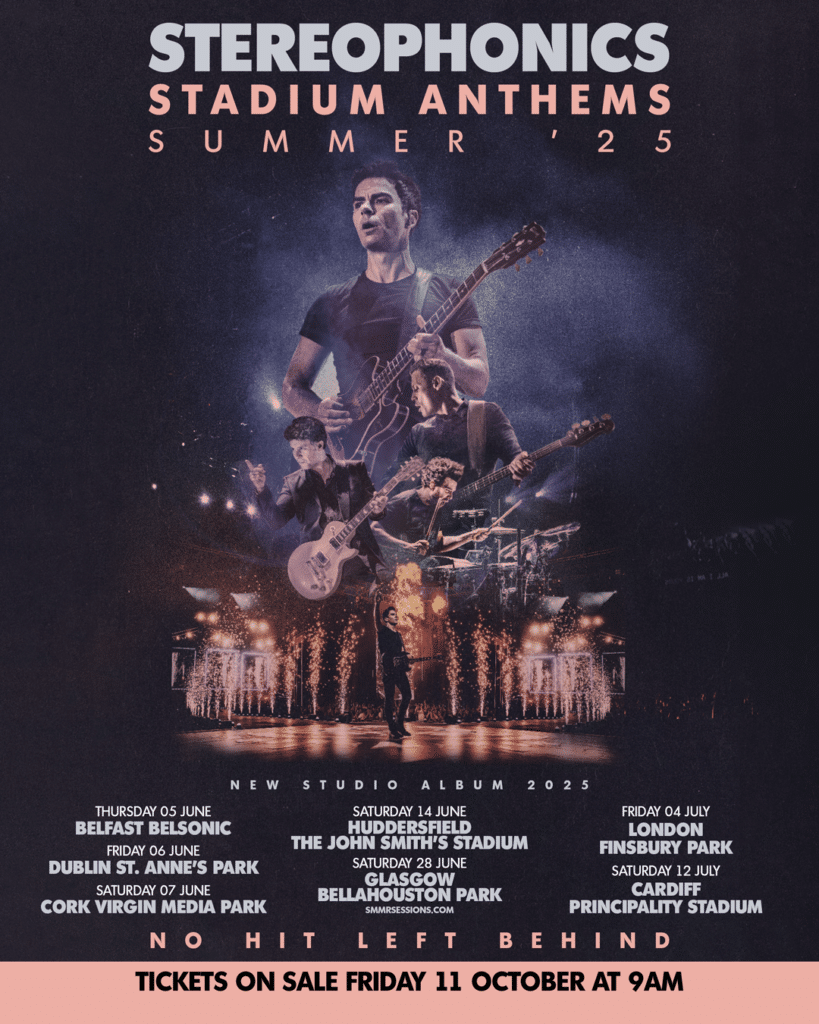
This is the biggest tour the band has ever done, playing in some massive venues. I've got my ticket for next year, and I’m really looking forward to watching them make the jump into these outdoor arenas once again.
The Clause have released a brilliant EP, "Weekend Millionaire", a 5 song affair that follows last years "Pop Culture" EP. The band have upped it again, the EP's title track is one of my songs of 2024.

2023's 'Pop Culture' EP was a real step up, and the band stepped it up again with this one. The title track talks about the escapism that comes with going at the weekend. Whatever that may be. Musically the song is a massive jump. Each member has their moment in the sun, and it knits together perfectly.
It's been the most I've been gripped by a new song in a very very long time. I cannot stop playing it.
"Never Ending Affair" see's the band slow things down with an acoustic led song, about a relationship that is never going to work. It's a beautiful contemplative song that show's a very different sound to the other songs on the EP, a sound the band have never really shown before. "Stop the World" see's a social commentary on the current state of the world we are living in backed up by some brilliant guitar pop.
"Fever Dream" and "Take me Home" are already two fan favourites, with two catchy melodies. "Fever Dream" has been described by the bands front man as autobiographical, a battle cry for the procrastinators who seamlessly breeze from one day to another hoping the world will fall into place. "Take me Home" reminds me a lot of the Arctic Monkeys with 80s synths backing them up. Talking about young love, one night stands, and what happens in bars and clubs every Saturday night up and down the country. It has a throwback feel but also firmly feels like The Clause. It's an indie love song firmly set in 2024.
2025 will be a huge year for the boys from Birmingham. A debut album has to be on the cards, after a sell out tour including a show at Birmingham's 02 Institute and these two brilliant EP's. Surely the debut album is next.
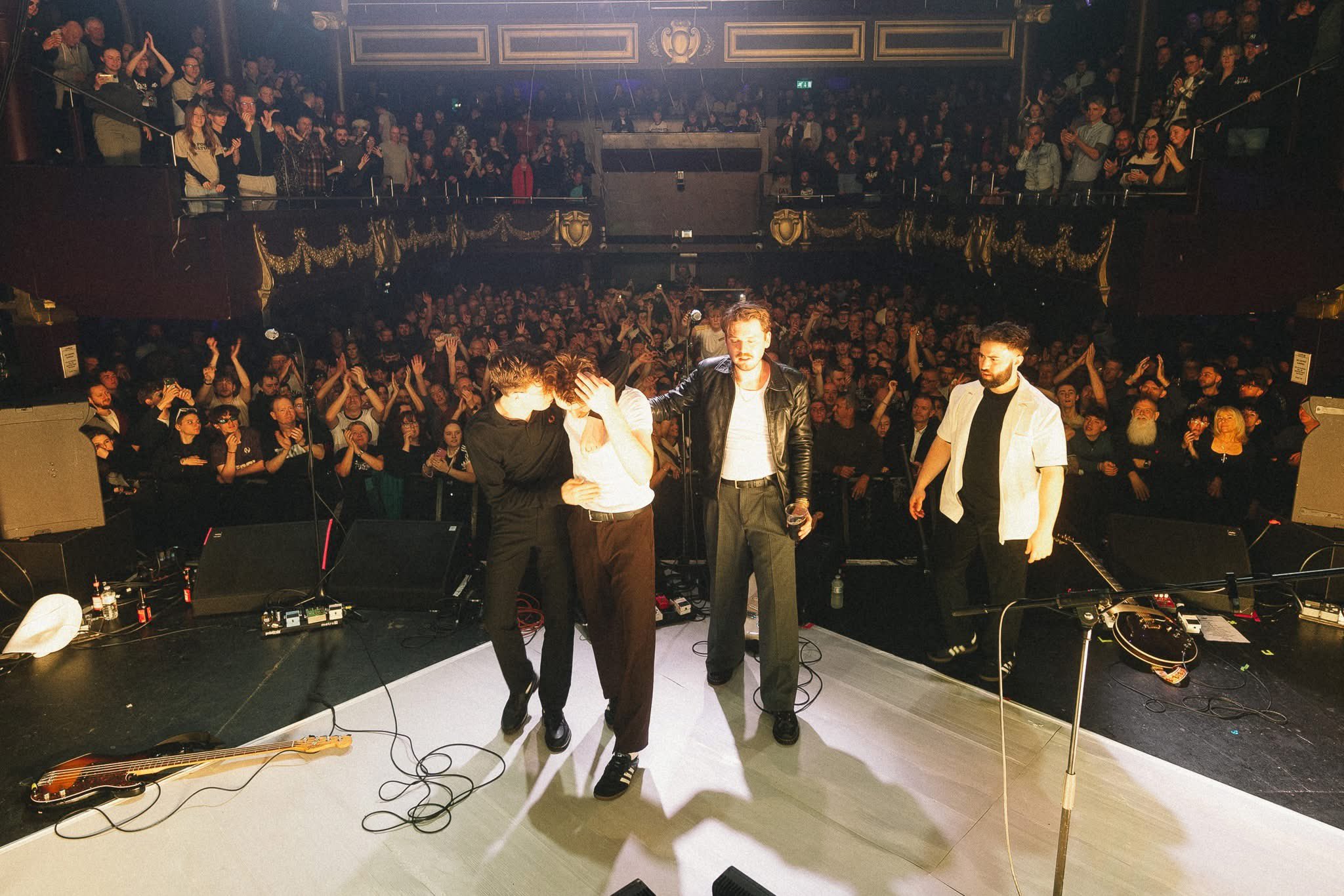
Courteeners released album number seven "Pink Cactus Cafe" a sort of comeback album. Having not released new music since 2020's "More. Again. Forever". Upon it's release front man Liam Fray described the album as sounding like "If a Mancunian joined Haim." The album is a far-cry from the landfill inide that many music journalists used to beat bands like Courteeners down with.
The record is a real melting pot of sounds, and ideas. With the band collaborating with more and more people. With contributions from the likes of DMA’s, Pixey, Brooke Combe and James and Ian Skelly of The Coral. It's a brilliant collection of songs from the indie superground arena crushing "The Beginning Of The End" with DMA's, to the state of nation address "First Name Terms" which see's Fray hit back at the class system, as we “lie back and think of England, but when does England ever think of you?”
The albums title track, "Pink Cactus Cafe" is about the place where we feel safe, and at home. Fray commented to the NME. “It could be anything. A café in Marrakesh, the chippy in Cheetham Hill. A night on your own, saying ‘I’m gonna have a bit of ‘me’ time.’ Watching the match with your dad. Your own space, but you have to go and make it."
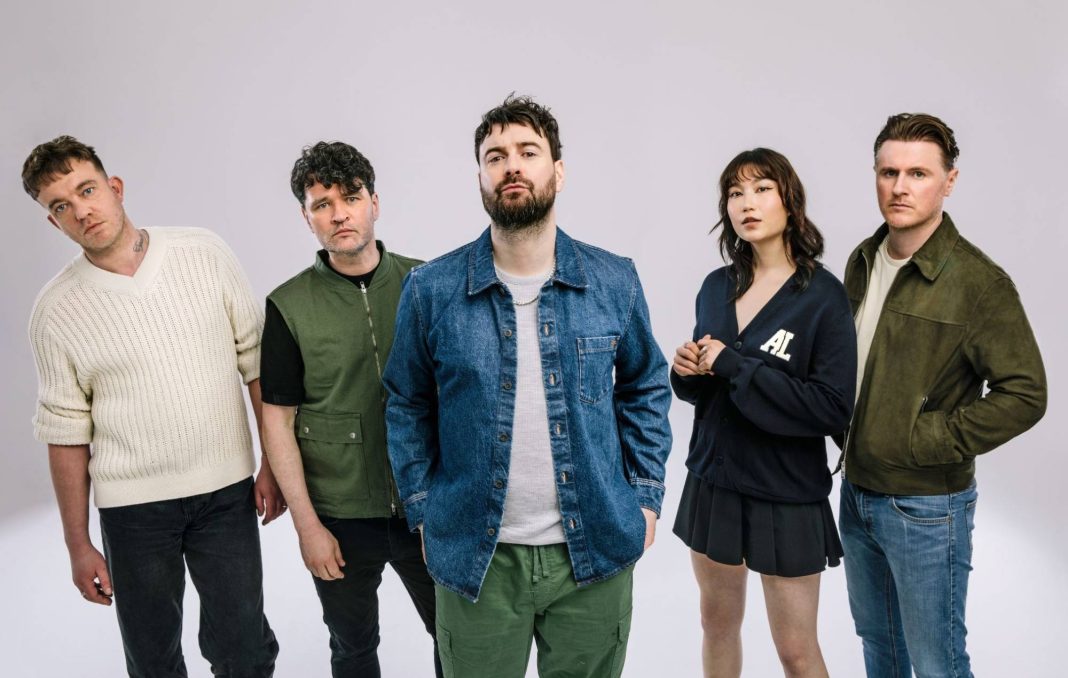
This was the record that saw the band make the jump into arenas, and these songs work really well in that setting. Despite the success of debut "St Jude" both at the time, and during it's re-release in 2023 the band do not want to rest on their laurels. These songs reflect a new chapter for Courteeners. Where on earth do they go next? One thing is for sure, these are not songs by a band wanting to re-live a Parka Monkey past, they are modern vibrant affairs that stretch out way beyond Manchester.
We also got some new music this year. Sam Fender released "People Watching," the first single from his upcoming third album. It's a euphoric five-minute epic, with Sam revealing that the song is about "somebody who was like a surrogate mother to me and passed away last November. I was by her side at the end, sleeping in a chair next to her. It’s about what was going through my head, to and from that place and home."
He added, “It’s kind of ironic because she was the one who gave me the confidence to go on stage, always saying, ‘Why haven’t you mentioned my name in your acceptance speech?’ But now, an entire song (and album) connects to her. I hope that wherever she is now, she’s looking down and saying, ‘About time, kid.’”
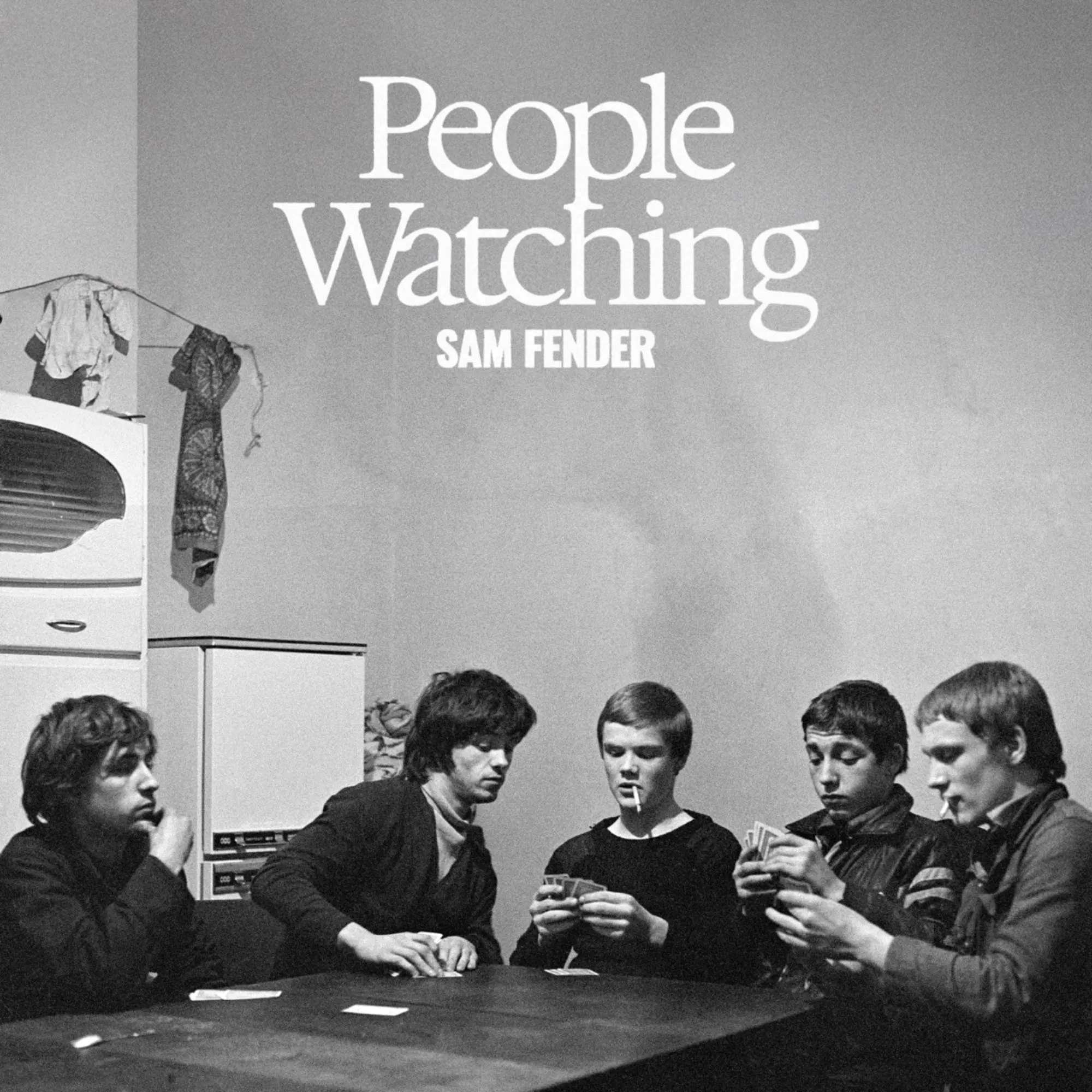
This isn't the first time Sam Fender has addressed grief in his songs. He's done it before with tracks like "Dead Boys," "Spit of You," and "The Dying Light," but "People Watching" feels much more personal. It's raw, powerful, and a heartfelt tribute to Annie Orwin. Sam opens up about the memories he has with the person he lost and how that loss has left him feeling vulnerable.
It's one of the best musical moments of the year, and it will undoubtedly be heard by thousands of adoring fans on his sell-out UK and Europe tour.
Sam released "Wild Long Lie" before the year was out, a reflective acoustic driven song that see's Sam singing about “that time of year again” when “the past comes home”. Released just before Christmas, he talks about reuniting with the characters from the past. Who are only too ready to dish out some tall tales. Or, as it’s known in some circles, returning to your hometown pub on Christmas Eve.
It juxtaposes the albums anthemic and euphoric title track perfectly, showing a more mellow side to Sam.
Sleep Token made the jump into arenas and to the top of festival headline bills at the back end of 2024. With their sold out UK arena tour. The band were also penciled in to headline Download in 2025, alongside Green Day and Korn. Reinforcing themselves as one of the worlds best new rock outfits.
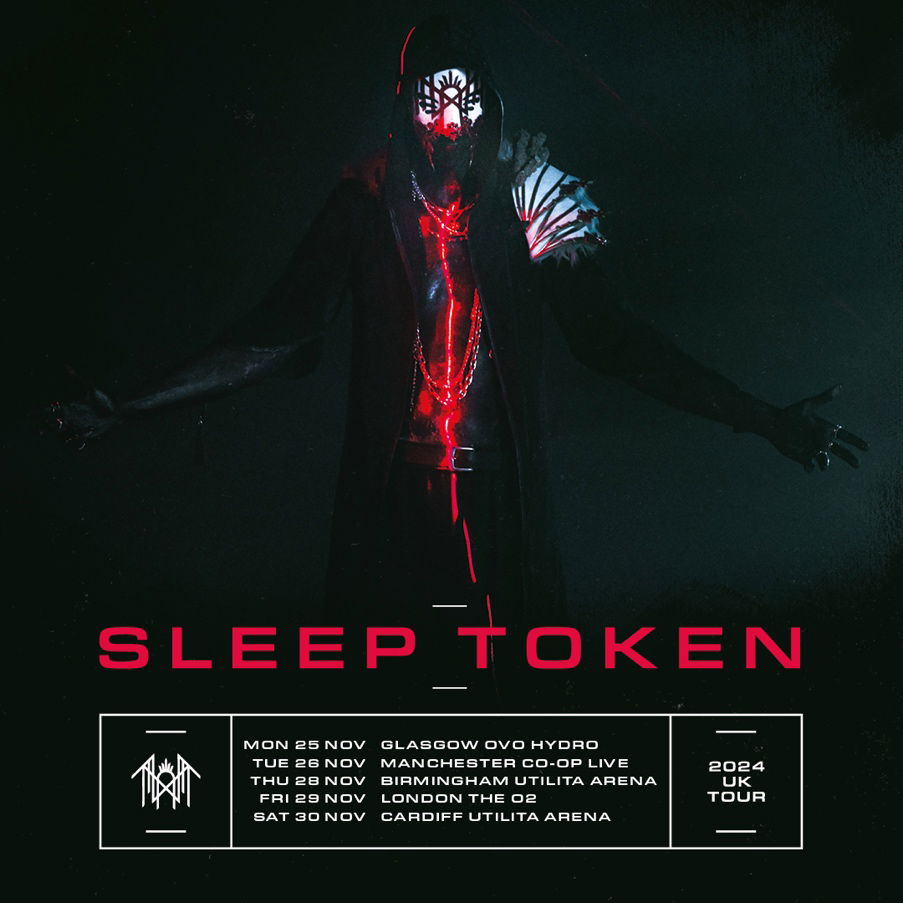
Sleep Token have been on the ascension for a few years now. With the release of the bands third and latest record "Take Me Back to Eden" the crowds got bigger, and the critics got on board.
Metal Hammer readers ranked Take Me Back To Eden as the best album of the year, while the magazine's writers ranked it fourth best of the year.Revolver also named it the #1 best album of the year,[56] as did Rock Sound who also named Sleep Token the best British band of the year. Kerrang! staff called the album the third best of 2023. Writers for the NME named Take Me Back to Eden their 21st best album of the year, while ranking "The Summoning" the 18th best song of the year.
No longer the underground outsiders, the band were quickly becoming one of the UK's biggest rock acts. Arena shows are now part and parcel for the band. It's one hell of a story, and they are one hell of a band. For someone not usually gripped by this music. Sleep Token are more than a flash in the pan gimmick. They are exceptional musicians, with some unbelievable songs that seem to blend genres effortlessly.
Because We Need Each Other- 20s Part Three
2025 started with Scottish Indie Legends, Franz Ferdinand releasing a new album, their sixth record, seven years since it's predecessor "Always Ascending" and over twenty years after the bands Mercury Prize winning self titled debut effort.
Despite this being the third iteration of the band, "The Human Fear" is a real statement of intent, that is firmly a Franz Ferdinand record. The bands mission has always been to make fans dance, and to set themselves apart from the other indie bands of the time. This record is firmly a modern record but the bands DNA is littered throughout. With glam-pomp, and scratchy guitar riffs. Kaparono's vocals shine through to.
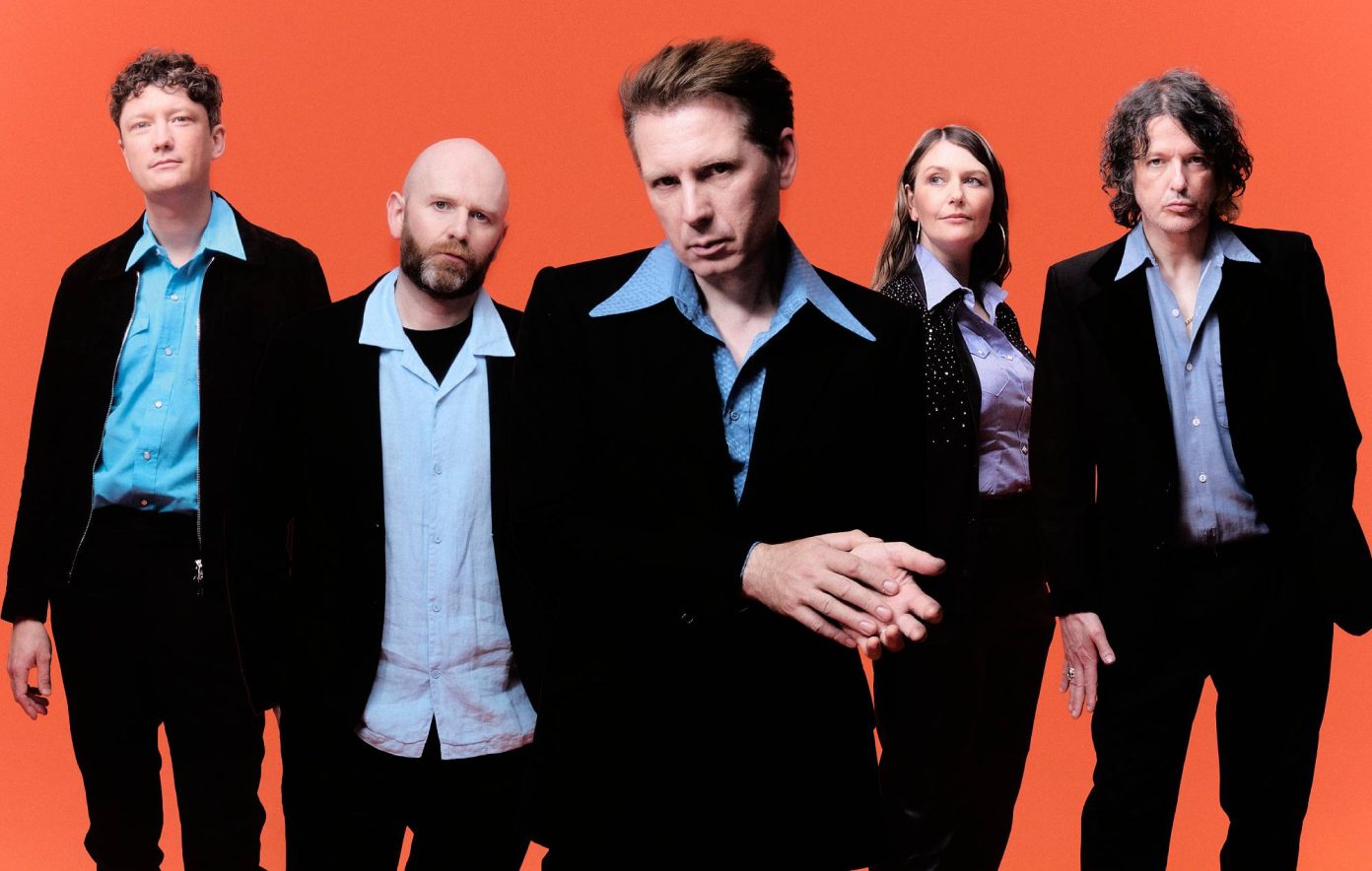
This record isn't perfect "Hooked" in particular feels like a bit of a mis-step. It see's the band try and write a Franz Ferdinand song over a dance beat. It feels a little forced. Yet the rest of the record sees a band embracing inovation, as well as their past. "Black Eyelashes" draws on Kapranos’ Greek lineage for the first time. "The Birds" with its post punk jangly guitars, and spiky lyrics could fit into any of the bands past record. Franz Ferdinand know what they are, there's a reason that they have stuck around for this long. As they said themselves in 2005 "You do it oh so well."
In January Liverpool indie legends Circa Waves released their sixth album. "Death and Love Pt.1" The bands first album since the front man Kieran Shuddal's emergency heart surgery. He found out that he needed the surgery whilst on the bands last tour. Speaking with the telegraph he said “It was really out of the blue – I started getting insane pains in my heart that the hospital told me was inflammation. So I carried on touring, and I was in agony for months,” says Shudall. “Little did I know that I could have dropped down dead at any moment.” When he eventually went for a thorough scan, he found out there was a blocked artery that required urgent surgery, and he faced a 1 in 100 chance of death; a terrifying, “fucking mad” reality for someone in their mid-thirties who had always been healthy.
After the surgery and recovery period, he promised that he would get back in the studio. He found himself dreaming of a specific place and looking back. He was dreaming about the indie clubs that he used to visit, only now those same places play the songs that he has written. The album is full of more songs that will be mainstays on dark dancefloors in your local indie club but it is also the bands most emotional effort to date.
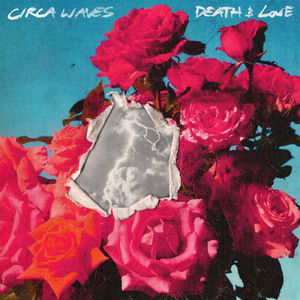
The albums lead single 'We Made It' celebrates the frontmans recovery, and creates a punchy anthem that will be a main stay in the setlist for a very very long time. Following on from the surgery Shuddal told the NME that “I thought I might die before I made this record and then I didn’t, and I got to make an album of music that I loved. The shackles were off, in a way, because I had this newfound joy and excitement for being alive.”
This is the sound of a band operating with a new lease of life. 'Le Bateau' celebrates the bands youth in Liverpool, named after a nightclub in the city. It's a nostalgic affair that reminds me a lot of the bands first record, by no means is that a criticism. It's a touching anthem.
'Blue Damselfly' is one of the albums most heartfelt songs, a tribute to Kieran Shuddal's wife and children. Written whilst in hospital. It's a song that portrays the fear that frontman faced during his surgery and recovery.
Some of the bands best work in recent memory. Circa Waves are not reinventing the wheel but they don't need to. They have never piegon holed themselves into one sound or idea. Each song sounds different and unique. This album is no different, it's a showcase of what the band does best with a new fragility and vulnerability. It's a very good record.
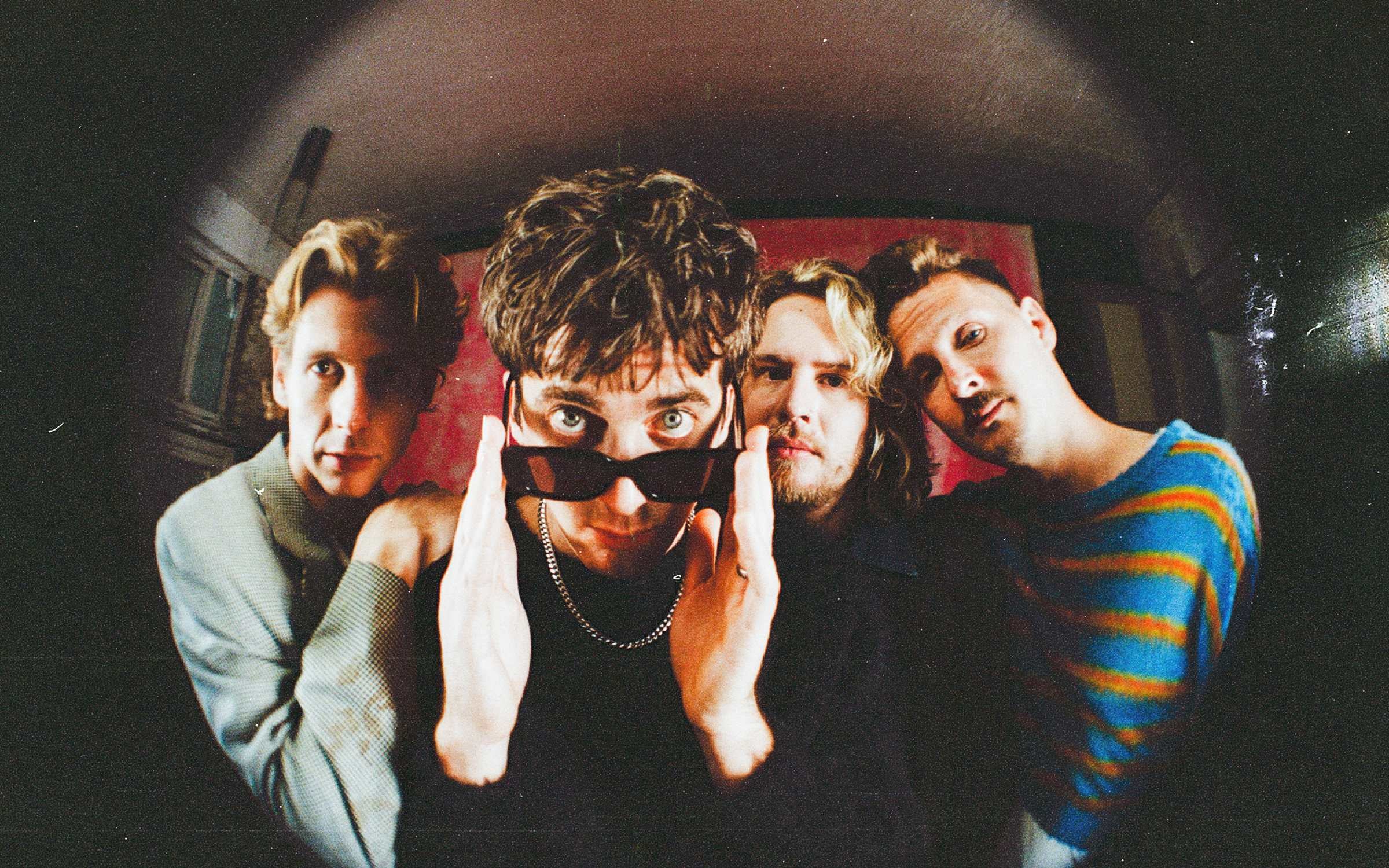
We got one of the biggest and most unexpected gig announcements in February. Heavy Metal fans were greeted with arguably the biggest metal show announcement ever. Black Sabbath and Ozzy Osbourne will take to the stage one more time at a fundraising concert at Birmingham's Villa Park on Saturday 5th July. This concert will mark the first time that the original line up of Black Sabbath: Ozzy Osbourne, Tony Iommi, Geezer Butler and Bill Ward have performed together in over 20 years.
The show will mark Ozzy's full stop for playing live. Osbourne, who has largely been forced to stop touring due to a combination of Parkinson's and spinal injuries, will play a short solo set before joining his bandmates.
His wife, Sharon, told BBC News he was determined to put on one final show."He's doing great. He's doing really great," she said. "He's so excited about this, about being with the guys again and all his friends. It's exciting for everyone."
However, she said the concert would definitively be the 76-year-old's final show."Ozzy didn't have a chance to say goodbye to his friends, to his fans, and he feels there's no been no full stop.
"This is his full stop."
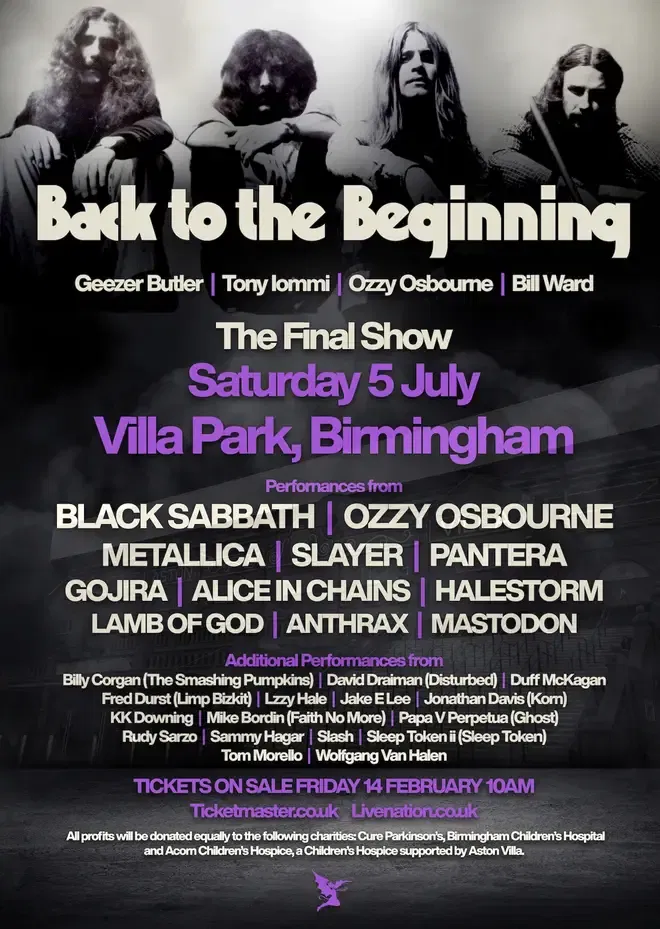
The band will be joined by Metalica, Slayer, Pantera, Alice in Chains. Amogst a whole host of other guests including Smashing Pumpkins frontman Billy Corgan, Disturbed’s David Draiman, Guns N’ Roses’ Duff McKagan, Anthrax’s Frank Bello, Limp Bizkit’s Fred Durst, Sammy Hagar, Papa V Perpetua of Ghost, Wolfgang Van Halen, Zakk Wylde, Korn’s Jonathan Davis, Anthrax’s Scott Ian and Slash.
Proceeds from the show will support Cure Parkinson's, the Birmingham Children's Hospital and Acorn Children's Hospice, a Children's Hospice supported by Aston Villa.This reunion and final show marks a significant end to one of the most important and well loved bands Britain has ever produced, and where better to end it, than where they started.
I'm on the biggest heavy metal fan in the world. I won't claim to be, but even when I looked at this line up poster, I could tell that it was a huge line up. With some huge names from all eras of rock and metal.
Inhaler released album number three "Open Wide" on February 7th and it saw the band embrace a more pop sound. A more sleek, evolved version of the band, this record is not the sound of the band playing it safe. They haven't become something they aren't but they have certainly pushed themseves. Lead single 'Your House' flirted with glam rock and saw the band backed up by a gospel choir.

The rest of the record is just as liberating. Sam Fender once called Inhaler 'alternative pop' and with this album you can really see what he meant. It's a collection of well crafted songs that see the band enter new realms. Opening track 'Eddie in the Darkness' is a real guitar anthem, with some 80s indebted backing vocals but it's quickly followed by the electro pop Billy (Yeah Yeah Yeah)’ with a toe tapping dance beat, and a massive chorus. It's one of the catchiest things they have ever written.
'Open Wide' featured four singles and the band still tapped into the chaos of muddy festival fields. 'A Question of You' in particular was made for the boozy chant alongs with your loved ones and mates. There isn't really anything for the swirling fury and glory of the mosh pit, but 'My Honest Face' covers that area of the set.
The albums title track sees the band venture into terrority that they had previously tried to avoid. It was a smart decision to avoid stadium rock, the last thing the band wanted to do was have the U2 comparisons. However, they have absolutely smashed. The perfect blend of everything that the band do well. Brilliant instrumentation in particular the bass playing which is strong throughout the whole record and a massive chorus.
It's a bold step forward, but it really works. This record will propel Inhaler up to the top of festival line ups, and into arenas. They definitely have the songs for it now.
Sam Fender released his third album 'People Watching' an album that within it's 48 minute run time has numerous special moments. A record that see's Sam examine the lives of his friends and peers through the lens of someone who has managed to escape the working class life he was born into.
It's a record that does not have the urgency of his previous two albums, and yet it does not need to. This collection of songs is the best Sam has written. 'People Watching' the albums title track is a tribute to Annie Orwin, a woman Sam has called a 'surrogate mother' Whilst also examining his surroundings the place he grew up, in the final days of Annie's life.

'Crumbling Empire' sees Sam explore the poverty he has seen on tour, and relating back to the effects of Thatcherism of his own hometown North Shields. On this track Sam also addresses his ability to talk on these working class struggles. “I’m not preaching, I’m just talking / I don’t wear the shoes I used to walk in,” This one of my favourite songs Sam has done to date, a perfect encapsulation of the universal and the personal, that see's Sam create something relatable to his fans but also deeply personal to him. With lines about his mom and step dad, but also more universal lyrics about addiction, homelessness and the destruction of working class life across the globe.
'TV Dinner' is another high point, a piano ballad that see's Sam address the music industry poverty and address his own struggles with fame. One of the most poignant lines in this track talks about the death of Amy Winehouse 'Like Winehouse, she was just a bairn/ They love her now but bled her then. Sam commented how the press treated a working class singer when she was struggling and then after her death, the press and public's perspective totally changed.
The album ends as it starts, with a beautiful tribute to someone close to Sam. 'Remember My Name' is a beautiful piano ballad, that see's Sam and band joined by Easington Colliery Band. The song initially emerged with Sam playing it on an out of tune in a Newcastle pub. It has transformed into a tribute for his Grandmother, written from the perspective on his Grandfather, who cared for his wife whilst she had dementia. Both of these have now sadly passed away. The song is deeply personal revealing the address of the council house they lived in and where Sam spent time as a child " 11 Wark Avenue."
It's a soaring effort that see's Sam embrace sonic highs. The perfect tribute to two of his loved ones, and a look back on his family history, and his childhood a theme he has explored before.
Sam's best record to date, many were worried how we would follow 'Seventeen Going Under' it's safe to say he has done more than follow it. For many he's bettered it.
A sell out tour of some huge UK venues, including a return to St James Park, and a massive show in Manchester's Wythenshawe Park.
In the last couple of years, Britpop has made quite the revival. Blur played two sellout shows at Wembley in 2023, and headed out on the road across Europe. Oasis then announced the Live 25 tour in August 2024. With shows pencilled in for the UK & Ireland, North America, South America and Asia.
Pulp not wanting to be left behind announced a UK arena tour, in February 2025. The band had reunited previously in 2023, playing some huge shows including a sell out date at London's Finsbury Park. Following the loss of bass player Steve Mackey. Those shows were in celebration of the bands 1998 album 'This is Hardcore' the shows pencilled in for this summer, are to celebrate 30 years of 'Different Class'

These shows follow on from an announcement of earlier dates. Which include a huge homecoming gig at Tramlines 2025 in Sheffield, and a headline set at Bilbao BKK in Spain.
The Brits 2025 in my opinion righted some of the wrongs of the previous year. I felt as if the 2024 awards became the Raye show. Where the R&B star sweeped up six awards including song and album of the year. In my opinion not all of these were deserved.
One artist stole the show. Charli XCX won Five Brit's this year, including four on the night. Taking home 'Album of the Year' for 'Brat', 'Song of the Year' for 'Guess' featuring Billie Eilish, 'British Artist of the Year' and 'Best Dance Act'. Before the show she was also named Songwriter of the Year.
What Charli did last year with Brat is nothing short of phenomenal. It gave rise to a cultural movement "Brat summer" she managed to even infiltrate the American election campaign declaring that Democrat candiate Kamala Harris, was 'Brat'
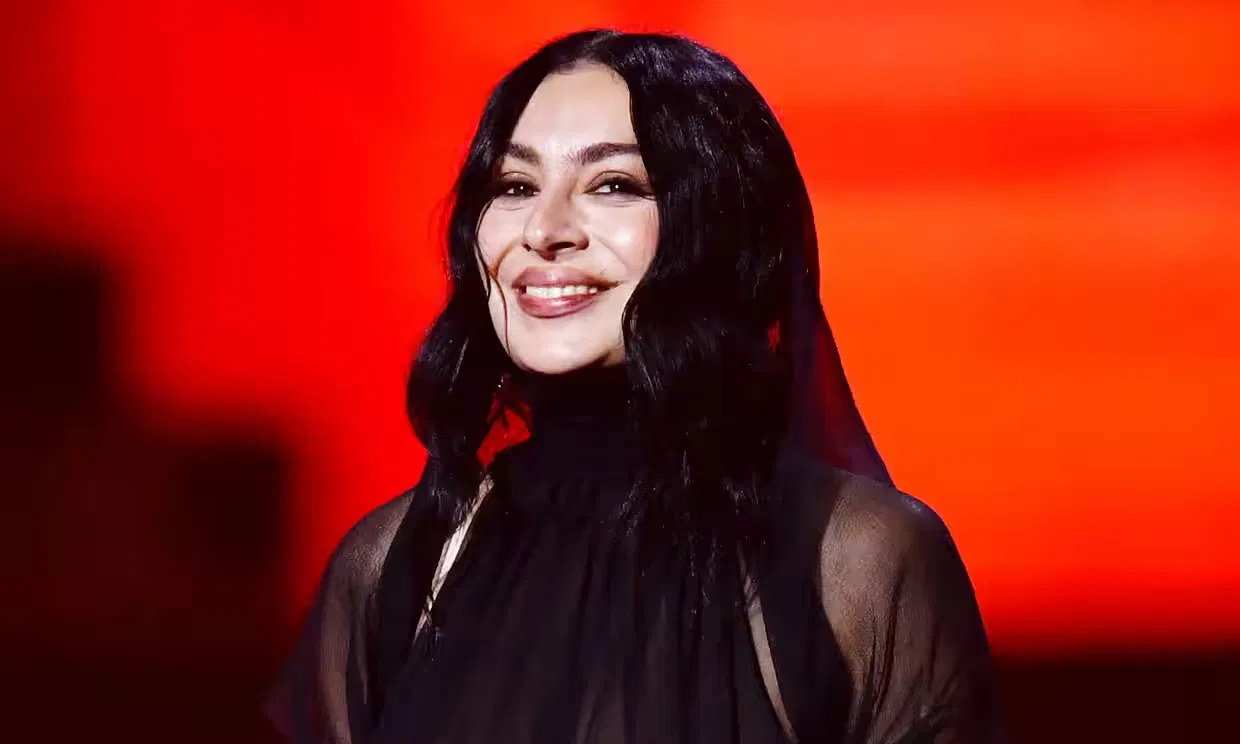
Brat topped the UK chart and has spent 38 weeks in the Top 20, and was critically acclaimed for its range: between the club bangers lay a series of thoughtful, romantic and emotionally raw tracks that laid bare Charli’s anxieties about fame and potential motherhood. It was also a success in the US, reaching No 3 and winning three Grammys.
The awards allowed some artists and bands to address the state of the current music industry and talk about the importance of Grassroots Music Venues.
Rising Star' Myles Smith, 'British Group' Ezra Collective and 'Best New Artist' The Last Dinner Party used there winning speeches to talk about this subject.
Myles Smith addresed the room with three questions. "If British music is one of the most powerful cultural exports we have, why have you treated it like an afterthought for so many years?”“How many more venues need to close?
How many more music programmes need to be cut before we realise that we can’t just celebrate success, you have to protect the foundations that make it?“
My second is to the biggest venues in the country and around the world: If artists selling out your arenas and your stadiums started in grassroots venues, what are you doing to keep them alive?
“And my third, to the industry, to the execs in the room, and to the people behind the scenes: Are we building careers or are we just chasing moments?“Because moments fade and careers take time, so please stick with artists past their first viral hit, please stick with artists past their first tour, because it really matters to us, and moments, they fade, but careers last forever.”
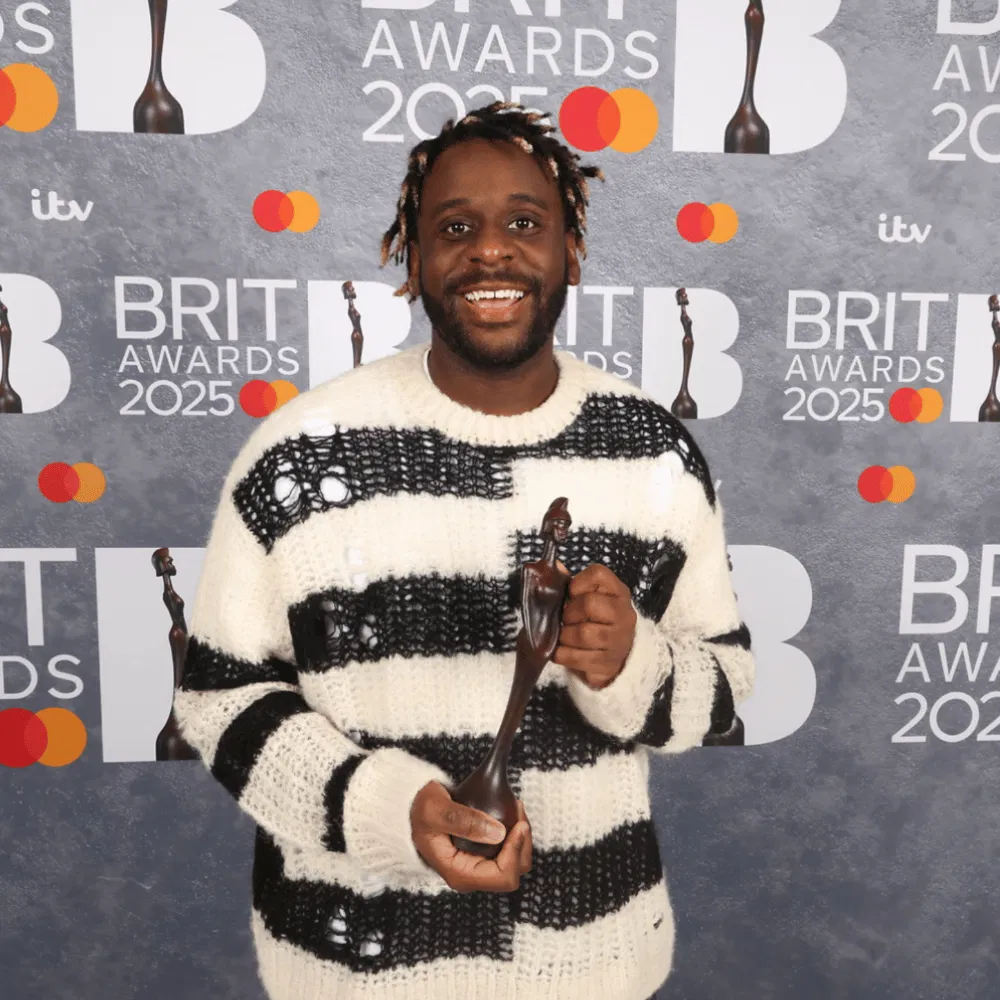
Ezra Collective also appealed for government support, in particular with support for youth clubs and music education, saying: “So many of the problems that face greater society in the UK, we’re unsure of how to fix, but the solution likes with giving a young person a trumpet, a saxophone – because when you do that you give them an aspiration, a goal.”
It was a history making award for Ezra Collective as they became the first jazz group to win a Brit Award, in 2023 they also became the first jazz act to win the Mercury Prize.
The Last Dinner Party echoed his statement about grass roots venues asking the bigger more established venues to support those at the bottom warning those that if we didn't we would continue to lose them at the alarming rate we currently are. All of the artists on the bill last night had to start somewhere.
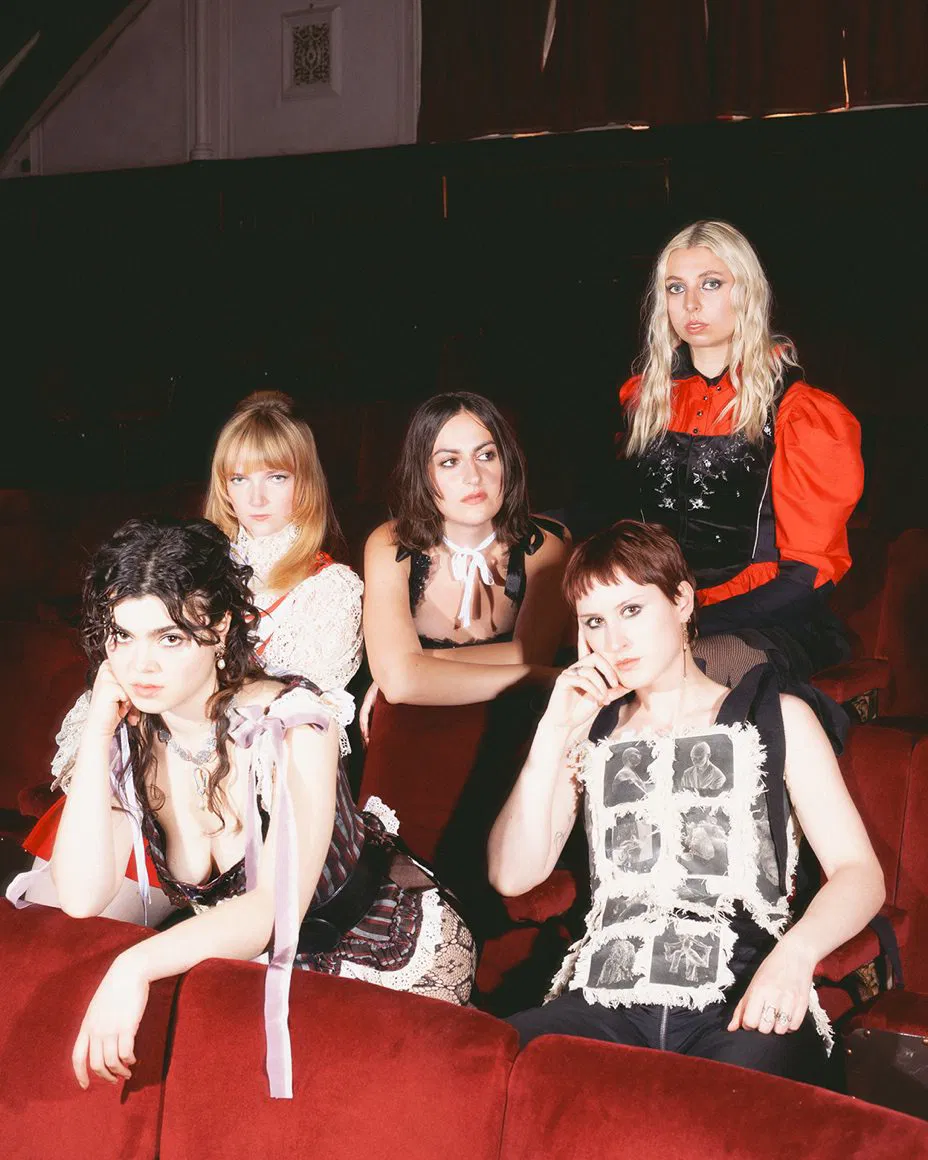
This message was an important one, and one that needed to be said. These artists and bands used the biggest night in British music to try and do something. There has been progress with the grass roots levy, implemented by artists like Sam Fender however, there is definitely more that can be done.
Talking of Sam Fender.
He collected his third Brit, picking up the award or Best Alternative/Rock Act, following the release of his new album 'People Watching'
During his speech, he thanked his fans who he claimed were "the best in the world" as well as his band mates, who he said “without I’m just a mad person shouting at walls.”
Fender also took a moment to pay tribute to his hometown of North Shields.
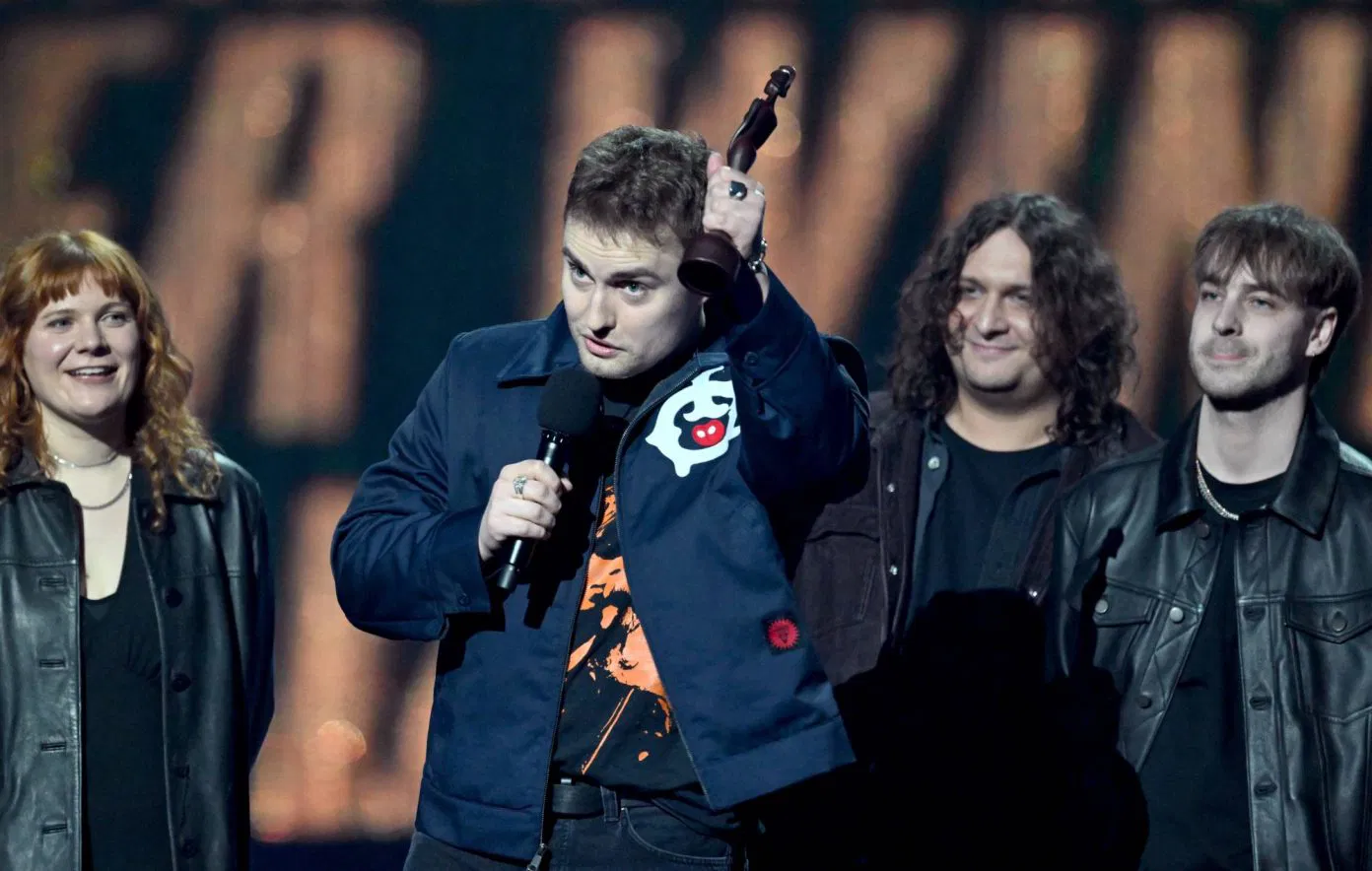
Sam was deserving of the award, he's had quite a manic few months. A sold out arena tour, announcing stadium shows this summer, the ever looming Glastonbury headline rumours. As for his latest album it landed the biggest UK opening week for a British act since Harry Styles‘ ‘Harry’s House‘. It also marked his biggest ever opening week, selling more units than 2019’s debut ‘Hypersonic Missiles‘ and 2021’s ‘Seventeen Going Under‘ combined.
He joins only eight other artists who have managed 100,000 UK albums sales in a week this decade – Taylor Swift, Adele, Coldplay, Ed Sheeran, Harry Styles, Take That, ABBA and Arctic Monkeys. ‘People Watching’ has also become the fastest-selling vinyl album by a British act this century.
Fontaines DC scooped their second Brit Award, winning 'International Group' just as they had done in 2023. The band were unable to attend the ceremony due to being on tour in Australia, the band said in a recorded message “We weren’t expecting to get it, this year in particular we’re up against some great people in that category. Amyl (and the Sniffers) – one of the most inspiring bands at the moment”.
The Brits in my opinion was one of the best in recent memory.
Following the announcement of Rod Stewart and Neil Young. Glastonbury 2025 revealed its first wave of acts in March. Topping the Pyramid Stage alongside Neil Young will be The 1975 and Olivia Rodrigo. The 1975 and Olivia Rodrigo had both been really heavily rumoured. Olivia Rodrigo in particular had been the bookies favourite for a number of months. Other rumoured artists had been Taylor Swift, Sam Fender, Stevie Wonder and Rihanna (the latter with London stadium shows reportedly on the cards).
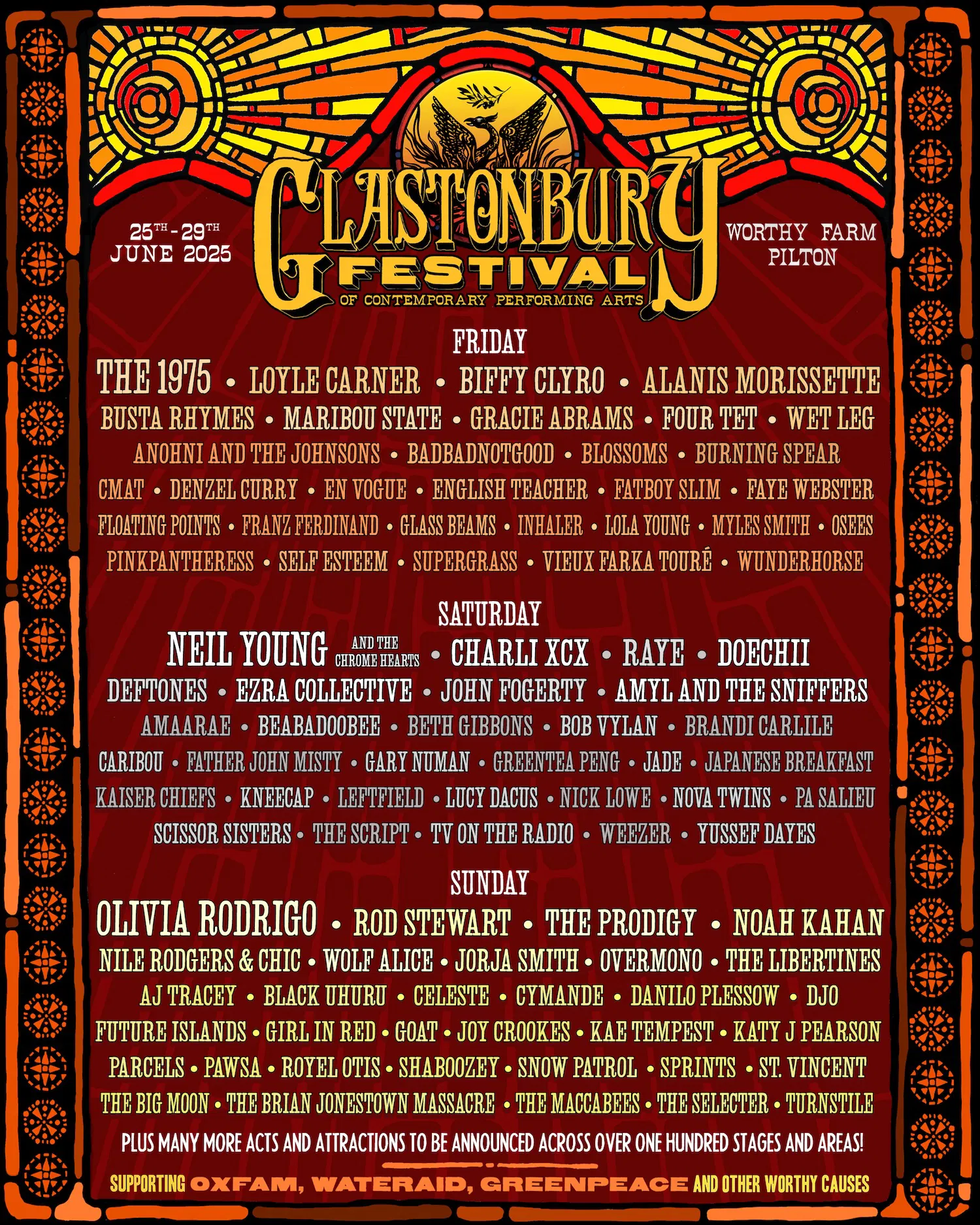
Alanis Morrisette, Biffy Clyro, Noah Kahan, Wolf Alice, The Libertines, Blossoms, Wunderhorse, Franz Ferdinand, Inhaler, Kaiser Chiefs, Kneecap, Royel Otis, Snow Patrol, The Maccabees amongst countless others will take to the 100+ stages at the festival in June.
I have seen others say it's the worst. There has been a lot of polarising opinions. I guess I'm in neither camp. There's some brilliant people on the bill. However, after some of the headliners and acts of recent memory, I can see why some may be disappointed.
This is only the first wave of acts, and there will be a lot more to come. More stages will be announced and there is the small matter of secret sets. Glastonbury has managed to keep some of the biggest artists in recent years secret, and watched them deliver some of the best shows often on smaller stages.
In recent years we had 'The Churnups' who turned out to be the Foo Fighters on the Pyramid in 2023. The Killers played in 2017 taking to the John Peel stage. Foals played the Park in 2019.
The Libertines were drafted in to fill empty Friday slot left by Florence and the Machine who were promoted to headliners after Dave Grohl's broken leg forced Foo Fighters to cancel.
Pulp played the worst kept secret set in Glastonbury history in 2011. There have been countless at Glastonbury, Franz Ferdinand in 2008, The Last Shadow Puppets in the same year. Rick Astley & Blossoms doing Smiths covers.
Here's hoping for some big secret sets in 2025.
Wolf Alice have appeared on the Glastonbury line up. This is the first news we have heard from the band since wrapping up the 'Blue Weekend' tour in 2022. Hopefully the announcement that the band are taking to the stage at Worthy Farm is just the start. New music from the band has to be around the corner. I've got my fingers crossed.
The last time the band took to the stage at Glastonbury they delivered one of my favourite Glastonbury performances ever. It was a set that nearly didn't happen, the band became stranded in Los Angeles due to cancelled flights. However, despite making the show by the skin of their teeth. It did not deter them, the band were on fine form. Playing an hour long set that saw them dip into their three album discography and reinforced them as one of Britain's best bands.
The 1975 on the day of the Glastonbury lineup, announced a new live album 'Still.. At Their Very Best (Live From the AO Arena, Manchester 17.02.24) the album was made available on music streaming services and is set for a vinyl release in May 2025.
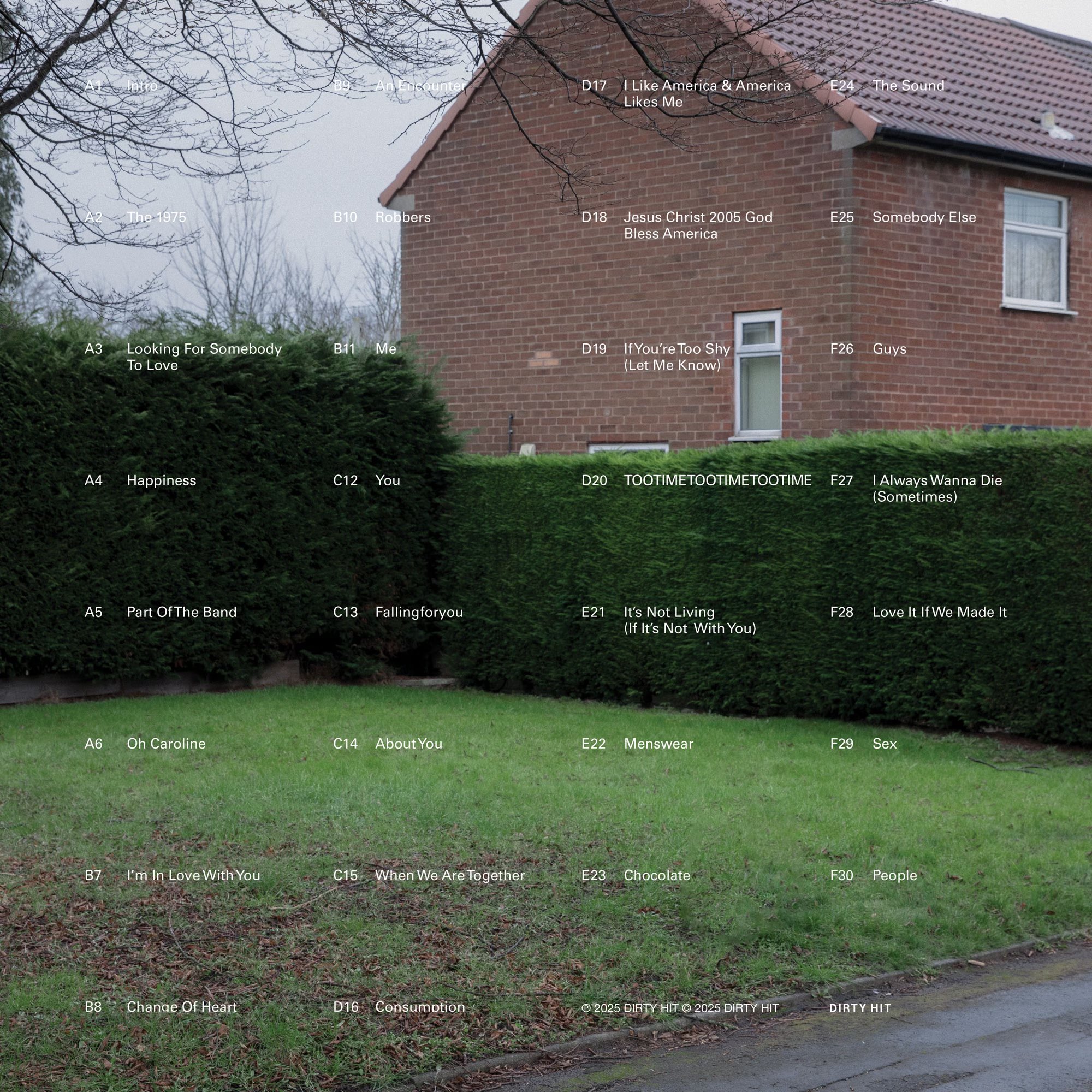
The new album features all of the songs that were played at the bands Manchester Arena gig in 2024. Including tracks from the last studio album 'Being Funny in a Foreign Language'. ‘Looking For Somebody To Love’, ‘Happiness’, ‘Part Of The Band’ and ‘Oh Caroline’. As well as some of the bands best loved bangers, ‘Robbers’, ‘Fallingforyou’, ‘Somebody Else’, ‘Chocolate’, ‘I Always Wanna Die (Sometimes)’ and ‘People’
As well as some more obscure old school tunes like 'Me' and 'You'.
The new live album comes after the band shared an ‘At Their Very Best’ tour live album back in 2023, which captured their full live show from Madison Square Garden, New York on November 7, 2022.
There is still a lot to come, some huge summer shows, and some rumoured new albums. 2025 already looks to be a huge year.
If the last couple are anything to go by then we will be in for a treat.
And in The End, The Love You Take is Equal To the Love You Make.
Here’s where we wrap things up. At least for now. Thank you all so much for reading. This post has been one of the most fulfilling projects I’ve worked on for Beyond the Grooves. It’s something I’ve dreamed of doing for ages, and to see it so warmly received truly means the world.
A few special shoutouts to Archie, Dylan, Em, Grace, Hattie, Joe, Katie, Luke, Lauren, Noah, Sean, and Zoe. Thank you for being there for me in so many ways. You’re all absolute heroes.
To everyone who’s liked, shared, and read these posts, thank you. Your support has been invaluable, and I appreciate every bit of it. Here’s to hoping the rest of 2025 brings even more exciting moments to add to this story.
If you’ve enjoyed this post and want to dive into some of the music mentioned, check out this playlist: Spotify.
Jack x
